What are the golden rules of tour guiding? 10 tips to help you shine
By Breanna Lawlor
Share this article:
- Facebook icon
- LinkedIn icon
- Twitter icon

Most tour and activity providers find themselves embracing a career in the travel industry through an appreciation for certain cultures or destinations. But to be successful in this role, you need to know which tour guide rules to keep in mind.
As a tour guide, you have a profound impact on how a guest interacts with their surroundings. And you also have the power to offer guests a life-changing experience through your charm and wit.
Sure, you don’t have to become the expert on the komodo dragon or shark mating rituals, but does it hurt to have a few fun facts at the ready?
Nope!
Ultimately, a skilled tour guide will know when to turn up the charm and dial the facts back to match the bandwidth of their audience. And as a tour guideline, you should adjust your performance based on the feedback and social cues you receive from your audience.
TL; DR: To be a fantastic tour guide, you should be full of enthusiasm, knowledge and kindness.
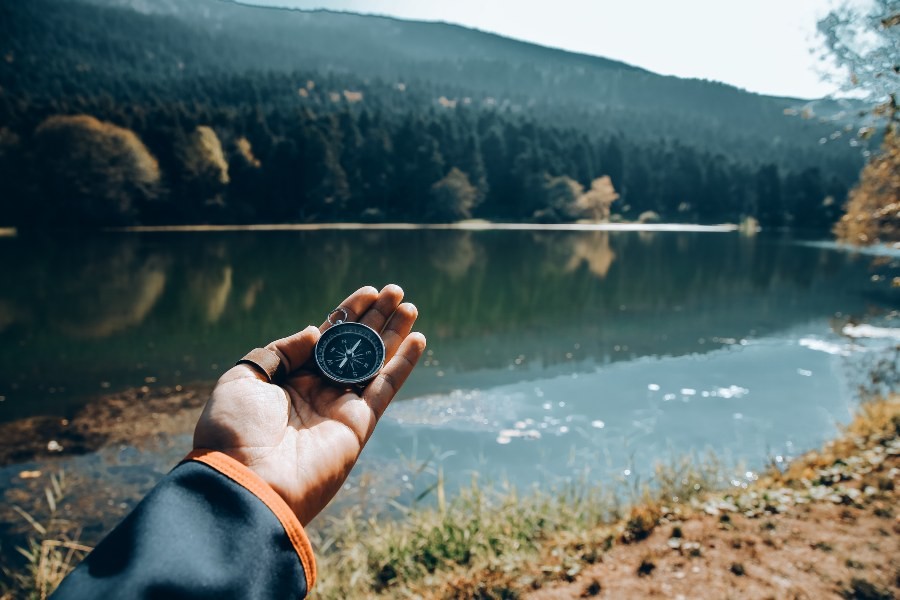

What are the golden rules of tour guiding
For many, guiding tours is an ideal way to see the world while getting paid to travel.
However, the role of a tour guide can be highly impactful, if you focus on making it fun and entertaining. Not only do you have endless opportunities to meet fascinating people from all over the globe, but you’ll never stop learning.
It makes sense that some of the best tour guides are hungry to connect with new people and enjoy reciting fun facts about what makes a place special. And whether you’re a pro or just starting out, it helps to know which tour guidelines to follow.
1. Be present, punctual and full of personality
There are few things worse than a tour guide who isn’t engaging, especially when guests arrive with high expectations. Show a vested interest in your guests during the first meeting — especially if you have a few early bird arrivals.
And since this role is equal parts education and entertainment, people with big personalities tend to do well as tour guides. This is a credit to having the ability to add a little extra zest to an experience.
Personalize the experience
The reason why people still book live tours is that in-person delivery is better than reading a guidebook. Ultimately, you have the power to transform an ordinary encounter into something more memorable. To do this, you’ll want to become a storyteller.
Do you know what’s worse than being a tour guide without a funny bone? Being hard to hear! If guests are straining to follow what you’re saying, they’ll likely tune you out.
And, even better if you can drum up fodder that travelers will not be able to find in a guidebook. Whether it’s because it’s new, insider knowledge or off-the-cuff — fun facts can send your guests into a fit of laughter and keep them engaged.
2. Know your stuff — as a tour guide rule
What do travelers often rave with tour guides? Approachability and good candour tend to show up in 5-star reviews, highlighting how a good attitude goes a long way.
You’ll need to stay up-to-date on the subject matter because guests are going to expect you to have all of the answers. With that said, you do not need to fib if you receive a curveball question. Instead, invite the audience to chime in if they have an answer or commit to finding out and responding at a later time.
Still, no matter how much you prepare, some travelers will throw some quizzical questions your way. Lean into your ability to charm and dazzle people with your local knowledge to escape these encounters unfazed.
Take time to prepare
Understandably, tour guides should have all of their ducks in a row once the tour starts. Dedicate time to doing a dry-run of your tours in advance to avoid potential hiccups that might pop up en route.
Typically, guides know where they are going, have a good sense of direction, anticipate when local restaurants and popular landmarks will be open and busy while also gauging optimal times for travel overall.
3. Engage with guests while sharing tour guidelines
Get to know your guests by striking up a conversation. There’s something known as the “third thing”. I learned about it from a brilliant architect friend who shared that wherever two people can find an item or topic they are familiar with, it helps to strike up a conversation.
In reviews, tour guides who are engaging and entertaining receive high praise. We know that becoming a 5-star tour guide takes work, but the added effort will pay off through reviews and word-of-mouth referrals.
Becoming a skilled communicator
Guests want a tour guide is confident and fun to be around. You’ll want to conduct the tour at a pace and tone that’s easy to follow. What does this sound like?
Use inclusive language to make guests feel welcome. The best way to brush up on your communication skills is to use them on a regular basis. Invite discussion and provide context for your guests to ask questions.
4. Offer helpful and timely insight
When leading a tour group, you’ll likely be commenting on things you’ve seen many times before. Imagine yourself in the shoes of a traveler.
So while you may find yourself constantly searching for new ways to talk about the same thing, it’s the first time for many — if not all — of your guests. When you share stories or recite unconventional facts, small details like these kick the experience up a notch.
Try changing up your route or focusing on different sensory receptors to offer fresh and fun ways of re-visiting the same places.
You want to create an inclusive guided experience that welcomes all types of travelers — including kids, visitors with mobility challenges and slower-paced adventurers.

5. Address guests and answer questions
Some travelers might initially be nervous to ask you questions because they will yet to have a rapport with you.
Think about common questions guests have and aim to proactively address them with your guests. And determine which facts you believe will be most advantageous for guests to know, then share them — openly.
To combat this, position yourself as a friendly and approachable guide who’s here to do just that — guide their experience. Reiterate how the tour is theirs alone, but your role is to facilitate the best experience possible.
Speak loud and proud
Annunciate. Broadcast. Project. This is not a time to use your library voice. I mean, there’s a balance, but aim to be vocal enough that passersby find themselves eavesdropping on what you’re sharing.
An added benefit is if your tour heads somewhere quiet, guests will be tuned in to your voice and more likely to lean in if you’ve been using inflection to command their attention.
Aim to be full of charisma
While hard to define — charisma is a core element of becoming a successful tour guide.
It can be summarized as one part charm, one part knowledge and one part wit with a dash of humour for good measure.
6. Demonstrate good time-management and organizational skills
Leading by example is one of the most effective ways of gaining the trust of your audience. Sure, you’ll probably contend with a few latecomers on tours — but don’t let this derail the entire group.
For visitors arriving at a new location, they tend to have a lot of questions. On your tour, aim to proactively answer them and allow space to respond to your curious followers.
To better frame the experience, give your tour a dry-run. Without the pressure of a tour group, you can see when certain dining spots, viewpoints or transportation routes will be busy, and adjust your plans to maximize the visitor experience.
7. Infuse storytelling as part of your tour guide rules
There are plenty of advantages to becoming a skilled storyteller. First, as travelers, we thrive on stories. They help to forge new neural pathways and turn ordinary encounters into something more relatable.
And second, while it can feel intimidating to share personal anecdotes and memories, storytelling elevates the tour for your guests. Plus, you can ad lib and you’ll have guests who are none the wiser.
Peter Syme shares something called the Peak Design Rule , where he suggests tour guides identify elements throughout your tour that is most helpful, entertaining and valuable, and design your tour around that.
Travelers develop a greater capacity to recount their adventures in a favourable light with personalized tours.
8. Keep things moving
When you step into the role of tour guide, you assume the responsibility of educator and entertainer .
There will be times when you have a restless audience member or guests that tune you out. Don’t panic — instead, aim to keep a consistent pace throughout your tour.
Account for buffer time throughout your route, giving consideration to guests of all ages and mobilities. And once a tour begins — keep that trust going by letting visitors know what to expect next and offering reasons behind each stop you have planned along the route.
9. Offer breaks
If you’re leading a scenic tour, note a few stopping points en route where guests can expect to have a few minutes to snap photos and take in the view. Allow ample time for breaks while on tour. They allow guests to feel refreshed and ready for the next stop on the tour.
In addition, short pauses help guests rest up, so they have the capacity to mentally digest more information.
Bring some snacks along
Instead of waiting until the eleventh hour to lead your guests to a dining location, bring snacks and water as a safety mechanism. This is especially useful for guests traveling with young children. And while it’s not expected, it can absolutely save the day for a family who just needs a little extra support.
Food can act as a bridge between cultures. You’ve probably heard the term “hangry” or been on the receiving end of a guest who’s coping with low blood sugar.
Ultimately, you’ll have some guests who are keen to see the next vantage point and a handful of tour guests that are more inclined to take their time meandering along the route.
10. Start and end tours on time
There will always be guests who misgauge timing or location and show up late to a tour. And while travelers might visit a location for the first time and find themselves running behind, this should not take away from your fellow guests who arrived on time.
One thing you should have control over is whether your tour or activity ends on time. Instill a walking pace that accounts for little ones and more mature travelers, by building in some buffer into your schedule.
This way you can feel good about pausing to talk more in depth throughout your tour.
Research proves people tend to remember negative experiences more readily than positive encounters. It could be that guests are hardwired to weigh bad encounters differently than positive ones, but it’s also a way of keeping them safe from repeating the same mistake in the future.
Helpful tour guide rules to keep in mind
Ideally, you want to create opportunities for guests to feel included and listened to throughout your tour. If it works for your style, ask questions in advance and help them to feel involved in the experience.
But, one thing to keep in mind is that your job isn’t done when the tour ends — you’ll want to bookend the tour for guests with options for learning more along with prompts for a review.
- Guests don’t know what you know — overshare information to keep visitors in the loop
- Include a safety overview whether it’s related to gear, the location or the route
- Provide guidelines for what to expect and how they can expect to interact with you/others
- Let guests know where to find washrooms en route
- Build in buffer timing in case guests are late
As a general tour guide rule, the greater amount a guest pays, the more they will expect from the lead tour guide. You may find that tipping is activity and location-dependant.
But with guests visiting from all over the world, make sure you share how tips indicate that you’ve done a great job and while not required, are greatly appreciated.
Set a tone of curiosity, competency and confidence early on. This way, travelers arriving bright-eyed and bushy-tailed — will be ready to trust you to show them the world.
Want to become a top-notch tour guide?

Subscribe to the Checkfront Newsletter
Read new tips on how to get more bookings every month.
Related Articles

How to start a Tour Operator business in 2024: A step-by-step guide
Dreaming of running a successful tour company? Check out these strategies!
- Business Tips

3 tips to tackle cart abandonment and capture more bookings in 2023
Imagine this: a shopper comes across your website and finds an enticing experience offering. They read your product description, flick…
Search Blog
Subscribe to our newsletter.
Get tips and strategies to grow your business and impress your guests.
Blog Categories
- Booking Management
- Guest Experience
- Marketing Strategies
- Operator Highlights
Get Daily Travel Tips & Deals!
By proceeding, you agree to our Privacy Policy and Terms of Use .
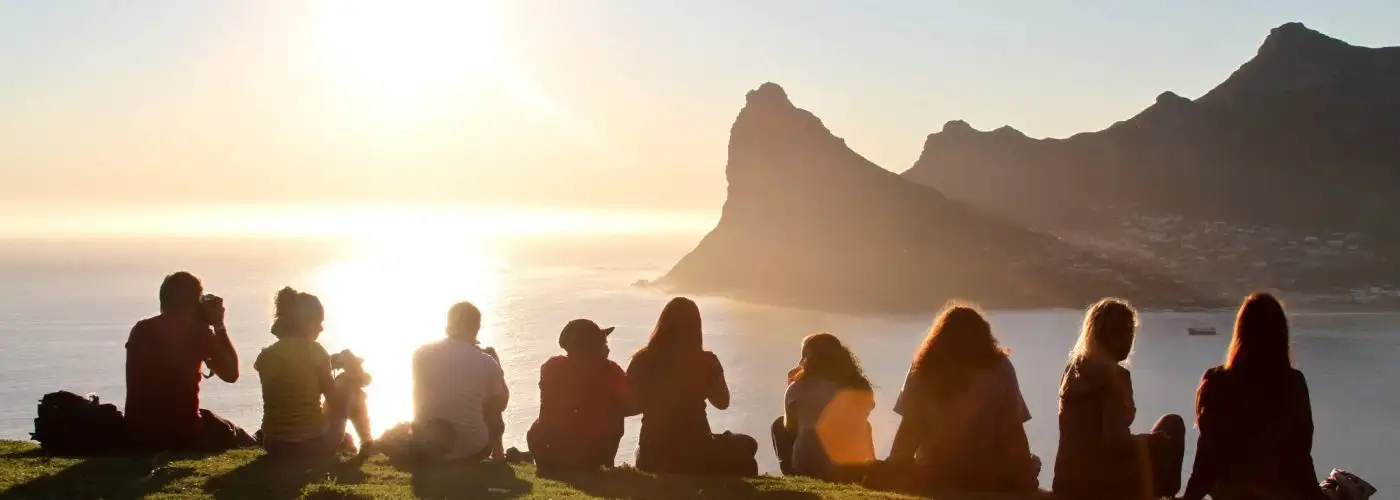
Tour Guides Tell All: This Is How You Should (and Shouldn’t) Act on a Group Tour
Ashley Rossi
Ashley Rossi is always ready for her next trip. Follow her on Twitter and Instagram for travel tips, destination ideas, and off the beaten path spots.
After interning at SmarterTravel, Ashley joined the team full time in 2015. She's lived on three continents, but still never knows where her next adventure will take her. She's always searching for upcoming destination hotspots, secluded retreats, and hidden gems to share with the world.
Ashley's stories have been featured online on USA Today, Business Insider, TripAdvisor, Huffington Post, Jetsetter, and Yahoo! Travel, as well as other publications.
The Handy Item I Always Pack : "A reusable filtered water bottle—it saves you money, keeps you hydrated, and eliminates waste—win-win."
Ultimate Bucket List Experience : "A week in a bamboo beach hut on India's Andaman Islands."
Travel Motto : "Travel light, often, and in good company."
Aisle, Window, or Middle Seat : "Window—best view in the house."
Travel Smarter! Sign up for our free newsletter.
Whether it’s your first group tour or you’re a seasoned pro, these 10 tips will help make your next group tour experience a smooth and drama-free one. I interviewed dozens of tour guides to find their pet peeves, horror stories, and tips on how not to end up on a tour leader’s blacklist.
How You Should (and Shouldn’t) Act on a Group Tour
The one thing that all group tour guides have in common, is that unpunctual travelers are one of the most annoying things to deal with on a group tour. One of the greatest benefits of group tours is that everything is pre-planned so you don’t have to put extra thought into things like transportation and what your next activity will be. Showing up late is not only disrespectful, but could ruin the day’s schedule—which you (and everyone else) paid for.
“Being late, even by 10 minutes, not only holds others up but can also mean you miss out on important moments,” says Gary Willment of Trafalgar . “The sunset that will bring you to tears over the city, or your front seats at a local show.”
Nelle Lees of G Adventures shared a tactic some tour guides use for chronically late travelers: “Some guides have been known to plot with the on-time travelers and pull the bus out of view, to give the procrastinators the brief feeling that they missed their ride,” Lees says. “It’s done in good fun, but it helps make a point when the procrastinator doesn’t listen.”
Ask Questions
As Johannes Reck from GetYourGuide says: “Tours aren’t lectures, they’re conversations.” That means you should be participating by listening and asking questions.
“Trained guides usually possess a wealth of knowledge that goes far beyond what they’ve planned to share on a given tour, so it’s up to you to engage them,” Reck says. “Odds are, if you’ve got a burning question, someone else is wondering the same thing.”
That being said, asking too many questions can get annoying to a tour leader, especially if you’re holding up the tour group or you question an expert guide’s knowledge. So, ask relevant questions when you have them, and trust your tour leader’s answers—it’s their job to be right.
Get to Know Your Fellow Travelers
Group tours tend to be longer than your typical vacation, so use the opportunity to build some life-long friendships. Trafalgar’s Willment has an easy suggestion for this: Don’t always sit with the same people.
Kristen Mack of Tauck agrees. “We’ve had many incredible friendships (and more than a few wonderful marriages) launched among guests who first met on tour,” she told me. “Seeing the world with a group or like-minded, curious people truly enhances the travel experience.”
Even if you don’t get along with everyone in the group, be respectful. When you’re traveling with people from other countries, keep in mind that customs and routines may differ. If you’re traveling with someone you know, don’t talk exclusively to them—make an effort to include everyone in the group.
Tour leaders also say that one of their biggest pet peeves is travelers who constantly only think of themselves first, whether they’re hogging the front seat of a van or insisting on having their photo taken first. Don’t be that person.
Show Appreciation
This is oftentimes forgotten on a group tour because there’s a stigma that you already paid for the trip and expect a certain type of experience, or level of service, in return. And while that may be true, you should still thank not only your tour guide every so often, but remember to show appreciation to locals, wait staff, hotel staff, and other guides you encounter.
This includes tipping. If you’re wondering how much or why, Cristina Lombardi, owner of Follow Me New York City Adventures says: “Guides expect to be tipped. The tip should be a reflection of the number of hours and days the guide spent with you and how pleasant, knowledgeable, etc. they were (or weren’t).”
Pick a Compatible Tour
As STA Travel points out: “There’s a group tour to fit nearly any traveler. Keep in mind while researching: the age group you’d like to travel with, your own activity level, and even the type of accommodation you’d prefer.”
If you do your research and know what you’re getting yourself into, you’ll have a much better experience and won’t be caught off guard. While it’s impossible to predict who’s on your group tour, Lindsey Epperly of Epperly Travel has some recommendations for choosing a tour.
“Look for companies that cater to travelers around your age group and offer to waive single supplement rates,” Epperly says. “For younger travelers, G Adventures and Intrepid Travel cater to clients in their 20s and 30s and you’ll often find other solo guests to spend time with. For older travelers who might enjoy relaxing a bit more than a coach [bus] tour would allot, many of the major cruise lines will waive single supplements for solo guests on select sailings.”
Be Open to Plan B
Be flexible. “You travel to experience new places, so be open to trying new foods, staying in hotels and hostels that aren’t always [up to] U.S.-standards, and soaking up local culture by chatting up your tour mates and locals,” says STA Travel. “Everyone has something they want to do that they will have to forgo,” says Lombardi. You’ll have a much better experience if you accept that from the get-go.
And when things don’t go as planned: “Try to turn calamity into comedy,” suggests Lees. “How people react to it can make or break the trip for them. Think about how to turn it into a funny story or Instagram blooper … so it can become a trip highlight instead of a catastrophe.”
Follow the Rules
While this one may seem obvious, it’s often a pet peeve for group tour leaders. Many tour companies have their own specific set of rules or guidelines—read them and be sure to respect them. If these means no smoking in rooms or in the van or bus, then you need to abide by that. If the trip is for solo travelers or singles only, don’t bring your spouse or friend. The same goes for following local laws and customs. Ultimately, you’ll be responsible for your own behavior—not the group tour company.
Be Prepared
Prepare for your group tour just as you would any other vacation. As Reck says: “Your guide is not your babysitter.” You’ll need to pack accordingly for your trip, especially if it’s to multiple destinations, or abroad.
Booking a group tour doesn’t mean you don’t need your passport, medications, emergency contact information, and proper attire. STA Travel recommends that all of their travelers have a phone charger or memory bank at all times, and to keep cash in a few separate places during the trip, to avoid theft and as an emergency backup.
Make Special Requests Ahead of Time
Whether it’s an allergy or an accessibility concern, Fred Ackerman of Black Sheep Adventures says you should speak up. “There’s nothing worse than finding out after a trip a guest was displeased with an aspect of the service that could have been solved on tour.”
More likely than not, a guide will be able to accommodate special requests on a group tour as long as there is advance notice. Communicate with your travel or booking agent directly, and follow up with your tour leader or primary contact prior to your departure.
Remember, You’re on Vacation
This one’s self-explanatory. On group tours travelers can get caught up in the logistics, and are more likely to let one bad moment ruin a trip. “You’ve likely spent months, maybe even years, planning for this trip. So when you arrive, don’t forget to live in the moment,” Willment says. “Laugh with the locals, eat the delicious food, and if in my home country of Wales, sing until your lungs give out. Try and say yes to every experience.”
More from SmarterTravel:
- I Hated Group Tours … Until I Tried One
- 14 Tips for Choosing the Right Group Tour
- 8 Essential Tips for Group Travel
Editor’s Note: Some direct quotes in this story have been condensed or edited for clarity.
We hand-pick everything we recommend and select items through testing and reviews. Some products are sent to us free of charge with no incentive to offer a favorable review. We offer our unbiased opinions and do not accept compensation to review products. All items are in stock and prices are accurate at the time of publication. If you buy something through our links, we may earn a commission.
Top Fares From

Don't see a fare you like? View all flight deals from your city.
Today's top travel deals.
Brought to you by ShermansTravel
Southern Italy: 8-Night Tour, Incl. Naples,...

Ohio: Daily Car Rentals from Cincinnati

Shop and Save with Country Inns...
Patricia Magaña

Trending on SmarterTravel
- Transportation
- Single & Multi-Day Tours
- Museums and Attractions
- Destination Marketing Organizations
- Google Things To Do
- Zaui Marketplace
- System Status
- Case Studies
- API Documentation
- Reseller Signup
11 Essential Tour Guide Skills
By: Marium Farooq
January 23, 2024
Table of Contents
Tour guides bear plenty of responsibility in immersing travellers in the culture of a foreign land and serve as the gatekeepers of exploration and discovery. A tour guide is more than just a person who can recite facts about various cities or destinations. They represent the face of the tour company, responsible for engaging the tour group and enhancing the tour experience. Tour guides are the perfect tool for these tours, adding an extra layer of excitement and knowledge to any trip. But behind their effortless charm and extensive knowledge lies a set of essential skills that make them the vital link between travellers and their chosen destinations. From excellent communication to cultural sensitivity, these skills empower tour guides to craft immersive and enlightening experiences that connect travellers with the essence of a place.
Key Skills and Qualities Every Tour Guide Should Possess
Here are some important skills for a tour guide to have that can really make or break the overall tourist experience.
1. Strong Communication Skills
Strong communication skills are extremely important in tour guiding. Tour guides must be articulate, engaging, and capable of answering multiple guest questions. Communication skills on tours often involve public speaking and active listening to ensure everyone in the tour group feels open and heard. At times, they may even have to address questions they’ve answered multiple times already. According to John Voci, a former tour guide with over a decade of experience, having strong communication skills is at the heart of being a tour guide. This is because they don’t simply deliver a speech but must first understand what the tourists already know about the place, what interests them, and then match their expectations with the information provided. A significant aspect of strong communication is the ability to listen, understand, and respond in a way that maintains the interest of the people receiving the information.
2. The Right Energy
Tour guides’ enthusiasm can significantly impact the overall tourist experience. Often, we encounter individuals who are overly enthusiastic about selling something or tend to exaggerate the service or product, and they often come off as annoying or inauthentic. It is extremely important for a tour guide to be energetic and excited about the experiences while simultaneously sounding genuine and relaxed. This helps create a relaxed vibe that tourists can enjoy.
3. Flexibility and Adaptability
Charisma is natural, but a tour guide can only be fully equipped if they have training in all aspects of tours and potential situations that might arise. Often, unprecedented situations arise where the guide must change the schedule and adapt to unforeseen circumstances. Adaptability and flexibility are not only required for these unanticipated situations but are also essential to meet various guest needs and interests, while keeping to a natural flow of the experience.
It is a constant challenge to determine what information needs to be shared and what would be interesting to the tourists. An expert guide may need to adjust the amount of information provided for different locations or the pace of the tour, especially if the tour group consists of individuals of varying ages. As a result, tour guides can demonstrate flexibility and adaptability in different circumstances, enhancing the overall experience of the tour.
A great memory can take you a long way, especially if you are a tour guide. Memorized facts and stories are a significant part of being a successful tour guide. Often, we underestimate this skill; it takes a considerable effort to learn facts about a place and present them in an interesting way. Whether it’s a trip to a museum, garden, or an art gallery, the tour guide’s ability to share information can truly make or break your overall experience. The guide’s knowledge can have a profound impact on how tourists perceive their experience.
Tour guides must possess an impressive memory to recall small details about everything they are showcasing. Without that insight and knowledge, it may seem hollow, no matter how charismatic the tour guide might be. And don’t forget the power in remembering your guests name can have on creating a special experience.
5. Cheerful and Positive Vibes
This is not necessarily a skill but rather a personality trait. A tour guide needs to be someone who is enjoyable to be around. There are individuals who radiate positive energy, making others want to spend time with them. This type of charisma can truly set apart a successful tour guide. One of the crucial aspects of a tour guide’s role is to organize and ensure everyone is entertained and adhering to the schedule. It is important for tourists to rely on the tour guide for guidance rather than doing their own thing.
When a group of tourists comes together, there is often some social awkwardness as they typically don’t know each other. In such situations, it becomes the tour guide’s responsibility to alleviate that awkwardness and create a more comfortable atmosphere.
6. Storytelling and Creativity
There are millions of ways to deliver a speech, and what sets apart a good tour guide is their ability to improvise, their sense of humour, and the skill to create an engaging storyline from historical facts that might otherwise be challenging to grasp or remember. After all, few people want to simply receive a lecture while on vacation. One way to gauge the success of a tour guide is to assess the knowledge tourists gain when leaving the experience and how much value they have derived from it. A tour guide might have memorized millions of facts about a destination, but the ability to pull out the right fact for the audience from their personal knowledge bank and present it in a way that is both interesting and engaging truly determines success.
7. Tech-savvy
In a rapidly advancing technological landscape, it’s no secret that technology wields significant influence. The tourism industry places an increased emphasis on social media marketing, and the unmatched benefits of booking software, coupled with a substantial surge in digital content, give a tech-savvy tour guide a distinct advantage over those lacking technical knowledge. A tech-savvy tour guide can assist tour operators in creating content that can be utilized across various marketing channels and platforms to attract more customers.
8. Improvisational skills
According to John Voci, our Sales Director, who began his career as a tour guide, it is essential for tour guides to quickly assess the group’s state of mind and tailor the tour to create a pleasant experience. For instance, if it’s a walking or biking tour, and the rest point is 30 minutes away but the group members are struggling, possibly due to weather conditions or preexisting health issues, the tour guide might decide to take an early break to ensure the overall experience isn’t too strenuous for the group. This is why tour guides who can easily assess situations and make prompt decisions, instead of strictly adhering to the script or itinerary, are crucial. And to do all this while keeping guests of all speeds engaged takes skill.
9. Professionalism
The work ethic speaks volumes about a tour guide’s ability. They can be smart, humorous, and have extensive knowledge, but if they are unprofessional, miss meetings, arrive late, or are unreliable, they can cause more harm than good. It greatly depends on your guide to elevate your company’s image or potentially tarnish it.
The element of integrity is non-negotiable as they represent the face of your company. A professional guide ensures your guests enjoy a seamless experience, making your brand shine. They not only impart knowledge but also ensure that guests feel valued and well-cared for throughout the tour. And while angry customers may be rare in the tour guide-to-guest relationship, the ability to handle late arrivals or other poor conditions professionally is key; not just for the tour group, but your company’s reputation.
10. First Aid Training
While not all tours are presented with hazardous conditions, ensuring the safety and well-being of your guests is of utmost importance. Since tour guides typically bear the responsibility for the group’s safety, having proper training becomes an invaluable asset. While nature and historical landmarks offer beauty, they may also present risks that first aid training can equip you to handle. This includes being prepared for scenarios such as allergic reactions, injuries from encounters with animals, minor incidents resulting from slipping and falling, and other unforeseen emergencies.
11. Organization and Time Management Skills
Organization and time management skills are imperative for a tour guide. Their responsibilities include planning of itineraries, seamless coordination of transportation, and the essential task of maintaining the tour schedule. Beyond merely adhering to time constraints, tour guides must ensure that the itinerary accommodates exploration and enjoyment for the tourists at each destination.
Being well-organized involves meticulous attention to details, from scheduling transportation to planning activities, ensuring that every aspect of the tour aligns with the expectations and preferences of the tourists. The ability to manage time effectively is not just about punctuality but also about creating a seamless flow that maximizes the tourist experience. An organized tour guide plays a key role in creating a smooth, enjoyable, and memorable travel experience for the tourist group.

Since guests’ satisfaction typically hinges on the Tour Operator’s ability to deliver an unforgettable experience, the tour guide’s skills directly shape the tourist experience. As the primary point of contact, the ability to facilitate a smooth, engaging, and informative experience can significantly influence their perspective of the entire journey.
The role of a tour guide is not merely about sharing information; it’s about crafting an experience that lingers in the memories of the tourists. The twelve essential skills discussed here underscore the multifaceted nature of a successful tour guide.
Book a Demo!
Inside Zaui: Product News, Tips & Tricks
- Tips & Tricks
- Tours & Activities
How to Write a Tour Booking Confirmation Email: 8 Types with Great Examples
How to Write a Tour Booking Confirmation Email: 8 Types with Great Examples Confirmation email templates offer a valuable means...
Top 7 Travel Review Sites for Tour Operators in 2024
Top 7 Travel Review Sites for Tour Operators in 2024 Your customers are the initial guides for your tour and...
11 Tips on How to Increase Sales in a Tour Company
11 Tips on How to Increase Sales in a Tour Company In today’s dynamic travel industry landscape, tour companies face...
Curabitur nec nunc ut augue tincidunt interdum quis a diam. Suspendisse vel justo vitae mauris sodales commodo. Nullam dapibus nisi mi, id lobortis urna scelerisque ac. Duis auctor enim sit amet quam lacinia malesuada.
You are using an outdated browser. Please upgrade your browser to access savingplaces.org.
National Trust for Historic Preservation: Return to home page
Site navigation, america's 11 most endangered historic places.
This annual list raises awareness about the threats facing some of the nation's greatest treasures.
Join The National Trust
Your support is critical to ensuring our success in protecting America's places that matter for future generations.
Take Action Today
Tell lawmakers and decision makers that our nation's historic places matter.
Save Places
- PastForward National Preservation Conference
- Preservation Leadership Forum
- Grant Programs
- National Preservation Awards
- National Trust Historic Sites
Explore this remarkable collection of historic sites online.
Places Near You
Discover historic places across the nation and close to home.
Preservation Magazine & More
Read stories of people saving places, as featured in our award-winning magazine and on our website.
Explore Places
- Distinctive Destinations
- Historic Hotels of America
- National Trust Tours
- Preservation Magazine
Saving America’s Historic Sites
Discover how these unique places connect Americans to their past—and to each other.
Telling the Full American Story
Explore the diverse pasts that weave our multicultural nation together.
Building Stronger Communities
Learn how historic preservation can unlock your community's potential.
Investing in Preservation’s Future
Take a look at all the ways we're growing the field to save places.
About Saving Places
- About the National Trust
- African American Cultural Heritage Action Fund
- Where Women Made History
- National Fund for Sacred Places
- Main Street America
- Historic Tax Credits
Support the National Trust Today
Make a vibrant future possible for our nation's most important places.
Leave A Legacy
Protect the past by remembering the National Trust in your will or estate plan.
Support Preservation As You Shop, Travel, and Play
Discover the easy ways you can incorporate preservation into your everyday life—and support a terrific cause as you go.
Support Us Today
- Gift Memberships
- Planned Giving
- Leadership Giving
- Monthly Giving
10 Tips for Being a Good Tour Guide
- More: Preservation Tips and Tools
- By: Emily Potter
In the spring of 2013, when a hint of warmer weather got us ready to think about being outside, we put together a toolkit with ideas to help you organize a tour in your community . But don’t let the current chilly winter season stop you from giving―or going on―tours.
Instead, use these 10 tips, compiled by Johns Hopkins, Executive Director of Baltimore Heritage , to help you be the best tour guide you can be. (Not a tour guide? These tips can also give you insight into being a good tour goer.)
1. Face the crowd, not what you’re talking about. Tour guides often get so wrapped up in their subject they forget to face the people they are addressing. One secret to avoid this is to designate somebody in the crowd to interrupt you if they can’t hear you.
2. Be personal. No matter how much we love buildings, it’s a fact that people connect with people. So it’s good to have a few personal anecdotes ready, even if they’re just about past tours you've done. You’ll build a more personal connection to your group and create a memorable tour.
3. Tell a story (historical or contemporary). Make sure you have a few fun and compelling stories to tell about the buildings and sites you’re looking at. People are more likely to feel engaged when they are listening to a story, rather than a list of dates and names.

photo by: Marcin Wichary, Flickr
Tell a story, share your passion, get your tour group engaged in the places and sites you're excited about.
4. Get moving right away. Tours often get bogged down before they ever begin with tour guides doing the “big wind-up”―introductions, setting the theme, providing context, etc. Plan to scrap 90% of it.
Hint: If you have a script, the first line should tell you: “Move thirty feet up the street before you say anything.”
5. Don’t worry about being perfect. People don’t expect you to be perfect. Set the stage for human imperfection by acknowledging that people who may know more than you should speak up and share their knowledge with the group. The more interactive the tour is, the better!
6. Get help to get organized. Try to get a volunteer to check people in so you can chat with tour goers. People give tours for many reasons, but a big one is to meet new people, and the time before the tour is a great chance to get to know your group.
Hint: If you don’t have a volunteer beforehand, ask somebody on the spot. (They’ll love it!)
Stay connected with us via email. Sign up today.
Sign up for email updates, sign up for email updates email address.
7. End on time. (Or try very hard to.) Try like crazy to end on time. Nobody wants to feel like they are in tour jail. Tours on paper always seem too short and on the ground are always too long. Two hours is the absolute maximum. An hour to an hour and a half is better.
8. Limit your number of speakers. It’s hard to talk for just five minutes, so when you have multiple guides talking about different subject areas, it’s easy to lose track of time. Avoid it if you can, but, if you do have several different guides with you, designate one as the lead guide and the others as experts in a specific area.
9. Send a follow-up email. Follow up with an email―it can be as simple as a “thank you” note. If you can follow the tour with another contact, by email or otherwise, that’s another step towards creating a better link between the tour taker and your organization.
10. Avoid these traps:
- “12 (or 20…) people on the tour is the max.” Rather, let the space and tour guide set the scene.
- “You MUST plan everything out ahead of time.” In fact, a little spontaneity is good.
- “Don’t do outdoor tours in the winter.” People will still come, even in the snow.
- “Always have a backup plan in case it rains.” Don’t worry, people will come out in the rain, and it’s much easier than rescheduling.
A version of this story was published on 1/5/2016.
Donate Today to Help Save the Places Where Our History Happened.
Donate to the National Trust for Historic Preservation today and you'll help preserve places that tell our stories, reflect our culture, and shape our shared American experience.
Like this story? Then you’ll love our emails. Sign up today.
Related Stories

This May, our Preservation Month theme is “People Saving Places” to shine the spotlight on everyone doing the work of saving places—in big ways and small—and inspiring others to do the same!
Effortless booking
Maximize online conversions with the most intuitive checkout online.
Expand revenue with our powerful Automated E-commerce tools.
Upgrade your website to industry’s best. Fresh websites. Fresh revenue.
Amplify visibility and expand earnings with integrated OTAs and local partners.
Streamline check-ins, limit risk, and amplify customer data with built-in digital waivers.
Transform data into insights. X-ray reporting gives you customer and business intelligence.
Manage high-volume walk-up customers effortlessly with POS, ticketing, and gated entry.
Automate management of staff schedules, assignments, and staff communications
Control your business precisely the way you want with endless yet easy configurability.
Allocate equipment used in various products. Prevent overbookings and maximize profits.
Grow with Xola in our constantly expanding universe of integrations and apps.
Harness customer data to drive marketing campaigns and generate repeat business.
Transform your guests into passionate brand advocates. Perfect your products & services.
Manage your business with the most powerful mobile suite in the industry.
Perfect the guest experience by giving your staff the industry’s most intuitive software.
Efficiently manage guest flow, minimize wait times, and ensure maximum satisfaction.
Ticketing & Entry
Revolutionize your guest experience: Effortless check-ins, interactive displays, secure payments.
Boost revenue with automated rave reviews, actionable insights, and loyal customer engagement.
Efficient ticketing, digital waivers, and fast check-ins enhance on-site operations and guest satisfaction.
Explore Xola Universe: 80+ apps, limitless integrations, endless growth opportunities.
Simplify check-in and boost your marketing efforts with our integrated automated digital waivers.
With SOC 2 Type II and CCPA compliance Xola exceeds industry security standards and insures your data protection.
Access real-time insights for business growth with our powerful reporting.
Remarkable and hassle-free guest experiences with waitlist and virtual queuing.

An overview of the best distribution channels
- Xola University
- Business Operations
13 Tips To Be a Better Tour Guide
Being a tour guide is a fun, exciting, and rewarding job. You spend your days sharing your knowledge and chatting with guests.
While you will improve your skills naturally with every tour you provide, there are some things you can to more proactive build your skills.
In this post, we’re sharing 13 tips to help you be a better tour guide, including:
What Are the Key Job Responsibilities for a Tour Guide?
Tour guides have to manage various responsibilities throughout their day to provide memorable experiences for guests. Successful tour guides enjoy working with people, are excellent storytellers, and solve problems independently.
Tour guides have to manage multiple responsibilities throughout their day, including:
- Greeting visitors and interacting with them before the start of the tour
- Letting participants know about the tour’s itinerary and rules
- Planning and managing the itinerary
- Learning and memorizing interesting details and facts and turning them into stories
- Having a strong understanding of your tour’s layout and location
- Setting up and maintain equipment before the start of a tour if necessary
- Being prepared in case of an emergency
- Ensuring guests remain safe and follow all proper protocols
13 Top Tips To Be a Better Tour Guide
Successful tour guides continuously build and improve their skills throughout their careers to provide memorable and engaging experiences. Learning new information and skills also helps keep the tours and experiences you deliver engaging and fresh for you. Your enthusiasm and enjoyment will show to guests and help capture their attention.
So whether you’re just starting out as a tour guide or have been working in the field for a while, here are 13 ways you can continue to build your skills as a tour guide.
1. Skip lengthy introductions or setups at the beginning of the tour
Introductions to the tour and a review of rules can help provide structure and context for your guests. That said, you don’t want the introduction information to go on so long that you lose your guests’ attention.
When planning what to say at the start of the tour, look for ways to provide the necessary information while keeping guests engaged and maintaining their enthusiasm for the tour or activity.
Depending on the type of tour you provide, you may have to first cover safety measures before moving visitors to a location, so use your judgment. If you’re unsure whether your introduction is too long, consider asking a fellow guide to listen to your opening. They can provide you with feedback on what it’s like from a visitor’s perspective.
2. Bring information to life through a story
People love stories. Your guests are more likely to remember, understand, and appreciate the information you share when you can tell it through a story. The stories can be historical or contemporary. This strategy increases the likelihood that guests will ask questions and engage with you, making the experience more fun for everyone.
You don’t have to tell everything as a story, but sprinkle them in throughout the tour to maintain everyone’s attention. If you feel uncomfortable telling stories, you can build your storytelling skills. You can listen to audiobooks or podcasts of famous or popular storytellers or take a public speaking course.
3. Face guests when sharing information
When you’re discussing something, it’s natural to point and look at the object. As a tour guide, you’ll engage your audience better by facing them. This strategy allows them to see your gestures and hear you better.
You can teach yourself to turn toward the group. To help learn this habit, consider identifying one person in the group that you will look at when you first start talking. To ensure the whole group feels engaged, be sure to move your gaze to other visitors soon after you start talking.
This strategy provides you with a consistent cue to help you develop the habit of turning towards the group when you start talking. After a while, you’ll naturally turn toward the group when you’re giving your tours.
4. You don’t have to know everything
As a tour guide, you purposefully try to learn everything you can about the locations on your tour. That said, you don’t have to know everything. You may have a guest who has unique expertise or insider’s experience. Let them share with the group. Everyone will have a richer experience, and you can potentially incorporate this information into future tours.
5. Avoid exaggerating information
You want your tours exciting and engaging, but you also want to be known as a credible and knowledgeable expert. Therefore, resist the urge to exaggerate information. Your guests won’t trust what you say or recommend the tour if they discover you’ve provided inaccurate details or facts.
Sometimes exaggeration can sneak in when telling stories, so make sure your stories are based on facts and verifiable information.
6. Provide anecdotes when possible
Telling personal anecdotes can provide a special touch and experience for your guests. These can make the tour more engaging and help you connect with visitors.
While you can plan ahead of time what anecdotes you will tell, being able to spontaneously provide anecdotes and insights tailored to the group can help enhance the overall experience. You can take a local improv class to help practice this skill.
7. Be punctual (and ideally early)
When people are on vacation, they often have carefully orchestrated plans. If one part starts late or goes too long, they may miss another planned opportunity. Your guests will appreciate you starting and ending your tours on time. Being punctual will help build their confidence in you as a professional and expert.
When it’s possible, try to arrive early for tours. This strategy will give you time to get to know participants before the tour starts. This strategy helps you build rapport and start learning what types of information they want so you can tailor the experience to their needs. You’ll also be able to answer any questions people have about the area before the tour begins.
8. Be attentive to guests’ needs
Being attentive to your guests’ needs is about more than just guiding them from one point to another. It’s about creating a comfortable and enjoyable experience. For instance, if you notice guests looking tired, suggest a short break or a slower pace. If a particular topic sparks interest, consider diving deeper into that subject. This adaptability shows that you’re not just following a script but are genuinely committed to providing a fulfilling experience.
Moreover, being attentive means being prepared to answer questions or provide solutions to unexpected issues. Whether it’s a question about local dining options or needing assistance with accessibility, your readiness to help can significantly enhance guest experience.
9. Be passionate
Your enthusiasm and passion for the subject matter are infectious and can enhance the tour experience. When you speak about the history, culture, or landmarks with genuine excitement, it engages your guests and makes the information more compelling. This enthusiasm can transform an effective tour guide into a truly 5-star tour guide.
However, it’s important to balance your enthusiasm with the ability to read your audience. Some guests may prefer a more subdued approach, while others might enjoy high energy. Tailoring your enthusiasm to suit the group’s dynamics is key.
10. Use humor
A well-timed joke or a witty remark can lighten the mood and enhance the overall experience. It helps in breaking the ice and making even the most difficult customers feel more comfortable. However, it’s crucial to exercise guest discretion. Tailor your humor to the audience and avoid jokes that could be misunderstood or that touch on sensitive topics. The goal is to add a light-hearted touch to your tour, not to make anyone uncomfortable.
11. Offer personal recommendations
Take a nod from hotel concierges by offering personal recommendations towards the end of the tour. This adds a special touch to the experience. Sharing your favorite local spots, eateries, or hidden gems provide guests with insider knowledge they might not find in guidebooks. These recommendations should be tailored to the interests of the group and can range from the best places to catch a sunset, to a local café known for its specialty dishes.
12. Invite feedback and follow-up
Inviting feedback at the end of the tour is a great way to show that you value your guests’ opinions and are committed to improving your service. Encourage them to share their thoughts and suggestions. This feedback can be invaluable in refining your tours and making them more enjoyable for future guests.
Additionally, offering to stay in touch for any further questions or recommendations can leave a positive lasting impression. It shows that you’re not just interested in providing a service but are genuinely invested in their experience. This openness to feedback and follow-up can lead to more positive reviews and recommendations, which are essential for a successful tour guiding career.
13. End with a memorable conclusion
Summarize the key points of the tour and leave your guests with a final thought, story, or anecdote that encapsulates the essence of the experience. This could be a poignant story, a surprising fact, or a humorous observation. A strong conclusion ties the entire tour together and gives your guests something to remember and talk about long after the tour has ended.
Moreover, a memorable conclusion is an opportunity to not only thank your guests, but it gives you an easy opportunity to ask for a review. This can not only increase the chance that you’ll get a nice tip but you can also wind up with more customers from the 5-star reviews they leave.
In sum, being a tour guide is a fun and interesting job that allows you to interact with various people. Like many professions, the more you practice and work on building your skills, the better everyone’s experience, including yourself.
Incorporating these strategies and tips can help you elevate your tour from good to great, making your visitors more likely to tell others about your tours.
Pro Tip: Not a customer but interested in checking out Xola? Explore all of the features including guide management.
Writer Jessica Malnik
Related Articles

You’ve likely considered the pros and cons of listing your tours with a third-party website. While your own tour website

6 examples of how tour operators can use AI to automate tasks
We know there’s a lot of buzz around Artificial Intelligence (AI), and you may not think there’s anything in it
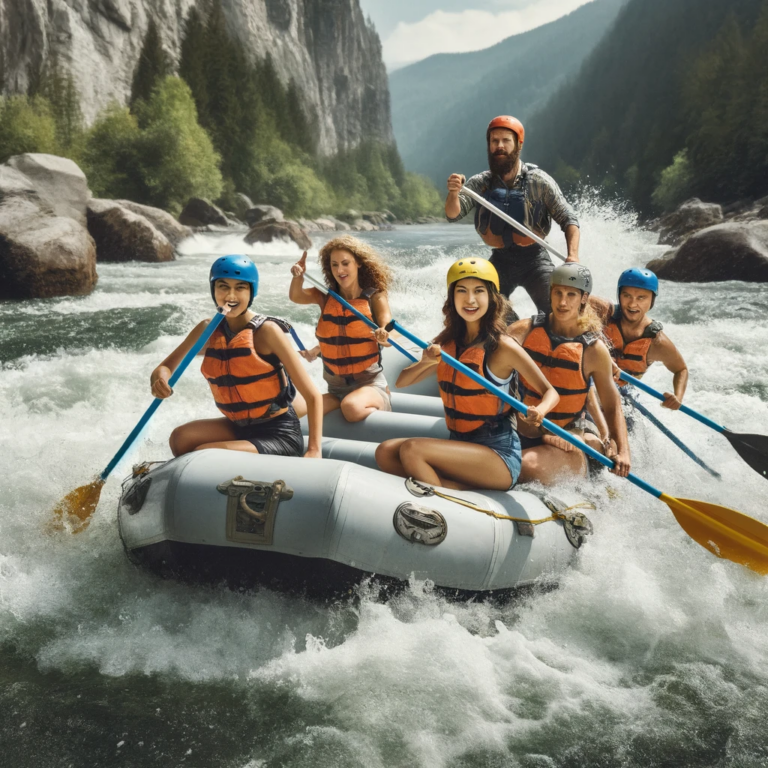
How to find the best tour booking software for your company
Thousands of businesses rely on a comprehensive booking management tool to streamline operations and enhance customer experience every day. With
Get the latest news and resources.
For tours and attractions delivered straight to your inbox each week.
Transform your business now.


Tour Guide Tips And Tricks (Top 7 Tips to Enhance Your Tour Guiding Game)
- Digital Nomad Travel Guide
- December 26, 2023
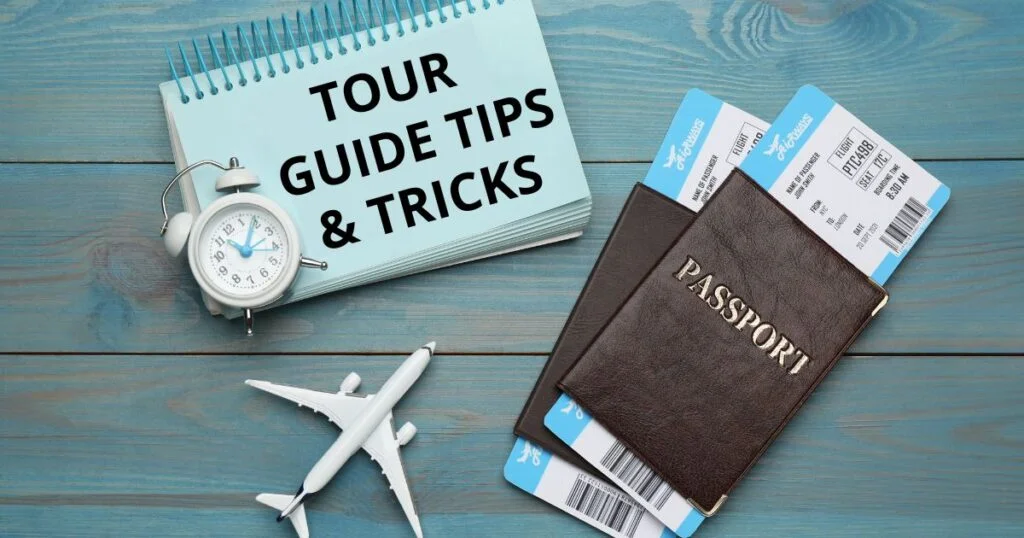
Tour guides can excel by mastering storytelling and engaging with guests. Effective tour guides should possess in-depth knowledge, clear communication skills, and flexibility.
Within the dynamic field of tour guiding, professionals face the unique challenge of ensuring a memorable and informative experience for guests. This demands a blend of historical expertise, the charm of a storyteller, and the ability to anticipate and respond to the needs of a diverse group of travelers.
Crafting an unforgettable tour experience hinges on the guide’s adeptness at sharing insights and facilitating interactions that resonate deeply with their audience. To flourish in this role, it’s crucial for guides to consistently refine their skills, adapt to various situations, and foster a warm, welcoming atmosphere that encourages guest participation. By striking the right balance between education and entertainment, a tour guide can transform a simple excursion into an enriching adventure that visitors will cherish.
KEY TAKEAWAYS
- Master Storytelling with Empathy: Weave captivating narratives that engage diverse audiences, while being mindful of cultural sensitivities and adjusting your approach to cater to different interests and needs. Remember, inclusivity and understanding are key to creating a welcoming environment for all.
- Plan for Safety and Surprise: Craft organized itineraries with ample time for exploration and breaks, while always prioritizing the safety and comfort of your guests. Surprise them with hidden gems and thoughtful gestures, but ensure these surprises don’t put anyone at risk or discomfort.
- Be a Local Knowledge Champion: Continuously expand your knowledge base through research and exploration, becoming the ultimate insider on your destination. This allows you to answer questions confidently and guide your guests to authentic experiences while respecting local customs and traditions.
Table of Contents
Enhancing Your Tour Guiding Skills

Embarking on a journey to become a more dynamic and impactful tour guide is an exciting challenge that requires dedication and a passion for storytelling. Whether leading a group through ancient ruins or a bustling cityscape, the ability to captivate and educate your audience is paramount. In the following sections, we will explore several key strategies to take your guiding abilities to the next level, ensuring your tours leave a lasting impression.
Mastering The Narrative For Memorable Experiences
A tour is much more than a mere walk; it is an immersive experience that should transport your audience through time and culture. To master the narrative, a tour guide must:
- Interweave intriguing anecdotes with the facts to keep guests engaged.
- Use thematic storytelling to connect various points of interest.
- Employ pauses and emphasis to highlight the most important elements.
Sharpening Your Historical And Cultural Expertise
An in-depth understanding of the historical and cultural background of the tour location is crucial. To sharpen your expertise:
- Keep up-to-date with the latest research and insights related to your tour area.
- Build a repertoire of relevant and lesser-known facts to surprise your audience.
- Connect with local historians or cultural experts to deepen your knowledge base .
Improving Engagement Through Storytelling Techniques
Storytelling is the heart of a memorable tour. Implementing effective techniques can significantly improve engagement . Some methods include:
- Utilizing descriptive language to create vivid mental images.
- Engaging the senses by encouraging the group to touch, taste, and smell when appropriate.
- Asking provocative questions to inspire curiosity and participation.
Tailoring Your Approach To Diverse Traveler Needs
Each traveler is unique, and a skilled tour guide must tailor their approach to cater to different interests and needs. To ensure a personalized experience:
Acknowledge different preferences and adapt the tour pace and content accordingly .
Tour Guide Tips And Tricks For Effective Communication

Outstanding communication skills remain the cornerstone of any successful tour guide’s repertoire. Whether narrating historical facts or engaging in lively chitchat, the ability to convey information thoroughly and entertainingly makes all the difference. Tour guides looking for insider secrets to captivate their audience can benefit from the following practical tips and tricks for effective communication.
Cultivating Clear And Captivating Speaking Abilities
Articulate speech coupled with engaging storytelling transforms a standard tour into an unforgettable adventure. To achieve this, consider these approaches:
- Enhance your diction: Practice pronouncing words clearly to avoid misunderstandings.
- Vary your tone and pace: Use inflections and tempo changes to maintain interest.
- Stay knowledgeable: In-depth understanding of the subject matter will boost your confidence and credibility.
Using Body Language And Non-verbal Cues Effectively
Non-verbal communication is a potent tool for tour guides. Follow these pointers to master your body language:
- Maintain eye contact: This builds a connection with your audience and makes them feel involved.
- Use gestures: Appropriate hand motions can help illustrate your points and add dynamism to your narrative.
- Position yourself strategically: Place yourself where everyone can see you without obstruction.
Handling Questions With Poise And Accuracy
Responding to questions accurately and confidently can establish your authority and trustworthiness:
Managing Group Dynamics And Maintaining Interest
Guiding a group requires maintaining a delicate balance to keep everyone’s interest. Discover how with these strategies:
Read the crowd: Gauge the energy levels and interests of the group to adjust your approach accordingly. Facilitate interactions: Encouraging group participation can create a more memorable experience.
Manage time smartly: Craft your tour to include time for exploration, questions, and rest. This keeps the group engaged and not overwhelmed.
Integrating Technology In Tours

Technology revolutionizes the way we travel and the role of a tour guide is no exception. By embracing digital advancements , tour operators can create memorable and engaging experiences that both educate and entertain . From mobile applications that offer interactive learning opportunities to social media platforms that build excitement and connection before the tour even begins, the potential for technology to enhance guided tours is boundless. Let’s delve into some of these innovative approaches that are transforming the travel industry.
Mobile applications are invaluable tools for tour guides looking to add an educational layer to their tours. With features like GPS-triggered content , real-time information, and augmented reality , learning becomes an interactive and immersive experience . Here are a few ways to employ these apps:
- Interactive Maps: Guide visitors through landmarks with detailed maps that offer historical facts and anecdotes at each point of interest.
- Scavenger Hunts: Encourage exploration with app-driven quests that unlock stories and trivia as visitors discover new locations.
- Language Support: Facilitate understanding with multilingual support for non-native speakers to follow along comfortably.
Social media platforms are a dynamic way to enhance the visibility of your tours and forge a community among participants. Effective strategies include:
- Creating event pages for upcoming tours to spark interest and encourage shares and RSVPs.
- Sharing behind-the-scenes content and sneak peeks to heighten excitement for the experiences ahead.
- Encouraging participants to share their experiences post-tour, creating a ripple effect that can attract future customers.
By integrating various multimedia tools, tour guides can dramatically enhance the storytelling aspect of a tour. Consider the following:
These tools not only bolster engagement but also cater to different learning styles, making the tour accessible and memorable for all participants.
Safety And Professionalism In Guiding
As a tour guide, your priority is to ensure that your group has an enjoyable and memorable experience . However, it’s vital to balance this with a steadfast commitment to safety and professionalism . Tour guides are seen as the front line of the travel and tourism industry; thus, adhering to best practices in these areas not only safeguards your participants but also enhances the overall quality and reputation of your services.
Adhering to safety protocols for different tour scenarios
Understanding different tour scenarios and their associated risks is fundamental for any tour guide. Be it a tranquil walk through historical towns, an exhilarating bike ride in the countryside, or an adventure-packed trek in the mountains, each situation calls for specific safety measures :
- Urban Tours: Emphasize the importance of staying together and being aware of traffic and surroundings.
- Wilderness Excursions: Discuss wildlife safety, weather preparedness, and leave-no-trace principles.
- Activities like snorkeling or zip-lining: Review proper techniques, equipment usage, and emergency procedures beforehand.
Ensuring a respectful and inclusive environment
Promoting a culture of respect and inclusion is not only the right thing to do, but it also improves group dynamics and enhances the experience for all. Foster this environment by:
- Using language that is welcoming to all participants, regarding their background or abilities.
- Avoiding assumptions based on appearances or behaviors and encouraging participants to share their perspectives.
- Being mindful of different cultural norms and adjusting accordingly to be considerate of all participants.
Maintaining a professional demeanor under pressure
Occasionally, tour guides face unforeseen circumstances that can test their composure. Whether dealing with late arrivals, unanticipated weather changes, or challenging participants, it’s crucial to:
Personalizing Tour Experiences
Stellar tour experiences hinge on customization. A tour guide’s deft touch in tailoring the journey to individual preferences can transform a standard outing into a memorable adventure. Personalizing tour experiences not only enhances satisfaction but also increases the likelihood of glowing reviews and repeat clientele. By recognizing the varying interests and expectations of guests, savvy tour guides craft an immersive and interactive experience that resonates on a personal level.
Recognizing The Importance Of Personalization
Today’s travelers seek unique experiences that connect with their personal interests and passions. Acknowledging this trend, tour guides can gain an edge by investing effort to understand their audience. A personalized approach begins with pre-tour communication to gauge preferences, followed by meticulous planning to tailor the content accordingly.
Adapting Tours To Cater To Specific Interests
Each traveler is distinct, with a unique set of interests. Some may be history buffs, others might cherish local cuisine, while several could be fervent photographers. Adapting tour itineraries requires creativity and resourcefulness in modifying the narrative and stops to cater to these interests. Here are some strategies to customize tours:
- Conduct pre-tour surveys to determine what your group is most excited about.
- Offer a range of tour paths and allow guests to choose their adventure.
- Prepare anecdotes and trivia that relate to different hobbies and preferences.
- Integrate hands-on activities or behind-the-scenes access where possible.
Creating Moments Of Surprise And Delight
The pinnacle of personalization lies in the capacity to orchestrate moments that astonish and please guests. A well-timed surprise, a thoughtful gesture, or an unexpected detour adds an element of delight to the tour experience. These moments might include:
- An impromptu stop at a hidden gem not listed in the itinerary.
- Personalized recommendations for further exploration post-tour.
- Special treats or souvenirs that reflect the interests of the group.
Such initiatives ensure guests walk away with stories worth sharing and a deep-seated appreciation for the bespoke tour experience.
Continual Learning And Adaptation
In the ever-evolving tourism industry, the most successful tour guides understand that knowledge is never static . The ability to continually learn and adapt is not just advantageous; it is essential. To stay ahead in this dynamic field, embracing new strategies, updating your expertise, and analyzing client feedback are all part of the game. With a dedication to professional growth, tour guides can transform every tour into a memorable, educational, and enjoyable experience for their clients.
Staying Current With Industry Trends And Insights
To remain relevant and effective, tour guides must have their fingers on the pulse of the latest happenings within the sector. Staying current with industry trends means exploring new destinations, understanding evolving tourist preferences, and being aware of technological advancements that can streamline the tour experience.
- Subscribe to industry journals and blogs.
- Attend tourism conferences and webinars.
- Follow influential figures and organizations on social media.
Seeking Feedback And Implementing Improvements
Continuously improving service quality is paramount for any tour guide striving for excellence. Seeking feedback from clients provides invaluable insights that can shape future tours. Implementing improvements based on this feedback demonstrates a commitment to customer satisfaction and personal growth.
- Distribute feedback forms at the end of each tour.
- Analyze feedback for common patterns and suggestions.
- Make actionable changes to address constructive criticism.
Engaging In Professional Development Opportunities
Another key aspect of continual learning involves taking advantage of professional development opportunities . Attending workshops, acquiring additional certifications, and engaging in peer discussions not only refines your skills but also expands your network within the tourism industry.

Credit: www.checkfront.com
What skills should a tour guide have?
So you’ve got the passion, the knowledge, and the wanderlust – now it’s time to hone your skills and become a tour guide who leaves travelers begging for more. But where do you start? Let’s dive deep into the essential skills that will elevate your tour guiding game from good to legendary .
1. Communication is King (and Queen):
- Vocal Clarity: Project your voice like a rockstar, enunciate clearly, and modulate your tone to keep listeners engaged. Remember, you’re competing with rustling leaves and city hum.
- Active Listening: Pay attention to your group’s energy, questions, and body language. Adjust your pace, repeat key points, and tailor your explanations to their interests.
- Storytelling Magic: Weave facts, anecdotes, and humor into captivating narratives that bring history and culture to life. Make your listeners feel like they’re stepping into the past!
2. Empathy: Your Secret Weapon:
- Read the Room: Sense when to crack a joke, when to offer a shoulder, and when to simply listen. Understand that travel can be stressful, and cater to individual needs.
- Cultural Sensitivity: Be mindful of diverse backgrounds and customs. Adapt your language and humor to avoid unintentional offense.
3. Problem-Solving Ninja:
- Think on your Feet: Expect the unexpected! From missed trains to grumpy tourists, be ready to navigate challenges with a calm head and creative solutions.
- Resourcefulness is Key: Know your way around – hidden restrooms, backup transportation options, alternative activities – and always have a plan B.
4. Charisma: The Dazzling Aura:
- Confidence is Contagious: Believe in your knowledge and passion, and your enthusiasm will rub off on your group. Exude a positive attitude that makes exploring a joy, not a chore.
- Authenticity Wins: Be yourself! Let your personality shine through, and your genuine interest in the destination will resonate with your audience.
5. The Power of Planning:
- Master of Time: Organize your itinerary meticulously, factoring in breaks, transportation, and unforeseen delays. Keep your group informed and on track.
- Itinerary Architect: Craft engaging routes that balance iconic landmarks with hidden gems, catering to diverse interests and maximizing time.
Beyond the Essentials:
- Memory Palace: Train your brain to recall dates, names, and anecdotes with ease. A well-informed guide is a trusted companion.
- Professional Polish: Dress appropriately, maintain personal hygiene, and project a confident demeanor. You’re the face of the experience.
- Public Speaking Prowess: Hone your public speaking skills to deliver information clearly, engagingly, and with a touch of humor.
- Punctuality is Power: Arrive on time, stick to the schedule, and respect your guests’ valuable vacation time.
- Research Rabbit: Continuously expand your knowledge base. Read local news, explore hidden corners, and stay updated on cultural events.
- Energetic Explorer: Match your group’s pace and enthusiasm. Show them the joy of discovery with your infectious energy.
- Organized Adventurer: Keep your notes, maps, and materials readily accessible. A disorganized guide leads to a chaotic experience.
- Patient Pathfinder: Not everyone learns at the same pace. Be patient with questions, offer additional explanations, and ensure everyone feels included.
- Improvisation Improvisation!: Be prepared to adapt your plans on the fly. A detour due to construction? Turn it into an impromptu scavenger hunt!
Bonus Skills:
- Creating Engaging Itineraries: Tailor tours to specific interests, age groups, and activity levels. Offer unique experiences like cooking classes or local market visits.
- Handling Health Emergencies: Be prepared to deal with minor medical issues and know where to find necessary resources.
- Organizing Additional Trips: Offer optional excursions or side trips to cater to adventurous spirits.
- Outgoing Ambassador: Be a friendly face, recommend local restaurants and shops, and help your guests connect with the local community.
Remember, tour guiding is more than just sharing information – it’s about creating unforgettable memories. By mastering these skills, you’ll transform into a guide who doesn’t just lead, but inspires, educates, and entertains.
What Are Some Tips for Both Tour Guides and Tour Leaders to Enhance Their Skills?
As a tour guide, it’s important to know the difference between tour guide and tour leader . Understanding this distinction can help enhance your skills as you navigate through different destinations. Additionally, constantly seeking feedback, staying knowledgeable about the local culture, and perfecting your storytelling abilities are essential to excel in this field.
Frequently Asked Questions Of Tour Guide Tips And Tricks
What are suggested tips for tour guides.
Engage your audience with enthusiasm and compelling storytelling. Master local knowledge to answer questions confidently. Maintain punctuality to respect the tour’s timeframe. Show empathy and adaptability to meet group needs. Always prioritize safety and comfort for all participants.
How Can I Be The Best Tour Guide Ever?
To be the best tour guide ever, engage guests with enthusiasm, share in-depth local knowledge, tell captivating stories, listen actively to participants, and stay positive and patient.
What Should A Tour Guide Not Do?
Here are some things that tour guides should avoid doing:
Being late : Tour guides should always arrive on time and be ready to start the tour at the scheduled time. Being late can inconvenience guests and cause delays for other tours.
Rushing the tour : Tour guides should not rush the tour or try to finish it early. This can make guests feel like they are not getting their money’s worth and can lead to negative reviews.
Being unprepared : Tour guides should be prepared for the tour and have all necessary equipment and materials ready. They should also be knowledgeable about the tour and the area they are guiding.
Interrupting guests : Tour guides should allow guests to ask questions and speak without interruption. Interrupting guests can be rude and make them feel uncomfortable.
Touching guests : Tour guides should never touch guests unless it is to offer assistance or help with gear related to the tour.
Being disrespectful : Tour guides should always be respectful to guests and avoid making inappropriate comments or jokes.
Ignoring safety rules : Tour guides should always follow safety rules and ensure that guests are safe during the tour.
What Is The Most Important Technique The Tour Guide Must Possess?
The most important technique for a tour guide is excellent communication skills.
Armed with the insights shared, you’re now prepared to elevate your guiding game to new heights. Remember, the art of tour guiding thrives on enthusiasm, knowledge, and adaptability. Keep these tips and tricks in your back pocket, and watch as you transform each tour into an unforgettable journey for your guests.
Embrace the journey ahead, and happy guiding!
Related posts:
- How Much Does a Tour Guide Earn in Vietnam in 2024? (Complete Breakdown)
How Much Do Tour Guides Earn in South Africa? (A Complete Breakdown)
- Why the Best Way to Travel is With a Tour Guide?
Where Do Tour Guides Make the Most Money? (Global Hotspots for 2024)
Related post, is it better to travel with a tour guide in 2024 (pros & insights), what to do instead of traveling (15 brilliant & great alternatives to travelling), about the author.
Leave a Comment Cancel Reply
Your email address will not be published. Required fields are marked *
Save my name, email, and website in this browser for the next time I comment.

NomadsRoute is your one-stop shop for everything digital nomad lifestyle, residency, citizenship, visa opportunities, and travel guides. We’re here to help you live and work from anywhere in the world, without sacrificing your quality of life or financial security.
- Blog , Digital Nomad Travel Guide , Investment Opportunities
- March 16, 2024
Top 10 Changes and Trends that Will Shape Portugal’s Immigration Sector in 2024
- Blog , Second Citizenship
How to Apply for Dual Citizenship Bangladesh in 2024? (Comprehensive Guide)
- Second Citizenship
- March 15, 2024
How to Apply for Dual Citizenship Ghana in 2024?
Explore trail blazers
Adventure Awaits: Start Here
- Travel tips
Tour Guide Tips And Tricks: Unlock The Secrets Of Memorable Travel Experiences
- 1.1 1. Master the Art of Storytelling
- 1.2 2. Tailor Your Tours to Your Audience
- 1.3 3. Be an Expert in Your Field
- 1.4 4. Foster a Friendly and Approachable Persona
- 1.5 5. Surprise and Delight Your Travelers
- 1.6 6. Embrace Technology
- 1.7 7. Foster a Sense of Adventure
- 1.8 8. Stay Flexible and Adapt to Changing Situations
- 1.9 9. Continuously Seek Feedback and Improve
- 1.10 10. Leave a Lasting Impression
The Art of Being a Remarkable Tour Guide
Do you aspire to be the kind of tour guide who leaves a lasting impression on your travelers? Are you eager to provide unforgettable experiences and create lifelong memories? If so, then you’ve come to the right place! In this article, we will unveil a collection of valuable tips and tricks that will help you elevate your tour guiding game to new heights.
1. Master the Art of Storytelling
One of the most powerful tools at your disposal as a tour guide is the art of storytelling. Humans are naturally drawn to narratives, and by weaving captivating stories about the places you visit, you can effortlessly engage your travelers and make the experience more memorable.
2. Tailor Your Tours to Your Audience
Every group of travelers is unique, with different interests, preferences, and knowledge levels. To ensure a successful tour, it is crucial to tailor your content and delivery to match your audience. Research your travelers beforehand and customize your tours to cater to their specific needs.
3. Be an Expert in Your Field
As a tour guide, your knowledge about the destinations you visit should be extensive. Make sure to stay updated with the latest information, historical facts, and fascinating trivia. Being an expert in your field not only enhances your credibility but also allows you to provide valuable insights to your travelers.
4. Foster a Friendly and Approachable Persona
A welcoming and friendly demeanor is essential for building a connection with your travelers. Smile, maintain eye contact, and be genuinely interested in their questions and stories. By fostering a warm and approachable persona, you create an environment where your travelers feel comfortable and open to engaging with you.
5. Surprise and Delight Your Travelers
Adding unexpected elements of surprise and delight to your tours can make them truly memorable. Whether it’s a hidden gem you unveil, a local delicacy you offer, or a unique activity you organize, these small surprises can leave a lasting impression and make your travelers rave about their experience.
6. Embrace Technology
In today’s digital age, technology can be a valuable ally for tour guides. Utilize apps, audio guides, and interactive maps to enhance your tours and provide a multi-dimensional experience to your travelers. Embracing technology not only adds a modern touch but also shows your dedication to delivering an exceptional tour.
7. Foster a Sense of Adventure
A tour guide who exudes a sense of adventure can inspire their travelers to step out of their comfort zones and truly immerse themselves in the experience. Be enthusiastic, encourage exploration, and create an environment that sparks curiosity and discovery.
8. Stay Flexible and Adapt to Changing Situations
As a tour guide, unexpected situations can arise at any moment. It is crucial to stay flexible and adapt your plans accordingly. Whether it’s a sudden change in weather, a closed attraction, or a group member with special needs, your ability to handle these situations gracefully will contribute to a smooth and enjoyable tour experience.
9. Continuously Seek Feedback and Improve
Feedback is a valuable tool for growth and improvement. Encourage your travelers to provide feedback at the end of the tour and use their suggestions to refine your guiding techniques. Constantly seeking feedback and striving for improvement will help you evolve as a tour guide and provide even better experiences in the future.
10. Leave a Lasting Impression
Finally, aim to leave a lasting impression on your travelers. Whether it’s through personalized recommendations, small parting gifts, or simply your infectious passion for your job, make sure that your travelers walk away with fond memories and a desire to explore further.
Related Stories
Air travel: what can i take, 10 essential overseas travel tips you need to know, 10 travel marketing tips to boost your business, you may have missed.
- Travel budget
The Ultimate Guide To American Vacationing: Unforgettable Experiences Await!
One-week vacation family trip: creating lifelong memories.
Nomadic Matt's Travel Site
Travel Better, Cheaper, Longer
My Best 61 Travel Tips to Make You the World’s Savviest Traveler
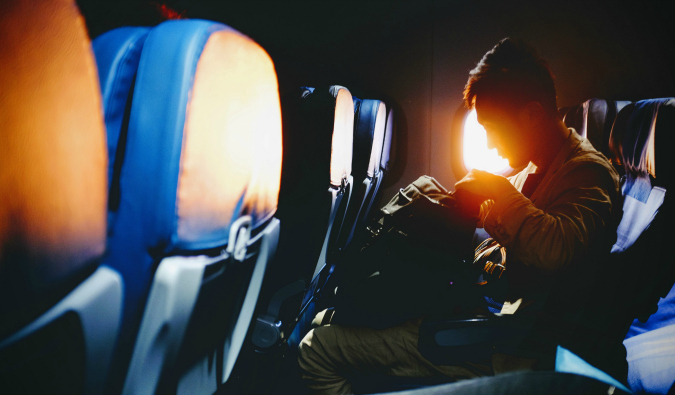
Most people aren’t born savvy travelers. It’s something that only comes with on-the-road experience. Travel savviness is a process born of missed buses, foolish behavior, cultural unawareness, and countless tiny errors. Then, one day, you begin to seamlessly move through airports and integrate yourself into new cultures like a fish to water.
In the beginning, you just make a lot of travel mistakes.
But I want to help speed up the process and help you avoid my mistakes ( and I often make a lot of them ), so I put together this giant list of my best travel tips that cover everything under the sun to help you reach your full travel ninja potential.
I’ve learned these tips over the last sixteen years being a nomad.
These tips for traveling will have you saving money, sleeping better, getting off the beaten path more, meeting locals, and just being a better traveler.
So, without further ado, here are the best 61 travel tips in the world:
1. Always pack a towel. It’s the key to successful galactic hitchhiking – and plain common sense. You never know when you will need it, whether it’s at the beach, on a picnic, or just to dry off after a shower. While many hostels offer towels, you never know if they will or not, and carrying a small towel won’t add that much weight to your bag.
Make sure it’s a lightweight, quick-drying towel since regular towels are too bulky and heavy (and they take a long time to dry). Dry Fox travel towels are my favorite (use the code “nomadicmatt” for 15% off your purchase)!
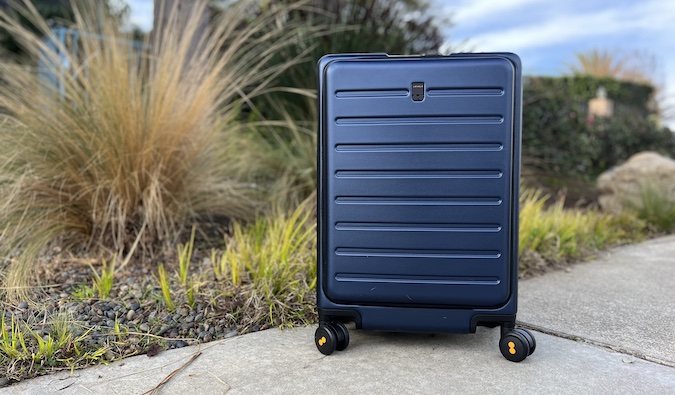
My favorite bag is the Flash Pack from REI . Other companies offering high-quality bags are Osprey, Nomatic, and MEC (for Canadians).
This article has more tips on finding the best travel backpack for your needs.
The same rule applies to suitcases. Don’t take a huge suitcase because they are a pain in the butt to lug around, especially if you’re traveling long term (short term, not so much). I like Level 8 suitcases. They are durable, quite spacious, nicely designed, and well-priced (luggage can be pretty damn expensive). Plus, they have a TSA lock built into the zipper. You can click here to learn more and buy one .
I also recommend packing cubes , which are essential if you’re going to be living out of a backpack for a few weeks (or months), or you just want to keep your suitcase better organized. They come in a variety of sizes, allowing you to store items big and small. They’re great for making it easy to find everything in your backpack or suitcase.
3. Pack light. Write down a list of essentials, cut it in half, and then only pack that! Plus, since you bought a small backpack like I said above, you won’t have much room for extra stuff anyways! Take half the clothes you think you will need…you won’t need as much as you think. It’s OK to wear the same t-shirt a few days in a row.
I love Unbound Merino , as their travel clothing can be worn daily for weeks without getting smelly. They are super light and they look sylish too. I really love the material, they’re comfortable, they hardly ever need a wash, and they last forever!
Click here for more packing tips .
4. But take extra socks. You’ll lose a bunch to laundry gremlins, wear and tear, and hiking so packing extra will come in handy. Take a few more than you need. Trust me on this. Nothing beats a fresh pair of socks!
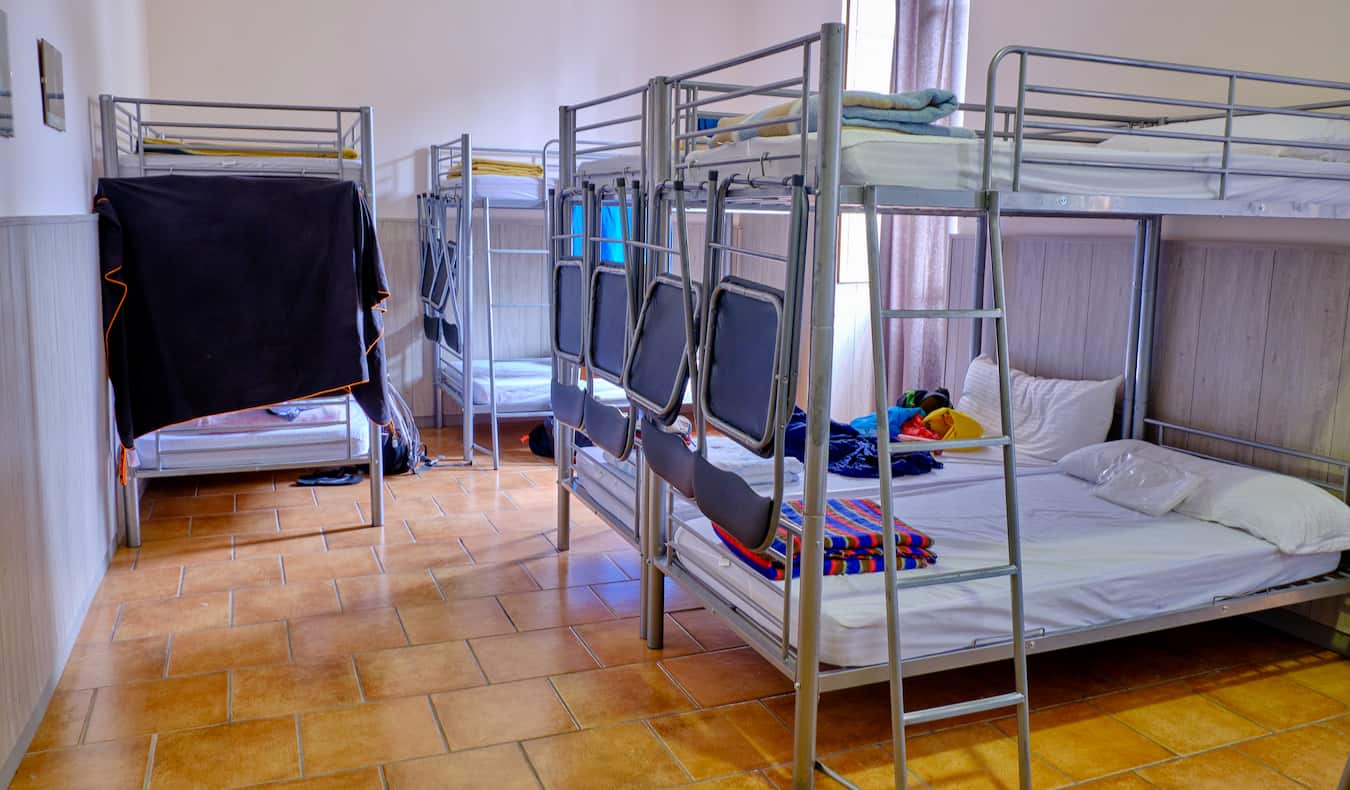
Here’s a list of all my best hostels around the world . If you’re planning on backpacking Europe , it’s worth getting HostelPass , a card that gives you up to 20% off hostels throughout Europe. It’s a great way to save money, and they’re constantly adding new hostels too. I’ve always wanted something like this and so I’m glad it finally exists. Use code NOMADICMATT for 25% off.
6. Take an extra bank card and credit card with you Disasters happen and things get stolen or compromised. I once had a card duplicated and a freeze put on it. I couldn’t use it for the rest of my trip. I was very happy I had a backup. You don’t want to be stuck somewhere new without access to your funds. This happened to a friend once and they had to borrow money for me for weeks while they waited for their new card to arrive.
Here are some helpful articles on banking:
- How to Avoid Banking Fees While Traveling
- 22 Ways to Cut Your Expenses and Have Money for Travel
- How to Pick the Best Travel Credit Card
7. Make sure to use no-fee bank cards. Don’t give banks your hard-earned money. Keep that for yourself and spend it on your travels. Get a credit card and debit card that doesn’t charge a foreign transaction fee or an ATM fee. Over the course of a long trip, the few dollars they take every time will really add up!
Here’s an article that will tell you how to do that.
8. Don’t fly direct. When booking flights, sometimes it is cheaper to fly in to airports close to your final destination, and then take a train, bus, or budget airline to where you need to go.
To use this method, find out how much it is to go directly to your destination. Then, look at prices to nearby airports. If the difference is more than $150 USD, I look to see how much it is to get from the second airport to my primary destination.
My favorite flight search engine is Skyscanner . This is my go-to website for finding cheap flights. It searches a lot of different airlines, including many of the budget carriers that larger sites miss.
Here are some more tips on finding cheap flights!

Here are some helpful articles on solo travel:
- Why I Travel Alone
- The Joy of Solo Travel
- Travel: The Ultimate Personal Development Tool
- How to Overcome Being Alone
- Reading People: One Skill Travel Has Taught Me
10. Always visit the local tourism information center. This is probably one of the most underused travel tips in the world. Tourism information centers know about everything going on in town. They can point you to free activities, special events happening during your stay, and everything in between. They even offer discounts on attractions and transportation. It is their job to help you experience the destination better. It’s amazing how many travelers skip this when they are visiting somewhere but, as a savvy traveler, you know to use this resource!
11. Take free walking tours. Besides being free, these tours will give you a good orientation and background of the city you are visiting. I love, love, love taking walking tours when I travel. You pass the time, you get to pepper the guide with questions, and you get to learn so much about where you are. Here are some of my favorite walking tour companies around the world:
- The Best Walking Tours in New York City
- The Best Walking Tours in London
- The Best Walking Tours in Paris
- The Best Walking Tours in Berlin
- The Best Walking Tours in Amsterdam
And while free walking tours are great, sometimes it’s worth it to take a paid walking tour if you’d like to dig deeper into a particular aspect of the destination. Walks is one of my favorite paid walking tour companies, offering in-depth history and cultural tours in cities around the world (especially Europe). Its small-group tours also tend to offer exclusive behind-the-scenes access you can’t get elsewhere.
For fellow foodies, Devour Food Tours has all kinds of amazing food tours around Europe.
12. Don’t be afraid to use a map. Looking like a tourist isn’t as bad as getting really lost and ending up in the wrong neighborhood. Don’t be afraid to use a map or ask for directions and look like a tourist. After all, you are one!
13. But don’t be afraid to get purposefully lost. Wandering aimlessly through a new city is a good way to get to know it, get off the beaten path, and away from the tourists. You might be surprised by the hidden gems you find. I like to wander around and try to find my way without using Google Maps. Travel is the art of discovery and you never know what cool little spot you’ll come across.
14. Ask hostel staff for information — even when you aren’t staying there. Hostel staff deal with budget travelers all day, every day. They know exactly where to go for cheap meals and attractions. They also tend to be locals so they know the city very well. Ask them for all sorts of information. Even if you aren’t staying in one, just pop in and ask for help. They’ll usually give it.
15. Sign up for flight deals. When it comes to travel, your flight(s) will likely be your biggest expense. Save money by signing up for flight deal websites. You’ll get epic flight deals straight to your inbox, saving you time and money. Also be sure to sign up for airline newsletters, since that is where they will announce their sales first. The best websites for finding travel deals are:
- Going (formerly Scott’s Cheap Flights) – The BEST for upcoming US flight deals.
- The Flight Deal – Great for global flight deals.
- Holiday Pirates – The best for European flight deals.
- Secret Flying – A great site for flight deals from around the world.
16. Don’t buy a money belt — they’re stupid. Thieves know they exist and being seen with one basically shouts, “Look at me, I’m a tourist with money! Rip me off!” The more you can blend in and act like a local, the easier it will be to get deals and avoid touts. If you’re worried about pickpockets, keep a better eye on your stuff!
17. When you go out, take only what you need. Limit the amount of cash and bank cards you carry with you when you go out, so if something does happen, you can easily recover. Never take more than one credit card or ATM card with you. My rule for cash is to limit what I carry to $50 USD.
18. Always carry a lock. Carry a small combination lock with you when you travel. They come in handy, especially when you stay in dorms. Most hostels use lockers, so budget travelers need to provide their own travel lock to keep stuff secured. While you can usually rent or buy them at hostels, it’s much cheaper just to buy one before you go. (Just don’t use one with keys because if you lose the keys, you’re screwed!)
19. Make extra copies of your passport and important documents. Don’t forget to e-mail a copy to yourself too. You never know when you might need to have some sort of documentation with you and might not want to carry your original. Additionally, if your passport gets stolen having a copy will come in handy for your police report.
20. Learn basic phrases in the native language of your destination. The locals will appreciate it and it will make your interactions easier. You don’t need to master the language but learning a few things like “Hello,” “Goodbye,” “Thank you!”, “Where’s the bathroom?” will go a long way to endearing yourself with the locals. They’ll like that you tried.
Here are some tips on how to learn a language .
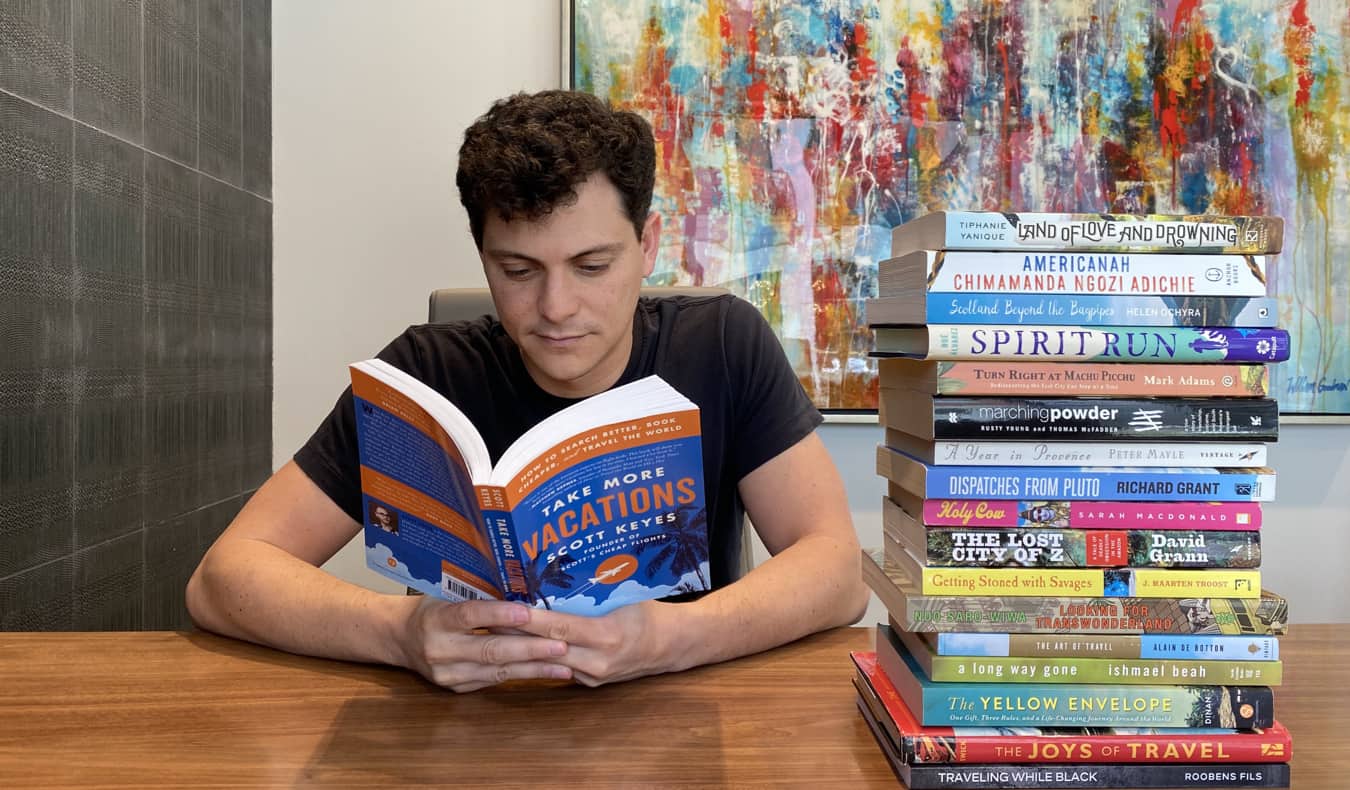
Here are some posts that highlight my favorite reads:
- 13 Travel Books That Will Give You Serious Wanderlust
- The Best Travel Books
- 12 Books to Take You Around the World
22. Don’t be ashamed to walk into a Starbucks or McDonald’s. Sometimes familiarity is comforting and both places have free wifi and public restrooms you can use. (Just don’t eat the food at McDonald’s! That shit is gross and unhealthy for you! You can get it back home!). Libraries and most modern coffee shops also have free Wi-Fi too.
23. Always get behind business travelers when in security lines. They move fast since they are usually in a rush and travel light. They know the drill. Line up behind them as much as possible. You’ll speed through the line!
24. Never get behind families in airport security. They take forever. It’s not their fault. They just have a lot of stuff because of the kids. Try to avoid getting in lines with lots of kids. It’s going to take a while.
25. When you check in to the hotel, don’t be afraid to ask for an upgrade. They have a lot of flexibility when it comes to assigning upgrades at check-in. It never hurts to ask. Often times they can accommodate you if the hotel isn’t full. Just be super nice!
Note: If you stay in hotels frequently (or want to), it might be worth it to get a hotel credit card . You can earn points on your everyday spending at home and convert those points into free stays. The best cards come with status, making upgrades more likely too!
26. Write down your experiences. Even in this hyper-technological age, I think everyone needs to write more during their travels so they have something to look back on. I never leave home without a journal. Not only do I use them for work (I’m constantly taking notes and writing down ideas) but I also use them to keep track of my travels.
Simple travel journals work great for journaling during your trip as well as for writing down logistical information like directions, contact information, and language tips.
If you want a travel journal that isn’t just blank pages but rather has space for itinerary planning, places to jot notes in the local language, inspirational quotes, and more, grab our new travel journal. It was designed specifically with travelers in mind, so you can take notes as well as write down stories and reflections during your travels.
27. Lunchtime is the best time to visit historical sites. Be a contrarian. You’ll have fewer crowds getting in your way as big tour buses, groups, and most travelers head to lunch. It’s always best to visit an attraction super early, late, or when people eat. You’ll have even the most popular places to yourself!
28. Never eat in a touristy area or near a tourist attraction. As a general rule, I walk five blocks in either direction before I find a place to eat. The closer you are to tourist attractions the more you are going to pay and the worse the food (and service). Use websites like Yelp , Google Maps , or Open Rice to find some delicious and popular restaurants around you.
Additionally, never eat anywhere the menu is in like 6 languages! That means the restaurant is just for tourists!
29. Locals don’t eat out every night and neither should you. Go grocery shopping. You can learn a lot about locals’ diets by seeing the type of food they buy. Plus, it will save you a lot of money. You won’t regret it. Cook your food, save money, and surprise yourself!
30. Eat at expensive restaurants during lunch. Most expensive restaurants offer lunch specials featuring the same food they would serve for dinner but for a fraction of the cost! That’s the best time to eat out when you travel.
I share more tips on how to eat cheaply around the world here.
31. Pack a headlamp. This is a handy tool for both backpackers and anyone looking to do any hiking or camping. If you’re going to be staying in a hostel, having a headlamp is helpful when you need to check in or out but don’t want to disturb your fellow travelers by turning on the lights. They’re also helpful in emergencies.
32. Carry a basic first-aid kit. Accidents happen, so be prepared. I always take band-aids, antibacterial cream, and ointments for minor cuts and scrapes. You never know when you’re going to need it and you can’t always get it when you travel.
You can either assemble a first aid kit yourself ( here are some tips for doing so ), or purchase a pre-made kit online .
33. Don’t believe the cheap flight myths. Don’t drive yourself too crazy trying to get the absolute cheapest fare. There are a lot of myths online about how to find cheap flights, but there is no magic bullet or one secret ninja trick. It’s not cheaper to book on a particular day of the week, or if you search in an incognito window.
Spending five hours to try to save $10 will cause you a lot of stress. Once you find a flight deal that you’re happy with, book right away, as airfares change by the minute. Remember, you usually have a 24-hour window to cancel in case you need to.
Here are some article on how to save money on flights:
- 5 Steps to Booking a Cheap Flight Online
- How to Always Find a Cheap Flight
- Where I Find the Best Travel Deals
34. Use Meetup, the sharing economy, and hospitality websites to meet locals. These websites will help you get an insider’s perspective on your destination by connecting you with locals in the places you visit. The sharing economy has changed the way people travel allowing you to meet locals, get off the tourist travel, and save mega money! It’s a triple win – and I use these resources all the time when I travel.
Here’s an article on how to use the sharing economy (and what websites to use) when you travel.
35. Be open to strangers. Not everyone bites. Say hi to people on the road. Turn strangers into friends. Remember they are just like you! They want to live a happy, full life and have hopes and dreams too! You never know. You just might make some lifelong friends.
36. But keep your guard up. Some people do bite, so keep a healthy level of suspicion. You don’t want to fall for any travel scams or get yourself into uncomfortable situations. Be open but cautious. Here is a list of travel scams to avoid.

- My Favorite Restaurants in Europe
- The Best Places to Eat in NYC
- How to Eat Cheap Around the World
- 30+ Places to Eat in Tokyo
- How to Eat Around the World on a Vegan Diet
38. Avoid taxis. They are always a budget buster. Never, ever take a taxi unless you absolutely have too!
39. Take a reusable water bottle through airport security and fill it up at your gate. Single-use plastics are common in a lot of countries around the world. They’re also polluting our oceans and destroying the environment. Drink from the tap when you can — you’ll save money and help the environment. If you’re going somewhere where you can’t drink the water, be sure to get a water bottle with a filter. I love Lifestraw .
40. Get city attraction cards. If you are going to visit a lot of museums and other attractions in a short period of time, a city pass is going to save you money on admission (plus most provide free public transportation too!).
41. Take pictures of your luggage and clothes. If your bag gets lost, this will help identify it more easily and speed up the process of having your travel insurance reimburse you.
42. Carry emergency cash. Because emergencies happen, like that time in Romania when I couldn’t find an ATM and needed money for the bus to the hostel. I usually try to keep around $200 USD in emergency cash in case something happens!
43. Get good shoes. You walk a lot when you travel. Don’t beat up your feet. Love them as much as they love you, and they’ll take you to amazing places.
My favorite shoes for traveling are Suavs shoes , which are versatile and durable. They’re comfortable and great for exploring a new city all day, but also look nice enough that you can dress them up if you want to at night.
44. Get vaccinated. Because falling prey to an illness in a foreign country is not fun — and many countries require you to get vaccinated in order to visit them. So regardless of your opinion on the subject, you just might have to.
Here is an article on how to stay healthy on the road.
45. Learn to haggle. Haggling is a fun, playful way of not getting charged the foreigner price. It’s the art of negotiating and one that will help you throughout all of life, not just at the market.

Here are some articles to help you get started with using points and miles:
- Points and Miles 101: A Beginner’s Guide
- How I Earn 1 Million Frequent Flier Miles Every Year
- The Best Travel Credit Cards
- The Ultimate Guide to Picking the Best Travel Credit Card
47. Take a jacket. Nights get chilly.
48. Eat street food! If you skip the street food, you miss out on culture . Don’t be scared. If you’re nervous, look for places where kids are eating. If it’s safe for them, it’s safe for you.
49. Get travel insurance. Travel insurance is the most important thing to get that you never want to use. If something goes wrong, you don’t want to be out thousands of dollars in bills. Travel insurance will be there if you get robbed, flights get canceled, you get sick or injured, or have to be sent home. It’s comprehensive and, for just a few dollars a day, one of the best investments you can get for a trip.
You may think you’re superman/woman but so did my friend who broke her arm, didn’t have insurance, and had to pay thousands out of pocket. Insurance was there when I had to replace my camera and when I popped an eardrum scuba diving! Get it! Here are some tips on how to find the best travel insurance.
My favorite companies are:
- SafetyWing – A budget-friendly choice for travelers who need basic coverage. They are affordable, have great customer service, and make it easy to make a claim. If you’re on a tight budget, go with SafetyWing!
- Insure My Trip – The best insurance for those over 70 years old.
- Medjet – This is a membership program that provides emergency evacuation coverage should you get into a dire situation while traveling and be hospitalized. Medjet is meant to supplement your regular travel insurance.
50. Be patient. Things will work out in the end. No need to rush. You’ll get to where you are going in due time. Travel is about the journey, not the destination.
51. Be respectful. Locals are willing to help you out, but there’s probably a language barrier, so keep your cool when something doesn’t go your way. If you don’t, you’ll end up just looking like an asshole tourist.
52. Don’t over plan your trip. Let your days unfold naturally. Schedule two or three things and let the day fill in the rest on its own. It’s less stressful, and letting the day just take you is one of the best ways to travel. Here’s my advice on how not to over plan your travels!
53. Relax. See Be patient .
54. Be frugal — but not cheap. Don’t be pennywise but pound-foolish. Look for deals and don’t waste money, but don’t miss out on great experiences or walk 10 miles to save a couple of dollars. Time is money. Spend them both wisely.
55. Take earplugs. Anyone who has ever stayed in a hostel knows that earplugs are a necessity. Snorers are everywhere and you need your sleep.
But even if you’re not going to be in a hostel, they’re still helpful for sleeping well if your accommodation is located on a busy street, or for sleeping in buses, overnight trains, and other types of transportation. A good night’s sleep is priceless — be prepared!
These earplugs are reusable and work much better than the cheap foam ones, blocking out any distracting noises.
56. Always carry a power bank. Batteries die. Your good mood shouldn’t.
We all travel with numerous electronic devices like phones and tablets, but it can be hard to keep them all charged. An external battery solves that problem.
57. Remember that you’re not alone even if you’re traveling solo. Traveling alone never means you’re really alone. Wherever you go, there is a network of travelers who will be your friends, give you advice or tips, and help you out. They will guide you, point you in the right direction, and be your mentors. You aren’t out there on your own. You’ll make lots of friends and tons of memories.
If you’re not sure about traveling on your own for the first time, you can always join a group tour, such as those we offer at The Nomadic Network . I’ve designed all the itineraries myself to ensure they cover the highlights, get you off the tourist trail, and connect you with friends and locals.
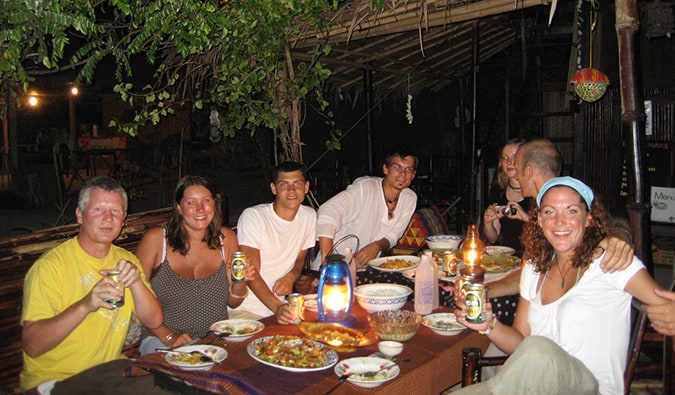
59. Pre-book your tickets to attractions, activities, and excursions online. If you’re planning to do any activities or excursions on your trip, book them online. Companies usually offer a discounted price when compared to buying in person. Not only that but you’ll be able to pay with a credit card, giving you some extra protection as well as more travel points!
Many major attractions also allow you to reserve your spot and skip the line. Always look online to see if this is an option. This will you to avoid wasting time in multi-hour lines and go right in. I’ve seen people wait hours for the Paris Catacombs, Louvre, London Churchill War Rooms, churches, temples, historic fortresses, and more. Pre-book the day before, skip the line, get to see more during your day!
Get Your Guide is my favorite place to book activities in advance. It’s a huge online marketplace for tours and excursions, with tons of options in cities all around the world, including skip-the-line attraction tickets, cooking classes, walking tours, and more!
60. Avoid TripAdvisor. TripAdvisor is fine when you need opening hours or an address, but when it comes to reviews I ignore it completely. People always leave a negative review when something bad happens but rarely leave a positive review when something good happens so the reviews tend to be skewed.
On top of that, it’s very easy to create fake reviews and make a place seem better than it is. Many hotels and restaurants hire firms to artificially inflate their reviews on the platform. Additionally, TripAdvisor has been known to take down reviews that are overly negative as well as reviews on sexual assault. Use TripAdvisor with caution. Or better yet, don’t use it at all.
61. Finally, wear sunscreen. For as the Baz Luhrmann song “Everybody’s Free (To Wear Sunscreen)” goes:
If I could offer you only one tip for the future, sunscreen would be it. The long-term benefits of sunscreen have been proved by scientists Whereas the rest of my advice has no basis more reliable Than my own meandering experience.
Book Your Trip: Logistical Tips and Tricks
Book Your Flight Find a cheap flight by using Skyscanner . It’s my favorite search engine because it searches websites and airlines around the globe so you always know no stone is being left unturned.
Book Your Accommodation You can book your hostel with Hostelworld . If you want to stay somewhere other than a hostel, use Booking.com as it consistently returns the cheapest rates for guesthouses and hotels.
Don’t Forget Travel Insurance Travel insurance will protect you against illness, injury, theft, and cancellations. It’s comprehensive protection in case anything goes wrong. I never go on a trip without it as I’ve had to use it many times in the past. My favorite companies that offer the best service and value are:
- SafetyWing (best for everyone)
- Insure My Trip (for those 70 and over)
- Medjet (for additional evacuation coverage)
Want to Travel for Free? Travel credit cards allow you to earn points that can be redeemed for free flights and accommodation — all without any extra spending. Check out my guide to picking the right card and my current favorites to get started and see the latest best deals.
Need Help Finding Activities for Your Trip? Get Your Guide is a huge online marketplace where you can find cool walking tours, fun excursions, skip-the-line tickets, private guides, and more.
Ready to Book Your Trip? Check out my resource page for the best companies to use when you travel. I list all the ones I use when I travel. They are the best in class and you can’t go wrong using them on your trip.
Got a comment on this article? Join the conversation on Facebook , Instagram , or Twitter and share your thoughts!
Disclosure: Please note that some of the links above may be affiliate links, and at no additional cost to you, I earn a commission if you make a purchase. I recommend only products and companies I use and the income goes to keeping the site community supported and ad free.
Related Posts
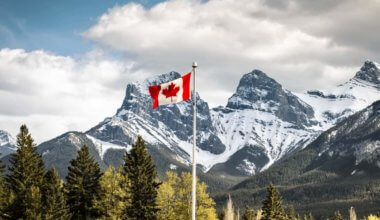
Get my best stuff sent straight to you!
Pin it on pinterest.

- Tourism Best Practices
How To Be A Better Tour Guide

As a tour guide, you are a part of the hospitality and customer service industry and we know it isn’t always easy. We’ve all heard the horror stories; demanding clients, late arrivals, unsatisfied customers, and troublemakers.
We wanted to help you out, so we’ve come up with a useful guide that will help you deal with “eccentric” customers and, overall, be a successful tour guide.
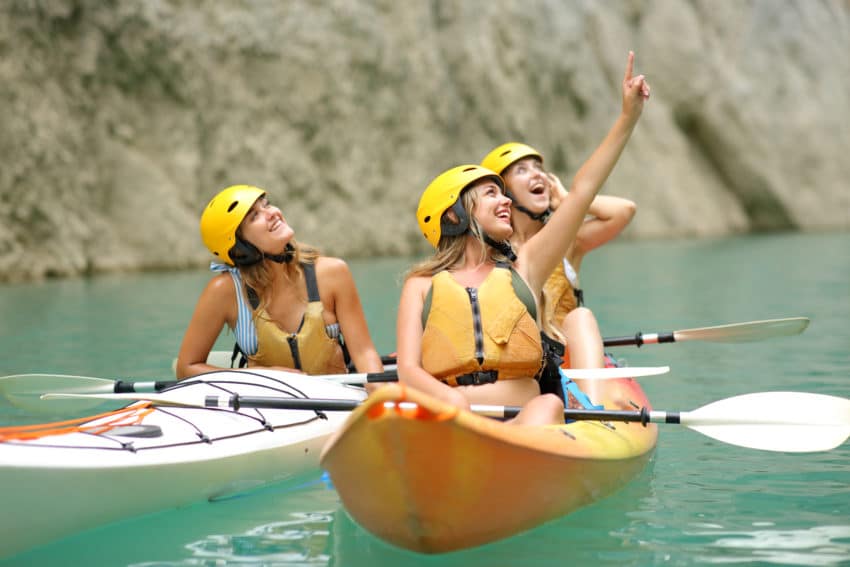
Don’t Just Be a Good Tour Guide, Be a Great Tour Guide
There are thousands of good tour guides out there, but don’t just be ordinary, be extraordinary! Learn what the difference is between a good tour guide and great tour guide.
1. Introduction
A Good Tour Guide: Introduces themselves, welcomes you to the tour, and gives a brief breakdown of the schedule.
A Great Tour Guide: Gets to know their tour group.
Action Step: Ask where your group is from, why they’re visiting, and what their interests are.
Get the group to get to know each other
Action Step: Play a game of Elimination Rock, Paper, Scissors, where you get everyone to pick someone to play against. The loser stops playing while the winner continues to play with another winner until their are only two people left. This is a great way to break the ice in a short time, without too much small talk. Maybe even think of a small prize to award the winner.
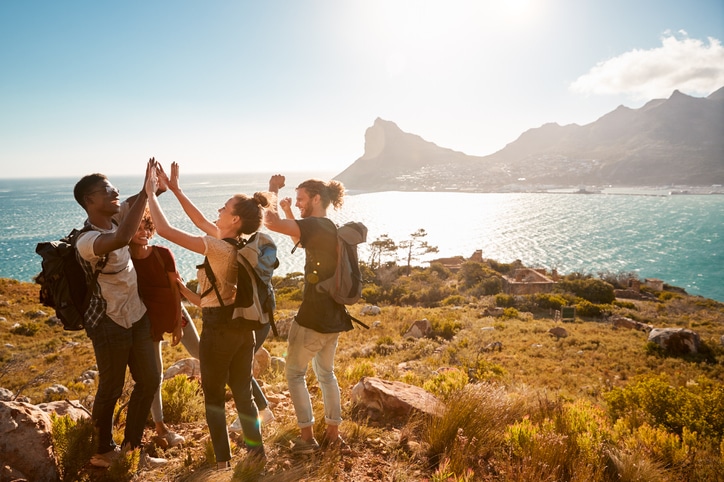
2. Sight-Seeing
A Good Tour Guide: Shows his/her group all the sights on the tour.
A Great Tour Guide: Maximizes enjoyment on the tour
Action Step: Do some research to map out when the best sights will be the least crowded.
Listens to what his/her group wants
Action Step: At the request of one of your group members, show any additional sights that they want to see.
Recommend the best places to eat, shop, and buy souvenirs
Action Step: Recommend the best places to eat shop and buy souvenirs. Don’t base your recommendation off of a commission you may receive from a store. Travellers have a good sense for when they are being pushed into a retail situation that benefits the guide. Emphasize quality and experience.
3. Time Management
A Good Tour Guide: Will make sure that you stick to the schedule and see all the sights on time.
A Great Tour Guide: Is Flexible
Action Step: Be aware of the start and end time of the tour but if your customers are enjoying a particular sight, let them stay a while.
Doesn’t Rush
Action Step: Don’t rush your customers, remind yourself that you are on their time.
4. Commentary
A Good Tour Guide: Gives a basic historical and cultural background of the sights.
A Great Tour Guide: Is a story teller
Action Step: Be passionate about your story telling – Use arm gestures, a high speaking volume, and facial expressions.
Watch this video on how to be a great story teller
Integrates personal anecdotes
Action Step: Tell your group your personal thoughts on the good, the bad, and the ugly of your city – trust me, they’ll laugh!
5. Local Knowledge
A Good Tour Guide: Is familiar with the city and/or country of the tour.
A Great Tour Guide: Is a traveller
Action Step: Include stories from your own traveling adventures.
Really understands the city and/or country they are guiding
Action Step: Highlight the uniqueness of the city and/or country compared to other cities and countries.
6.Conclusion
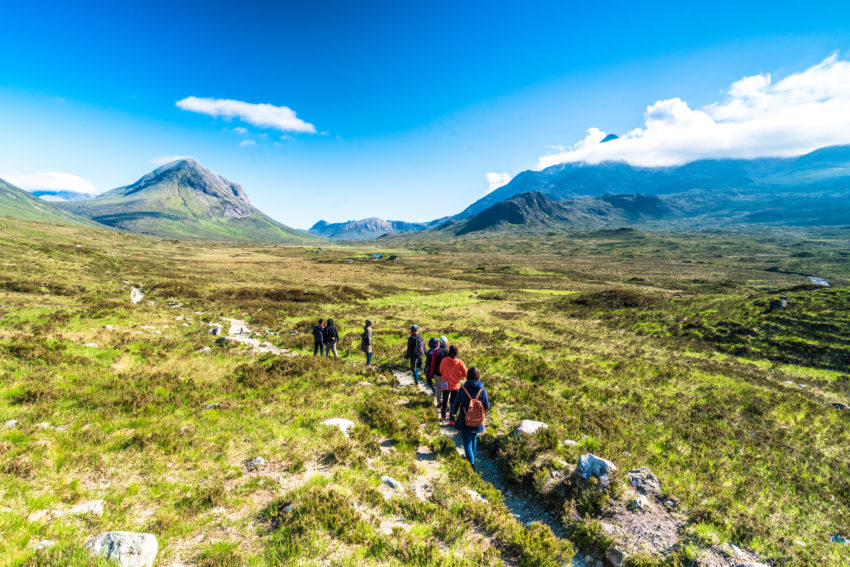
A Good Tour Guide: Says his/her closing remarks and thanks you for coming.
A Great Tour Guide: Cares about the rest of his/her group’s trip
Action Step: Reccomend other sights, restaurants, etc. that you didn’t get to show them on the tour.
So there you have it- the difference between a good tour guide and a great tour guide.
Another factor of how to be a great tour guide is how you deal with difficult customers.
How to deal with customer complaints and late guests – two very common occurrences on tours.
How To Deal With Complaints
Working as a tour guide in the hospitality industry means that the customer is always right, even if they’re wrong.
Learn how to deal with customer complaints as democratically as possible with these tips and tricks.
Run a Great Tour
Instead of putting out fires, prevent them! Right from the start, be a professional, organized, and fair tour guide. Don’t give your customers anything to complain about!
Be Clear About Your Complaint Policy
During the introduction of your tour, be clear about your complaint policy.
- That you will do your best to make everyone on the tour happy.
- That you are willing to hear what everyone has to say.
- That you will respond as quickly and fairly as possible to the complaint.
- The procedure the guest has to follow to file a complaint.
- How you and your team will respond to the complaint.

Be Professional
Since it can be difficult to deal with angry guests, train your staff ahead of time so that they are familiar with the procedure on how to deal with complaints.
Here are a few good rules of thumb to follow:
- Respond quickly: The guest will want to feel like you heard them and that you care about their complaint. Dealing with the complaint quickly also means the customer is less likely to post their complaint on a site like TripAdvisor.
- Show your guest that you are listening: Use your body language to show the guest that you are actively listening to their complaint – Nod your head, keep eye contact, and verbalize that you understand.
- Thank your guest: Thank your tour guests for raising their concerns.
- Be patient, calm and empathetic: The guest may be acting unreasonable, but that doesn’t mean that you should too – If you remain patient, calm and empathetic then they will likely mimic your approach.
- Verbalize how you will manage the complaint: Letting the guest know what your plan is to manage the complaint will make them feel satisfied. Breakdown what happens next and when.
- Involve your guest in the solution: Ask them if there is anything that they would like you to do to solve the problem.
- Update your guest on the status of their complaint: Let your guest know that you haven’t forgotten about them and where their complaint is in the filing process.
Send a follow-up email asking your guest how they are doing – If necessary, send a discount or promotional offer.
Remember that your reputation is on the line and unhappy customers will likely share their tour experience – So deal with complaints as best as you can!
Another difficult situation that can arise when running tours is late guests.
How To Deal With Late Guests
Organizing a large group of customers comes with a set of challenges – late guests being one of them.
Learn how to deal with late guests with these 5 tips and tricks!
Set Precedent
Set a time that the tour starts and make sure the tour actually starts at that time – As the tour guide you should be there about 15 minutes early to prepare anyways.
Being at the start location on time and starting on time shows your guests that you are taking your job and the tour seriously.

Set Reminders
Communicate as much as possible with your guests – Along with the tour’s itinerary, send text or email reminders 3-4 hours before the tour reminding your guests of the time and the location.
Be Strategic
Choose a strategic location for the start of the tour – Choosing a place that is difficult to find will increase the likelihood of late guests.
Send a map with a clearly marked route to the start location.
Be Prepared
Prepare a system for your late guests – Let them know where they can reach you or the tour office to find out your next location
Or send them the times and locations of all the spots on the tour so that they can meet you there.
If there is a crucial time and place that all the guests must be – for example, if the van leaves at 8:30 sharp, be clear and emphasize this point!
Remind them a few times that if they aren’t there on time, they will be left behind, but in the nicest way possible, of course.
Check out these 5 resources that can help you be an even better tour guide .

Written By | Rezgo
Rezgo helps experience providers grow their businesses with flexible online booking tools and personalized support. Focus on what you love and let us take care of the rest.
Previous Article Social Media Cheat Sheet
Next Article 11 Extra Tips to Be a Better Guide
Related Posts

Articles , Increase Online Bookings , Tourism Trends
Set-jetting, forest bathing, and hush trips: 20 innovative tourism business ideas and trends for 2023.

Articles , Increase Online Bookings , Marketing Strategies
Your marketing mix: the 7 ps of travel and tourism marketing.

Articles , Increase Online Bookings , Tourism Best Practices
Advantages and disadvantages of online travel agencies (otas), search the blog.
- All Categories
Most Popular Articles
- Set-jetting, Forest Bathing, and Hush Trips: 20 Innovative Tourism Business Ideas and Trends for 2023 128 views
- Advantages and Disadvantages of Online Travel Agencies (OTAs) 43 views
- Your Marketing Mix: the 7 Ps of Travel and Tourism Marketing 42 views
- How to Create and Promote Amazing Tour Packages 35 views
- The Ultimate Free Guide to Starting a Food Tour Business 21 views
I have read and agree to the Rezgo Privacy Policy
GET STARTED
Sign-up for a free demo.
Lorem ipsum dolor sit amet, consectetur adipiscing elit, sed do eiusmo tempor incididunt ut labore et dolore magna aliqua.
Schedule A Demo

Travelling Without a Passport
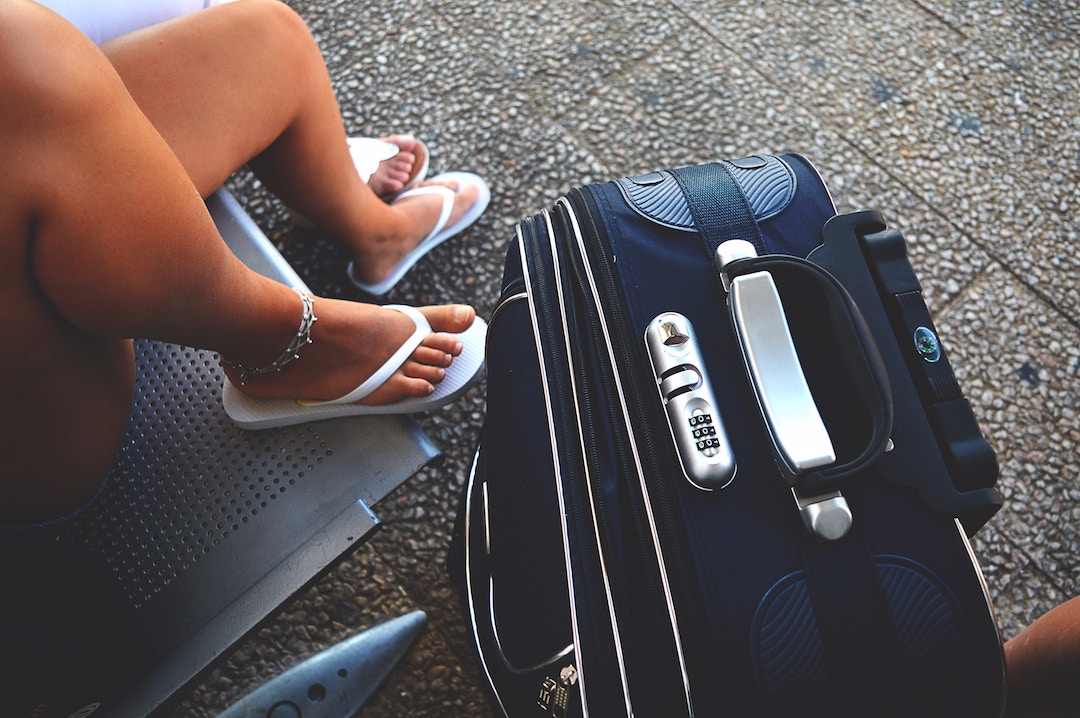
Travel Hacks, Tips and Advice: The Definitive Guide
We’ve scoured the internet and compiled the complete list of travel hacks, tips and advice that a traveller could ever desire.

Last Updated: 2 January 2017
We’ve scoured the internet and the travellers of the office to compile the complete list of travel hacks, tips and advice that a traveller could ever desire. Prepare to transform yourself into the expert you’ve always dreamed you’d be.
While we have compiled this comprehensive list for now, we hope to keep growing it over time and to inspire new hacks, tips and advice to share – if you have one we have not included, please let us know in the comments beneath!
Booking Travel Hacks
1. Once you’re ready to book part of your trip, always get travel insurance first, in case you need to cancel.
2. If you already had a travel insurance, shop around before renewing it: Compare what you’re paying with competitors’ rates, and ask your provider for a discount if they’re overcharging you.
3. Check terms and conditions to see what happens if you do cancel (or something gets cancelled on you).
4. Book the part of your trip that has the least spots available first; generally, it will be tickets to a festival or seats on a tour, then book your flights after.
5. Know which dates you want to go as early as possible; it will increase the likelihood of getting time off work, as well as being eligible for early bird specials.
6. When looking at flights, try on private/incognito browsing mode as airlines can track website visits, and if you have friends in the destination country, you can ask them to check locally as sometimes prices will vary from country to country.

7. Once you know what type of plane you’ll be on, use seatguru.com to get a layout of the plane and know which seat will suit you best. It even has information on equipment boxes under seats, seats susceptible to heat/cold, and seats with lots of bathroom traffic.
8. When selecting airline seats for two people, choose the window and aisle seats – someone likely won’t sit in between you and then you get to keep the row all to yourselves! If they do, you just ask to swap with them.
9. Alternatively you can sometimes select seats last minute from the airlines app, even once you’ve checked in.
10. A simple Google search before booking can yield some pretty impressive discounts. Start by searching “[airline name] + promo code” or checking an airline/hotels Facebook page can often reveal a 5% or 10% discount simply for liking their page or signing up for a newsletter.

11. Always check aggregation or comparison sites as well as booking directly with companies. While sometimes booking directly might cost the same as booking through the aggregation site, often the site will have discounts or rewards programs which will save you money the next time you book.

Packing Travel Hacks
12. Put clothes into packing cubes to make it easier to organise, as well as underwear and socks in shoes to save space.
13. If you do have clothes that need to be folded, use tissue paper to reduce wrinkling or roll them rather than fold.

14. Get a pill container and roll of tape from a dollar store – pill container is perfect to store jewellery, and tape always comes in handy for many, many things while traveling.
15. Ditch the blush, brightener, and lipstick and instead use an all-in-one makeup product. Will save you space and headaches, and allow more room for souvenirs!
16. Wear your heaviest clothes and shoes on the plane to save weight. Big jackets and coats can double as a pillow and a pair of flip flops can be worn once on the plane.
17. Lots of pockets means more things you can carry – you’d be surprised at how much you can fit in cargo pants and vests!
18. Always wrap your liquids in cling wrap or snap lock bags. This will protect your other belongings from any leaks
19. Use a shower cap as a small lightweight barrier for footwear, to save your clothes and bags from smelling like your shoes.
20. Glasses cases from the dollar store are perfect for carrying charger cables for electronics.
21. Pack a pillowcase. Not only can you use the spare pillowcase when you’re feeling iffy about the one in your hostel but it can also be used to separate dirty clothes from clean ones.
22. Pack some dryer sheets in your checked-luggage to keep your belongings smelling fresh.

Travel Hacks While In Transit
23. Wear something that has a big pocket, so you have easy access to your passport, plane tickets, phone and wallet.
24. Sick of being stung by airport liquid procedures? Bring a reusable water bottle and refill it after passing security instead.
25. If your flight gets cancelled or delayed and you think you’re likely to miss your connecting flight, wait in line at the customer service counter and call the airline at the same time. This way you will be looked after as soon as possible by whoever you reach first.
26. If you do use travel containers, refill them each time so you don’t have to keep buying them.
27. Wait to use an ATM to withdraw or convert money as they always dispense local currency. Currency exchanges desks in the airport generally have bad conversion rates, as well as extra fees.

28. On long flights wear a night moisturizer – it will keep you hydrated on the dry plane.
29. If you have trouble sleeping on planes, try taking your own relaxing drink; make up a thermos with a slice of lemon, honey and your own tea bag, and ask the attendant to fill it with hot water.
30. Large scarves have multiple uses while on the road. They can be a blanket if you’re cold, rolled up as a pillow, or used to block light out if you’re trying to rest.
31. An oversized hoodie will keep you warm and act as an eye mask for when you’re trying to sleep.
32. Leggings are great for traveling. They’ll keep you warm and can be worn under dresses and skirts.
33. Always pack a spare pair of underwear in your carry-on in case your luggage gets lost.
34. If you need the bathroom when you land, go to the second one as it will be far less busy.
35. If you have a stopover on a long haul flight, see if there is an executive lounge with a shower you can visit. You will never regret asking.
36. You can access executive lounges through frequent flyer programs, certain credit cards, or even just by paying a once off access fee
Travel Hacks While Traveling
37. Arrive at the hotel and realize you’ve forgotten your charger? Ask at receptionist, they almost always will have a box full that have been left by other travellers.
38. To prevent damage and frustration, wrap headphones around a binder clip.
39. Tic Tacs will help keep your breath fresh, and the empty container is the perfect size for hair clips.
40. Stop lint and cotton getting caught in your shaver head with a binder clip.
41. Buy in bulk: Make a list of those things you need on a constant basis: toilet paper, your preferred deodorant, staples for your home office.
42. Be a relentless bargain-shopper: Try to buy at high-sale times whenever possible. Think bathing suits in December and skis in July.
43. If traveling for business, use belts to line collars to keep them looking sharp.
44. Travel can be tough on electronics – use a spring from a pen to prevent them from bending and breaking.
45. To stop post holidays confusion of where different photos are from, you can use Instagram’s location settings to geotag each of your photos. If you’re artistic, you can also take a couple of sticks of chalk with you, and make your own handwritten sign on the ground whenever you enter a new destination.
46. If it’s very hot and you are in a major city with no beach around, the hotels and hostels will often have pools. Simply taking your swimwear in a bag, getting changed in the bathroom and ordering a drink poolside, will often get you access without a question or blink from the staff.
47. City tourist cards can be a great way to save money in cities with lots of attractions (like Paris). It can often save money and time from buying entrance to each attraction individually and typically include access to public transit.
48. The emergency phone number from mobile phones is 112 in many countries, and is a free call.
49. If you often forget the name of your hotel, grab a business card on the way out the front door. It’s free and will have the name and address on it to show taxi drivers or locals if directions are needed.
50. Don’t get too caught up with trying to visit all the recommended places in a guidebook- try asking your tour guide or maybe the hotel reception for some hidden gems (or read this article ).
Travel Technology Hacks
51. Save your Google Maps for offline access by viewing the area you want to save, then typing “OK maps” into the search bar.
52. Free WiFi passwords can usually be found by checking comments on FourSquare.
53. Scan your passport, identification card, and itinerary and email them to yourself. This will give you an easily accessible second copy in case of loss or theft.
54. Take a cheap unlocked GSM phone with you as your “travel phone” – you can buy SIM cards and use it to make local calls when needed. Learn more about saving money without sacrificing your data by reading this .
55. Free internet can usually be found at the following: food outlets (McDonalds, KFC, restaurants, cafes, etc – check receipts for the code), any electronics or department stores (Apple stores etc), Executive/First Class/Business Class lounges at airports (even without access, you can sit nearby and access it easily)
56. Take a small 3 or 4 port power board, and just one travel adapter. This way you will have access to many power points to charge your tech goodies on.
57. For those times when there is a ‘power emergency,’ power banks will often provide enough to charge your phone at least once.

58. Charge your phone or camera anywhere that there is a USB port. This can include the electronics or department stores (the same place you are using the free internet), TVs in hotel rooms, even TVs in McDonalds and other fast food places. Make sure to put your phone on airplane mode for quicker charging.
59. The MetrO App is a free download on the iTunes store which allows your to find your way through the maze of public transportation systems in more than 400 cities worldwide.
60. You’re not a real traveller until you have slept in an airport. The people at http://www.sleepinginairports.net/ rate airports around the globe for sleep comfort as well as the services and amenities on offer.
Travel Hacks for Saving Money Before You Leave
61. Set yourself a challenge for saving money – only spending $4 per day on food, not catching taxis or ubers, etc
62. Make a grocery list, and stick to it: Before heading out to the store, spend 5 minutes making a shopping list, and try not to let anything jump into your trolley if it’s not on that list!
63. Every time you go to buy a beer/takeaway meal/glass of wine, think to yourself “would I rather have it here, or in Rome?”

64. Set up a separate bank account specifically saving for your travels. Read more about how to do that here .
65. Attack your credit card debt with a vengeance: Stop paying absurdly high amounts of money toward credit card interest.
66. Start a piggy bank to put all your loose change in at the end of the week.
67. Sell anything you don’t need on ebay/Craigslist/gumtree – a big clean out might be unexpectedly profitable!
68. If traveling for an extended period of time, use a dedicated foreign exchange service to get better rates than your bank. ( Check out our case study on this here )
69. For USA citizens, TSA Pre-check for domestic flights or the GOES (Global Overseas Entry System) might be costly, but both get you through the Security lines much quicker and could save you money in the long run.
Have you got a great travel hack, tip or advice to add? Let us know in the comments!

Sebastian P.
From his hometown of Sydney, Australia, Sebastian has turned travel into a profession. Starting out as a tour guide in Sydney, he then moved to Europe to lead tours across the continent, before returning home where he continues inspiring others to find their own adventures.
Related Articles
- Tips & Tricks
Best Destinations for People with Disabilities
The world and its wonders should be available to one and...
- Destination Guide
Where to See the Northern Lights in February
If you hope to see the Northern Lights in February, you’re...
- North America
Cheap Places to Travel in the US
From California’s shimmering coast and Colorado’s snow-dusted peaks to Louisiana’s steamy...

The Best Hangover Cures From Around The World
Get unlimited access to the world's best travel stories. subscribe now., privacy overview.
2024 Disney World Planning Guide

Our Walt Disney World vacation planning guide offers tips & tricks for 2024 on how to avoid crowds, save money & time, with info on Genie+ & Lightning Lanes, best rides, restaurant reviews, and itineraries for Magic Kingdom, EPCOT, Animal Kingdom & Hollywood Studios. (Updated February 1, 2024. )
The latest update comes as Walt Disney World is in the midst of more changes to restore normalcy, making the guest experience closer to what it was like in ~2019. With this, theme park reservations have mostly been eliminated, return of the Disney Dining Plan , and resumption of unlimited all-day Park Hopping . Next up is pre-arrival Lightning Lane ride reservations , a system that should closely resemble FastPass+ (but paid).
Beyond the rolling back of temporary changes implemented during the phased reopening and pent-up demand period, a ton is happening and changing at Walt Disney World. There are new attractions, nighttime spectaculars, and other additions on the horizon. We visit the parks regularly, reporting on everything as it happens–if you want to receive updates when discounts are released, new things are announced, etc., sign up to receive our FREE Walt Disney World Email Newsletter .
There are a few important things you need to know if you’re visiting Walt Disney World soon. First, the big new ride is TRON Lightcycle Run in Magic Kingdom. This attraction is very popular and can be difficult to experience due to not having a standby line. Improve your chances for success in scoring virtual queue spots by reading our TRON Lightcycle Run Virtual Queue Strategy Guide & FAQ .
Guardians of the Galaxy: Cosmic Rewind at EPCOT, which was the previous big addition, also does not have a standby line. At least, for now. Walt Disney World has been setting up overflow queue and seems poised to ditch the virtual queue for that once the off-season rolls around.
Second, there’s the paid Genie+ service that offers Lightning Lane line skipping service (free FastPass+ was retired a few years ago). This can be purchased in the My Disney Experience app for variable, date-based prices that now differ for each park (Magic Kingdom and Park Hopping are most expensive, costing up to $39 per person, per day plus tax).
Genie can be confusing, but we’ve used and tested Genie+ and Lightning Lanes a ton . Everything you NEED to know, including ride priorities, where it’s NOT necessary to buy Genie+ or Lightning Lanes, and much more is covered in our Guide to Genie+ and Lightning Lanes at Walt Disney World .
If you’re looking for ways to avoid waiting in long lines without spending extra on Lightning Lanes, see our Best Time-Saving Strategies for Walt Disney World , which covers the best & worst ways to do that in each park–and is accurate for the entirety of 2024. That’s the result of extensive testing, and the optimal methods for outsmarting the crowds aren’t always intuitive. For 3 of the 4 parks, you’re better off using a ‘free’ strategy rather than paying extra for Genie+ and Lightning Lanes!

Winter is also typically ‘refurbishment season’ at Walt Disney World. For a look at what’ll be temporarily unavailable during your trip, see the 2024 Walt Disney World Refurbishment & Closure Calendar , which we update regularly with return and downtime dates. There are some big closures right now, including Rock ‘n’ Roller Coaster.
The other big closure is Splash Mountain, which permanently closed about a year ago. The good news is that this is also for 2024’s big new attraction: Tiana’s Bayou Adventure . That’s currently scheduled to open sometime this year–the timeline could move forward to Summer 2024…or be delayed until early 2025!
Then there’s the colossal EPCOT overhaul, which is now mostly finished now that new Luminous: The Symphony of Us nighttime spectacular and World Celebration Gardens have debuted. The only thing left is the CommuniCore Hall event space, which will likely debut before Summer 2024.
There’s a lot more on the horizon than just those things–here’s everything exciting being built: What’s New & Coming to Walt Disney World in 2024 & Beyond .

With those updates out of the way, let’s tell you about ourselves and why this guide is useful to your trip planning. We are obviously big Disney fans, but with this guide, we share our objective and unbiased tips. This covers the good and the bad, and the hard realities of planning Walt Disney World trip. We don’t sugarcoat everything or feel the need to put a positive spin on things. A lot about Disney is great, but that’s plenty that’s overpriced and not-so-great. If blunt, honest advice is not for you, there are many other sites that are all-positive.
With hundreds of trips dating back to the 1980s when we were kids, we’ve learned a lot about all things Disney. That now comes full circle as we start taking our daughter to Walt Disney World! We visit every month to see what has changed, taste-test new menu items, analyze crowds, offer recommendations for things you should do on vacation, share updates on construction, and much more.
This guide distills the key things we know about Walt Disney World into something easy to absorb and less overwhelming. Think of this planning guide as WDW101, with everything organized into the most important aspects of planning. The reality is that Walt Disney World is one of the most complicated vacation destinations on earth, and having a smooth and good trip requires doing your homework. With that said, we promise that taking the time to learn about Walt Disney World will be worth it, so let’s get started…
1A. Best Times to Visit for Avoiding Crowds

“When is the best time to visit Walt Disney World?” This is often the first question readers ask, and it’s not an easy one to answer because it’s subjective. What makes an experience the “best” differs from person to person. With that said, in helping first-timers plan over the course of the last decade-plus, there are usually three distinct components to this: crowds, cost & fun.
The first two variables are the overriding factors and, thankfully, those are objective. If you’re primarily concerned with avoiding long lines and high wait times, consult our 2024 Walt Disney World Crowd Calendars . That takes into account Orlando area school schedules, conventions, youth sporting events, park hours, special events, and more to provide you with specific dates that are the least and most crowded.
While that’s all about crowds (and can be overwhelming), we also have something more holistic: our list of the 10 Best and 10 Worst Weeks to Visit Walt Disney World in 2024 & 2025 . As the title suggests, that identifies the ‘red flag’ dates to avoid, as well as the ideal times to visit. It’s really more than just 10 weeks, as a number of the good and bad windows are far longer than a single week.
For example, pretty much the entirety of August and September are great from a crowds perspective, but we zero in on a single week that’s the best-balanced (from our perspective) as it combines low crowds, seasonal events, weather, and other factors. Same idea for a number of other dates throughout the year.
Rather than our objective crowd calendars, those are our subjective picks for when to visit. In addition to wait times, those rankings take other things into account: seasonal offerings like Christmas & Halloween, weather, new attractions, and more. If you find the crowd calendars intimidating, go with the Best & Worst Months post instead.
The good news is that, as a general rule, lower prices and crowds coincide with one another. Meaning that if you book your trip around the cheapest dates, you’re more likely to also have lower crowds. Prices are higher and discounts are weaker when crowds are higher, meaning you get hit with a double-whammy if visiting during these times of the year. (Spoiler: the highest prices and crowds both occur when school is out of session.)
1B. Best Times to Visit for Saving Money

The second component is cost. This one is especially significant now, as prices are up across the board. If you’re a first time visitor or it’s been a few years since your last trip, you might be in store for sticker shock. We take a look at this topic in How Much Does a Walt Disney World Vacation Cost? with sample pricing for multiple ‘trip tiers,’ from budget to luxury.
However, it’s not as straightforward as that. Some people don’t realize it, but prices vary significantly based upon when you’re visiting. If you visit for New Year’s Eve, you could end up spending close to double what it costs to visit a few months earlier, in September. Cutting to the chase, here are the Cheapest Times to Go to Walt Disney World .
The good news is that there’s considerable overlap between the cheapest times to visit and the least-crowded times. Visiting during the least-expensive and least-crowded times is entirely possible, and those goals align pretty well. Conversely, the most expensive times are usually also the most expensive.
Intuitively, this should make sense. When demand is highest, prices are highest. Like most other businesses, Walt Disney World charges what the market will bear, raising prices when able and discounting in order to incentivize visits when attendance and hotel occupancy are lower.
To that point, the other good news is that deals are starting to return to Walt Disney World after a couple years of very strong pent-up demand! See All Current Walt Disney World Discounts for a full rundown of special offers through Spring 2024. There are a TON of discounts available right now, some of which offer up to 40% off hotels!
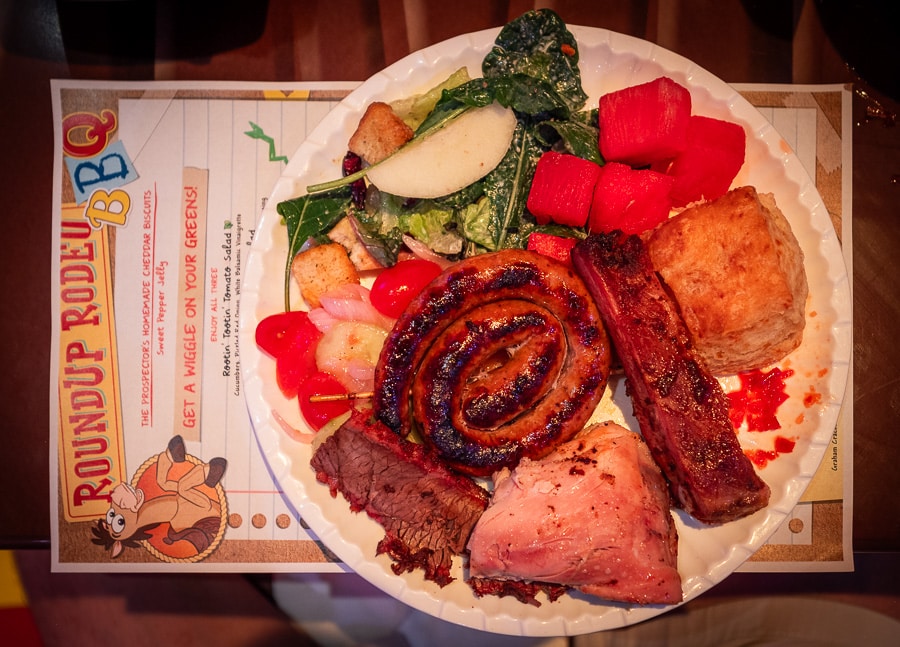
If you want to save even more money and do WDW as cheaply as possible, we have the 14 Best Tips to Save Money at Walt Disney World in 2024 . Those tips cover a lot of excellent ideas, such as buying discount Disney gift cards or having Groceries Delivered to Your Walt Disney World Hotel Room .
Those are just a handful of ways to save a ton of money on a trip to WDW! It also covers several options for the biggest expense of your trip–lodging. Among other things, you can stay at Walt Disney World’s best resorts for a fraction of full price by renting DVC points .
The idea behind all of these money-saving tips is not cutting corners and compromising on the quality of your vacation. To the contrary, we aim to “cut the fat” from your budget and recommend ways to save while also improving efficiency. Taking grocery delivery as an example–we do not recommend cooking dinner in your room or packing picnic lunches. Instead, we advice ordering nutritious breakfasts (the weakest meal at Walt Disney World restaurants) to have quickly have in your room or on-the-go each morning to save money and time .
1C. Best Times to Visit for Having Fun

Now we’re getting into the much more subjective area of determining when to visit. What makes a time of year more or less fun? Will you enjoy the parks more or less during certain timeframes? That’s really difficult to say. As a general matter, our mantra is this: “A rainy day at Walt Disney World is better than a sunny day at home.”
This is to say that you can have a great Walt Disney World vacation no matter what time of year you visit. The smile and laughter of your child hugging Mickey Mouse for the first time; the delicious taste of a Dole Whip or Citrus Swirl; the sight and sound of fireworks exploding over Cinderella Castle at the end of a long and satisfying day at Magic Kingdom. Absolutely none of that is seasonal. Those joys are possible 365 days of the year at Walt Disney World, and your trip will be made up of moments big and small exactly like those that happen daily.
However, it’s also fair to say that a sunny day is better than a rainy day at Walt Disney World. Most people probably are more comfortable during mild and temperate days than oppressive heat and humidity. Seasonal events can likewise add a lot to the baseline experience, taking a trip from “memorably magical” to “magnificently magical” on our highly scientific scale of magicalness.
Hopefully you get the point here–that every day at Walt Disney World has the potential to be great, but also, that greatness has its own sliding scale, with weather, seasonal enhancements, and more cranking things up to the next level of magicalness.

The holiday season is our favorite time at Walt Disney World. It’s not even a close call. If we could only visit Walt Disney World one month of the year for the rest of our lives, we’d pick November or December. (Super-specifically, we’d pick the week after Thanksgiving that straddles the two months– that’s our favorite week to go! ) If you’re thinking of a holiday vacation, we’d implore you to start by reading our Ultimate Guide to Christmas at Walt Disney World .
Every park, resort, and Disney Springs gets into the spirit of the season. The last few holiday seasons have been scaled back, first as the parks reopened and then for the 50th Anniversary. With that now over, things are almost 100% normal for Christmas, minus the Cinderella Castle Dream Lights.
Last Christmas, there were two hard ticket events: Mickey’s Very Merry Christmas Party (MVMCP) at Magic Kingdom and the brand-new Disney Jollywood Nights at Hollywood Studios. MVMCP will definitely be back for Christmas 2024, but it remains to be seen whether Jollywood Nights–which received a mixed reception in its inaugural year–comes back for a second season.

There are other seasonal events throughout the year, starting with the EPCOT Festival of the Arts in January and February. Following that is the EPCOT Flower & Garden Festival from March through late May. Notably, Flower & Garden Festival has been shortened by over a month for 2024. Our expectation is that Food & Wine Festival also starts later and EPCOT debuts a new summer festival–but that’s just a guess!
It’s also possible that Magic Kingdom will once again do a special event in Summer 2024. In fact, we’d expect this to occur, with new entertainment debuting and smaller scale additions. Walt Disney World’s big new attraction (Tiana’s Bayou Adventure) won’t be ready in time for Memorial Day, so they’ll need something else to market in the first half of 2024.
Even if a summer-time event doesn’t happen, Pride is celebrated in June, and there are other smaller-scale events spread across the calendar. After Hours parties will once again occur in Summer 2024, too.
The special events kick into high gear in August, which will kick off the 5-month long ‘party season’ at Magic Kingdom. That starts with Halloween time in Magic Kingdom, from August through the 1st of November. Our Mickey’s Not So Scary Halloween Party Guide offers info & tips for Magic Kingdom’s fan-favorite Halloween-themed event.
While it has nothing to do with Halloween, another staple of fall is EPCOT’s annual culinary event. Read our Guide to the EPCOT International Food & Wine Festival to prepare for that park’s colossal culinary celebration. This just scratches the surface. You can see everything that happens throughout the year in our Calendar of Seasonal Events at Walt Disney World .
2. How Long to Visit

How long you should stay at Walt Disney World depends largely upon the type of trip it is. If you’re not much of a Disney fan but are taking your kids on a “once in a lifetime” rite of passage trip, we recommend a Walt Disney World vacation of at least 6 or 7 days. The exact length will still vary a bit depending upon how much vacation time you have and if you plan on visiting non-Disney theme parks or destinations.
In addition to visiting Disney’s theme parks, you’ll also probably want to build a day into your itinerary for relaxation, and this is good to plug into the middle of your trip so you don’t get worn out by the theme parks. The other consideration for planning trips to Walt Disney World might be how much time to spend doing other things.
You might want to do Orlando-area theme parks like Universal, SeaWorld, or Busch Gardens. We recommend at least a couple of days at Universal Studios Florida and Islands of Adventure. Use our Universal Orlando Resort Trip Planning Guide for strategy. The Wizarding World of Harry Potter is absolutely mind-blowing, even if you’re not a fan of the books. The new Jurassic World VelociCoaster is the best roller coaster in all of Orlando–and that’s just one of several excellent recent additions.
We also have a post titled Walt Disney World vs. Universal Orlando that covers a lot of the pros and cons of visiting Universal. If you want to broaden your horizons and do something beyond Central Florida’s world-class theme parks, check out our 50 Things to Do in Orlando, Florida (Outside Disney’s Parks) . That covers beaches, manatee-watching, outlet malls, and much more.
3. Booking Vacation Packages
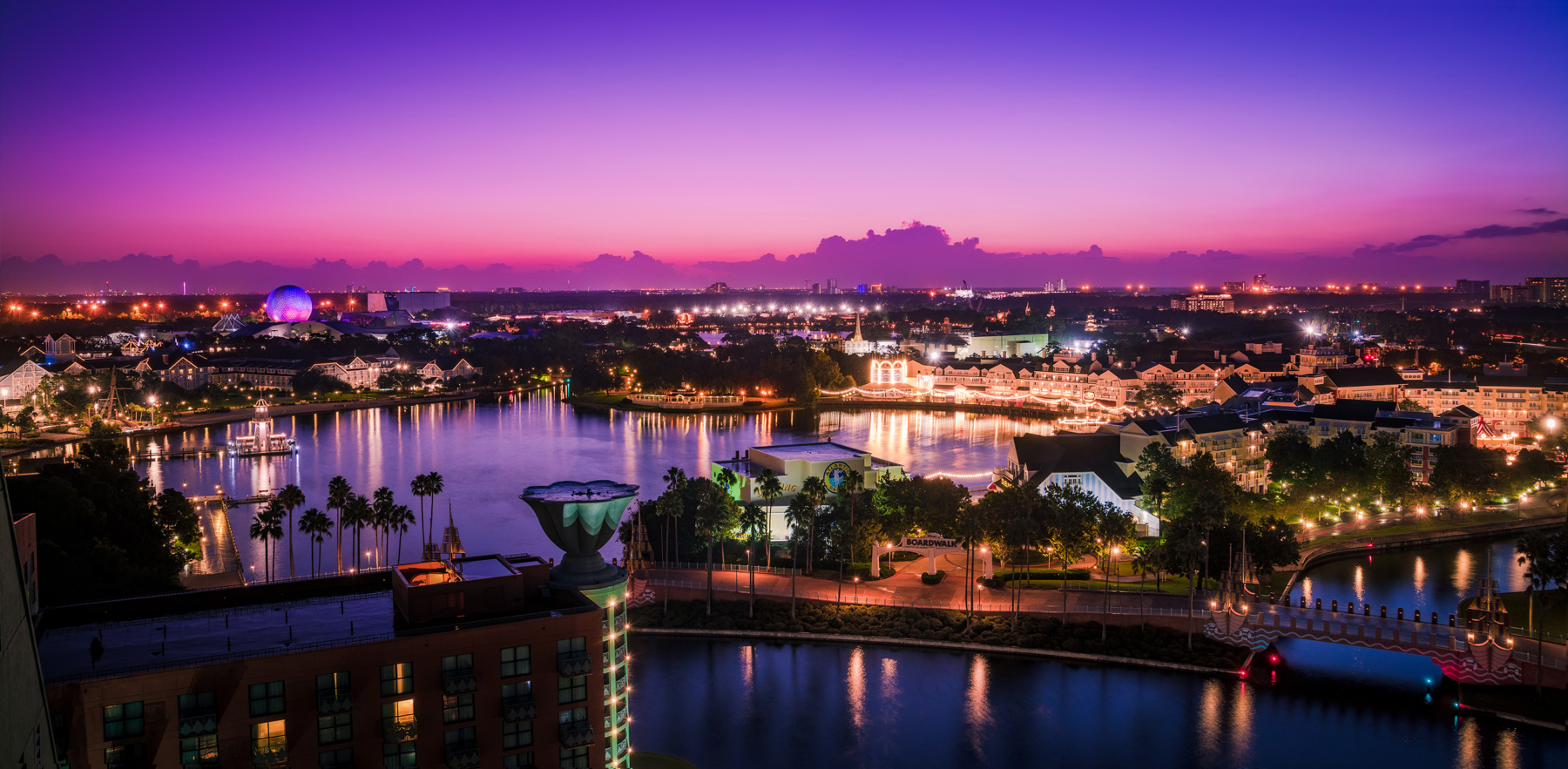
Vacations booked via DisneyWorld.com cover some combination of hotel, park tickets, and dining. Sometimes these packages offer excellent savings off rack rates, sometimes they’re merely full price elements of the trip bundled together. If you’re looking further into the future, 2024 Walt Disney World Vacation Packages are now available! (For those already wanting to plan 2025 WDW vacations, you’ll need to wait until late June or early July 2024, unfortunately.)
If you’re already overwhelmed, you might want to consider using a travel agent. If you go this route, look for one who primarily or exclusively does Disney-related bookings. As you can probably gather already, planning a Walt Disney World vacation is incredibly complex. If a travel agent doesn’t specialize in Disney, they probably won’t know the many nuances of Walt Disney World vacations. (For this reason, we don’t recommend AAA or Costco, even though some of their agents have Disney knowledge.)
Most travel agents specializing in Disney are “no fee” agencies, meaning that it costs you no more to book through them than it does to book through Disney (they get commission from Disney). If you are unsure of which package might be best for you–or need personalized help with any aspect of your trip–we recommend contacting a no fee “Authorized Disney Vacation Planner” ( here’s why we recommend one ) to get a quote and to help you plan. Request a quote from our recommended Authorized Disney Vacation Planner here .
4. Park Tickets

If you opt to book things yourself and without a vacation package, we recommend buying your tickets from an authorized third party ticket seller to save money. Read our Tips for Buying Discount Walt Disney World Tickets post for everything you need to know about choosing the right tickets and saving money on them.
Normally, prices increase in February and/or October. They increased twice two years ago, with the second occurring later than usual in December. Last year, the only admission costs that increased were on Annual Passes, which raises a question about whether tickets will increase again in December, or if Walt Disney World is waiting until February 2024. Either way, it’s not a bad idea to buy now to lock-in current prices no matter when you’re visiting between now and December 31, 2024.
If all you want to know is where to safely buy the cheapest, legitimate Walt Disney World multi-day tickets from an authorized reseller click here to buy via Get Away Today , our recommended & Disney-authorized ticket seller.
Disney’s mantra is “the longer you play, the less you pay per day.” It’s corny but true. Single-day Walt Disney World tickets are expensive , but multi-day tickets are much cheaper per day. The cost of additional days on a ticket substantially decreases with each day you add after 3 days. In other words, longer trips are not proportionately more expensive than shorter ones.
This is just one of the many tips we cover in our post about saving money on Walt Disney World park tickets . Whatever you do, don’t wait to buy your tickets at the front gates of the parks or on eBay…they won’t work!
5. Where to Stay

One of the very best posts on this blog is our Walt Disney World Hotel Reviews page . We have stayed at every Disney hotel, plus many off-site ones. That page offers links to each of our hotel reviews, room photos, thoughts on the amenities, pros & cons, and more.
When deciding whether to pay the premium prices that Disney-owned hotels charge, one important consideration for many will be on-site perks. Unfortunately, there aren’t many anymore–basically just some extended hours (see our Guide to Early Entry at Walt Disney World ), location, theme, and more convenient transportation. Since reopening, many benefits have been eliminated–either permanently or temporarily. Read about this in Is Walt Disney World’s On-Site Advantage Disappearing or Reappearing ?
When pricing out Walt Disney World hotels, you’re bound to have some sticker shock. Prices have gone up considerably in the last few years, and discounts are not nearly as abundant as they once were. If your budget is tight but you still want on-site luxury, consider getting a quote from Disney Vacation Club point rental company ( click here to book with the cheapest point DVC rental company ).
For more info about renting points, you might want to read our Guide to Renting Disney Vacation Club Points article. This is a great way to save money on nicer accommodations than you otherwise might be able to afford.

If you’re going to stay on-site at Walt Disney World, the three main tiers are Value, Moderate, and Deluxe, which are exactly what their names sound like they are. There’s also a Deluxe Villa tier, which is basically Disney-speak for “timeshare room.” Looking for the best hotel in each tier? Check out the following posts ranking the various Disney hotels:
- Value Resort Hotel Rankings
- Moderate Resort Hotel Rankings
- Deluxe Resort Hotel Rankings
- Deluxe Villa (Disney Vacation Club) Resort Rankings
Debating whether to stay off-site to save money or on-site at Walt Disney World for convenience and to be immersed in the magic? We have an Off-Site vs. On-Site Walt Disney World Hotels article that goes into great depth about the pros and cons of both options.
If you’re also visiting other theme parks in Central Florida, one alternative is to stay off-site. Our Universal Orlando Hotel Rankings & Reviews covers the pros & cons of those resorts, many of which we love for their locations, theme, on-site perks, and value for money. Additionally, refer to Universal Orlando v. Walt Disney World Resorts for a comparison between Disney’s and Universal’s hotels to see what each does better.
6. What to Pack
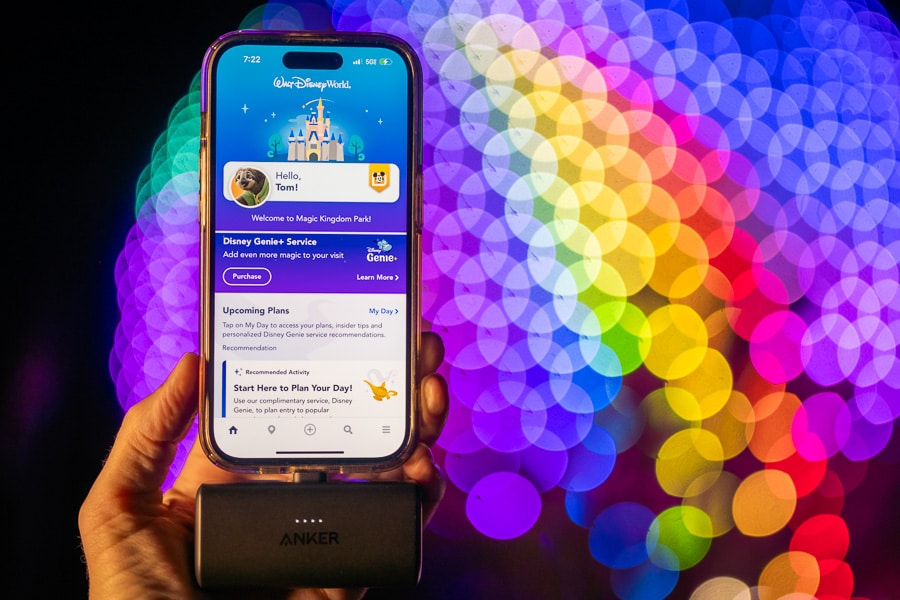
It might sound hard to believe, but packing for Walt Disney World offers ways to save money and improve your experience. There are some wrinkles to Walt Disney World that make packing a bit different, and by bringing certain “clever” (we think) items in your luggage, you will improve your experience. We go over the best stuff in our Walt Disney World Unique Packing List .
Two of our favorite examples from that list are Frogg Toggs Chilly Pads and this Compact External Charger . Seriously, you’ll wonder how you ever travelled without these (and many other) items on our list!
One of the most important things to pack for Walt Disney World is comfortable shoes. This can trip people up, as you probably walk far, far less at home than you will at Walt Disney World. Suffice to say, what’s best for logging tens of thousands of steps could differ from your day-to-day footwear. See our picks for the Best Shoes to Wear at Walt Disney World for guidance–and be sure to plan ahead, breaking in your shoes before your trip!
Comfort is also key when planning your clothes for Walt Disney World–and weather can make that challenging. If you’re going in the colder months, check out our Packing for Disney in Winter post. For summer months, read Tips for Beating the Summer Heat at Disney .
7. Itineraries & Attraction Advice

Having an itinerary is a big deal, even for some frequent Walt Disney World guests. Some visitors create binders, spreadsheets, and schedule every step of their day. People get serious and obsessive about this. We are not those people. Planning is important, but going to those lengths is unnecessarily stressful and creates unrealistic and rigid plans. The best laid plans often go awry, and when that inevitably happens, it can be disappointing if you’ve over-planned.
With that said, we also recommend first-time visitors do not “wing it” for your daily itinerary . You don’t need to plan every movement so that there’s no spontaneity in your trip, just make sure you have at least a loose plan of what you’re going to do. As with most things in life, balance and moderation are key.
We have the following flexible step by step plans for each park that cover our perfect days using standby-only:
- 1-Day Magic Kingdom Park Itinerary
- 2-Day Magic Kingdom Park Itinerary
- 1-Day Epcot Itinerary Park Itinerary
- 1-Day Animal Kingdom Park Itinerary
- 1-Day Hollywood Studios Park Itinerary
For step-by-step single day itinerary using Genie+ and Lightning Lanes, see these itineraries:
- 1-Day at Magic Kingdom with Genie+ and Lightning Lanes
- 1-Day at Disney’s Hollywood Studios with Genie+ and Lightning Lanes
- 1-Day at Epcot with Genie+ and Lightning Lanes
- 1-Day at Animal Kingdom with Genie+ and Lightning Lanes
Additionally, we have itineraries for Universal Orlando offering the same type of step by step advice:
- 1-Day Universal Studios Florida Itinerary
- 1-Day Islands of Adventure Itinerary
- 1-Day Universal Park Hopping Itinerary ( both Islands of Adventure & Universal Studios Florida )

If you’d prefer to create your own itinerary, we recommend reading our Disney Parks Ride Guides and getting a rough idea of which attractions you want to do:
- Magic Kingdom Park & Attraction Guide
- Epcot Park & Attraction Guide
- Disney’s Hollywood Studios Park & Attraction Guide
- Disney’s Animal Kingdom Park & Attraction Guide
We also have guides for the Walt Disney World water parks and Disney Springs:
- Blizzard Beach Water Park Guide
- Typhoon Lagoon Water Park Guide
- Disney Springs Shopping & Entertainment District Guide
With that said, we’d strongly recommend using our pre-made Walt Disney World Park Itineraries . Those step by step guides are maximized for efficiency, and will save far more time than ones you put together yourself, or just winging it. These are good, flexible itineraries that offers attractions, dining, and other things to enjoy without going crazy with mapping out every bathroom stop of your day.

Those with small children should also know that some Walt Disney World rides have height restrictions, requiring kids be a certain number of inches tall (usually 38 to 44″) in order to experience. Measuring sticks are outside attractions with a requirement, and kids who do not meet the minimum height are not allowed to enter the line. There are no age requirements for any attractions. See Height Requirements at Walt Disney World for a comprehensive list, updated with Guardians of the Galaxy: Cosmic Rewind.
Attractions that have height requirements also offer Rider Switch (also known as child swap, baby switch, rider swap, or parent swap). This is Walt Disney World’s system that allows parents with small children to take turns experiencing thrill rides and other attractions with height requirements via Lightning Lanes. See our Guide to Rider Switch at Walt Disney World for everything you need to know about this service. If eligible, it can save you a ton of time.
8. Where to Eat

A lot of the posts on this blog detail dining at Walt Disney World, which is a surprisingly complex (and fun!) topic. The most important thing for first-timers to know is that the tired stereotype that Disney dining is all burgers, hot dogs, and other fast food is not even remotely true. Disney has a lot of wonderful dining options that can be an experience in themselves.
To figure out where to eat, consult our Walt Disney World Restaurant Reviews page. That page has reviews of 75+ restaurants at Walt Disney World, plus other resources like our Magic Kingdom Counter Service Restaurant Rankings , and lots of other specific topics. Another great post with random quick-tips is our 101 Walt Disney World Dining Tips post.
Good dining experiences can make a trip, so if you only read more on one topic in this guide, make it dining. We know a number of people who have had their opinions of Walt Disney World changed for the better simply because they “discovered” the right places to eat.

If you’re starting the planning process far in advance, you might want to subscribe to our free newsletter for updates . We also provide subscribers with news from the parks, and have given a heads up on Free Dining and ticket price increases before they have been officially announced. This makes the newsletter especially handy for scoring discounts and being in the know as to what’s going on before your trip.
It’s also worth noting that if you’re trying to do “Disney on a Dime,” one of the easiest ways to save money is to not eat at Walt Disney World restaurants. Dining at Disney is expensive, and unlike park tickets, it’s not mandatory . You can save a lot of money by eating off-site, or better yet, getting groceries and preparing your own meals. We have a comprehensive Tips for Buying Groceries at Walt Disney World post that covers grocery delivery, local stores, and much more.
Even if you don’t want to make your own meals, grocery delivery is great for getting fruit and other small grab and go snacks, both of which are really over-priced at Walt Disney World. It’s also excellent for beer–for less than the cost of a single beer in the parks, you can have a 6-pack delivered to your hotel room!
9. Transportation

Walt Disney World transportation can be hit or miss, and can take a lot of time. For the most efficient transit options, read our Time-Saving Walt Disney World Transportation Tips post. This covers shortcuts, when to use buses v. monorail v. boats v. your feet, and more!
One of the other big considerations is whether you want to stay at a Walt Disney World hotel that offers a unique form of transportation, such as the monorails to Magic Kingdom or EPCOT, or the boats, walking paths, or Skyliner to Disney’s Hollywood Studios and EPCOT. These can be a huge time-saver.
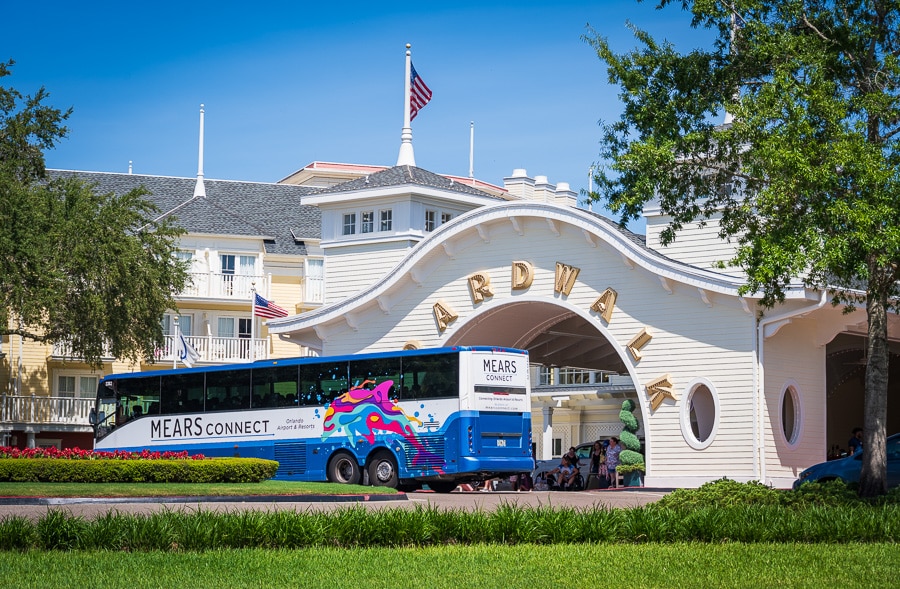
Disney’s Magical Express has now ended, and following a merger of two competitors, it’s indirect replacement is essentially Mears Connect Driven by Sunshine. This does cost money, but otherwise it’s roughly analogous to Disney’s Magical Express–it’s even operated by the same vendor that ran Disney’s Magical Express (same buses and everything, just no Disney branding!). For a broad overview of alternatives, see our Airport Transportation Guide to Walt Disney World .
An alternative to a rental car is Lyft (or the Minnie Van service powered by Lyft) or Uber. For the basics on using these ride-sharing services, read our Tips for Using Lyft or Uber at Walt Disney World post. This post also shares the easiest way to get to Universal Orlando Resort (in case you want to see the Wizarding World of Harry Potter, too)
10. What Else to Do

Your imagination is really the limit here. Most first-time visitors only know about the theme parks, Disney Springs, and the water parks. That’s just the surface of what Walt Disney World has to offer. There are tours, golf, fishing, nightlife, shopping, fireworks cruises, babysitting, spas, and much more. An exhaustive list would ultimately be longer than the rest of this already long blog post!
Most of our favorite things are couples or adult-oriented, which you can read about on our Walt Disney World for Adults page . Honeymooners (aka “Disneymooners”) should read our Walt Disney World Honeymoon Tips article. Here are some other posts that cover “other stuff” at Walt Disney World, and other ways to improve your vacation, that don’t really fit the categories above:
- Free Things to Do at Walt Disney World
- Best Magic Kingdom Fireworks Viewing Spots
- Best Harmonious at Epcot Fireworks Viewing Spots
- Tips for Celebrating at Walt Disney World
- First-Timer Tips for Walt Disney World

If all of this is really overwhelming, we (again) recommend contacting an Authorized Disney Vacation Planner and letting them do the work for you. This is Disney’s term for their affiliated travel agents, and the huge upside to them is that they don’t charge for their services–Disney pays them directly at no cost to you! Click here to get a vacation quote from our recommended no fee Authorized Disney Vacation Planner .
Remember, what’s in this post is just a starting point. To recap, you’ll also want to read our When to Visit Walt Disney World post for the best time of year to plan your trip. If saving money is important, read Tips for Saving Money on Walt Disney World Tickets post to buy the cheapest tickets from legitimate sources. To figure out where to stay, our Walt Disney World Hotel Reviews page is a great resource. Want to know where to eat or if the Disney Dining Plan is right for you? Our Walt Disney World Dining Resources will help!
These are just a few of many posts mentioned in this article that will provide the foundation for your planning…but these 4 other posts are probably the most important of the bunch! If you enjoyed this Walt Disney World Trip Planning Guide, please help us out by sharing it with your friends via social media. We put a lot of ongoing work into this, and hope it’s as helpful as possible to as many trip planners as possible. Thank you so much for your support–we really appreciate it!
Your Thoughts
Are you visiting Walt Disney World in 2024? If you are a Walt Disney World veteran, what tips would you add to this? If you’re a first-timer, is there anything else you’d like to know? Are you excited to experience the parks for Disney’s 100th Anniversary, or will you wait until Tiana’s Bayou Adventure opens or more on-site perks are restored? We love hearing from readers, whether it be questions from newbies or tips from seasoned Disney pros with tips of their own to add!
Written by Tom Bricker
I will l spend my first full day at Disney World on a Sunday should I go to the magic kingdom, Epcot or Hollywood studios first to avoid crowds? Going the first week of March.
Every traveler must read this crucial information before visiting Disney for tourism. I love the way you write for travelers this is easy to understand and the information itself is quality content.
Hey Tom! Will you do an article on how to navigate busy times of year like spring break? We have historically been off season travelers to avoid crowds but older kids in school prevent us from being able to do so and I am a bit anxious about what to expect during spring break and how to best manage the crowds!
Hi Tom, my wife and I are planning a trip to Disney World after Thanksgiving to celebrate our 10 year anniversary. We have never been to Disney World and want to make the most of our time (and money). We are really good at Genie+(Disneyland) and are willing to arrive for rope drop and stay until the parks close.
Which of the following 2 options would you recommend? 1. A 4-Day Park Hopper and do MK on a MVMCP day and park hop to HS. On another day, do a half day at HS and park hop to MK to enjoy the evening with fireworks and the “Frozen” Castle Experience 2. A 3-Day Base Ticket and 1-Party Night Ticket (Jollywood Nights or MVMCP)
Hi Tom. Myself and my family spent 2 weeks in Orlando middle of August, including 5 days at WDW and we would like to thank you very much for all the advice you give. I read all of your blogs and the advice/information was so valuable to help us to get the best out of our holiday (we are from UK so we can’t visit as often as we would like!). Using Early Entry, Extended Evening Hours and very quick fingers on the Virtual Queues, we were able to do everything we wanted to do and much more!! The only thing that went wrong was when after doing Early Entry at MK we took the monorail back to our hotel (Yacht Club) via Epcot forgetting that we would technically be park-hopping so are restricted by the 14:00 rule. We arrived to EPCOT just after 13:00 so had to wait a bit. It was only a minor issue but thought I would mention as reminder to anyone else. We also learnt through this incident that although Park Hopping is officially allowed from 14:00, you can tap through from 13:45. Again, might be useful for others… We are already starting to plan our next trip and I continue to read your blogs every day! Thanks again and hope everything goes well with the baby!
Hi Tom! Do you have any articles or good tips for room requests (timing, method, hotel cast member insight, etc)? I would really appreciate it! I am a bit of a Disney veteran, but the art of the room request has eluded me (for example, old online articles suggest faxing things – that can’t possibly still be applicable, right??) – and if I ever post any questions on Facebook groups, the comment section eventually spirals into negativity and chaos. Thanks!
Hi! Thank you for everything you do, it is such a huge help when planning a Disney world trip when I’m used to just going to Disneyland. Do you have any tips on booking flights? Such as when is the best time to book, how far in advance and recommendations on which website to book through?
This information is crucial for every traveler. It is common to encounter health issues during our journeys, which is why this comprehensive guidance blog is essential for everyone. I greatly appreciate your kind words about the post, and I’m glad that the information shared in the article has proven helpful to you. bali tours
Hi Tom! Any tips for doing the Parks in the rain? We’ve been waiting months and see there maybe showers when we’re there next week. Thanks
Tom, My family and I planned for a 2-day Epcot experience in June. I am using your itineraries for the other parks and I thought I’d ask if you have a 2-day for Epcot?
Just amazing help for us in planning our vacation – thanks, Tom!
This is in dire need of updating. Rock n Roller Coaster is down, Toyland is open and fabulous, we did Lightning Lane at Rise of the Resistance. And more.
Have you heard anything about package service returning? It seems advantageous for Disney. I wouldn’t buy a large collectible if I have to carry it around all day. Having it sent to my hotel would’ve been nice.
I have not heard anything about that specifically, but I have recently been hearing about very big, very comprehensive announcement plans to coincide with 2024 Walt Disney World vacation packages. Normally, that news would be released in June or July, but I suspect it might be coming earlier this year.
Again, no clue if resort package delivery is among the changes (it was not one of the things mentioned to me), but it very well could be given the potential scope and scale of the news.
Hey Tom! What do you know about Typhoon Lagoons re-opening for 2023? I was thinking about adding the water park option to my annual pass renewal but wasn’t sure it would be worth it if both aren’t open. Thanks!
I’m grateful you recommended we consider opting for a week-long Walt Disney World vacation if we want the kids to enjoy the experience and all the attractions available without wearing them out. I’m planning to take my kids to Disneyworld this spring, so I was wondering how I should plan the trip. I’ll keep your suggestion in mind while I look for a Disney VIP tour to book in advance soon.
Hello Tom, I tried to use the code DTB5 at get away today and it says code is invalid?? Do you have another code that can be used? Also I love Sarah’s Mickey Mouse purse, where did she buy it I have to get one!! Thanks Lori
The Get Away Today website tells me that the DTB5 discount code is invalid, so this article may need further updating (that or there is an error on their side – just thought you should know).
This article is awesome. It was wonderful and I really like it. Thanks for sharing this post.
Your email address will not be published. Required fields are marked *
Save my name, email, and website in this browser for the next time I comment.
Notify me of follow-up comments by email.
Notify me of new posts by email.
21 tips and tricks that will make your first cruise go smoothly

Cruising is easy. Or so cruisers will tell you.
For starters, you only have to unpack once, even as you travel from place to place. You also don't have to go hunting for a restaurant every night. There usually are a bunch just steps away from your cabin with tables waiting for you. You'll also have no trouble finding entertainment.
But even in its simplicity, cruising still can be daunting for a first-timer. What should you bring? What should you plan on doing in ports? What is the best way to book?
For more cruise guides, news and tips, sign up for TPG's cruise newsletter.
As the head of The Points Guy's cruise content team , I get these sorts of questions all the time.
This brings me to the tips below. If you've read this far, you are likely a first-time cruiser looking for advice for an upcoming trip, and that's exactly what this story is meant to offer. It contains my list of 21 ways to make your first sailing go more smoothly.
It's a list drawn not just from my own experience over 20-plus years of cruising but also the observations of more than 100 cruising fans who shared their tips with TPG in a lively conversation on the topic at the TPG Lounge on Facebook. (If you're not a member yet, we highly encourage you to join.)
Arrive at your departure port a day ahead of schedule
If you only follow one piece of advice in this story, it should be this one. It is the only way to ensure you won't miss your ship — something that happens to cruisers more often than you would think.
Many cruises depart in the afternoon, so it might seem just fine to fly or drive to a port on the morning of departure. But all it takes is a moderate flight delay or a pile-up on the highway to upset those plans. If you're delayed in your arrival at the port, the ship will not wait for you.
If you're traveling overseas for a cruise, we recommend traveling to the port two or even three days in advance. This isn't just so you don't miss the ship. It's also so you have some time to recover from jet lag. European cruises, in particular, can be port-intensive, with lots of touring, so you want to be refreshed and ready to hit the ground running right after the cruise begins.
Related: What happens if you miss your cruise ship
Pack your bathing suit in your carry-on
When you first arrive at a ship, before you even get on board, you'll likely be greeted by porters who will whisk away your luggage. It will be delivered to your room later in the day. This is a great convenience, as there's no need to haul your bags through the entire check-in progress. But it also means you might not have access to your luggage for many hours on your first day on board.

Be sure to pack anything you think you might need for these first hours of your cruise in your carry-on bag. This means things like medication, for sure, and a phone charger, but also a bathing suit, hat, sunscreen and other items that will let you head straight to the pool deck to start the fun.
Related: Use this packing list for your next cruise
Don't overpack
Use this strategy when packing for a cruise: Throw all the clothes you think you'll need on a cruise in a pile, and then take away half of them. You won't need them. Trust us.
Most cruising these days is casual, and you really only need a few outfits to rotate through a voyage. If things get dirty, it's no problem. Many ships have launderettes on cabin decks where you can run a load or two of laundry every few days. If not, you can send laundry out to be cleaned on board. It'll usually come back in a day or two.
The extra cost of doing a few loads of laundry on a ship is a small price to pay for the freedom of not having to lug a giant suitcase around as you travel to and from your ship. Plus, you'll want to save room in your suitcase for all the little treasures you're going to find along the way.
Related: Everything you need to know about cruise ship laundry service
Bring your own drinks on board
Many first-time cruisers assume they can't bring their own drinks on board a ship. But many lines will allow this, usually with some limits. It's one way to save money when cruising, as drink prices on ships can be high.
Among the lines that will allow you to be your own bartender is Disney Cruise Line . Adults can bring up to two bottles of unopened wine or Champagne or six beers onto Disney ships at the start of a cruise and at every port of call. Note that these beverages must be packed in carry-on bags. At Royal Caribbean , the bring-your-own allowance is two bottles of wine or Champagne per cabin at boarding, plus up to a dozen standard cans, bottles or cartons of nonalcoholic drinks.
One caveat: Many lines levy a "corkage fee" if you want to bring your wine into an onboard restaurant. Be sure to read the rules for your line before you bring any drinks on board.
Related: Are drinks packages on cruise ships worth it? A line-by-line guide
Bring extra toiletries
Yes, you'll be able to find sunscreen, aspirin and Band-Aids on a cruise ship. But it'll cost you. Cruise lines know you're a captive audience and price their shipboard stores accordingly.
I have a small "go bag" of over-the-counter medicines that I throw into my suitcase for every cruise that contains everything from cold medicine to seasickness pills. I rarely use any of it. But I also never get hit with a crazy toiletries charge.
While we're on the topic of sundries, don't forget extra batteries for your camera if you are bringing one.
Related: The ultimate guide to picking a cruise line
Bring these six other things, too
In addition to extra toiletries, cruising regulars often bring Clorox wipes or something similar to wipe down surfaces in their cabin upon arrival (and to bring along on shore excursions). I admit, I've never done this, though I know I should — if only to wipe off the remote control for the cabin TV.
Many cruisers also won't head to a ship without room freshener, a foldable shoe rack (which they hang in the cabin bathroom to store toiletries), a highlighter (to highlight activities on the daily planner) and a lanyard (to hold their cabin key card). I am, of course, too cool to ever put a key card lanyard around my neck, which means I lose my card once or twice on every trip. They always give me a new one at the front desk. My cruise team colleague Ashley Kosciolek also escews landyard-wearing on ships, but that didn't stop her from writing this wonderful guide to the coolest cruise lanyards around .
Some cruisers also swear by bringing magnets to ships to affix dinner invitations, excursion tickets and other important papers to their cabin walls. Walls on ships often are made with metal (even if they look like wood, thanks to faux wood veneers) and will hold a magnet. Some cruisers even bring magnets with hooks so they can hang up clothes and other items on their walls.
Related: 20 things you should bring on every cruise — including a roll of duct tape
Skip the buffet on your first day on board
There's nothing more jammed than a cruise ship buffet on embarkation day. Everybody boarding heads straight up to it. To avoid the first-day buffet crowds, head to whatever secondary dining option is available. Sometimes, a ship will open one of its table-served eateries for lunch on embarkation day. It'll likely be much less crowded than the buffet.
Research ports in advance
There are some types of vacations — a beach trip, for instance — where you don't have to do much advance research. You just sort of show up. Most cruises aren't this way — at least if you want to get the most out of them. At the heart of most cruises are port calls that, in many cases, are very short — often just a few hours. You want to have a plan for what to do in these ports or you'll miss out on a big part of the cruising experience.
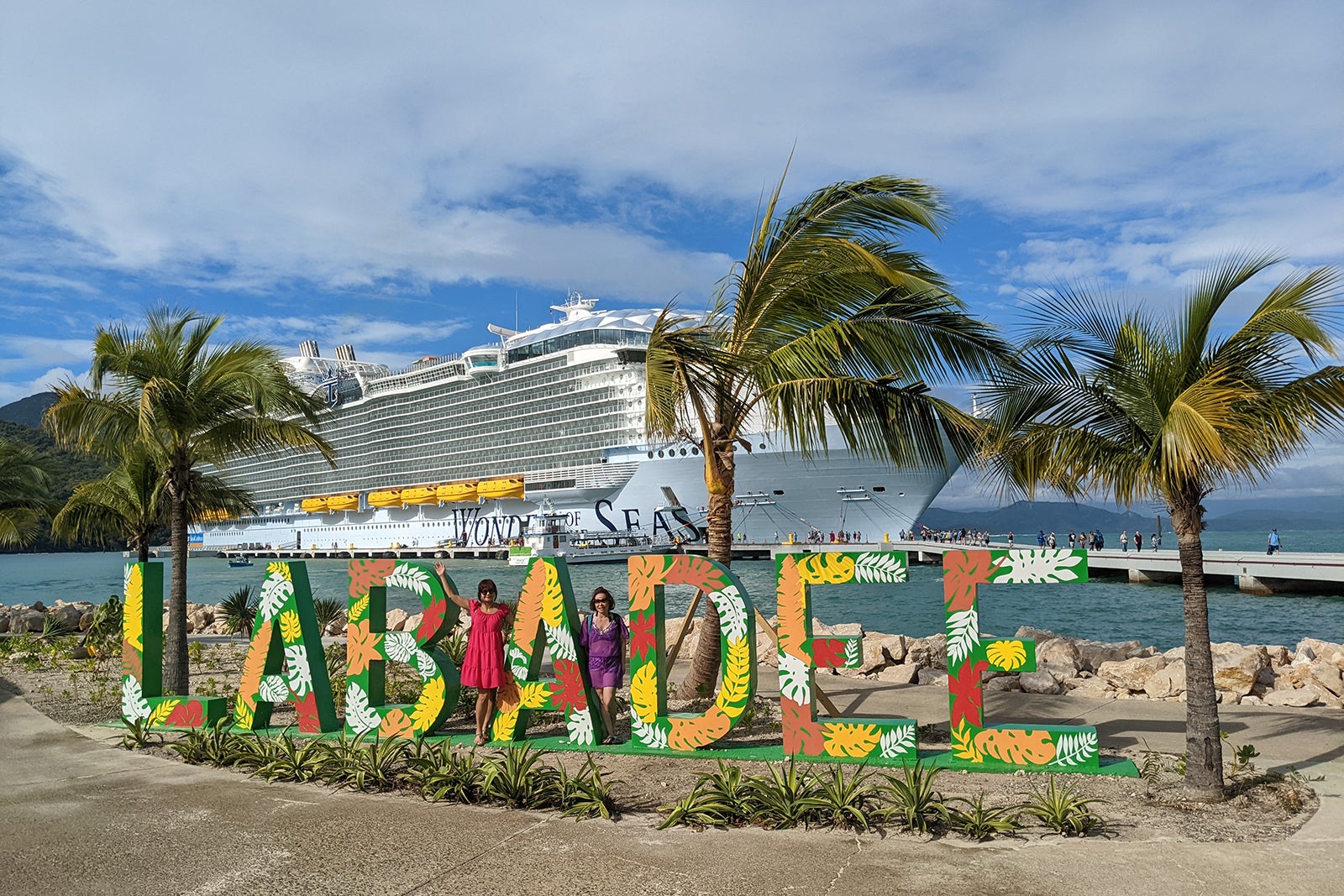
Once you know what ports you'll be visiting, research them as much as you can at travel sites such as The Points Guy. Here at TPG, we're starting to build out a series of home port and destination port guides for everywhere from PortMiami to Bora Bora .
Related: The ultimate guide to Caribbean cruising
Join a Facebook group for your line
Another great place to get ideas for what to do in ports and on ships — and what to bring on a cruise, for that matter — are the many private Facebook groups dedicated to particular lines. I belong to a number of them, including the Royal Caribbean Cruises group, the COPs (Cruisers Opinion Page) group and the Holland America Line Fans group. You'll find thousands of cruise fans at these pages who often are more than willing to answer questions about their favorite line, its ships, its itineraries and the destinations on the itineraries. I've met some wonderful people in these groups, some of whom have become my longtime friends on Facebook.
Sign up for private tours
Booking a shore excursion directly through your cruise line is easy. You just check a box on an online form before sailing or while on board, and — poof! — it's all arranged. But booking tours through your line isn't the only option, and it's not always the best option. In many cases, you can save a lot of money — and get a better touring experience — by booking shore excursions through independent tour operators in ports or a tour booking service such as Viator or ToursbyLocals .
Often, independent tours will be much more intimate than the tours offered directly through cruise lines. They might go to the same sites but in a small van instead of a big motorcoach. You might have just six or eight other people on a tour with you instead of nearly 40. If your group is big enough, you might even be able to book a private tour with an independent tour operator.
Related: The ultimate TPG guide to shore excursions
Independent tours also can take you to places that the cruise line-organized tours don't. Plus, they often come with excellent service. ToursByLocals has staff on hand around-the-clock to respond to questions, and — for those worried about missing your ship — they offer a return-to-ship guarantee with every tour.
Sign up for activities in advance or soon after boarding
Some lines will let you sign up for shows, tours and other activities (including meals at specialty restaurants) in advance of sailing using online portals. If you want to be sure that you get a seat for a specific show on a specific night, or a specific tour or restaurant reservation time, it's a good idea to do this. It's not uncommon with some ships to find that some shows, tours and restaurant reservation times book up in advance.
If you don't sign up for activities in advance, a backup strategy is to do so just after you board a vessel. That said, whether you need to race to sign up for activities at the start of a voyage depends a lot on which ship you are on. I am more careful about signing up for a lot of things in advance when I am sailing on a giant ship such as Royal Caribbean's record-breaking Wonder of the Seas where there are thousands of other passengers competing for the choicest reservations.
Related: 12 giant ships that are the best for fun
Don't feel like you have to do it all
While we're on the topic of signing up for activities, note that it's OK if you miss a few things. You don't have to do it all. In fact, you should force yourself to try to not do it all. Remember, you're on vacation. Relax. Take some downtime. Sit on your balcony, if you have one, and just stare out at the ocean for a couple of hours. You won't regret it.
Always carry the ship's contact information with you
When going ashore, always bring the ship's contact information with you. Those details are usually printed in the newsletter that's delivered to your cabin each night. If something goes wrong when you're away from the ship, you'll want to get in contact with the cruise line right away.
Keep your phone in airplane mode
Some of the biggest cruise ship horror stories you'll find on the internet are tales of cruising newbies who racked up thousands of dollars in cellphone charges while on ships. This can happen when you leave your phone turned on and, say, watch videos on the internet. Many phone plans — even international plans — do not include talking, texting and data on cruise ships, and you'll pay exorbitant roaming rates for such services that will show up weeks later on your phone bill.
There are ways to make calls and access the internet from ships without spending a boatload of money. You can buy a Wi-Fi package, for instance, that will let you make FaceTime calls and stream videos (on some ships) over Wi-Fi without using phone data.
Some phone companies have cruise-specific plans you can buy in advance of a voyage. But I personally never go that route. I keep it simple. I just put my phone in airplane mode the moment I step on board a ship and never switch it back on. I then turn on the phone's Wi-Fi, buy a Wi-Fi package and do all my calling, texting and internet surfing over Wi-Fi. That way, there's no way that I can be surprised by an unexpected charge.
Download the cruise app
A growing number of lines now have apps that you can download to your smartphone in advance of sailing. The apps vary in what they offer, but many will show you a daily list of activities and all of the things that you have reserved. Many also will let you make restaurant reservations and book shore excursions and other activities, and a few will let you order drinks and other items to wherever you happen to be standing. That's pretty cool, right? The best part: The apps will work on board even if you don't pay for a Wi-Fi package.
Related: This cruise app lets you order pizza anywhere on board
Use a travel agent to book
Given the complexity of booking a cruise — there are a lot of decisions to make during the booking process, trust us — we recommend that you use a seasoned travel agent who specializes in cruises to help you arrange things. A good travel agent will quiz you about your particular interests, travel style and preferences and steer you to the perfect cruise line, ship, itinerary and cabin for you. The agent also can help you if something goes wrong just before, during or after your voyage.
In addition, travel agents often can you extra onboard credit and other perks that you might not be able to get by booking directly with a line.
Related: Why you should always use a travel agent to book a cruise
Consider travel insurance
It's not always smooth seas when it comes to cruising — or any sort of travel. We hate to even bring it up, but you might need to cancel your cruise in advance due to the sudden onset of an illness. Or, maybe you'll fall ill during the cruise and need emergency medical attention. Maybe your flight to your ship gets canceled and you miss the vessel's departure. These sorts of things can happen to cruisers, and they're all the sort of situations where you might benefit from having travel insurance. Here's a comparison of the top travel insurance providers and information about Cancel for Any Reason add-ons .
Related: The TPG guide to travel insurance for cruises
Don't book a cabin near an elevator
Not every cabin on a ship is created equal. When choosing a room on your first cruise, you might want to stay away from those near elevators and just above nightclubs and other late-night venues. They can sometimes be noisy. Cabins just below the pool deck and near the anchor also can be problematic as well as cabins near casinos.
Related: 8 cabin locations on cruise ships that you definitely should avoid
Use a points card for onboard spending
You saw this one coming, no? Given TPG's origins as a points and miles website , we'd be remiss if we didn't remind you to maximize your credit card points while making purchases on ships. The way to do this is to tie a credit card that offers extra points for travel purchases to your onboard account. This could be the Chase Sapphire Reserve , which offers 3 Ultimate Rewards points per dollar on travel and dining (excluding the annual $300 travel credit). There's also the Chase Sapphire Preferred Card , which brings 2 Ultimate Rewards points per dollar on travel and 3 Ultimate Rewards points per dollar on dining.
Related: How to book a cruise with points and miles
Don't tip twice for drinks and spa treatments
Most cruise ships now automatically add a gratuity to bar bills, often in the amount of 18% to 20% of the total. Such automatic gratuities also are becoming more common in ship spas. But many first-time cruisers don't know this and write in a hefty tip at the "additional tip" line on bills at cruise ship bars and spas. Be sure to ask if a gratuity already has been included before adding another 15% or 20% to the total. Otherwise, you may end up tipping twice.
Related: Everything you need to know about tipping on a cruise ship
Use points to get to your cruise
Using points and miles to pay for a cruise doesn't always make sense , as it often requires a huge number of them to secure a cabin. But that doesn't mean you can't save big time by booking your flights to and from a ship using points and miles .
You'll find plenty of stories here at The Points Guy about how to, say, pay the equivalent of $1,330 in points for a flight that cost $16,000 , or book a $27,000 around-the-world trip for just $168 in out-of-pocket costs . Scroll around a little, and you may never pay cash for a flight to a cruise ship again.
Planning a cruise? Start with these stories:
- The 5 most desirable cabin locations on any cruise ship
- A quick guide to the most popular cruise lines
- 15 ways cruisers waste money
- 12 best cruises for people who never want to grow up
- What to pack for your first cruise
- Share full article

Travel 101: Our Favorite Hacks, Hints and How-Tos
Successful trips take thorough preparation, from picking the right destination to nailing down all the details. We’ve done the homework so you don’t have to.
Credit... Dani Pendergast
Traveling is exciting, fulfilling and even life-changing. Planning to travel can be stressful, confusing and overwhelming. What should you pack? How can you arrange that big trip with friends and not end up enemies? How do you get to your destination when cancellations and delays conspire against you?
This new series, Travel 101, is designed to help. We’ve talked to the experts, read the fine print and dived deep into the details to offer actionable, practical solutions that will help you maximize the joy and minimize the headaches. We’ll be adding to this guide regularly to create a compendium of advice you can turn to at each step along the way. Bon voyage!
Tips for Parents on Kids Flying Unaccompanied

For many parents and guardians, putting a child on a flight alone may seem terrifying. Belligerent passengers, delays, turbulence: All loom large in a caregiver’s imagination.
Life sometimes leaves no other option. Hudson Crites , 17, of Marshall, Va., was 10 when he started flying unaccompanied to visit his father in Kansas and later Georgia, said his mother, Chelsea Tippett. But the extra attention from airline staff made Hudson “feel special,” Ms. Tippett recalls. Other than a single tarmac delay, he has had no problems.
On rare occasions, children have had troubling experiences. In December, Spirit Airlines accidentally flew a 6-year-old to Orlando, Fla., instead of the intended destination of Fort Myers. Spirit apologized, fired the gate agent responsible and offered reimbursement to the boy’s grandmother for her travel to Orlando. But while the boy was unharmed, his grandmother expressed worry that he had been kidnapped .
If you decide to fly your child unaccompanied, you’ll discover that each airline has its own procedures, fees and routes open to children. While some may find the process complicated, flying alone may be exciting for your child, instilling some independence. Here’s what you need to know.
Before you book, know the process
Regardless of the airline or route, flying an unaccompanied minor differs from an adult or a family catching a flight. Airlines require a trusted pre-authorized adult to be at the departure and arrival gates, and will ask you at booking to provide contact information for those adults. They will also need to present identification at the terminals.
The journey begins at the originating airport’s airline ticket counter. There, airline staff will check your identification and check in the child, perhaps handing them a lanyard or wristband to wear. The agents will provide you with a pass to get through security with your child. You will accompany them to the gate, where you will hand them off to a gate agent. You must stay at the gate until the plane takes off.
In the air, the flight crew will keep watch — but will not babysit, or sit with, your child. If the flight has a connection, a crew member will walk your child off the plane and a gate agent will take him or her to the next gate.
At the arrival airport, the child will be handed off by staff to the authorized guardian or parent who should have already checked in at the ticket counter with proper identification, gone through security with their gate pass and be waiting at the gate.
To learn more about this process, read the Department of Transportation’s online guide, “When Kids Fly Alone,” followed by the website of your selected carrier.
Choosing an airline and paying an extra fee
Before purchasing a ticket, experts advise you to consider an airline’s on-time performance. “Solid on-time performance is hard-earned, and signals a carrier that has tight control of its operation,” said the Ask the Pilot author, Patrick Smith. The Bureau of Transportation Statistics has those numbers.
Booking procedures vary. Delta Air Lines and American Airlines require you to call. United Airlines allows bookings online. JetBlue Airways does online bookings, too, but asks for three printed copies of its forms upon arrival at the airport.
International flights may call for a notarized consent letter describing where the child is traveling, with whom they’ll stay and how long they’ll be there.
On top of the ticket fare, flying an unaccompanied minor can be pricey.
Southwest Airlines charges $100 one way for each child, regardless of distance. Alaska Airlines charges $50 per child if the flight is nonstop; a connection adds $25. On Delta, one $150 fee will cover up to four children, and American’s $150 covers all siblings, with no cap on number. United charges $150 for one child, or two children flying together.
Restrictions: There are plenty
U.S. carriers allow children to fly as unaccompanied minors once they turn 5 and before they turn 18. But regardless of your child’s age, make sure he or she is ready by discussing the trip details and your expectations of their behavior. No policy can replace your judgment.
The low-cost carriers Frontier Airlines and Allegiant Air don’t allow unaccompanied minors, Other airlines have restrictions that, in the broadest terms, differentiate between young children and teenagers. American and Delta restrict children under 8 from routes requiring connections. Both airlines allow children between 8 and 14 to take some connecting flights.
On American, no unaccompanied minor is allowed to take an overnight flight requiring a connection, or a flight that includes a connection on its final leg that also happens to be the last such flight that day (“unless it’s the only flight,” the company adds). Minors are not allowed on code-share flights.
United and Delta have similar rules. Southwest, JetBlue and Spirit don’t allow unaccompanied minors on connecting flights.
JetBlue prohibits minors from flying to Europe, and limits the number of unaccompanied minors in one party to three. Spirit does not allow children on flights to Central or South America. Southwest doesn’t allow children on any international flights. American, United and Delta let minors fly abroad, but restrictions on connections, code-shares and overnights limit options.
American and Delta allow children to opt out of flying as unaccompanied minors once they turn 15 — that is, the child can fly without the assistance of airline personnel. JetBlue ends unaccompanied minor service at 14, while Alaska has an opt-out option at 13. Southwest boasts the lowest opt-out age: 12.
However, you should be able to accompany your child to the gate even if they’re not flying unaccompanied. American requires that you do so for teens between the ages of 15 and 17, even if they’ve opted out.
What to pack
Have a plan to head off your child’s hunger, boredom and thirst. If they are older, make sure they have emergency money and a charged phone.
When her two daughters, then 9 and 11, flew to Denver, Joey Conover of Charlottesville, Va., had a long list for their carry-ons.
“Pack a backpack with iPad, headphones, lightweight book to read, a pad of paper and colored pencils (markers might smear), a small travel game, water bottle (bring empty and fill in airport), snacks, some kind of surprise fidget or animals to play with, hoodie, and a lovey,” she wrote in an email.
“Write your name and phone number on the inside of their arm in Sharpie and put a parent’s business card in a luggage tag on both suitcase and backpack,” Ms. Conover said. (A sheet of paper with all their identification, and their guardian’s contact information, also works. Simply stick in an easy-to-access pocket.)
Vacation Rentals: How to Shrink Your Carbon Footprint

Travelers choosing to stay in a vacation home instead of a hotel may have to spend more time searching for sustainable lodgings, but ultimately they will have more control over their environmental impact. The following are steps short-term renters can take to shrink their carbon footprint.
Search for sustainable rentals
The company Sustonica validates short-term rentals based on sustainability standards, including conserving water and minimizing waste. But it does not act as a search engine. Instead, travelers will find its logo on certified listings on platforms like Airbnb and Booking.com.
Airbnb’s rental categories can help travelers find off-the-grid options, highlighting more than 9,000 listings that rely on renewable energy sources or have no electricity, and Earth Homes , a set of accommodations built with organic materials such as mud or rammed earth.
Booking.com, which lists vacation homes as well as hotels, allows travelers to search for listings with sustainability certifications from more than 65 organizations doing third-party reviews of practices ranging from renewable energy sourcing to recycling.
The company said that more than 16,500 properties, a combination of hotels and rentals, have separate, third-party sustainability certification.
The vacation home rental platform Vrbo does not have an eco-friendly search filter, citing the lack of industry consensus on what makes a rental more sustainable. Properties listed by its sibling agency Expedia may say they are “eco-certified” and users can search using that filter. But read the results carefully; some listings lack information on their sustainable features.
Wherever you search, scrutinize the listings, said Bob Garner, the founder of EnviroRental , a service that works with short-term rental owners on sustainability practices. Do bathroom photos show shampoo in large, shareable dispensers? Does the description mention recycling? If the host has a separate website, look for press links or blog posts related to sustainability.
Talk to the host
According to Airbnb, more than 80 percent of its hosts say they incorporate at least one sustainable feature, such as composting, minimizing single-use plastics and providing guidance on using public transportation. The platform maintains a guide for hosts on sustainable tourism practices, with tips on things like creating a manual to direct travelers to local shops, restaurants and markets.
“When you think you’ve found the right property, ask some questions,” Mr. Garner said. “If they can’t answer them, then there’s a red flag.”
Just the act of asking about environmentally friendly features can have a lasting effect.
“If they think you care, there’s a greater chance of moving the needle,” said Diane Daniel, the founder of Vacation Donations , a nonprofit that encourages short-term renters to donate leftover food in the Tampa, Fla., area.
Consider a pedestrian- or public-transit-friendly location
Even if you can’t find a solar-powered stay, you can choose a location that allows you to get around with minimal emissions.
Connect your “environmental consciousness with the idea of being a good traveler,” said Beth Santos, the chief executive of Wanderful , a global women’s travel community, and the author of “Wander Woman: How to Reclaim Your Space, Find Your Voice, and Travel the World, Solo.”
She recommends travelers live like locals, including taking public transportation, visiting neighborhoods beyond city centers and patronizing small businesses. Take a “day zero,” or a single unscheduled day to walk the neighborhood to find nearby shops as well as transportation options.
Conserve energy
Conserve energy by turning air conditioning off or down when you’re out, switching off lights when you leave and turning off the tap while you brush your teeth.
“This could be one area where you say, ‘I don’t care, I’m on vacation,’” Ms. Daniel said. But travelers should stay vigilant, she said. “Short-term rentals are the easiest places to regulate your footprint, because it’s really up to you.”
Plan meals, reduce waste
Renters usually have the option of cooking meals. To avoid food waste , plan meals and shop for them as you go — and as plans change — rather than buying everything at once. Bring staples like salt and pepper and ask the host if the kitchen is stocked with other supplies like cooking oil and coffee.
“Buying slowly over the week as you need things is a really nice experience if you’re in a location where they’ve got some nice delicacies and interesting farm shops,” Mr. Garner said.
Ms. Santos of Wanderful recommends packing a collapsible food container. “You can throw it in your luggage, take home leftovers and have a place to reheat them,” she said.
Donate leftover food
Take as much leftover food home as you can and look for food pantries that accept donations for whatever you can’t take.
“Perishables are very challenging unless you’re near a pantry that takes them and is open when you’re checking out,” said Ms. Daniel of Vacation Donations.
Don’t assume the cleaner wants your food. In a pinch, Ms. Daniel recommends knocking on neighbors’ doors if you’re staying in an apartment building, or searching Facebook for local groups seeking food donations.
Consider ‘community offsets’
Carbon offset programs invest in activities like tree farming that reduce carbon in an amount matching the emissions generated by a trip. But it’s a controversial practice that has led to inflated, if not bogus, claims of carbon mitigation.
Instead, consider donating your time to a local cause in the area where you’re renting.
“Community offsets or volunteering work are opportunities to spend two hours one morning of a holiday to help in whichever volunteering work there is in this local area, from picking up trash to feeding homeless people,” said Vanessa de Souza Lage, the co-founder and chief executive of Sustonica.
Advertisement
Travel Advisers: When to Let a Professional Plan Your Trip

Decades ago, your vacation most likely began with a visit to a travel agent, who relied on a combination of expertise and connections to find the best deals on plane tickets, hotels, tours and more. Since then, the internet has turned most of us into our own travel agents, and artificial intelligence software is making research and self-booking even easier. But for some trips, that special insider knowledge can still make a big difference.
So when should you hire a professional, and how does it all work? Here are some tips.
Why should I consider a travel adviser?
It’s easy for a traveler to do the research for a standard trip, said Chris Anderson, a professor at the Cornell University School of Hotel Administration, “so they should look for a specialist for the type of tour they are looking for, say a bike trip in Ireland, who can really add value.”
The insider knowledge offered by a travel adviser can add the most value to trips that have multicity itineraries, involve a wide age range of travelers , are very significant (like an anniversary vacation) or are to destinations you are unfamiliar with, said Gary R. Johnson, who has run the travel agency Woodside Travel in Seattle for nearly 30 years. An adviser could help you decide, for instance, in which order to visit European cities based on local events and transportation options.
What can an adviser give me that a booking site can’t?
Travel advisers can help you research the best destinations, lodging, or activities for your particular group and travel goals, offering up specific advice that might be hard or time-consuming to find yourself. Those specializing in cruises might know which cabin to choose if you are prone to seasickness, while a safari planner could help you decide which park would be best for bird-watching or seeing specific animals, like rhinos.
Travel advisers typically have relationships with tour companies, hotels and cruise lines, sometimes through networks. Those connections can allow advisers to offer extra perks such as late checkout, free breakfast, airport transfers, a welcome basket or a credit to spend on a cruise ship.
“A good travel agent will be a better steward of your travel budget than you are,” said Guy Rubin, managing director of Imperial Tours , which arranges travel in China.
When bad weather or other circumstances disrupt your itinerary, travel advisers often have direct lines of communication with providers and can do the work of rebooking and changing plans, saving you time and stress.
OK, let’s say I need help. How do I find an adviser?
Networks like the American Society of Travel Advisors and Travel Leaders have websites that can help you start your search for a travel adviser by answering a few questions about your desired trip. Once you have a handful to choose from, get on the phone with them to talk about what they might do for you, how they charge and the level of service you can expect. Special trips can cost thousands of dollars, so it’s worth investing time up front, Mr. Rubin said.
Make sure to read over the travel agent’s reviews and any user-generated social content that mentions them, Dr. Anderson said. “If there is no external validation, that’s a red flag.”
How do advisers get paid, and how much will it cost me?
Advisers receive commission from suppliers, typically 10 to 15 percent of the price, when selling cruises, lodging and tours. They also sometimes charge travelers a planning fee, from a few hundred dollars, which may be credited to the final bill if the booking is completed, all the way up to tens of thousands of dollars annually for a luxury concierge travel planner they can call on all year. Mr. Johnson said that he charges a planning fee the first time he works with customers. If they return for other trips, he waives the fee.
Advisers may be tempted to sell you something that will earn them a higher commission, Dr. Anderson said. But, he points out, the same is true for the large online services, which promote hotels that pay them larger commissions. Travelers can ask advisers about specific commissions they receive or how they are affiliated with the products they are recommending, he said.
Sometimes a local tour company will package transportation, lodging and experiences for an adviser, who tacks on a percentage before passing it along to a client. But a bill that is not itemized can make it harder to make trade-offs — between a more expensive hotel and a special experience, for example. If pricing transparency is important to you, discuss it with the adviser up front.
How are A.I. and other technologies affecting travel advisers?
While new technologies are allowing do-it-yourselfers to create their own itineraries online based on individual preferences, and to type questions directly into travel websites, advisers are also taking advantage of those technologies to improve their services. Joan Roca, chief executive of the upscale travel planning company Essentialist said his team “uses technology to enhance the human touch,” employing artificial intelligence to choose options from a database of travel offerings selected by a human team. If a couple wants to take an after-dinner stroll, for example, Essentialist’s app will offer up ideas of where to go, based on what part of the city the travelers are in and conversations they’ve had with their travel adviser.
Drone Photography: How to Take Better Pictures

Before the advent of drones, people had to rely mostly on airplanes or helicopters to take aerial photographs. Now, thanks to increasing availability and decreasing price points of drones, as well as advances in obstacle avoidance technology, GPS navigation, battery life and camera stabilization, it certainly seems easier to take photographs from higher elevations.
But that doesn’t mean anyone with a drone can make excellent photographs. Here are some practical tips on the logistics of drone usage and suggestions to make better photos while traveling.
First, know the rules
In the United States, the Federal Aviation Administration oversees drone regulations, and FAADroneZone is the country’s official website for understanding drone requirements and managing drone services. If you are a recreational flyer, you must pass an aeronautical knowledge and safety test, called the Recreational UAS Safety Test , before flying your drone.
The drone company DJI also has a detailed website that instructs drone users on local rules and regulations.
The basic rules for flying a drone as a hobbyist — that is, recreationally using a drone — are to fly the unmanned aircraft only at or below 400 feet, always keep the drone in sight, do not fly in restricted airspace and do not fly over groups of people. If you are flying your drone commercially, you must become a certificated remote pilot by passing the F.A.A.’s Part 107 test . This is a more extensive test and covers additional drone rules, airspace regulations and weather conditions.
Be aware that many countries may have different regulations. Anywhere you go, you may be fined or your aircraft may be confiscated if you do not adhere to the rules.
Understand what your drone can do
Drones are incredibly fast, maneuverable and precise. You can fly up to 400 feet and move laterally in an infinite number of directions to get the perfect shot. But first-time drone flyers often fly as high as possible and take pictures that lack a point of focus or a strong composition.
In order to get photos with the most detail, set your drone to the lowest ISO, usually 100. This is the feature that sets the camera’s sensitivity to light and was known as the film speed back in the days of film. To achieve the best quality pictures, it’s best to shoot in RAW format, which is a digital image file that is unprocessed and contains the most amount of data. When processed, this will produce photographs with the most detail.
After you have purchased your drone, it’s good practice to regularly update the firmware, which is software that provides basic instructions for the craft’s hardware to function successfully, like the drone and remote controller working together.
Use maps and the weather forecast, and time it right
Whether you consult an atlas or follow your car or phone’s navigation, maps are very effective tools for seeing the shape of a river, lake or pond and provide ideas for good aerial subjects.
Once you have a location, shoot during the “golden hours” — taking photos around sunrise and sunset will often produce the most dramatic pictures with warm light and shadows. It’s a good idea to keep an eye on the weather forecast to know the sunrise and sunset times and also what the weather will be. High winds and rainy or snowy weather make flying a drone much more difficult.
Look for patterns, lines and light while flying
Many times a drone photographer will make discoveries from the air. You might launch with the idea of photographing one thing and, while in the air, you might discover something more compelling. Rivers, solar arrays, farm fields and trees can provide engaging patterns and lines.
And don’t forget the light and shadows, either. Good light can make or break a photo. Sometimes the best light means a golden sunrise, as we said earlier, but sometimes it means an overcast day with diffused light. On cloudy days, shooting straight down on a subject can be very effective.
Taking drone photos at twilight can also be very captivating. This is the time after sunset and before nightfall. Set the drone to manual exposure, set the ISO to 100 and experiment with long exposures. Some drones can take up to eight second exposures and maintain sharp focus.
Study an expert’s work
One of the great ways to make your photos better is to study the work of a professional photographer.
The photographer George Steinmetz has been making aerial photographs for decades — even before the rise of affordable drones — while working with publications like National Geographic and The New York Times. He has published five books on aerial photography.
“For intimate aerial photography, a drone is exceptional,” he said, but adding that any type of aerial photography can be transformative.
“You see the world in a way you’re not accustomed to,” he said. “It adds context and a new perspective.”
Renting a Car Abroad: Don’t Get Taken for a Ride

“Throw the keys through the kiosk’s open window. We’ll get the car when we open later”: Those slightly unorthodox drop-off instructions I once received from a Hertz manager in Croatia illustrate some of the differences U.S. travelers might encounter when renting a car abroad.
It pays to familiarize yourself with the local policies and protocols ahead of time. Here’s what you need to know before you accept the keys.
You may need an international driver’s license
If you have a U.S. driver’s license, an international driving permit is officially required (along with your state-issued license) in Australia, Austria, Bulgaria, the Czech Republic, Estonia, Italy, Japan, Poland, Romania, Serbia, Slovenia, Slovakia, Spain and Thailand, although its use is not universally enforced. It’s also a good idea to carry an I.D.P., a booklet — slightly bigger than a passport — that translates a U.S. license into 10 languages, when renting a vehicle in a country whose language is not written in Roman letters.
An I.D.P. costs $20, is valid for one year and is issued to any applicant by a local AAA office (the only issuer in the United States authorized by the State Department). You must apply for one in the country that issued your regular driver’s license.
Familiar brands may be franchisees
Car rental brands familiar to Americans operate throughout the world; those include Alamo, Avis, Hertz, National, Sixt and others. You can reserve a vehicle through a company’s U.S. website or through a rental aggregator such as Autoeurope.com , to compare rates.
The overseas branches of U.S. companies may not always be owned by the parent company. The discussion boards on websites like Tripadvisor abound with commenters calling out franchise operations of major chains for not providing the service they expect from a U.S. operation.
Franchise or not, disputes with a foreign branch should always be directed to the U.S. customer service operation, according to Hertz and Autoeurope.
Check minimum (and maximum) age requirements
The minimum age to rent a car varies by country and company, and it’s indicated on each rental agency’s website. Most countries charge a “young driver” surcharge for renters under 25. Some countries, such as France and Germany, allow (but do not require) companies to rent to 18-year-olds, but 21 is the typical minimum rental age for most.
At the other end of the spectrum, Hertz won’t rent a vehicle in Northern Ireland to anyone older than 79; those from 75 to 79 must have a doctor’s letter stating that they are in good health, as well as a letter from their insurance company proving that they haven’t had an accident within the past five years.
Cut costs with a stick shift
Cars with manual transmissions are still popular in many European countries, so if you’re comfortable driving one, select that option. Renting a car with an automatic transmission can typically cost an additional 30 percent or more.
Check your credit card’s rental insurance coverage
Many U.S.-issued credit cards cover damage to your international rental car if you’re in an accident, as long as you charge the entire rental fee to the card. Some issuers also require that the same card be used to make the reservation for the insurance to be valid. That collision coverage is primary, unlike in the United States, where your personal vehicle insurance would cover the costs while your rental insurance would pay for any deductible amount. Even if your credit card covers damage to your rental vehicle, you will be responsible for the cost of damage to any other vehicle if the accident is deemed to be your fault.
Be warned that standard rental insurance for American Express cardholders is not available in Australia, Italy and New Zealand, and other cards may have different restrictions.
Familiarize yourself with local driving and parking laws
Before you go, learn each country’s rules , including the meaning of various road signs and markings. For instance, simply because you see other vehicles parked with their wheels on the sidewalk — common in European cities with narrow streets — that does not mean that it’s legal to do so.
Autoeurope.com has driving tips for dozens of countries, not all in Europe, and Britain’s Automobile Association lists road rules for six European countries. Don’t forget that many places besides Britain drive on the left (including Japan, Australia, New Zealand, South Africa and numerous Caribbean islands). And if you get a ticket, don’t ignore it. The rental agency will eventually collect from you, along with an administrative fee .
Seatbelt laws are often strictly enforced, with a separate fine — sometimes issued on the spot — for each occupant not wearing one.
Finally, many European cities restrict driving in central or historic areas to residents only or those driving low-emission vehicles. Entering these limited-traffic zone areas can incur heavy fines, plus an added fee from your rental company. Watch for signs and gates (commonly marked “ZTL” in Italy ).
Know your fuels
Diesel engines are very common in other countries; putting diesel in a gas engine or vice versa can cause serious — and costly — damage .
While fuel pumps are color-coded to indicate what they dispense, those colors vary by country and region. Fuel requirements are listed on a sticker on the inside of the filler door.
In the United States, black indicates gasoline while green designates diesel. In Iceland and other European countries, it’s the opposite: green for gasoline and black for diesel.
Cellphones: Go Abroad Without Racking Up Big Fees

The horror story goes something like this: A family returns from a trip abroad, and the glow from the vacation has barely begun to fade when a cellphone bill with hundreds — or even thousands — of dollars in international charges arrives. The phenomenon even has a name: bill shock .
Smartphones have become an indispensable part of international travel. You can use them to check in at the gate, go through borders, find your way around a foreign city and pay for breakfast at a sidewalk cafe. Now, it’s easier than ever to use your phone just as you would at home without getting a big hit to the wallet.
There are two major options: You can get a data plan directly through your phone company or you can swap out your phone’s SIM card, a small chip that stores data about you and your carrier — on newer phones, you can use an app that does the same thing. Here are some tips:
Pick the right plan
The three biggest U.S. carriers all offer some version of an all-inclusive international data plan. The prices and countries covered vary. Some take effect automatically when you cross a border, and others require you to sign up before your trip. Almost all of them send a text message detailing your options when your phone connects to a foreign network.
AT&T offers the International Day Pass for $10 a day, allowing travelers to use their phones much as they would in the United States. AT&T automatically adds a day pass when customers with unlimited plans connect to the network in a foreign destination.
Customers with this plan can use their phones for as many days as they want, but they’ll be charged only for a maximum of 10 days per billing cycle. The plan covers about 210 destinations. (Canada and Mexico are included in unlimited plans.) Some exceptions: Cuba and the Maldives.
Verizon has a similar offer: TravelPass , which gives customers who have Unlimited Plus, Unlimited Welcome and other unlimited plans the ability to talk, text and use data for $10 per day (there is no cap on how many days you can be charged in a billing cycle), or a monthly $100 pass . The first 2GB of high-speed data each day is included; after that, travelers get unlimited data at a slower speed.
Unlimited-plan customers heading to Canada or Mexico do not need to buy TravelPass, but for all other plans, a day pass for those countries costs $5. TravelPass covers about 210 international destinations. Exceptions: Cuba and the Maldives.
T-Mobile automatically includes international coverage at no extra cost in its most popular plans, said Mike Katz, president of marketing, strategy and products. Depending on the plan, it includes unlimited texting in over 215 destinations worldwide and 5GB of high-speed data per billing cycle (but most phone calls cost 25 cents a minute). As with AT&T and Verizon, Cuba is not covered, but the Maldives is.
T-Mobile travelers needing more high-speed data or free calling can upgrade with day passes , starting at $5 (unlimited calling, and up to 512MB of high-speed data). For longer stays, a 30-day plan with up to 15GB of high-speed data costs $50.
Swap your SIM
Subscriber identity module cards — tiny, removable chips that link a phone to its owner’s network and phone number — offer another way to save money while you’re traveling , especially if you’re taking an extended trip or using a large amount of data. Instead of signing up for a U.S. provider’s international calling plan, you can buy a local SIM card, usually as part of a pay-as-you-go or prepaid package, usually at a cheaper rate. Rates vary depending on the provider, country and offerings.
If you have a newer model of phone, you probably don’t even need to swap out — and keep track of — physical SIM cards: You may have built-in eSIM capabilities instead.
Apps like Airalo provide affordable eSIM options for hundreds of destinations around the globe. Airalo’s options include Discover Plus , a global plan that includes 10 text messages, 10 calling minutes and 1 GB of data, starting at $15 for seven days. There is also a regional plan (covering places like Europe), starting at $5 for seven days, and a local plan (for only one country), as low as $4.50 for seven days.
Two caveats to SIM swapping: Your phone generally must be unlocked (not tethered to a specific carrier), and you will usually receive a foreign phone number when you set up the new SIM card, so make sure to share that number with anyone who needs to contact you. (Your regular phone number will go to voice mail.) If you use an eSIM and your phone has Dual SIM Dual Standby technology, you may still be able to use your regular number .
Tailor the technology
There are a few technological precautions travelers can take to avoid bill shock.
First, control your data use by turning off data roaming in your phone’s settings when you don’t need it. You can also download maps when you have Wi-Fi and then use apps like Google or Apple Maps in offline mode. You can also squelch data-gulping apps individually by toggling off their access to cellular data in your phone’s settings.
Finally, consider using secure Wi-Fi (be wary of public networks) to make calls on services like FaceTime or WhatsApp to avoid voice or long-distance fees.
How to Survive Long-Haul Flights

Long-haul flights are generally considered to be those eight hours and over, while any that stretch past a grueling 16 hours are nicknamed “ultra long-haul.” The longest nonstop commercial flights currently available include New York to Singapore (18 hours and 50 minutes; 9,530 miles) and Perth, Australia, to London (17 hours and 45 minutes; 9,010 miles). Qantas Airways, Australia’s national airline, plans to operate two even longer direct flights in 2025: Sydney to London and Sydney to New York — routes that will take up to 20 hours.
For travelers, flying at 35,000 feet for an extended period of time comes with its own set of challenges, including little space for movement, dry cabin air and time zone changes.
Though extreme long-haul air travel never gets easier, there are some things you can do — before, during and after your flight — to make it slightly less terrible.
Jennifer Bagnall, 40, a communications executive who often flies between her home in Los Angeles and Sydney, believes reframing the experience in your mind is an essential first step.
“Instead of approaching it as a long stretch of time in a confined space without escape, I think about how it’s a long stretch of uninterrupted time with no responsibilities and where I can’t be contacted,” she said. “It’s so rare you get that.”
Pack your carry-on smartly and strategize early
You’ll most likely be checking your luggage, so your carry-on bag will need to be well equipped. As well as any items you’re going to use for entertainment, think ahead to what will help you feel the most comfortable. Packing a change of clothes (if there is a stopover, you may be able to find a shower in the airport) as well as a toothbrush and toothpaste will go a long way to helping you feel fresher during your journey. Make sure you’re wearing comfortable clothing and a pair of compression socks to combat swollen feet from so many hours with little physical activity.
“Wear a hoodie,” recommends Nikki Greenberg, 40, a futurist and innovation strategist from Sydney who frequently travels internationally for work. “It is cozy, warm, covers the ears (less noise) and eyes (less light for sleep), and creates a private cocoon environment.”
Find a way to sleep as much as possible
Do anything and everything you can to make sure you spend a large chunk of the time onboard asleep. Some travelers consider sleeping pills or melatonin supplements as must-haves, while eye shades and noise-canceling headphones can reduce cabin lighting and help to dull the roar of the plane. A travel pillow like the Trtl Pillow , which supports your neck, can help when trying to sleep in the upright position.
Mapping out your sleep schedule ahead of time can also be useful, depending on when your flight or flights are departing. Vanessa Quincey, 33, an advertising director from Melbourne, Australia, who has lived in New York for the past decade, stays awake for the shorter leg of her journey — New York to Los Angeles — to ensure she’s extra tired for the long second leg to Melbourne.
“Purchase a ‘Do Not Disturb’ eye mask if you plan on sleeping through meal service,” she said. “The mask will block out the overhead lights, and the ‘do not disturb’ will let the cabin crew know not to wake you.”
Save up entertainment
Plan how you will fill the rest of the time onboard: A 10-episode narrative arc of a TV series will stretch out a lot longer than one movie. You can look ahead on the airline’s website to see what in-flight entertainment will be available on your flight. Be sure to download TV shows, movies, podcasts and music onto your devices before you get to the airport and have to rely on spotty Wi-Fi. Bring a good book you’ve been meaning to read. Have some offline games you can play on your phone or iPad. And don’t forget a backup portable charger.
Patrick Quade, a 52-year-old tech founder from New South Wales in Australia, has done the trip between the United States and Australia more than two dozen times. He recommends setting a goal that takes longer than 20 hours: “Learn Adobe Premiere well enough to make a three-minute short with edits and sound track.”
Never stop hydrating
The air onboard is extremely dry. Pack a decent moisturizer, lip balm, lubricating eye drops and a small nasal spray. Try to avoid alcohol and drink as much water as you can throughout the flight: Bringing your own empty water bottle to fill up at the airport after customs can help with this goal. Powdered vitamins or electrolytes can be added to your water to maximize hydration.
Move when you can
Many people prefer an aisle seat so they are able to get up frequently without disturbing their seat neighbor. Ahead of booking, research the layout and model of planes on websites like SeatGuru to find the most legroom. Do some stretches while you’re waiting in line for the bathroom and walk a few laps of the terminal during a layover to get your blood moving.
Think ahead to your final destination
Without a doubt, the most important thing is to never, ever take a nap if you land during the day, as tempting as it is after a grueling flight. “This is really tough flying to Australia because you usually land early in the morning,” says Nathan Weinrich, who has been traveling home to Australia from New Jersey for eight years. “But it makes a huge difference to how quickly you adjust to the new time zone.”
Tips for First-Time Cruise Passengers

You’ve picked a ship, booked an itinerary and chosen your cabin, but even with the hardest part done, figuring out the ship’s layout and how to get a spot on a popular outing can be daunting. Here’s how to prepare for a smooth first sailing.
Familiarize yourself with the ship, even before you board
Ocean cruise liners are big, and each ship is unique, so get familiar with deck layouts and features before you board. Most cruise companies have detailed plans and videos on their websites and there are virtual ship tours by cruise enthusiasts on YouTube and social media.
Once you’ve checked in and found your cabin, go on a scouting mission, identifying key areas like the main dining room, pool and lounge area while keeping an eye out for hidden nooks. “The crowds are fun, but there’s going to be moments when you want to escape them and find a quiet corner to relax,” said Mandy Holden, a retired teacher from Florida who takes an average of five cruises a year. “Take time to explore the ship, you don’t want to find the best spots on your last day.”
Bring a carry-on
After you check your bag at the terminal, it may take several hours before it’s delivered to your stateroom. “Be sure to pack a carry-on with all of the essentials you might need during that window of time,” said Colleen McDaniel, editor in chief of the cruise news site Cruise Critic , who suggested including “medication, sunscreen, a bathing suit, a phone charger and other essentials that you’ll need as soon as you board.”
Sign up for activities in advance
Popular onboard restaurants, shore excursions and spa treatments can fill up quickly so book ahead. Many companies will let you book in advance through their website or app, but if not, head to excursion and activity desks soon after you’ve boarded.
“The theater productions are incredible and produced at a very high quality,” said Chris Thompson, an avid cruiser of 35 years based in London. “You can usually reserve a seat in advance for free, but if it’s booked up, try showing up 15 minutes before the start of the show when seats often become available.” Mr. Thompson also suggests going to a specialty restaurant on the first night when there is likely to be more availability. “Most people eat in the main dining room while they settle in, so chances are you’ll find a nice table at one of the special restaurants,” he said.
Bring your own drinks
Beverages are expensive on cruises and can add up. Many lines offer all-inclusive food-and-drink packages for a flat fee, which can save money, particularly for those who enjoy alcohol, but it’s also worth bringing your own. Be sure to check your ship’s policy as the rules vary from line to line, and passengers may be limited to a quota of beverages they can bring onboard. Many cruise lines have apps where you can check on your daily charges and make sure they are accurate. Taxes and service charges are usually added automatically.
Switch your phone to airplane mode
During your cruise, you will likely be crossing through several international telecom networks and could rack up significant roaming charges as your phone automatically downloads data. It’s best to keep your phone in flight mode and connect to the ship’s Wi-Fi if it’s included or if you decide to purchase a package, which usually ranges from $15 to $40 per day.
Catch a deal during a port stop
On longer cruises with several stops, it can be worthwhile to stay on board and make the most of the ship’s offerings during an excursion day. Many lines will offer deals on spa treatments, restaurants and activities during port calls and it’s a good opportunity to use the ship’s facilities when they are less crowded.
Know that your itinerary may change
Itinerary changes are common on cruise ships and could occur at the last minute. Factors like weather, wars and civil unrest can disrupt what ports you leave from or stop at, and cruise lines will either substitute a stop or spend longer at the next scheduled destination. Refund and cancellation policies vary between cruise lines, so read the fine print. Even if an itinerary change doesn’t result in a refund, some companies may offer cruise credits as a courtesy.
To have your trip fully covered, consider taking out travel insurance. “A cruise is an investment of money and time and should be protected,” said Stewart Chiron, a cruise industry analyst and chief executive of the news site cruiseguy.com . “Besides providing protection for cancellation, policies also cover for interruption, medical, travel delays, property loss and are worth serious consideration,” he added. “If itinerary is a major determinant, consider a policy covering ‘cancel for any reason’ in case of major changes.”
Don’t be shy
The idea of being in the middle of the ocean with thousands of strangers can feel intimidating, but it’s a great opportunity to meet new people, particularly experienced cruisers who can offer tips in real-time.
Cruise Critic has Roll Calls for guests on a particular sailing to join and chat with one another in advance. Passengers have also used Roll Calls to form groups to plan independently booked shore excursions, which can be cost-effective.
“But be aware,” said Ms. McDaniel of Cruise Critic, “If you’ve booked an independent shore excursion that runs late, the cruise line does reserve the right to leave without you if you’re unable to return to the ship in time.” She notes that the ship will wait if you’ve booked an excursion through the line.
Follow New York Times Travel on Instagram and sign up for our weekly Travel Dispatch newsletter to get expert tips on traveling smarter and inspiration for your next vacation. Dreaming up a future getaway or just armchair traveling? Check out our 52 Places to Go in 2023 .
How to Avoid the Pitfalls When Renting a Car

From getting a good deal to figuring out insurance requirements, renting a car can be a complicated, pitfall-prone experience. Here are some best practices to follow, from reservations through returns.
Compare prices and convenience of airport vs. nonairport locations
Prices vary widely based on the vehicle model and the location of the agency. Airport rentals, subject to extra taxes and fees, are generally more expensive.
Some cities are now charging similar fees if an agency is within 20 miles of the airport, according to Jonathan Weinberg, the founder of AutoSlash , a car rental platform. “Always check both,” he said.
If you’re flying and choosing an off-airport rental location at your destination, factor in the cost and convenience of transportation to the agency. Most have more limited hours than airport-based outlets, which could be important if your flight is delayed.
Don’t prepay
Many agencies offer discounts for prepayment. But prepaid contracts often incur fees if you cancel.
Most unpaid reservations are flexible, allowing you to cancel anytime with no penalty. Experts advise reserving early and then using the time before your trip to check prices. If they go down, you can cancel and rebook at the lower rate. Many agencies, including Budget and Dollar , offer best rate guarantees, meaning if you find a better rate on their cars elsewhere and they can verify the claim, they will rent you the car for 10 percent below that price.
The website AutoSlash will track your reservation at no cost and alert you to any price drop.
Maximize your memberships
Use memberships at the retailer Costco or the organizations AAA or AARP to get a discount at specific companies. Payoffs vary. If you’re strictly joining Costco to rent cars, it may take a few rentals a year to recoup the $60 membership fee.
If you join loyalty programs at Avis, Hertz or other major rental companies, which are usually free, you are entitled to express pickups, which means you can skip the line at the counter and go directly to your vehicle.
Consider alternative companies
Turo and Getaround act like Airbnbs for rental cars: Owners offer their vehicles to rent through company websites or apps. Turo, available in 11,000 cities in the United States, Britain, Canada, France and Australia, requires renters to work out where and when to pick up cars from their renters, though some owners will bring the car to you.
Available in more than a dozen cities in the United States, the app- and internet-based rental company Kyte , which has no brick-and-mortar locations, will drop off and pick up its cars, which are competitively priced, wherever you specify, at no extra charge. The contactless and app-based UFO Drive rents E.V.s in more than 20 cities in the United States and Europe.
At the counter, understand upgrade policies …
At traditional agencies, when the car you’ve reserved is not available when you arrive, it’s a common practice to give you the next-best available car at no extra charge. This may not always be made clear, and agencies have been known to ask if you want to upgrade for a fee. Before accepting, request your original class of car. If it is not available, you are entitled to a free upgrade.
Watch out for “manager’s specials,” which tend to be bargain leftovers. As agencies transition to electric cars, renters have ended up with surprise E.V.s that they didn’t necessarily want, according to Mike Taylor, the managing director of travel, hospitality and retail at the market research company J.D. Power.
… and know your insurance coverage
If you already have auto insurance, in most cases that coverage extends to a rental. Many credit cards also provide coverage against theft and damage as long as you use that card for payment. Check on both before buying additional coverage at the agency.
“Credit card insurance is only collision, not liability,” Mr. Weinberg said, noting liability insurance will add roughly $20 a day.
If you do not have insurance and are relying on a credit card’s coverage, pay attention to exclusions of certain kinds of car and peer-to-peer rental agencies like Turo.
“You want to avoid duplication of coverage, but you don’t want to go in thinking you’re fully covered when you’re not,” said Chuck Nardozza, the managing director of sales at AAA Northeast.
Most personal auto insurance will not apply to driving abroad, with some exceptions for Canada and Mexico.
Before driving off, document the vehicle’s condition
Look for damage, including dings and scrapes and upholstery tears. Take photos or a video to establish the vehicle’s condition at pickup. If there is damage, ask the company to document it in your paperwork.
Take photos again when you drop off the vehicle. Even if an employee reviews the car and gives you a receipt, you’ll have a record of its condition should a deeper review find any damage.
Before returning the car, buy gas
Fuel options include returning the car with a full tank or having the company refill it at what may look like attractive per-gallon rates. However, in the second scenario, you must buy a full tank.
“If you use three-quarters of a tank, you’re giving the rental car company a quarter tank of free gas,” Mr. Weinberg said.
When you return the vehicle, take a picture of the gauge showing a full tank. Companies have been known to tack on extra gas charges, and photographic proof usually wipes those charges away.
Return the car on time
A rental car day is usually 24 hours from the time you leave the lot. Anything later might incur another full day’s charge.
Even if you reserved a car from noon on pickup day to noon on drop-off day, if you arrive early and take the car at 11:30 a.m., you’ll be expected to return it by 11:30 a.m. on the due date. “They might give you a little leeway, but that window tends to be short, like 60 minutes or less,” Mr. Nardozza said.
Bedbugs: Vacation Without an Infestation

Bedbugs don’t just live in beds. In hotel rooms, these apple-seed-size pests can hide out in furniture, waiting for their chance to come out, usually at night, to feed on humans’ (and pets’) blood while they sleep. Their bites, usually painless, often occur in clusters or lines.
Although bedbugs generally pose minimal risks to health, said Bryon Backenson, director of communicable diseases at the New York State Department of Health, their bites can cause allergic reactions for some and, of course, they are a source of discomfort and anxiety for pretty much everyone else.
Here are some ways you can prevent bloodsucking stowaways from sneaking home with you .
When you arrive
Check your hotel room before you settle in, even if the room is spotless. The warmth, blood and carbon dioxide of humans are far more important to bedbugs than an unsanitary environment, according to the Environmental Protection Agency’s bedbug myth website . But, the website adds, clutter can help them hide.
When you first enter the room, immediately put your luggage in the bathroom, then do your bedbug inspection, advises Jody Gangloff-Kaufmann, a senior extension associate at Cornell University who focuses on pest management and has a doctorate in entomology.
Adult bedbugs are wingless and have six legs and a flat, oval body. They’re about the size of Lincoln’s head on a penny, according to the Centers for Disease Control and Prevention . The eggs are pearl white and about the size of a pinhead, the E.P.A. website says.
Thoroughly check the bedding, box spring, bed skirt, side tables and even the alarm clock, anywhere the bugs can hide.
“The first thing you might notice is the fecal stains that they leave behind, which is kind of like magic marker dots in fabric,” Dr. Gangloff-Kaufmann said.
Also check the headboard; some can be popped off the wall. If there is powder behind the headboard, Dr. Gangloff-Kaufmann said, that may a sign that the room has been treated for bedbugs in the past.
Pack a small LED flashlight you can use as you do your inspection. It will help illuminate any eggs or shells discarded during molting. Finally, check the rest of the furniture and any nooks or crevices — think baseboards, moldings and floors — around the room. A sweet, musty smell may also indicate the presence of bedbugs.
Commercial bedbug tests such as the swab-based TruDetx , which promises “reliable detection in just five minutes” may work, but do not have enough scientific studies backing them up, said Dr. Gangloff-Kaufmann. They can also provide a false sense of security, Mr. Backenson said.
If you find any evidence of bedbugs, do not stay in the room. Instead, contact the hotel staff, leave the room with your belongings and request a room in another part of the hotel — not adjacent to the infested one.
During your stay
Minimize the places a bedbug could hide by storing your clothes in sealable plastic bags. Some travelers also bring large, airtight plastic bags for their luggage.
A hard suitcase, Mr. Backenson said, may be a safer choice than soft luggage because it has fewer crevices where bedbugs can stow away. Always keep your luggage on a rack, away from the wall, or in the bathtub.
Do not sprinkle diatomaceous earth — a white, silica-rich powder that some travelers have deployed to desiccate bedbugs — in a hotel room, Dr. Gangloff-Kaufmann said, because it may contaminate the room and potentially even cause a scare if a hotel worker sees it and doesn’t recognize it.
Blasting your luggage or clothes with a hair dryer or a portable steamer, another popular tip, may not work because the temperature may not be high enough for long enough to kill the insects, said James Mulloso, vice president of Northeastern Exterminating in Brooklyn. Their eggs may take up to 90 minutes at 120 degrees Fahrenheit to destroy, the E.P.A. says on a web page for bedbug control .
Wiping down your suitcase with rubbing alcohol, another popular bedbug-fighting strategy, can help kill the insects if done safely in a well-ventilated area, Mr. Mulloso said, but keep in mind that rubbing alcohol is flammable, and it could be dangerous.
After you return home
After your trip, unpack your bags in the bathroom against a light-colored surface, so you can spot any bugs, the New York City Department of Health advises, then shake out the clothing in a bathtub or shower and vacuum out your luggage. Don’t forget to empty the vacuum and dispose of its contents.
Put your clothes in the dryer as soon as possible, the experts agreed, and run it at the hottest setting for at least 20 minutes to kill bugs and eggs.
If you think an item has been exposed to bedbugs and it cannot go in the dryer, seal it in an airtight plastic bag and leave it in a warm area for six months — the time it takes for the bugs to die from lack of water, Dr. Gangloff-Kaufmann said.
Wildfires: Stay Safe in a Warming World

Climate change is warming up the spring, lengthening the summer, and drying out soil and vegetation , leading to more frequent , destructive wildfires . This year alone, wildfires have left at least 98 dead on Maui , forced mass evacuations from several Greek islands , and raged across Canada, forcing an entire city to evacuate and fouling the air across North America. If you’re traveling in this environment — especially if you’re planning a trip to the outdoors — how can you stay safe? Here’s how to prepare yourself, and what to do in case of an emergency.
Realize that every season is now fire season
In years past, travelers could plan around “fire season,” steering clear of the hottest, driest times of year. But — as evidenced by the Marshall Fire , which ignited Dec. 30, 2021, then burned more than 1,000 homes near Denver — when it comes to fire, season doesn’t really matter anymore.
What matters is weather. Heat, drought, low humidity and wind can signal fire danger, so the National Weather Service checks for these conditions year-round and issues red-flag warnings for places that are at high risk.
No matter the season, watch for those warnings. Lori Moore-Merrell, the United States fire administrator, whose agency supports and strengthens fire and emergency medical services, also recommends chatting with a local authority — for instance, a park ranger or a firefighter — “to kind of just say, ‘What’s going on today? What are you hearing? What are the conditions?’” That will help you gauge the risk level, and know what to monitor.
Check out the National Interagency Fire Center’s National Incident Map , FireWeatherAvalanche.org and CalTopo.com for real-time fire maps. You may also want to follow the social media accounts of the cities, counties and parks you’ll be visiting, as these accounts often deliver real-time information.
Prep your phone
Your device could save your life in a wildfire, but not if its battery is dead. Ensure yours works when you need it by bringing a charger that doesn’t need a wall or a car socket, such as one powered by the sun .
Both FEMA and the American Red Cross have free apps that you can customize to receive location-specific alerts. On the Red Cross app, there’s also an option to enable critical notifications to sound, even when the phone is on silent or in Do Not Disturb mode.
Candice Stevenson, a fire communication and education specialist for the National Park Service, advises signing up for emergency alerts for the area you’re visiting. These alerts might be shared via text, email or phone call, depending on where you’re traveling. “Sometimes,” she wrote in an email, “a text or alert can still work while in poor cell coverage.”
Another tool for low- or no-service areas is What3Words . The free app works by dividing the world into roughly 10-by-10-foot squares and assigning a unique three-word code to each square. (The geocode for the trailhead for the path leading to the top of Half Dome, in Yosemite National Park, for instance, is songbird.contraband.partly .) Because the service uses satellites, your phone can receive the three-word address corresponding to your location even without internet or cell service, which can help emergency workers find you when you do make contact with them.
“I can’t tell you how many times people will call and say, ‘I’m on fill-in-the-blank lake,’” said Alex Luscutoff, the deputy chief of law enforcement and emergency services for California State Parks. “When we get that information as first responders, sometimes it’s very difficult to distinguish what particular area of the park they are located.”
Use of the service is catching on. Besides the California State Parks, emergency responders in and around places like Austin, Texas; Niagara Falls, Ontario; Tucson, Ariz.; Los Angeles, Nashville and London have also adopted the app.
Bring analog backup
Phones are powerful tools, but they can also break, freeze up or get dropped in lakes.
Don’t underestimate the value of paper maps. Study them before you depart to familiarize yourself with your destination, and to find several evacuation routes. Then, keep those (preferably waterproof) maps handy.
Sherri McKinney, a national representative for the American Red Cross, also recommends bringing a lightweight hand-cranked weather radio , especially for backcountry travel, to listen for weather information and emergency announcements. A hand-cranked radio “can be the difference between life and death,” she said.
Be ready to evacuate
Once a fire starts, time is limited. “Fire is fast,” Dr. Moore-Merrell said. “It is fast when it is coupled with hurricane, gale-force winds as we saw in Maui; it is fast if it happens in your home.”
That means it’s critical to know your evacuation route before a fire starts. When you reach your destination for the night, Dr. Moore-Merrell said, look for exits, stairwells and any other escape routes. Better yet, Ms. McKinney advised, once you arrive and drop your bags, “take another drive after you’re checked in so that you can see what the exit route is, and practice that evacuation route.”
Above all, if and when you’re told to evacuate, don’t wait — get out.
Get to a safety zone
Maybe you’re too far from your car to reach it. Maybe you’re too deep in the backcountry to reach a road. Maybe the fire is blocking your only escape route.
If, for any reason, you cannot evacuate, look for a safety zone: a place where you could survive a wildfire and await help.
Ms. Stevenson of the National Park Service wrote that what constitutes a safety zone depends on a fire’s severity: “The larger the flame heights and the faster the wind speed, the larger the safety zone would need to be.”
If you’re on a hill, Drew Leemon, the risk management director for the National Outdoor Leadership School , advises going downhill. “Heat rises, so it’s going to go up the side of a valley faster than you can run,” he said.
Mr. Leemon also suggests heading for a body of water, ideally one deep enough to submerge yourself, if there is one nearby.
Fire needs fuel, so get away from as much fuel as you can. If you’re in the forest, he said, go to a meadow. Better yet, run to a place with very little vegetation, like a boulder field or a rocky area. If you’re in immediate danger, Mr. Leemon said, you can head into “the black” — the area that has already burned. That scorched zone presents its own risks — embers, hot ground and trees that might fall — but there is also much less left to burn there.
Foreign Exchange: Get the Best Rate

Using foreign money wisely requires understanding the going exchange rate with the U. S. dollar and practicing the following strategies to avoid excessive fees.

Take a card that doesn’t charge transaction fees
The primary rule of managing purchases abroad is ensuring you are not using a credit card that charges foreign transaction fees.
“Everything you buy will be 3 percent more expensive if you have a card that doesn’t waive foreign exchange fees,” said Nick Ewen, the director of content at the Points Guy , a travel website that focuses on maximizing credit card benefits.
You don’t need an expensive card with a $500-or-more annual fee to have foreign transaction charges waived. Capital One offers cards with no annual fees or foreign transaction charges. The personal finance website NerdWallet maintains a list of credit cards that don’t charge a fee for foreign transactions.
Credit cards are often safer than cash because fraudulent charges can be disputed. (But given high interest rates, use credit cards only if you regularly pay off the balance in full.)
If you are planning on paying primarily with credit, bring a second card as a backup in case the first is lost, stolen or declined.
Ask to be charged in the local currency
If you are offered the choice to be charged in U.S. dollars or the local currency, always go with the local option.
“People feel like they’re playing with Monopoly money so they will say yes to the U.S. price because they know what it is, but you should let the credit card company do the conversion,” said Sally French, a travel expert with NerdWallet.
Merchants offering to charge in the local currency or U.S. dollars are engaging in “dynamic currency conversion” or setting their own exchange rate, which is typically worse than the going bank rate. Mr. Ewen of the Points Guy has seen a markup of 3 to 10 percent for paying in dollars.
“The reason you get a favorable exchange rate with a credit card is the issuer is operating at much more scale and they’re able to do a large volume of transactions,” said Greg McBride, the chief financial analyst at Bankrate , a personal finance site.
Don’t exchange money at the airport
Though you may need cash upon arrival in a foreign country to pay for a cab or tip a bellhop, don’t get it at an airport.
“In general, the worst place to exchange currency is, in fact, the airport,” Ms. French said.
She advises ordering a small amount of foreign currency from your bank before you fly. This method may not deliver the best exchange rate, but it usually beats the airport currency desk, Ms. French said.
Other experts recommend holding out for foreign cash until you arrive and can use a local A.T.M., where you will most likely get a better exchange rate.
As with credit cards, if you’re given the option, always choose to have a withdrawal debited in local currencies. Some A.T.M.s will engage in dynamic currency conversion and dispense local currency but debit your account in a U.S. dollar amount; don’t fall for it.
Also, larger hotels will often convert small amounts of money for their guests.
Beware of A.T.M. fees
Expect to pay $2 to $6 to use a machine that is out of your bank’s network, plus an additional foreign transaction fee, usually 1 to 3 percent, according to NerdWallet. To avoid excessive fees, limit the number of times you use an A.T.M. by withdrawing larger amounts.
Check with your bank to determine whether it has a reciprocal relationship with a foreign bank that allows you to use its A.T.M.s without incurring out-of-network charges. For example, Bank of America has partnerships with a number of banks in Canada, Europe and the Caribbean, though it generally charges 3 percent of the amount withdrawn as a foreign exchange fee.
Citibank will waive out-of-network A.T.M. fees up to a certain number of monthly transactions, depending on the type of account. Charles Schwab Bank offers a checking account with unlimited A.T.M. fee rebates worldwide. Capital One offers a checking account with fee-free access to more than 70,000 A.T.M.s globally.
Use mobile payment for transit
Depending on where you’re going, check whether local transit systems accept mobile payments such as Apple Pay or Google Pay , which allow users to store a credit card in a cellphone app for contactless transactions. Transport for London , for example, allows mobile payments and will cap any charges once you’ve reached the price for a day pass.
The systems in Stockholm and Toronto also allow mobile transactions.
Don’t return home with coins
In countries like Canada and Australia, local currency commonly comes in high-denomination coins valued at $1 or more. When paying with cash, it’s easy to find your pockets weighted down with coins. Try to spend or donate them abroad, as it is harder to exchange coins for U.S. dollars once you are back stateside. Bank of America, for example, does not accept coins for conversion.
Rewards Cards: Put Those Points to Work

Sign-up bonuses, lounge access, cash rebates, free hotel rooms and plenty of fine print: The dizzying promotions and Byzantine rules on earning and redeeming points with rewards credit cards can make your head spin. Here are some ways to cut through the confusion and get the most out of them.
Rewards cards offer three types of value. There is typically a sign-up bonus, up to 120,000 points or miles after spending a minimum amount within a certain period. Then there are the points, miles or cash back you receive for spending with the card, sometimes multiplied for purchases in specific categories like travel, dining or fuel. Last, there are the benefits you receive as a cardholder, like credits for the Global Entry or TSA PreCheck application fees, access to airport lounges, and elite status at hotels.
Travelers should weigh the rewards against the annual cost of a card, which can range from zero to $695, and which airlines, hotels and other travel partners it works with. To get the best value, pay off the total balance each month to avoid interest charges. Autopay is your friend.
Make partnerships work for you
A co-branded card, like the Alaska Airlines Visa Signature (fee $95), helps you achieve status faster with that airline. Cards co-branded with airlines may also offer perks like priority boarding, free checked bags and lounge access — a plus if you tend to fly on one carrier. The Alaska card offers a $99 companion ticket (plus taxes and fees) each year when spending requirements are met. Hotel chains offer similar co-branded cards. The World of Hyatt Visa and Marriott Bonvoy Boundless Visa (both $95) give cardholders one free night, at their low- to midtier brands, on the anniversary of the customer’s sign-up.
If you choose a card that’s not co-branded, you can sometimes transfer your points to your preferred airline’s loyalty program. For cards that don’t have partnerships with certain airlines, you can often use code-sharing as a workaround. For example, Capital One does not allow you to transfer your points directly to Delta SkyMiles . To book a seat on a Delta flight, transfer your points to Aeromexico — which Capital One does have a partnership with — then use those points to book a code-share seat on Delta through the SkyTeam alliance .
Stretch points into pennies
Redemption values can change depending on how you use your points, said Gary Leff, of the travel site View From the Wing . His advice: Explore the variety of ways you can redeem them and aim to get at least one penny per point. Citi ThankYou points are usually worth a penny when buying gift cards from a variety of retailers. American Express cardholders will get 1 cent per point when they’re using their Membership Rewards balance to purchase an airline ticket or a hotel room on the Amex website — and some also earn five points per dollar spent. For example, a $500 room booking will cost 50,000 points, but earn 2,500 points, worth $25, for buying it through the website.
Those same Amex points are worth only about 0.7 cents if used to make a purchase on Amazon and 0.6 cents if used to pay for eligible purchases on your monthly statement. Credit card websites typically have a section detailing redemption values.
Sometimes, points can exceed 1 cent in value if you transfer them to an airline loyalty program to buy a ticket, Mr. Leff said. And keep an eye on travel websites, social media and your email inbox for temporary transfer bonus offers, which can give you an additional bump of up to 30 percent on points you are moving to a specific airline or hotel partner.
Save big expenses for new cards
Tempted by a hefty sign-up bonus? Wait until you’re planning a big vacation, doing a home renovation, or paying college tuition or another large expense, advises Kylie Queisser, who offers travel advice on TikTok . Then use that big expense to meet the minimum spending requirement for the bonus. The Capital One Venture X Visa card ($395) offers 75,000 miles after spending $4,000 in three months. The Citi AAdvantage Executive World Elite Mastercard ($595) was recently offering 100,000 points for spending $10,000 in three months.
Bonus amounts like those can be significant: 75,000 Capital One points can be redeemed for $750 in travel spending; 100,000 American Airlines miles could buy several cross-country plane tickets.
Play to each card’s strengths
If you don’t mind a little juggling, tailoring individual cards to specific purchases can maximize benefits. For example, pair a Chase Sapphire Reserve card ($550), which earns three points per dollar on travel and dining expenses, with a no-annual-fee Chase Freedom Unlimited card, which earns one and a half points per dollar, for everything else, Mr. Leff suggested. “There are similar ways to pair American Express cards and Citibank cards,” he said.
So how do you keep track of which one does what? Easy, Mr. Leff said: He puts little stickers indicating restaurants, gas, groceries or other categories on each of his family members’ credit cards.
Share your travel hacks
What’s your special trick for making every trip go smoother? Tell us about it.
Camping: A Beginner’s Guide

For first-time campers, spending the night outside presents a planning wilderness, including figuring out what to bring. The following are tips from experts in getting started.
Choose your camp style
Camping comes in many varieties, from car camping, meaning you drive to a campsite and pitch a tent, to overnight backpacking, in which you carry everything on foot.
Starter-friendly, car camping allows travelers to bring things like coolers and camp chairs, and most campgrounds maintain toilets.
Rental camper vans often come equipped with gear, including bedding, cookware and a camp stove. Companies such as Escape Campervans , Wandervans and Native Campervans rent modified vans that campers sleep in.
“My advice for a first-time camper is take small steps,” said Alyssa Ravasio, the founder and chief executive of Hipcamp , which lists campsites on private land such as farms and ranches. “Try a night or two. Go somewhere closer to home. And make sure the amenities that are important to you, such as a bathroom or shower, are there.”
Reserve in advance
Like hotels, many campsites can be booked online. Reserve your spot in advance, especially in peak seasons. At New Hampshire State Parks , for example, reservations open 30 days in advance with just a few campsites held back for day-of arrivals.
The federal website Recreation.gov offers campsite reservations across many government agencies, including the National Park Service.
If you aim to camp at a popular national park, plan well in advance and get familiar with its booking rules, which are not standardized, by searching park websites or Recreation.gov. Campsites at Upper Pines Campground in Yosemite National Park in California, for example, are available five months in advance. In contrast, sites at South Campground in Zion National Park in Utah are bookable up to 14 days before arrival.
If national park sites are booked, look for nearby state parks or alternative campgrounds. Hipcamp offers maps showing public lands, including national parks, and many places to camp around them.
Commercial campgrounds like KOA may offer amenities such as swimming pools or basketball courts. Websites like ReserveAmerica.com make it easy to find both public and private campgrounds. Booking platforms such as Hipcamp , the Dyrt and Pitchup.com are good places to look for off-the-beaten-path options or privately owned properties.
If a campground is booked, set up an alert with the Dyrt, which will text you if a site becomes available. The service starts at $9 for nonmembers.
Rent camping basics
When it comes to basic gear, rent before you buy.
“Gear can be pretty expensive,” said Ms. Ravasio, who recommends renting from an REI Co-op store. Other companies such as Outdoors Geek and Kit Lender will ship gear.
“With tents it is worth noting that a four-man tent won’t comfortably fit four men in reality,” said Dan Yates, the founder of Pitchup.com, noting that tent sizes don’t account for baggage. He recommends choosing a tent sized for two people more than will be sleeping in it.
Sleeping bags, rated for outside temperatures, are also often available to rent. Most guides recommend adding a sleeping pad or mat.
“We can deal with almost anything during the day if we get a good night’s sleep,” said Gary Elbert, who designs camping trips for REI Adventures . “If I’m investing money in something, it’s a sleeping kit.”
Plan the kitchen
With a vehicle, avoid buying specialty cooking gear and pack small pots, pans, plates and utensils from home. If you don’t want to cook over an open fire, rent a camp stove.
Food storage advice depends on where you camp. Where bears are not present, storing food overnight in your car deters animals such as raccoons. In bear country, follow campground requirements and use provided food storage safes. Depending on the location, the National Park Service recommends storing food in a locked car only during the day with food or food storage containers such as coolers covered and windows closed.
Water is a primary survival need. In its guide on what to bring , the National Park Service recommends two liters of drinking water a person a day and more if you are in hot places. The Green Mountain Club , a nonprofit that manages 500 miles of trails in Vermont, recommends adding two liters for cooking and another two for extinguishing a campfire.
“Most developed front-country campgrounds will have a potable water source, so be sure to check before you go,” said Emily Mosher, the visitor services manager for the Green Mountain Club.
Pack for problems
Pack and dress in layers to account for changes in temperature from day to night, and remember rain gear or a water-repellent outer layer. Avoid cotton, which absorbs water, including perspiration, and is slow to dry.
Bring a headlamp, which allows you to do things hands-free in the dark like unzip your tent. A utility knife or multi-tool device helps with chores. A first-aid kit should be stocked with bandages, antiseptic wipes and pain relievers.
To account for no or low connectivity, bring paper maps or download maps that you can review offline.
It’s not all defensive packing. Don’t forget cards, books and games.
Practice fire safety
One of the great joys of camping is sitting around a campfire. Campers should check with park or campground authorities to ensure fires are permitted; in drought conditions they are often banned.
Only burn wood that has been purchased or provided locally — firewood from other places risks transporting invasive insects or diseases.
There are several ways to build a fire, as covered in this guide from KOA. Using the basic tepee or cone structure, lean small sticks against a bundle of starter such as dry grass or birch tree bark. Once the tinder is ignited and the sticks catch fire, add increasingly larger sticks, working up to logs.
The most important step in breaking camp is to ensure your fire is out. According to the Department of the Interior, almost nine in 10 wildfires are caused by humans.
When you douse a fire, make “campfire soup” by drenching the fire pit in water and stirring it with a stick so that it reaches all the coals. The remains should be cool enough to touch before you leave.
Leave no trace
Collect all garbage and dispose of it or take it home. Strain gray water used to wash dishes and drain the water in collection areas.
The nonprofit conservation organization Leave No Trace offers a free 45-minute online tutorial in safe and eco-friendly camping basics.
Feel welcome
Outdoor lovers in historically marginalized communities have created organizations that encourage hiking and camping with events, trips and how-to videos. Look for educational resources at Black Folks Camp Too , Latino Outdoors and the Venture Out Project , among others.
Travel Photography: Make the Most of Your Cellphone

A cellphone allows travelers to have a camera always at the ready. The latest phones offer multiple lenses with better resolution and enhanced macro and telephoto capabilities, enabling virtually every moment to be captured for posterity. This can be both a blessing and a curse. When should we be taking a photograph and when should we simply be taking the time to look and wonder at the world around us? Here are a few tips on when and what to shoot, and how to better frame what we see when we travel.
Imagine your photos as an album
Try to capture a wide variety of images. While it is important to concentrate on classic landscape shots and portraits, also search for photographs with arresting colors and shapes, as well as the details of objects, works of art and food — the things that flavor a place and weave its visual tapestry. Imagine each picture as a jigsaw piece needed to complete an album’s puzzle. It’s useful to arrange these images in a separate folder on your phone, making one album for your favorites and another for the rest. That way you’ll be in better shape when it comes to the important task of editing.
Find your horizon
Steven Spielberg ends his autobiographical film, “The Fabelmans,” with a meeting with the legendary director John Ford. Ford’s main piece of advice? Place the horizon toward the top or bottom of the picture because the middle is “boring.” This idea — also known as the rule of thirds — divides the frame into thirds, horizontally and vertically. The concept is to find a more dynamic angle by visualizing the scene or subject not centered, but rather a third of the way up or down (or across) the frame. On most cellphones, you can set up a three-by-three grid for the screen in the camera settings.
Layer your picture with details
Successful landscape shots draw the eye across the whole frame, and for that you need to search for points of interest in the foreground, middle ground and distance. Find a vantage point that lets you see the different layers of a scene. Test different compositions by turning your cellphone both vertically and horizontally, and, if you have a choice of lenses, decide if the scene is best framed tightly or wide. Another way to enrich the landscape is to spot a person or an object and place them carefully in the frame as a focal point. It could be someone walking alone along a beach, or a tree on a hillside, or a horse in a field or a bicycle leaning against a wall. But look for something that catches the eye, giving scale and contrast to the scene.
For portraits, find the right backdrop
Look for a clean background — a natural canvas with relatively solid coloring or shape, like a wall, open sky or foliage. If that’s not possible, move around the subject to find a backdrop that is less cluttered. Also, check that there are no upright objects, such as streetlamps or thin trees directly behind people’s heads, or other unwanted items in the background that will distract from the subject.
Work the frame
It’s often helpful to have a portrait shopping list: headshot, half-body and full body frames (make sure not to cut off people’s feet), as well as horizontal and vertical ones. Having these frames in mind will help you choose the best shot. Many of the latest Apple and Android phones offer a choice of inbuilt lenses with different focal lengths, which help you do this quickly. You can also use the portrait mode on your cellphone’s camera, which shortens the depth of field, blurring the background and giving a portrait style that is similar to what you would get when using wide-open apertures on longer camera lenses.
Edit your photographs more than once
Choosing the best pictures is just as important as taking them. If you have been making a separate album of your favorites, you already have a base from which to start. Nonetheless, take your time and go through all the photographs you have taken, scrolling through the images at least twice. If possible, leave a day between doing so. The eye can get overwhelmed when looking at a large number of images, and it’s easy to overlook a good picture.
Go easy on post-production
Phone cameras, just like regular cameras, are not always able to read the light correctly. Often one needs to adjust a photograph’s exposure, shadows or color temperature. A lot of this can be easily done with a phone’s inbuilt software — though there are also plenty of specialist applications like Snapseed or Adobe Photoshop Express . What you can or should do is a personal decision. But, in general, spend as little time as possible working on a picture, and concentrate on balancing tone and lighting across your selection of images so they feel cohesive in style.
Have a hungry eye
Eve Arnold , the wonderful Magnum photographer, used to recount a story about walking with Henri Cartier-Bresson from the Magnum office in Paris to have lunch at his apartment on the Rue de Rivoli. During the 15-minute stroll home, as he kept telling her that he was no longer interested in photography, only drawing, he took three rolls of film on his Leica. The great photographers have an insatiable eye for images, and a cellphone allows one to be ready for everything. But it’s also necessary to understand the moment clearly. Everyone wants their memories of a journey to be captured so they can reminisce later. But it’s also important to see the world without feeling the obligation to take a photograph. Sometimes the eye just needs the pleasure of looking.
Travel Insurance: When and What to Buy

In the wake of Covid, travel insurance sales have spiked with the rebound in travel as people seek to protect their investments against flight delays and cancellations, extreme weather events and the persistence of the virus. But travel insurance is complicated with a range of benefits, inclusions and prices. Here’s what you need to know before you buy.
Know what’s covered
Generally speaking, travel insurance covers unforeseen events, like an illness in the family, the loss of a job or a natural disaster, that force you to cancel or interrupt a trip. It can also apply in the event of a strike at a transportation company, a terrorist attack in your destination or when your travel provider goes bankrupt. These are known as covered reasons . Most polices also include medical coverage, which is useful abroad where your health insurance may not cover you.
While policy prices vary based on age, length of travel and type of coverage, expect to pay between 4 to 10 percent of your entire trip cost to get insured.
Insure nonrefundable expenses
Travel insurance was designed to protect expenses you can’t get back any other way when things go wrong. Think of nonrefundable Airbnb reservations or the cost of a cruise to the Galápagos.
If your hotel is refundable and you can get the value of your flights back in credits, you can skip travel insurance.
Buy close to booking
Travel insurers say the best time to buy travel insurance — which usually takes effect within a day of purchase — is just after making your travel plans to have the largest possible coverage window. A lot can happen between booking a Christmas market cruise in Europe in June and going in December.
With many plans, purchasing travel insurance 10 to 14 days from your first trip payment entitles you to “early purchase” benefits such as a waiver for pre-existing medical conditions that impact travel. If such a waiver is included, it is usually prominent in a summary of benefits, so read it carefully.
“Not all plans have a pre-existing condition waiver,” said Suzanne Morrow, the senior vice president of InsureMyTrip.com , an online insurance marketplace. “If I have a heart condition and if something occurs, I don’t want it excluded, so I would need to buy a policy within 14 days of the first dollar spent.”
Hedge against the weather
You can’t control the weather, but you can insure against its unexpected disruptions. For example, if you’re ready to jump on great rates in the Caribbean during the height of hurricane season, buy your insurance immediately after booking so that if a hurricane develops and your destination is evacuated, you’ll be covered.
“That’s probably the biggest use case for travel insurance,” said Stan Sandberg, a co-founder of TravelInsurance.com , an online marketplace. He counsels travelers to buy early — if you wait and the storm is named it will be too late to insure against it, because it is no longer an unforeseen event.
Similarly, with winter travel, if you’ve purchased nonrefundable ski lift tickets and a storm prevents you from reaching the resort, you may be able to claim the unused portion of your ski pass.
This coverage may prove more valuable as climate change exacerbates weather events like hurricanes and tornadoes, which are considered “natural disasters” and are covered by most policies.
Pick up the phone
With the proliferation of automated insurance offers when you buy airline tickets or tours, travel insurance can feel like a one-size-fits-all product. It is not. Many policies, for example, exclude extreme sports like skydiving and mountain climbing, though there are specialty policies that include them.
If you have a specific concern — a family member is sick or you’re going heli-skiing — the best way to know if a travel insurance policy will cover you is to call an insurer or the help line at a travel insurance marketplace to get advice.
“Tell them the what-if scenario and then you can get professional and accurate advice,” Ms. Morrow said. “Thinking you’re covered and then having your claim denied is salt in the wound.”
Travel insurance does not cover ‘unpleasantries’
What if you’re dreading spending a week in an un-air-conditioned rental in England during a heat wave and decide you don’t want to go? Most standard travel insurance will not cover a change of heart.
“Travel insurance doesn’t cover you for unpleasantries,” said Carol Mueller, the vice president for strategic marketing at Berkshire Hathaway Travel Protection.
A policy upgrade, Cancel for Any Reason coverage, which is not available in every state, will cover a change of heart, usually up until a few days before departure. Most only reimburse 50 to 75 percent of your costs and the purchase must be made within weeks of your initial trip payment. It will bump your insurance premium up 40 to 50 percent, according to the insurance marketplace Squaremouth.com , which only recommends C.F.A.R. for travelers with specific concerns not included under covered reasons for trip cancellation.
A relatively new twist in trip protection, Interruption for Any Reason , works like C.F.A.R. in that it reimburses a portion of your expenses and can be invoked if you decide to bail while you’re on a trip for a reason that isn’t covered by standard trip insurance. Normally, you must buy it within weeks of your initial trip payment and be 72 hours into a trip before you can use it.
Keep records
If something goes wrong and you need to make a claim, you’ll need proof in the form of a paper trail. That could be receipts for clothing you purchased when your bags went missing, a hotel room required when your flight was canceled (along with flight cancellation notices from the airline) or a doctor’s note stating that you have Covid — or another illness — and are unable to travel. (With Covid, a positive test taken at home is not considered official documentation for the purposes of a claim.)
Resist pressure to buy flight insurance
When purchasing an airline ticket online, most carriers offer travel insurance to cover the cost with some version of vaguely menacing language like, “Do you really want to risk your investment?” when you decline.
Don’t fall for it. You may want to insure that ticket, but price out the policy elsewhere. A recent offer to insure a $428 flight for nearly $28 on an airline website cost $12 to $96 with a range of options at InsureMyTrip.com.
The $12 option was closest to the airline’s offer. Caveat emptor.
Jet Lag: Get Back in the Rhythm

You finally made it to Paris, but instead of running up the Eiffel Tower, you’re passing out in your soufflé. Blame jet lag, when your body’s circadian rhythm — its expected sleep and wake times — is out of sync with your new location, leaving you with brain fog at midday or insomnia in the wee hours. Not everyone has the same body clock, of course, and no two trips are exactly the same, but there are some tricks that could help you get your zip back quicker.
Shift before you go
The time differential and the direction you are traveling each contribute to jet lag, said Jay Olson, a postdoctoral fellow at the University of Toronto Mississauga who has studied the phenomenon. Dr. Olson said that traveling westward, when you need to stay up and wake up later to match the new time zone, is easier for most people than traveling eastward, when you are expected to do the opposite.
For shorter trips, make a gradual one-hour shift per day for the number of time zones you’ll cross, said Dr. Vishesh Kapur, founder of the University of Washington Sleep Medicine Center .
For example, if you are flying from California to Massachusetts — crossing three time zones — try progressively going to bed and waking up an hour earlier each day for three days before the trip. It’s usually not necessary to shift your bedtime before traveling less than three time zones west, he said.
Harness the power of light
Bright light helps keep our internal clock in sync with the outside world, traveling through specialized cells in the retina and signaling the part of the brain that sets the body’s master schedule. So, for longer trips, seek out or avoid bright light at specific times, said Dr. Olson. Starting a few days before your trip, gradually shift the light and dark times of your origin toward that of your destination, using dark glasses, sunlight or other light sources.
In the first few days of your trip, figuring out the best times to get light can be tricky. Let’s say you take an overnight flight from New York to London, arriving at 7 a.m. Your brain may still feel as if it’s 2 a.m., and getting bright light right away could confuse your internal clock. In this case, you may want to put on dark glasses for a few hours, then go out in the sun when it is closer to your waking time at home, extending your London day.
On long trips to Asia — when day and night are reversed — it is often easier to shift your cycle backward, said Mickey Beyer-Clausen, chief executive of Timeshifter , which makes a jet lag app of the same name. For example, when flying nonstop from New York to Tokyo, which is 13 hours ahead, think of it as being 11 hours behind (jet lag does not consider the international date line). That means if you land at, say, 2 p.m. in Japan — 1 a.m. in New York — you need to counter the fact that your New York brain is winding down for sleep. This means seeking out bright light all afternoon, especially in the evening, until bedtime in Japan. You can also get a head start on adapting to Japanese time if you go to bed and seek out light later than normal for two nights before you leave New York.
Online tools like Jet Lag Rooster and Timeshifter help create a customized schedule based on variables like time zone differences, departure and arrival times, and other factors.
Consider melatonin
If you are having trouble getting to sleep earlier in anticipation of traveling east, Dr. Kapur suggests taking one milligram of over-the-counter melatonin about four hours before bed, up to three days before the trip. (Melatonin is a substance that is produced naturally in the body as night falls, signaling that it is time to go to sleep.) This small dose is best for reducing jet lag, Dr. Olson said, because studies show a larger dose doesn’t necessarily work better and is more likely to produce side effects. Travelers should be aware that as a dietary supplement, melatonin is not regulated by the Food and Drug Administration .
Grab a quick nap
If you’re feeling drained as your body adjusts to the new time zone, curl up for a 20-minute snooze, said Dr. Kapur. If you nap longer than that, he cautions, the brain fog may worsen or you may have trouble falling asleep at night.
Refresh with a layover shower
A spritz at the airport between long flights can work wonders for a tired body. Airports with public pay showers include Tokyo Narita International Airport , Munich Airport and San Francisco International Airport . At some airports, only specific lounges — like the Delta Sky Club at Seattle-Tacoma International Airport — offer showers. If you’re not a member, don’t have access through a credit card and really need a boost, consider a day pass. The IGA Lounge in Istanbul International Airport, for example, costs $65. All offer towels, soap and shampoo.
Make the most of the lag
If you expect to be up super late or early as your body adjusts, plan ahead. Early in the trip, you may have the most energy for a visit to the Patpong Night Market in Bangkok , the early-morning tuna auction at the Toyosu Fish Market in Tokyo or a predawn excursion to see the sunrise at Haleakala volcano in Maui.
Delays and Cancellations: Know Your Rights

Flight delays and cancellations are unfortunate inevitabilities, especially in summer, when more people are flying and severe weather tends to occur more frequently.
How can you get your trip back on track when things go frustratingly wrong? Start by reading the fine print before booking, understanding what’s owed to you and being proactive at the airport in asking for what you want. Here’s how to do it.
Prep before you go
Download your airline’s app, which often shows an aircraft’s location and also posts timely updates on a flight’s status or gate changes. Updates may appear here before anywhere else.
The day of your flight, you can also scan FlightAware , a flight-tracking service accessible by app and website , to get a sense of delays and cancellations across major airports. Keep an eye on the weather, too.
It can help to know what airlines your carrier partners with, in case you need to be rebooked on another airline. In addition to partnerships like code shares, when an airline operates a flight on behalf of another, or alliances, most airlines also have relationships known as interline agreements that allow them to transfer passengers to flights on other carriers.
This information isn’t always readily available online; experts suggest calling an airline’s customer service for more guidance.
Be aware that if you have a ticket with a low-cost airline, like Frontier Airlines, Southwest Airlines or Spirit Airlines, you are most likely out of luck: They generally do not rebook on any other carrier.
Go deeper than the dashboard
The Transportation Department’s airline cancellation and delay dashboard is a helpful resource that spells out what 10 of the larger domestic airlines offer passengers. But this dashboard is not your only tool. Customer-service plans for specific airlines (located on their websites, and with links from the D.O.T. dashboard) have further detail about passenger entitlements.
For example, if your United Airlines flight is canceled because of reasons within the carrier’s control, such as understaffing, and you are rerouted to a flight that departs the next day, you are entitled to a voucher for food, a nearby partner hotel and transportation . If a room is not available at the airline’s hotel, and you must find another accommodation, United will reimburse you for “reasonable hotel costs.” There’s nothing on the United customer-service site indicating that food receipts or taxi receipts will be reimbursed.
If a delay or cancellation is the airline’s fault, most major carriers can also rebook you on another airline. A few have this ability regardless of what led to the disruption.
In most instances, American Airlines will rebook you on another airline if there are no American flights until the next day. Delta Air Lines also commits to organizing flights on alternative airlines if necessary, though it is not clear under what circumstances it will do this.
Strategize your ask
In the United States, if your flight is canceled, for whatever reason, all airlines must either rebook you on another flight or give you a prompt refund, even if you have a nonrefundable ticket, according to the Transportation Department .
When a delay or cancellation is caused by the airline, passengers — in most cases — are entitled to a handful of services after wait times have exceeded three hours. Major carriers will provide meals or meal vouchers. And if travelers are forced to stay overnight, most airlines will cover the costs of a hotel stay and associated transport.
But getting what you’re entitled to can be a challenge when hundreds of passengers are lined up and waits for a customer service rep on the phone can stretch to hours. That’s where being strategic can make a difference.
Mary Cropper, a travel specialist at Audley Travel , advised against asking for help at the gate, where many other passengers will be, too. Instead, seek out an airline’s service desk. Airport lounges, some of which are accessible by day pass, may also be a swifter avenue to assistance, she said.
When you do reach the customer service rep, be prepared with the specific request for the outcome you want, whether it’s being rebooked on a certain flight or a flight on a partner airline, or departing from a different airport from the one you might be stranded in. Don’t just ask what your options are.
“If an alternate flight arrangement does not get you where you need to be or when you need to be there, ask for something better,” said James Ferrara, the founder of InteleTravel , a global travel adviser network. And mention if you’re a frequent flier or have an inflexible commitment like a wedding or a work conference, he added.
Experts said passengers can also take matters into their own hands, whether that’s booking a hotel or a new flight, and submitting receipts later for reimbursement with an airline’s customer relations team. However, there is some risk that an airline won’t foot the bill, said Bobby Laurie , a travel expert and former flight attendant.
“You also have to be 100 percent sure you are in the right and are owed the reimbursement,” he said. “Armed with information, you make the best advocate for yourself. But you really, really, have to read the fine print.”
Understand that rights may differ with international flights
In the European Union , flight cancellations or long delays may give passengers the right to either a refund or a replacement flight. There may also be compensation of up to 600 euros, around $660, based on factors such as how long you waited, how much notice you were given about a schedule change, the flight’s distance, and the cause of the delay or cancellation.
The rule covers all passengers , regardless of nationality, and outbound flights from and within the European Union, including on U.S. carriers. On flights into E.U. countries, it applies only to E.U. carriers.
AirHelp, a Berlin-based flight compensation company, has a comprehensive guide outlining passenger rights in many countries.
Know you might be out of luck if the weather turns
Any compensation or help offered by the airlines hinges on whether the reason for the cancellation lies within a carrier’s control, such as staffing or maintenance issues. Air traffic control woes and the weather are not. Weather is the leading cause of delays this year to date, and “creeping delays” are the bane of every air traveler.
It may feel unfair, but “if your flight is canceled because of a thunderstorm,” said Scott Keyes, the founder of Going.com , a website that sends alerts for travel deals, “don’t expect the airline to cover your meals or accommodations.”
The Solo Trip: Explore at Your Own Pace

Solo travel has the power to transform: Think of the memoirs “Eat Pray Love” or “Wild.” But you don’t have to circumnavigate the globe or hike 1,100 miles to see why some people choose to go it alone. The freedom to explore at your own pace, open to connecting with people you meet along the way, can feel as intoxicating as a tropical breeze. But solo travel can be daunting, too, especially when problems arise. And of course, solo travelers need to keep certain safety considerations in mind.
So, are you ready to plan your adventure for one? Here’s how to get the most out of it.
Start off easy
“Keep your first trip simple,” said Carolyn Ray, who runs JourneyWoman , a website for solo travelers, and has visited more than 40 countries on her own. Overcome your trepidation by picking a destination in your own country or at least where people speak your language, she advises. Also, choose accommodations with communal spaces where you can meet others and that are close to the sites you want to see.
Wield the power of one
At even the hottest restaurants, solo diners without reservations can sometimes squeeze in at the bar. And singles can often snag discounted seats at shows and performances by looking for just one ticket close to showtime, says Kat Fleischman, 36, an American public relations professional who has been taking international solo trips since she was 18. She also advises travelers to inquire about single-occupancy discounts at hotels. Travelers on their own can also hop into faster-moving singles lines at amusement parks, filling in spots left empty by groups. Universal Studios Hollywood and Six Flags Magic Mountain , near Los Angeles, and Disney World, in Orlando, Fla., all have a handful of rides with singles lines.
Join group activities
Websites like Meetup and Fun JetSetter can help break the ice with others who share your interests. An internet search can reveal an array of options: Book dinners with locals and other travelers on the website Eatwith . Find fellow nature lovers through local groups like Alaska Outdoors , in Anchorage, which organizes hikes. Find new places to enjoy your favorite activities through sites like Pickleball NSW in New South Wales, Australia . Facebook groups devoted to people living abroad, like Spain’s Expats of Málaga group, can offer local advice and people to meet.
Some hostels and guesthouses also organize outings. You might find yourself going to a kayaking lesson, a singalong, a drag show or a dance club. The hotel chain Selina , for example, offers co-working spaces along with group outings in more than 100 locations in countries such as Peru, Israel and Thailand.
Talk to the locals
If you are eating alone, sit at the bar, where you are more likely to strike up a conversation with those around you. One trick: “Sit with an English-language book to attract other English speakers,” Ms. Ray said. Some dating apps have “friend” settings that solo travelers can use — take the usual precautions, of course, by meeting in a public place and telling others where you’re going and with whom.
Don’t overshare, and use a financial ‘safe word’
Be cautious about sharing personal information, accepting invitations or leaving your belongings with someone you just met. And consider packing a rubber doorstop to add an extra layer of security to your hotel room or Airbnb, and a loud key chain alarm, Ms. Ray said.
If you’re lost, Ms. Fleischman advises, instead of standing on the street to consult your phone, step into a cafe or a store. And rather than looking at your route on your phone as you’re walking, use your earbuds to get directions from mapping apps.
Come up with a term that only you and a chosen few people back home know, so that if you are genuinely in trouble and need money, they’ll know it’s not a criminal impersonating you . Leave an electronic copy of important documents like your passport, health or travel insurance, and itinerary with those people, too. You may also want to share your location with them using a cellphone app.
Leave space for spontaneity
“Stepping out of your comfort zone and embracing the unusual can lead to some of the most memorable experiences during your solo travels,” Ms. Ray said. Make plans that you can choose to change.
Keep a journal
Solo travel is an opportunity to “foster and cultivate your own sense of empowerment,” said Ms. Ray, and it will help to understand what you’ve learned if you keep a record — written, audio or video — of your goals, setbacks and triumphs.
The Friend Trip: Fun Without the Friction

Whoever said a friend is a friend forever has clearly never experienced a group trip that has devolved into a maelstrom of conflicting plans and bickering over restaurant bills. Traveling with your besties can be tricky. Here are some ways to do it without anyone getting unfriended.
Invite with care
“First and foremost, you cannot travel with everybody. All your friends are not travel friends,” advises N’dea Irvin-Choy, a 27-year-old Los Angeles-based travel influencer, on her popular TikTok account. She suggests picking travel partners who share similar interests, and deciding ahead of time what kind of a trip you will be taking — relaxation, partying, adventure. “The last thing you want is for your friends to be giving each other the silent treatment on a nonrefundable excursion somewhere on a beautiful tropical island,” she explained in an email.
Poll, brainstorm, then book
You can get the ball rolling by asking your friends where they want to go and what they want to do using services like Doodle , Google Forms and Troupe . Some people prefer to use familiar spreadsheet programs like Microsoft Excel or Google Sheets to organize the plan and share it with friends. Others prefer to use apps like Hoku , MiTravel and Plan Harmony that allow group members to collaborate in the planning process with photos, maps and more. And creating an Airbnb wish list lets friends suggest lodging options for the whole group to see. Once you’re in booking mode, Mobili provides a way to see each group member’s travel bookings at once, a tool that is especially useful for larger groups.
For sorting out flight arrangements, Robert Driscoll, who owns the L.G.B.T.Q.-focused travel agency VentureOut , swears by TripIt . After making your bookings, you can forward your confirmation emails to the app, which puts them all together on one timeline. Others in the group can then collaborate with the same trip by adding their own bookings to create a group itinerary. “It’s basically a chronological compilation of all your arrangements: flights, accommodations, car rentals, restaurants, activities, tours,” he said.
Commit cash up front
When one participant on a friend trip suddenly drops out, it can throw financing for the whole trip into disarray. Hedge against those monkey wrenches by setting a firm deadline for a monetary commitment. When people put down real money, whether for lodging or activities, they’re more likely to follow through.
Trade off the captain’s hat
Use a classic schoolteacher’s trick to keep everyone engaged and share the planning burden: Schedule a rotating group leader to take ownership of each day’s activities. This person will be responsible for making that day’s restaurant and tour reservations, or simply keeping everyone on schedule. Ask each friend to share a personal desire for the trip — for example, a tour of a museum or an afternoon at the beach — and assign that person to lead the group on the day of that activity. By making everyone the driver, everyone also gets the chance at some point to sit back and be a passenger.
Automate the money flow
Tracking expenses for a whole group can expose a lot of pain points. Differing price sensitivities and priorities make things complicated enough, and that’s before you get into the challenges of pricing couples versus singles, people who join late or stay longer, or charges in multiple currencies. “I have seen so many friendships dissolve because resentment builds when one person suspects other friends are taking advantage of her financially, or not pulling their weight,” said the friendship coach Danielle Bayard Jackson , who is based in Tampa, Fla.
Apps can help make complicated calculations easy and transparent, even while the trip is still underway. Mrs. Jackson said she liked TravelSpend , which automatically converts currencies, and Splitwise , which integrates with Venmo, to “help groups manage everyone’s tabs so there’s no confusion about who owes what.” For divvying up restaurant bills, Ms. Irvin-Choy said she recommended the app Tab , which uses a picture of the receipt to track each diner’s responsibility.
Avoid the ‘travel amoeba’
Groups can easily become what Dina Vaccari, a Seattle-based traveler, calls the travel amoeba: “an excruciatingly slow-moving blob of people that doesn’t really get anywhere.” There are countless situations where the group may end up stalled — when one member runs back to grab a lost hat or needs to use the bathroom or stop at an A.T.M. Decide as a group ahead of time that it’s OK not to wait and set a time and a place to meet up again. Or use the location-sharing feature of apps like WhatsApp , so that stragglers can catch up on their own schedules and the rest of the group is free to keep exploring.
Road Trips: How to Plan an Accessible Getaway

Planning an accessible road trip is getting a little easier for people with disabilities. There are more resources created by and for the disability community, and the tourism industry is starting to recognize the value of accessible travel. As a disabled, chronically ill, neurodivergent person, I take road trips every year and have learned some tips and tricks along the way.
Renting a vehicle
Most major car companies offer adaptive driving devices for their vehicles at no additional cost. Enterprise , for example, offers hand controls, left foot accelerators, pedal extenders and spinner knobs to facilitate steering. Budget can provide hand controls, spinner knobs, a panoramic mirror, swivel seats and transfer boards. Be prepared to request adaptive devices at least three business days in advance.
For a wheelchair-accessible van with a ramp or a lift, rent from a mobility company like BraunAbility , one of the largest builders of wheelchair-accessible vans in the country, with rentals at many locations. MobilityWorks , an accessible-vehicle and adaptive-equipment dealer, has rental locations in 34 states. AccessibleGO , which offers a one-stop shop for adapted rental cars and wheelchair-accessible vans, has agreements with 100 wheelchair van rental locations nationwide; request a quote on their website. For accessibleGO’s rental cars, you can request hand controls and a spinner knob at checkout.
Route planning
You can use Google Maps, Waze and MapQuest for initial accessibility research using photos and street view. Google Maps provides directions for some wheelchair-accessible pedestrian and transit routes.
Sites such as Roadtrippers and Furkot can plot an entire itinerary. While these websites are not disability specific, they are invaluable tools. (Roadtrippers does have a wheelchair-accessible check box in the search function.) You can filter by types of destinations such as national parks or museums, and search for hotels and campgrounds. Furkot allows you to input how long you want to drive each day, whether you want to travel on Interstate highways or take more scenic roads. The app will determine the best route and length of time between stops, and suggest where to stay overnight.
Finding lodging
While hotels and other accommodations are required to comply with the Americans With Disabilities Act, many hotels do not meet all accessibility needs. Most of the booking sites list hotels with accessible rooms for those with mobility, hearing and vision needs, but this information is not always verified. Do additional research on review sites and look for photos. Hyatt, Marriott, Hilton and Fairmont hotels offer allergy-friendly and scent-free rooms in some locations. Call the hotel to verify accessibility and to make sure a specific room is reserved for you.
Vacation rentals are typically not required to be A.D.A. compliant, but some do provide accessibility information. Airbnb recently rolled out an adapted category with accessibility search features and homes that have been scanned for accessibility. Review photos and contact the host for more information. Some hosts will make accommodations, such as changing the cleaning supplies or shifting furniture, but document your request using the in-app messaging system so that customer service can help if you run into issues.
Wheel the World is an accessible travel agency offering bookings at over 3,000 verified accessible hotels in the United States. The hotels have been reviewed in person by trained assessors; only those that meet the criteria are listed. Sign up as a disabled traveler or a companion and complete a personal profile that includes options for a variety of disabilities and accessibility needs. The site will provide listings that match your profile with partial, adequate and outstanding match options.
Food and medication
There are a variety of options to keep food or medication cold while traveling. Electric coolers can plug into your vehicle’s 12-volt outlet, but pay attention to the type of cooling mechanism — the less expensive versions are usually thermoelectric and will cool only to about 30 degrees below ambient temperature (if it is 70 degrees in the car, it will cool to 40 degrees). Compressor coolers are more expensive but maintain normal refrigerated temperatures.
Many hotels provide mini-refrigerators. When you know you will be stopping somewhere with a fridge almost every night, layer large ice packs and supplies in a cooler, then top them with another insulating layer like a cooling bag. This keeps everything cold for a couple of days at a time.
It’s also a good idea to travel with a single-burner cooktop — electric to use inside, or propane to use at rest areas and campgrounds — and a camp mess kit so that you can safely cook meals.
Some of the best apps to find food, restaurants and grocery stores that accommodate dietary needs are Fig for allergy-specific options, Happy Cow for vegan-friendly options and Find Me Gluten Free for celiac-safe spots. Add your favorite options to the route-planning app so that you know where to stop.
Finding activities
In addition to the apps mentioned in the route-planning section, state and local tourism organizations are good sources for accessible destinations.
National parks and monuments, which are required to meet federal accessibility guidelines, typically have visitor centers and recreation sites with accessible features. Each park website has information, as well as programs and services within the park. While accessibility varies, you can usually find information on wheelchair-accessible trails and campsites, tactile and audio features, assistive listening devices, and American Sign Language interpreters.
At state parks, accessibility features may not be consistent, but you can usually find some information on each park’s website.
Apps like AllTrails list wheelchair-friendly trails across the country, but the information may not be verified, so contact the park or land manager for verification. Among the parks with notable accessible trails are Redwood National and State Parks, North Cascades National Park, Badlands National Park, and Great Smoky Mountains National Park .
Syren Nagakyrie, the founder of the nonprofit Disabled Hikers and the author of “The Disabled Hiker’s Guide to Western Washington and Oregon” and “The Disabled Hiker’s Guide to Northern California,” among other guidebooks, leads group hikes and conducts assessments throughout the United States.
Traveling Light: How to Pack a Carry-on

For some travelers, the mere thought of packing a carry-on bag can sour even the most potent vacation anticipation . But packing light can also be a creative endeavor that helps build excitement for your upcoming getaway. And with fees for checked bags on the rise, it makes economic sense to master the art of packing a carry-on. Here are some tips on how to save space — and your sanity.
Get in the minimalist mind-set
If you tend to over-pack, begin by thinking about why you’re traveling in the first place. Doing so may help you focus on the many sights, sounds, scents and tastes you’re about to experience instead of the many outfits you’re unable to cram into your bag.
“It’s all about the mind-set,” said Pauline Frommer, co-president of the Frommer’s Guidebooks and Frommers.com , who has not checked a bag in more than 20 years. “When you’re traveling,” she explained, “it’s more about you seeing the world than the world seeing you.”
Pack colors that coordinate so you can bring fewer items yet still have options, like re-wearing the same pants with various shirts. Darker colors mean a stain won’t render something unwearable. And invest in some technical clothing. Such pieces keep you warm without being bulky, are easy to move in, have pockets for necessities like glasses and cellphones, and resist water as well as odors so they can be worn more than once. Many outdoor apparel brands ( Patagonia and Arc’teryx , to name a couple) make clothes that are great for hiking yet sleek enough to dress up when the sun goes down. Just pack some eye-catching accessories.
“I tend to maybe throw in a necklace,” Ms. Frommer said, which she wears on top of her day clothing “to make it look more dressy.”
Choose your bag
There is no perfect carry-on for everyone. To determine the bag that’s best for you, ask yourself how you’ll be using it. Will you be carrying it long distances, through subway turnstiles and city streets? Or will you typically be rolling off a plane and into a car? Bags with wheels tend to be less taxing on your body, though if you’ll be taking public transportation or flights of stairs, a backpack or lightweight duffel can keep you hands-free and may make for smoother transitions. Also consider the things you’ll be bringing. Structured, harder luggage is often best for keeping dress clothes wrinkle-free and organizing unwieldy items like high heels. That said, a soft duffel bag without wheels has a better chance of being able to squish into an overhead bin.
Nerissa Settie, who, as the butler executive at Raffles Doha in Qatar trains the butler team and oversees day-to-day operations, wrote in an email that “each option offers a different benefit,” with duffel bags providing more depth, and wheeled bags providing more compartments and less strain on your shoulders. If you opt for the latter, buy a bag with four wheels, Ms. Settie advised, which is easier to maneuver along an aircraft aisle.
Whatever bag you choose, know the rules. Carry-on bag dimensions vary by airline, so be sure to check your specific airline’s size and weight requirements, including those of any connecting carriers.
Also pay attention to your route and fare class, which can affect the number of bags you’re allowed to carry on, as well as their weight. And remember: While your bag may comply with the carry-on policy, that doesn’t necessarily mean you’ll be allowed to bring it on. For instance, if you’re in a low boarding group, you’re more likely to have to gate-check your bag. With that in mind, keep essential items like medicines in a small bag that can easily fit under the seat in front of you. If you’re unsure about whether you’re allowed to pack a particular item, check out the government websites for the places you plan to travel through, such as the Transportation Security Administration’s What Can I Bring? page and the European Commission’s Information for Air Travellers page.
Know when to fold ‘em
When it comes to packing your clothes, the question is: Should you fold them flat or roll them? Ms. Settie recommends rolling because it uses less space and results in fewer creases. That’s easy enough with T-shirts, but what about a suit jacket? The butlers at Raffles Doha use a technique that involves turning one shoulder of the jacket inside-out and then tucking the opposite shoulder inside it, aligning the sleeves and then folding the jacket in half while inside-out, which minimizes wrinkling and helps protect the outer layer of the jacket (Ms. Settie shared instructions here ). Or simply wear your blazer onto the plane, something Ms. Settie suggests because jackets and jeans take up a lot of space and weigh more. Besides, she said, doing so gives you “the added benefit of traveling in style.”
As you place items in your bag, think about balance. Put heavier items, like shoes, at the bottom (near the wheels, if your bag has them). Ms. Frommer said she typically packs two pairs and stashes things such as socks and jewelry in them.
Clothing should go toward the top of your bag to reduce creases created from weight, with jackets going in last, Ms. Settie said. You can also add a layer of protection from wrinkles by putting skirts and blouses in plastic dry cleaning bags before folding them flat and then placing them at the top of your bag.
Borrow and buy
A bit of research ahead of time can free up a lot of room. Call your hotel or vacation rental to find out if items like hair dryers and sunscreen are provided so you don’t have to pack your own, and ask if they have washing machines or offer cleaning at reasonable prices.
And don’t worry about packing for every possible eventuality. Buying practical things while you’re away can be great fun. It’s an opportunity to talk with locals, try regional products (like the affordable beauty elixirs found in Parisian pharmacies) and, of course, bring a few treasures home, thanks to all that room that’s left in your bag.

What are you looking for?
90 travel tips & tricks to save you time, money & stress.
After more than 5 years spent travelling the world, visiting many of the best backpacking destinations you can think of, we figured it time to put together our top travel tips!
These are all tips we’ve used over the years and are planning to use on our future travels.
Many have been hard learned after making plenty of mistakes over the years!
So if you're just starting out on your world travel adventures, take note to help you avoid making the same mistakes.
They should help you with everything, right through from planning your adventures, to saving money and even how to stay safe on the road!
Plus, we’ve split this guide into different sections to help you out, you're welcome!
Want our overall top 10 best tips? Here they are ...

Travellerspoint
Travel planning tips
1. take out annual travel insurance .
It’s important to ALWAYS travel with travel insurance.
It’s a silly risk to take if you’re not covered and you’ll soon find that paying for healthcare out of your own pocket is very very expensive.
If you’re taking more than one trip a year, it’s often more feasible to take out an annual policy. Or one that auto-renews each month; but allows you to pause when not needed (which is what SafetyWing offer)
You also need to make sure it includes covid cover which limited travel policies still do.
Luckily, SafetyWing offers both of these things. We have used them and can recommend them as an awesome policy for most travellers. So be sure to check them out and get a quote . They have very straightforward pricing and policy details.
2. The earlier you book, the cheaper the flights
Most flight companies release their flight schedule a year ahead of time, but that doesn’t mean it’s the best deal.
There seems to be a sweet spot when it comes to booking flights, and that tends to be around 4-6 month mark.
That's not to say that you can’t bag some great last minute deals!
However if like us you like to be a little prepared when booking long haul flights, then this is a good guideline to aim for.
Sure, you may be able to save a little more closer to the time, but you could also end up being forced to pay a lot more!

3. Book refundable hotel rooms
You’ll soon find that when travelling (especially when backpacking), your plans don’t always play out.
This means you’ll need to cancel hotel bookings last minute.
Rather than losing out on that money, it's great to use a website like Booking.com or Airbnb, who (most of the time) offer free cancellations (sometimes even on the day you’re due to arrive!)
This has proven really useful for us in last minute situations where circumstances have changed.
To save even more time with this process, I recommend using a price comparison site like CozyCozy which compares properties around a given location.
They rank all properties across both Airbnb & Booking.com, making this search process 10 times easier. And even have the option to only show properties with flexible cancellation terms.
We've got plenty of other travel tips on how to get cheap hotel rooms if you're interested...

4. Start preparing your trip at least 6 weeks before you go
We love a last minute trip, and whilst they are great, if you’re going somewhere that requires a specific visa, then some visa applications can take up to 6 weeks, so bear this in mind when you’re planning your travels.
There are lots of great services online, like Natvisa which take much of the stress out of visa applications and show you exactly what you need to do and how far in advance.
Plus, it’s the same with vaccinations and planning certain tourist sights.
For example, getting tickets for hot spots like the Anne Frank Museum in Amsterdam , or the Statue of Liberty in New York require booking at least a few weeks in advance.
5. Book vacation time well before you go
Most people aren’t digital nomads who work whilst travelling, so remember to book your vacation time well before you go.
If you can, build up your vacation time so that you can really make the most of your trip!
If you’re heading on a city break try and book a Thursday and/or Monday off, so that you can turn it into a long weekend.
A city like Barcelona only needs 2 nights to discover the highlights!
6. Bookmark posts on Instagram to remember great places to visit
This is such a great travel tip and something I’ve started doing in more recent years.
Instagram is a haven for travel inspiration, and you can discover some pretty awesome places, both popular and remote.
If you save those travel photos , you can go in search of them when you visit a location, and lots of time people tag the location in their photos which is super helpful.
I found myself with a lot of places to discover from Instagram when we visited The Philippines .
It was awesome!

7. Bring more than one credit/debit card with you
Don’t make the mistake of just travelling with one bank card.
It’s too easy for it to go missing, to break, be stolen, and there is even the chance that the ATM will not accept it (or eat the card!).
Prepare for this by bringing at least 2 or 3 cards with you.
This could be one debit card, one credit card, and a travel card.
If you’re from the UK (like us) then you should check out Monzo and Revolut .
Here are some guides that you might find helpful if you're looking to get a travel card:
- Monzo Vs Revolut Which Is Best For Travel? [Full Comparison]
- Wise Vs Revolut: Which Is Better? [Detailed And Unbiased]
8. Purchase a quality backpack or suitcase
Before you head off on an adventure, it’s a good idea to research different backpacks and suitcases that will perform well in the environment you’re visiting.
Of course if you’re just visiting one destination that’s quite tourist friendly, then you’ll probably not need something robust and sturdy, but if you’re backpacking for long periods of time in different terrains and places, then you’re going to need a backpack that can handle that environment.
Typically, higher quality backpacks are a little more expensive, BUT, they last a lot longer! My top recommendation at the moment would be the Tropicfeel Shell backpack .
As an added tip, ask for your bag as a Christmas/birthday backpacking gift . Our parents paid for our first backpacks as a Christmas gift before we first set off to South America.
9. Allow at least 1.5 hours between connection flights
Bradley and I have taken a lot of connection flights over the years, and I’ve learnt that there is a perfect balance when it comes to a connection time.
Clearly you don’t want it to be too long, because the wait is just annoying, but you also don’t want it to be too short, because that means there is no room for error.
We’ve often had flight connection times that were 45 minutes, and when our first flight landed 15 minutes late, and we still have to go through security, run to a different boarding gate, or get on the next flight, there suddenly is NOT a lot of time!
We’ve found that a 1.5 hour connection time seems to work well. You’ll have time to go to the toilet and catch a coffee before your next flight.
10. Use Skyscanner before booking any flight
We have never booked a flight without using Skyscanner .
Skyscanner is a flight comparison website and it shows you the best possible flight combinations, in terms of time and price.
You’ll never definitely get it cheaper searching direct (unless you have points of course), so Skycanner is the best way to find the best deals on flights all over the world.
Plus you can set up price alerts if you’re looking to buy flights at the cheapest price!
11. Book tickets online when possible
Booking tickets online for all aspects of travel has become very popular. We are in a digital age where paper isn’t really necessary.
With regards to travelling, this is really useful.
There’s less complication and confusion when everything is online.
Plus, you’ll often see that when you’re booking tourist attractions online, you can get discounts, coupon codes and flash deals that will allow you to save money.
We typically use GetYourGuide & Klook for all our tour needs.
12. Compare tour sites before booking (Klook/GYG/Viator)
On the same note … there are a lot of tour companies online offering different deals and experiences, but you’d be surprised at just how much the difference in price can be between some of these companies.
We always cross-check different websites for the same tour or experience, to see who is giving the best deal.
Sometimes this might only be a couple of dollars, but if you’re on a budget, this will add up!
Here’s all the tour sites we have used and recommend:
- GetYourGuide
- Forever Vacation
- 12Go ← Not for tours, but excellent on transfers

13. Use Rome2Rio to make planning transfers a LOT easier
Rome2Rio is a fantastic website which lets you type in any two locations in the world and it will give you all the options of getting there, alongside the estimated cost.
This is really good, not only for planning a travel route , but also for quickly working out a rough budget.
The one thing I will say is to never take their prices as a firm answer.
When it comes to actually booking, prices on your chosen days can be a lot different, so instead use them as a rough estimate.
14. Check into your flight as soon as it opens to get seats together
It’s really annoying when you book flights with your friends or partners and the airline wants to charge you $30 a seat each so that you can sit together.
I don’t think it’s justifiable.
But there is a way around it.
All airlines will tell you the exact time their check-in will open for a flight.
I suggest you set an alarm and check it right at that moment, and you’ll likely get to sit next together.
This has always worked for us, especially on long haul flights.
Some airlines, like Ryanair, purposely seat you away from each other because you didn’t pay for extra seats, but they’re a short haul airline, so it’s fine!
15. Use Facebook groups for local experiences
A great way to discover local experiences that are low-cost, or free is via Facebook groups.
Most popular destinations will have a Facebook group that’s dedicated to sharing information about travelling around that destination.
We found this group super useful when planning our visit to Sri Lanka.
At the time, drone laws were incredibly vague in Sri Lanka and this group was vital in helping us to find out if we could take our drone and also to providing unique spots to film.
Here’s 2 other groups we’ve used regularly over the years:
- Travel Around the World - Backpackers
- Backpacking Europe
Packing tips
16. plan your clothing for all the seasons you’ll be experiencing .
If you’re doing an adventure trip but you're only going to warm destinations, then you certainly won’t need a thick jacket, jumpers or a hat.
So don’t pack those unnecessary items.
BUT if you’re planning on visiting somewhere like South America , where you will pass through a variety of climates from very hot to very cold, then you’ll want to plan for that.
Especially in that continent where buying warm clothes isn’t cheap.
I remember being stood outside of Ushuaia airport in southern Argentina, shivering under a blanket because we hadn’t brought any cold weather clothes with us!

17. Don’t bring more than 2 pairs of shoes
When we first started backpacking, I’m pretty sure I took 4 pairs of shoes with me!
I had hiking boots, I had trainers, I had a pair flip flops and I had a pair of Skechers.
This is WAY too much. I now carry two.
I always have my water shoes, and a pair of Skechers or Tropicfeel shoes which work well for walking and day-to-day outfits.
If I need other shoes, such as flip flops, I’ll buy a cheap pair in the country I’m visiting.
If you’re heading on a shorter trip, then sure, you can throw in your favourite pair of sandals or boots, but not when you’re backpacking for a longer period of time.

18. Bring enough underwear for at least a week
I guess this also applies to all clothing.
Basically pack enough clothes for a week.
I’m not talking about full outfits either, it’s easy to bring 2 pairs of shorts and a couple of tops and suddenly you’ve got like 5 different outfits.
But always pack a week's worth of underwear. I actually bring about 10 days worth, simply because I always seem to lose something.
19. Bring ear plugs
Ear plugs are really useful for a lot of occasions when travelling.
They’re perfect for plane travel, when you want to get some sleep, they’re really good for hostels, perfect for busy cities when the walls can’t drown out that city noise, and super long bus and train journeys throughout the country.
Or, if your partner simply snores a lot!
If you struggle sleeping in different light conditions, then an eye mask might be a good idea too. But these are typically provided on long-haul flights so you can just take it off the plane with you.
20. Pack a small towel with you
When we first started travelling we used to bring a big towel each.
Turns out, it just took up too much room and it was unnecessary as every hotel we have ever stayed in has provided us with towels.
But bringing a small towel is a great idea for the days you are chasing waterfalls or by the beach and need to dry yourself off.
Here’s a great lightweight, fast-drying towel .
21. Don’t bring lots of hair products/body wash products with you
Lots of people make the mistake of bringing shampoo and conditioner, body wash, and maybe some lotion.
This really isn’t necessary.
Firstly, it takes up valuable space, and valuable weight from your luggage.
Rather, most hotels and hostels will provide you with these, and if you wish, you can pick up a smaller version of them at the airport, or even in the country you're visiting.
There is no real need to bring your own with you (unless you have a specific skin condition).

22. Use packing cubes
Packing cubes are an excellent way to maximise the space in your suitcase or backpack.
They are also very useful for bringing some sort of organisation when travelling.
You’ll also find you can fit more in when you use packing cubes, because you become strategic with how you pack.
Again these are easily purchased online .
23. Always pack a sarong
This is more relevant for women, but it also is necessary for men in quite a few countries.
A sarong is required at a lot of religious sites across Asia.
When you’re travelling in a hot continent like Asia, naturally you want to have lightweight clothing on, which usually means your shoulders are exposed.
This is a big no-no if you want to enter certain religious sights, so having a lightweight sarong with you is an easy way to cover up .
Plus they’re great as cover ups by the beach, or or lie on instead of a towel.

24. Bring a small travel first aid kit
We always travel with a small first aid kit that’s packed with the essentials.
This includes paracetamol, flu tablets, tablets to help your tummy when issues arise due to food, plasters, antiseptic cream and a couple of bandages.
You may wish to put more or less in, but that tends to be a good start and will help you with any minor issues.
25. Pack your backpack, then remove a third
Overpacking a backpack is so easy to do. I mentioned above that a week’s worth of clothes is enough, but naturally when you start packing, you’ll do more than that- trust me.
So I suggest you pack your backpack with everything you think you need, then you get rid of a third of it.
You will thank me later when your back isn’t killing you and you realize having an extra 3 dress, or shorts is unnecessary.
For more of an idea what to bring, check out our travel packing list !
26. Bring extra memory cards
Travel is all about creating memories and most people don’t travel with a laptop like Bradley and I do.
So you’ll not have a way to back up your photos and delete them to create space on your memory card.
So rather than having to delete precious photos, I suggest you bring extra memory cards with you .
This means you never have to miss out on an epic photo.
Here’s the memory cards we use (oh, and be sure to grab a hard case as well so as to keep them all safe and organised!)
27. Bring a light jacket
Always bring a light jacket when travelling.
Not only do they class up an outfit (when needed), but even if you’re visiting the hottest of countries, it tends to get chilly in the evenings.
You’ll also notice that when your body starts adapting to the heat, you’ll feel colder at temperatures you never thought you could!
They’ll also keep you warm on the plane and bus journeys that are typically cold from air conditioning.
28. Test the weight of your backpack and make sure you can actually carry it
This goes hand-in-hand with your overpacking.
But whilst avoiding overpacking is important, it’s also important to consider the weight of what you are packing.
Remember, you’re going to be carrying your backpack around with you.
And if you’re on a real low budget, then you’ll probably be walking from train stations to your accommodation.
It’s therefore important to test the weight against what you can actually carry.
Pop your backpack on and go for a 10 minute walk, you’ll soon find out whether it’s too heavy or not.

29. Carry a small bag within your backpack for dirty laundry
Keeping your clean and dirty clothes separate is not only great for your sanity but for obvious cleanliness reasons too.
Just bring a small extra bag that you can pop your dirty clothes in, then this is the bag you can send to the laundry room when washing clothes!
Bradley and I share the same bag to save space.
30. Bring toilet roll tissues with you
In a lot of countries, toilet roll is a luxury, and if you’re doing some serious travelling you will find yourself going to the bathroom in a hole in the ground where there is no form of toilet paper.
Just the classic bucket of water situation.
I always suggest you carry a roll of toilet paper, or if on day-trips then a packet of tissues that you can use when necessary.
31. Use a packing list to help you pack
Packing lists are a really useful way to visually see and check off everything you need to bring with you on a trip.
You can either create your own, or use an online list and combine it with yours to make sure you’ve covered all angles.
We’ve actually created some pretty cool packing lists for certain destinations that you can check out below.
- Sri Lanka Packing List
- Thailand Packing List
- Bali Packing List
- India Packing List
32. Bring an universal adapter
You can’t travel without a universal adapter.
It’s an absolutely travel necessity!
Adapters can change from country to country, so a universal adapter will allow you to stay charged whilst travelling the world.
We recommend this one here.
Sightseeing travel tips
33. don’t overplan every detail (learn to go with the flow) .
I LOVE to plan, but sometimes that’s actually a downfall.
Sometimes when you overplan everything, you become rigid and restricted in what you can and want to do.
This means if something doesn’t go to plan, you’ll be disappointed or frustrated.
Well, things will not go to plan all the time, so it’s important to learn to go with the flow.
Some of our best travel adventures and memories were completely unexpected.
34. Wake up early to beat the crowds
If you wonder how people take great travel photos with no one else in the background, it’s the art of getting up early.
Most people often think “oh it’s just Photoshopped”, not always true.
If you’re one of the first people to arrive at a destination, then you’ll easily beat the crowds!
It’s really nice having a spot to yourself before others arrive, it gives you a sense of peacefulness and excitement.
You’ll really have the chance to appreciate your surroundings.

35. Only carry what you need when sightseeing
Only take the bare essentials when you're sightseeing.
If you’ve got a lot of important documents and items with you, you’ll spend most of your time worried that something will be stolen, or has gone missing.
Take only what you need and it’ll be a lot less stressful. Don’t flash your cash or fancy jewels either.
It just puts you at increased risk from thieves.

36. Eat local
Now, I can’t say that I’ve never been to a Mcdonalds in a foreign country.
It’s a great place to pee and get a coffee or a snack at night, but don’t let that replace the amazing local cuisine that will surround you!
Try new foods, ask locals for food recommendations and support the local businesses.
I have to say our favourite country for amazing local food is India .
India has the best food in the world, and after 3 weeks of eating there we never got the dreaded Delhi Belly .

37. Bring a decent camera to take amazing photos
Whilst you don’t need a super expensive camera to take great photos , it’s still worth having a phone or camera that can take good quality pictures.
You will constantly be surrounded with the opportunity to take pictures and you should!
Photos are the best way to capture a memory and look back on it in the future.
When we travel, we take:
- Our blogging cameras
- Our travel drone
- GoPro/Alternative action cam

38. Bring a GoPro if you’re going somewhere water-based
If you’re travelling somewhere that’s famous for it’s waters, then you’re going to want to bring a GoPro - trust me.
We didn’t bring a GoPro to The Philippines and honestly it’s one of the biggest travel regrets we have!
If you want awesome underwater footage, great snorkeling pictures etc, then bring your GoPro! Or a great quality GoPro alternative that can capture epic places in just as much detail.
We now have the GoPro Hero 9 and the quality is just fantastic.
39. Don’t be afraid to get lost
Getting lost often leads you to new places and new adventures, so don’t be worried when you do.
When you get lost for real in a destination, locals are more than happy to help you find your way back.
So enjoy the experience of where you are and take the unknown road. You never know where it could lead!

40. Try new things (but don’t be afraid to say no)
Travelling is all about pushing yourself to try new things and new experiences in a new country. This is fantastic, but don’t be afraid to say no.
If you’re terrified of something, don’t just do it because you feel like you have to because you’re travelling, or it’s “for the Gram”.
Only do things you are genuinely interested and comfortable doing.
Just because someone else is doing it, doesn’t mean you need to either.
Especially if said thing is unsafe.

41. Get friendly with locals
Some of our favourite travel moments are from making friends with locals.
We’ve met some amazing people over the years and chatting with people who live and breathe the country you're visiting is such an amazing way to get real insight into what the country is like, rather than just what’s in the guidebooks.
Some of my favourite moments are enjoying a fire with the locals outside in Nagarkot (Nepal) , chatting about life and learning about Nepaliese pop music, and meeting awesome locals in El Salvador who invited us for surfing and a really great night out.
They’ll also find you locations to discover that you didn’t know existed!

42. Be respectful & mindful
Different countries have different religions and rules that need to be abided.
Just because it’s something you’re not used to, or you don’t necessarily agree with, doesn’t mean you just blatantly ignore it.
For example, in Muslim countries it’s important not to go around showing off loads of skin.
Local people are tolerable to a certain extent of course, but it’s nice to be respectful of a culture and to reflect that in your actions when visiting their country.
Failing to do so could land you in a lot of trouble.
43. Ask permission when taking pictures of locals
It’s important to remember that when you’re a new destination, the people of that country aren’t zoo animals that you’re looking at.
So what I mean is, that you can’t just take close up pictures of them without asking.
You’ll often find most people say yes to pictures being taken, but just ask first.
This is especially true if you’re taking pictures of local children. Just be wary of what you’re doing.
I have to say, I wish this worked the other way.
When in India I felt like I had the paparazzi with me anywhere I went.
People were constantly taking my picture, to the point crowds would form and I would be overwhelmed. I’m not joking .
But, I realise I look unique to them, so I accept it to a certain extent, but say no when I feel uncomfortable.

44. Bring a power bank with you when on long day trips
When you’re using your phone to navigate yourself, taking pictures and using Instagram or other apps, you’ll find that your battery is going to drain pretty quickly.
This can often be really frustrating, so I suggest bringing a power bank with you so that you can keep your phone charged when out on your adventures.
Better yet, grab a solar powered one that recharges itself throughout the day!
45. Google translate can be useful when you’re struggling to communicate
Google translate has saved us quite a few times!
It’s all well and good knowing little bits of the local language, but if you need to ask something specific, you’ll run into problems.
A great way to overcome this is simply by using Google translate.
It’s also a good way to learn new phrases too!
46. Don’t be afraid to see the generic tourist attractions
There seems to be some sort of stigma when it comes to sightseeing certain attractions.
So you’ll often see bloggers and travellers stating things about getting off the beaten track, and “alternative things to do in, such and such”.
Well, that’s great, but it’s also completely fine to see the generic popular sights of a city or country.
They are popular for a reason.
I wasn’t disappointed by a single sight when we visited Rome , but they were all very touristy. Who cares! It’s your trip, see and do whatever makes you happy.

47. Rent a car at your destination when possible
There is no better way to explore a country than with a set of wheels.
Whether it’s a car, moped, or a tuk-tuk ( like we had in Sri Lanka! ), having your own vehicle allows you to explore far more than you ever could on a tour.
Even just driving the local roads will give you a whole new perspective on a country.
We always suggest that if it’s possible, then rent a car for at least a day and head out and find new things to discover.
Rentalcars.com is a great website to compare rental car prices around the world.

48. Or better yet, a campervan!
If the opportunity is there, then 100% get a campervan.
Our favourite trips around the world have been in campervans and it’s our go-to form of transport when planning most new trips .
We’ve had the opportunity to wild camp in some of the most epic locations around the world.
The most memorable being around Norway when we saw the Northern Lights almost every night!
A campervan is a great way to just emerge yourself in the nature and surroundings of a country and it can be a useful way to save money as you’ll be combining accommodation, cooking and travel costs into one. Living and travelling from a campervan is also becoming more and more common .
Useful guides:
- Best campervan rentals in Norway
- Best campervan rentals in Portugal
- Best campervan rentals in France
- Best campervan rentals in Scotland
- Best campervan rentals in Ireland

49. Use Atlas Obscura to find cool sights off-the-beaten-path
Atlas Obscuras has proved extremely useful is finding the most random attractions, but also great fun.
For example, when road tripping Sweden , two of our favourite spots were found through Atlas Obscura:
- Esrange Space Centre ← Yes, we got to visit a space centre!
- Lovikkavanten ← The world’s largest hand-knitted mitten .. I know, jealous much!?
They weren’t mentioned on any other travel blogs so we’d have missed them otherwise!
If you’re revisiting a destination you’ve been to before, or you’ve managed to see all the sights you want to see and still have some time left, then this is a fantastic way to discover even more. Seriously a lot of the time you wonder how these places were even found!

Budget travel tips
50. don’t be afraid to haggle .
In many countries, when you’re at a market or even trying to buy a tour from a local street vendor, haggling is expected.
Of course there is a fine line between getting a great deal and offending someone.
Naturally, when locals expect you to haggle, they start you off at a price that’s crazy high (something you would never pay back home), that’s because they expect you to cut it by half and start your negotiations from there.
Sometimes, if you’re haggling for the sake of a couple of dollars it’s not worth it, so you may just want to pay the little extra.
But haggling can be a lot of fun once you get the hang of it, and a great way to share a joke with a local!

51. Lunchtime always has the best meal deals in restaurants
We’ve found this to be the case in many countries all around the world, such as Bolivia, France, Ireland , Peru, and Spain.
Lunch time is the time of day you can get great meal deals in restaurants.
Typically it could be a set menu for a low price (in Bolivia it’s $2 for a 3 course meal!), or all lunch dishes are $5, and things like that.
So if you want cheaper food, then have your bigger meal at lunch time and something smaller for dinner.

52. Book a hotel/hostel that includes breakfast
Tonnes of hotels and hostels include breakfast in their rate, but if they don’t, you’ll often have the option to add it on.
In Asia, this typically costs an extra $1-2 so it’s worth doing.
When possible, we try and choose an accommodation option that includes our breakfast.
That’s one less meal we have to worry about paying for!
If you’re really tight on money, you could also book accommodation that has cooking facilities so you can cook your own lunch and dinner.

53. If you’re still a student - don’t forget your student card for discounts
We aren’t students any more, but when I went to South America , I still had a valid in-date student card and was able to get some great discounts, especially on famous sights in Rio de Janeiro. You’ll also get lots of discounts throughout Europe, so it’s definitely worth bringing your student card with you on your travels.
54. Take advantage of free walking tours/travel experiences
Most cities nowadays seem to offer some form of free walking tour and over the years Bradley and I have partaken in quite a few.
They are a great way to get some extra insight into a destination and work out sights you want to return too.
We did one in Rome which was excellent, and in Buenos Aires which was fantastic! Of course when they mean free, it doesn’t mean totally free.
You should give your guide a tip, as that’s what their earnings are based on! It’ll always cost less than actually forking out for a tour.
55. Shoulder season is the BEST time to travel
Shoulder season is brilliant for a variety of reasons.
Firstly there are less people and the weather is usually still great, but the most appealing reason is that it’s always cheaper.
You’ll get cheaper flights, cheaper accommodation and even cheaper entrance fees.
So shoulder season is the sweet spot for anyone wanting to save money whilst travelling.

56. Travelling with a friend or partner is always cheaper
Whether it’s a romantic partner or a great friend, travelling with someone else always seems to work out cheaper.
You’ll be able to get a twin room/double room often for less than it costs for two dorm beds, you’ll be able to haggle for better prices on tours, and you can split food bills and taxis.
It’s one of the reasons Bradley and I love travelling as a couple !

57. Carry one laundry soap bar and wash the basics yourself
Laundry soap bars are very cheap and a great way to keep on top of your washing.
When travelling, doing the laundry is actually time consuming, so we often try to do it once a week, or every 10 days, but this means we might run out of basics, like underwear.
When you’ve got your own laundry soap bar, you can clean these yourself to stay on top of things.
58. Use Revolut/Monzo for the best exchange rates (avoid airport exchanging)
Monzo and Revolut are two digital banking systems that offer the best exchange rates on the market.
There is no hidden detail or charges, it’s very basic and you get the best exchange rate available.
You also get no charges for withdrawals up to a certain amount, which in the UK is £200 per month on each card.
So we often travel with two cards each, which means we get £800 worth of free withdrawals between us monthly.
You’ll find that most places take cards nowadays anyway, so you never really go over the limit. But even if you do, it’s only a small percentage (2%).
Exchanging at the airport is a waste of time and money.
Just withdraw your money from the ATM at the destination you’ve arrived at with your travel card.
REMEMBER, when the ATM asks you to choose either the ATMs exchange rate or your bank’s, you choose your bank’s.
This option is sometimes called: “continue without conversion”.
59. Couchsurfing is a great low-budget accommodation option
We’ve only done couch surfing once, when in Chile, but it was amazing.
We ended up staying with a wonderful couple who we are still in touch with today.
Staying with locals allows you to really see more of a country from a local perspective and it’s a great way to make new connections.
Plus, couchsurfing works on a free basis.
You stay at the hosts home for free, and in return, you are typically just expected to spend some time with and get to know them.
You really never know just who you might meet!
60. Use local transport to save money
Local transport is always cheaper because locals use it.
It’s true, in some countries local transport is over-crowded, not very safe, and just very manic.
But if you like a challenge, then it’s always fun to use and the cheapest way to get around.
It’s always best to just ask a local for advice with local transport.
Tell them where you want to go and they’ll point you to the right train or bus.

61. Pick up a Handpresso and still have great coffee every day
This is an awesome device I recently discovered as Bradley got me one for my birthday!
This nifty device allows you to make real espresso on the go!
All you need is your coffee and hot water and you’re ready to make great coffee.
I’m a coffee lover, and sometimes I miss espresso coffee when travelling, especially when on a road trip , so this is a brilliant alternative and a great way for me to get my caffeine fix!
It also means you can pick up local coffee from around the world and try it when travelling. Central America is a great place for this since it has so many amazing coffee regions including, Nicaragua , Honduras, Guatemala , Costa Rica & El Salvador .
62. Make full use of sign up codes
Sign up codes are a great travel tip when you want to save money for travel !
Lots of accommodation websites use sign up codes to entice you into your first booking, and if a sign up code requires an email address, remember you can use different email addresses to reuse the code on different occasions.
Here are a few of our sign up codes you can use to get started:
Be sure to pass your own referral code onto friends and relatives so you can benefit again and again!
Travel safety tips
63. always bring a lock for your bags/items .
A lock is a good way to help keep your items more secure.
I do think that they aren’t full proof, because if someone wants to steal your stuff, then a lock won’t stand in their way.
But it can act as a deterrent. Locks are cheap, just make sure you don’t lose the keys!
64. When carrying medical supplies: split between two bags
Since I have type 1 diabetes, this is an important factor for me, but lots of people travel with some sort of condition or illness and if that applies to you, then make sure you split your important supplies between two different bags.
It could be your bag and your travel partners bag, or a day bag or a main bag.
This means if something gets stolen (or ruined), you have a backup plan.
65. Ask locals for advice on the local safety
No one knows the safety of a city or country better than the locals themselves.
Ask your hotel staff or guy at the coffee shop if the area is safe.
Ask if there are anything extra precautions you should take, can you walk alone at night, should you trust the taxi drivers, etc.
You’ll often find that locals want to keep you safe, so that you can encourage others to visit, so they’ll be open and honest. We’ve always found this.

66. Be careful with who you trust
Unfortunately not everyone you meet will have your best interests at heart.
So, you need to find the balance between trusting people and having your guard up.
This is actually a pretty difficult balance to find, especially when you’re approached by locals in the street.
You just need to keep common sense.
If you ask for directions and you know it’s somewhere left, and the person you ask is directing you another way, then the chances are, they’re not trying to help.
This happens in Marrakech a lot. Some people are genuine, but you just need to be wary.
67. Let someone else know your travel plans
This is pretty easy to do if you’re sharing your travels on social media.
Often I’ll say on Instagram stories what the plans are for the day, where we are going, and this is really useful if suddenly we were inactive, someone would know the last place we said we were.
This also works for if you’re travelling solo, tell someone at the hostel desk where you’re planning on heading out to, or let your friends and family know back home, so that if they don’t hear from you, then they have a starting place on where to look.

68. Don’t put all your money/bank cards in one bag
I’ve mentioned before the importance of taking more than one bank card with you when travelling, but it’s also smart not to place them altogether.
You should separate your cards into different bags so that if one bag goes missing, you’ve still got another.
69. Plan your routes (at least roughly) before you go on an adventure
This is more applicable to daily days when travelling.
If you’re heading out for the day it’s a good idea to plan your route before you leave.
This means you’ve got an idea of when places close, and ensure you’re closer to your hotel/hostel before dark.
It also allows you to feel secure in where you’re going, so if someone tries to offer you advice that throws you off track, you can stick to the route you had planned.
Of course things change, but it’s good to be prepared.

70. Save the address of your accommodation on your phone
Always save your hotel or hostel on Google Maps .
This means if you get lost, or you need to show someone where you’re staying, you can show on Google maps rather than trying to explain verbally in a language you probably don’t speak. Locals can often work out where your hotel is once you show them a map, or if not, you can direct the taxi driver yourself to ensure you get back okay.
This is another reason why we love Booking.com ; their mobile app syncs up to Google Maps; so once you’ve made a booking, you can quickly click through from the app to the exact location of the property on maps.
Other general travel tips
71. learn common phrases in the language of the country your visiting .
Not only is this a very useful travel tip, it’s actually pretty fun!
I really enjoy trying to learn basic phrases in the language I visit.
And honestly, this is one of the reasons I love visiting Central/South America, basically anywhere that speaks Spanish, because I love learning the language!
You don’t need to know a lot, just basic, “hello”, “thank you”, “do you speak English”, tend to be useful and the locals really appreciate it.

72. Make photocopies of important documents & digital copies
This is really important.
Your passport is pretty much your most important document when travelling, you’ll need it to get into and out of a country.
Sometimes it’s required in certain countries that you carry your passport with you daily for random spot checks.
I can tell you that in all my years of travelling, this has never ever happened.
So, instead I would carry a photocopy of my passport, and if they need further information, then I’ll just have to bring my actual passport to a station at a later date.
With regards to health insurance documents and visa documents, make sure you have digital copies of those with you that are easily accessible.
73. Always carry extra passport photos
This is a really useful travel tip, that I only learnt from experience.
You’ll need passport photos for random things, it could be a visa application at a border, or it could be to get a local sim card (this happened in India ).
It’s really useful to carry just one or two passport photos with you and I usually keep mine in the back of my phone for safekeeping and easy access!
74. Make sure your phone is unlocked to use local sims
Local sims are the easiest and cheapest way to stay connected when travelling abroad.
We’ve used local sims all around the world, from Nepal the USA, and they’ve always proven to be better value for money.
You just need to ensure that your phone is unlocked, which basically means your phone will allow you to use another sim.
Speak with your phone provider to find out if your phone is locked or unlocked.
75. Plan for the unexpected
We always plan for the “what could go wrong” before we head off on a big trip.
You can’t predict absolutely everything, but it definitely brings you more confidence if you’re ready to accept some of the potential mishaps that could happen.
For me, I like to have a rough idea of how I can get a hold of type 1 diabetes supplies, just in case something bad happens and my supplies get lost or broken.
If you like to be particularly cautious, you could always go ahead and download important local numbers, such as health services or the police.

76. Bring your own water bottle with you
In the eco-friendly world we live in, or aspire to live in, this is definitely a great tip.
Bringing your own water bottle with you will ensure you use less plastic, and it also means you’ll save money on buying countless bottles of water.
Lots of cities have water fountains, and typically if you ask your hostel/hotel or a cafe to fill up your water bottle, they will!
You can get water purifiers too (if you’re worried about the quality of water you’re drinking).
77. Bring your own coffee cup with you
I’m a coffee fanatic, and this is something I’ve started doing on my recent travels.
I now bring my own little pop up travel coffee cup that I use daily.
This is perfect if you want to bring your coffee with you on the go, and if you’re grabbing a coffee from a cafe, you can use your own cup.
It’s also handy for it to be collapsible as it saves space in my bags.
78. Slow travel is better than fast
Slow travel is not only cheaper, but it’s just an all round better experience.
You’ll get the chance to really immerse yourself in a new culture and way of life, and you’ll feel much more relaxed when sightseeing and visiting a country.
There’s nothing worse than being super stressed that you’ve only got a day to see all the best sights in one location, then rushing through them and not really admiring or connecting with what you’re actually visiting.
We’ve learnt this over the years, and I much prefer to give myself extra time than rush through a destination.
After all, our mission is to see every country in the world, but we have a lifetime to do it!

79. Listen to your body & know when to rest
Travel burnout is a real thing and when you’re constantly on the move, constantly taking in new situations, experiences, your brain is on overdrive a lot of the time.
Eventually you’ll just feel overwhelmed or super tired and you lose interest in what you're seeing. These are all signs that you just need to take a day or two to do nothing.
Just relax, reconnect your thoughts, and then you’ll be ready to take on the world again!
80. When flying, only sleep when your destination is sleeping (jet lag tip)
I never get jet lagged (well, hardly ever) and it’s because I stick to this one rule:
I only sleep when my destination country is sleeping.
So if I’m on an overnight flight, but my destination is awake, then I’m awake too and if I arrive in a country and I haven’t slept in hours but it’s not bedtime yet there, I force myself to stay awake.
It’s a challenge, but it means you reset your body right away, so when you wake up, you’re already connecting to the new time zone.
I sleep really easily, so this marks it easier for me. But, it’s a good travel tip that genuinely works!
For more flying tips, check out my guide on the best things to do on long flights .
81. Wear sunscreen!
It’s really important you protect your skin when travelling.
The sun is a powerful thing and damage to your skin, and skin cancer is a real possibility if you do not wear suncream.
If you’re going to be swimming and snorkelling, then opt for reef safe sunscreen when possible. But don’t let yourself burn!
Suncream will be more expensive in hotter countries, so if you can get a great deal for suncream online, or in your hometown, stock up there.

82. Move your feet and legs regularly on long haul flights
People actually underestimate how easy it is to get blood clots in the legs when flying long haul. It’s really important to keep your feet moving.
My legs have swollen a few times, and it’s not great! Wear flight socks when flying long haul, and get up and walk around the cabin.
If you don’t want to get up a lot, then just do little feet exercises at your seat.
83. Carry hand sanitizer with you
This is a pretty basic, but important travel tip … always carry hand sanitizer!
A lot of the toilets you’ll be visiting if you’re backpacking will not have any sort of cleaning facilities in place, and it’s super easy to pick up infection.
Clean your hands before you eat too, as again, you don’t know what you’ve been touching all day.
84. Download offline maps for your chosen country
This is really useful when you don’t want to drain your battery with your internet data on whilst sightseeing.
Mark all your sightseeing locations on Google Maps and download offline maps so that you access directions without the internet.
This has been super useful for us when travelling and I can’t imagine how we survived without it before!

85. Carry small change
Whilst a lot of places accept card payments nowadays, when you visit very local places, the chances are, no cards will be accepted.
So it’s good to have a small change with you.
Small change is also useful for local transportation.
For example tuk-tuk drivers can’t break large notes, and it’s also good for restaurants and cafes when you’re leaving a tip!
Try to use larger supermarkets and stores to break change, rather than a local market which will be less willing or able.
86. Always check under the bed when leaving a hotel room
As you travel more frequently, you’ll begin to develop your own little routine for hotel check-outs. But one tip I can give you is to always check under the bed!
Stuff constantly falls underneath or even between the bed and you could misplace it easily. Bradley will confirm this, but we always find one sock under the bed before we leave hotel rooms...and that leads me to my next tip ...

87. Accept the fact you will loose socks
I don’t know why I keep losing socks, I don’t do it intentionally, I try to keep track of them, but I always end up losing my socks when travelling!
They’re either stuck in between the beds, or they go missing when laundry is done, but you’ll just have to accept that those darn socks will disappear.
88. Use a VPN to maintain access to your favourite sites
VPNs are not only a great way to protect yourself online, especially when using the internet in foreign countries where connections might not be as secure.
But, it’s also perfect for being able to access websites that may not be accessible in your destination.
For example, in China where a lot of social media networks sites are blocked. Or if you just want to access Netflix movies from another region!
There are lots of great VPNs on the market, but we can recommend this one for your travels.
89. Keep in touch with family and friends (but not too much!)
It’s important to strike a balance when it comes to staying in connection with your friends and family.
If you’re in touch too much then there is a good chance you will start to get homesick, whereas if you ring them weekly it’s fun to catch up on all the awesome activities and things you’ve seen that week.
Don’t feel guilty either, you’re family and friends want to have fun on your trip of a lifetime!
I find that Instagram story updates are a great compromise.
That way, your friends and family can see what you’re up to every day and you don’t have to repeat the same stories for everyone!

90. Make sure you vaccinated
Lots of people decide to take the risk when it comes to travelling and vaccinations, but I think this is a silly attitude.
The conditions you’re getting vaccinated for can kill you, so why would you take the risk .
Most vaccinations last a couple of years, and some a lifetime, so it’s an investment into your future travels.
To find which vaccines you need for different countries, it’s always best to visit a travel nurse before you leave!
Oh, and make sure you visit at least a month in advance (ideally 2) so that you have enough time to receive the different vaccines needed.
Digital nomad?
Do not leave home without ensuring you have access to good quality internet, regardless of where you travel with a wifi hot spot .
GlocalMe are a great option for this, they have a range of devices to help you stay connected throughout the world.
We've been using their Numen Air, which is truly the best global 5G portable WIFI hotspot we've used!
If you're interested in being a digital nomad there are plenty of fantastic travel-related jobs out there...
What is your top travel tip?
So there you have it, our ultimate travel tips that will hopefully help you plan the perfect trip and ensure you have a fantastic time on your adventures!
Now over to you ...
Drop a comment below letting me know either:
- What travel tip you found the most useful
- What is your top travel tip that you think I missed out from this post!
I'm always keen to pick up new travel tricks so would love to hear your thoughts and ideas!

Leave a comment
Let us know what you think.

5 million people can't be wrong

The Ultimate 2024 Disneyland Guide: Planning & Touring Tips
By: Author Leslie Harvey
Posted on Published: February 13, 2024
Share this!:
The Disneyland Resort in Anaheim, California has now been reopened for nearly three years, and operations have returned to normal for quite some time. But things are still, practically speaking, quite a bit different in 2024 at the Happiest Place on Earth – some of them permanently so.
If you haven’t been to the parks in awhile, it’s important to get up to date! As a guest, that means you need to come prepared for things to work in very new ways. Many of the old pre-2020 Disneyland tricks and hacks won’t work anymore. You need to have a few new tools at the ready to have the best vacation experience. That’s where this Disneyland guide comes in.

If you are planning a trip to Disneyland in Southern California in 2024, this complete Disneyland planning guide will walk you through all the basics of what to expect this year – new requirements, changes from what you might have experienced in previous years, new ride and land openings, revised touring strategies, and more. I’ve been there first hand all along the way, visiting Disneyland and Disney California Adventure numerous times each year, including another recent trip in February 2024.
I’ll continue to update this annual guide regularly to reflect more changes. So be sure to bookmark and come back to it if your trip is several months down the road from now.
(Trips With Tykes uses affiliate links which means I may earn a small commission if you purchase through links in this post. See our full disclosure policy linked in the menu at the bottom of this site.)
What’s New, Returning Soon, or Closed at Disneyland in 2024
Before we get to all the operational changes and new park touring tips, let’s briefly dive into what’s new to see and do at the resort in 2024. And of course, we have to discuss the flip side as well – what’s closed this year for refurbishment or for good.

A little over a year ago, Disney finally brought an important technological feature to its California parks. MagicBands had been in use at Walt Disney World for about a decade, but now the third generation MagicBand, MagicBand+, works at Disneyland too.
The uses for MagicBand+ at Disneyland are more limited. As a result, fewer guests have chosen to use them than do in Orlando. I’ve found some value in using mine, but they certainly aren’t essential – especially for infrequent visitors. That said, they are a fun and sometimes useful accessory or souvenir.
To explore what MagicBands do at Disneyland as you decide whether they are a must-have or can-skip item for your 2024 trip, check out my guide to Disney MagicBands and the new MagicBand+ .
Nighttime Spectaculars: World of Color – ONE & Wondrous Journeys

In 2023, Disneyland celebrated 100 years of Disney company history during the Disney100 celebration. While this event has come to a close, a few remnants have been left behind in 2024. Most notable of these is the World of Color – ONE nighttime spectacular.
This show runs nightly in Disney California Adventure. For access to some of the better standing viewing areas, be sure to log into the Disneyland app at noon to secure a virtual queue reservation. If you want a seat to view the show, however, you’ll have to spring for the World of Color Dessert Party package.
Related : Get details on the best spots to view World of Color from my pal Jessica at The Happiest Blog on Earth.
The other nighttime spectacular for the Disney 100 celebration was the well-reviewed Wondrous Journeys in Disneyland park. In fact, it might just be my favorite Disney nighttime spectacular ever. It hasn’t run since last summer, but Disneyland recent announced that it will be returning for a limited engagement run from March 22-April 14, 2024. So if you have a spring break trip planned this year, I highly recommend adding a viewing to your agenda!
Mickey & Minnie’s Runaway Railway

The year 2023 brought a brand new attraction to Disneyland – Mickey & Minnie’s Runaway Railway. Runaway Railway has already been in Orlando in Hollywood Studios for several years, but now it also has a home in Toontown in Disneyland park. The indoor dark ride is family-friendly and has one of the very best queues that Disney Imagineers have ever created.
Check out my complete ride guide and wait time tips article on Mickey & Minnie’s Runaway Railway for all the latest details.
Toontown Renovation

Mickey & Minnie’s Runaway Railway isn’t the only new offering of note in that area of the park. In fact, the remainder of Toontown around the attraction reopened in early 2023 after a significant facelift. The land has several new and reimagined play areas and much more green space. Roger Rabbit’s Car Toon Spin returned, and the Gadget Go-Coaster got a new theme as Chip ‘n’ Dale’s Gadget Coaster.
Related: Best Non-Ride Things to Do with Preschoolers at Disneyland
There were some unfortunate hiccups in 2023 with the durability of some of the new play areas, but all seems to be repaired well as of my first 2024 visit. Just be aware that if you are used to retreating to Toontown during the heat of the day to escape crowds (as I often did when my kids were little), you’ll find the crowds have followed you into Toontown now!
Magic Happens Parade

The Magic Happens Parade parade had only just debuted when the parks closed unexpectedly in March of 2020. The parade ran from February through October in 2023, and a lot of guests wondered what would become of it after that. But as of February 2024, Magic Happens is back again!
This edgy parade has an energetic vibe and soundtrack and is a much-needed addition to Disneyland park. The parade goes between Main Street U.S.A. and it’s a small world twice daily. The first showing is in the daytime, and the second is usually after sunset, where elements on the floats light up, making for an extra magical show.
Tiana’s Palace Restaurant

The counter service restaurant French Market in New Orleans Square closed for good but reopened in September 2023 with a new theme and new menu. The restaurant is now called Tiana’s Palace, featuring Princess and the Frog, leading the way in that section of the park for the refurbishment of Splash Mountain into Tiana’s Bayou Adventure later this year.
The food is some of the very best quick service that Disney has to offer, and has already become one of my favorites (and I’m Southern, so I’m a tough judge of Cajun and Creole cuisine!). Thankfully, it has mobile order (more on that later!) to dodge the long lines.
San Fransokyo Square

Last year, an often overlooked part of Disney California Adventure received a refresh. The Pacific Wharf area (in between Cars Land and Pixar Pier) is now themed as San Fransokyo, the hybrid West-Coast-Meets-Asia city featured in Big Hero 6.
Like Pacific Wharf, the area is mostly seating and quick service eateries, but there are a lot of new menu items that make it much more of a foodie destination, especially at times when DCA is in between food festivals. And Baymax is a frequent character meet and greet in the area as well. Definitely a major improvement to this area of the park worth seeing!
Disneyland Hotel DVC Tower

As of late September 2023, a new tower debuted at the original on-property Disneyland resort hotel – the Villas at the Disneyland Hotel. This property features a variety of studio and one to three bedroom Disney Vacation Club (DVC) units plus a Steamboat Willie splash pad.
Related: Disneyland Hotel vs. Disney’s Grand Californian: Which Hotel is Right for Your Family?
Our family took a trip last fall to stay in the new Villas and were very impressed by the addition. Rooms feature one of several different characters (we had a Tiana-themed studio unit), and the accommodations feel luxurious while matching the hotel’s classic Disney vibe. Rooms aren’t that much pricier than the Disneyland Hotel regular rooms, so if you need the extra space or can make use of the kitchen, definitely give it a look. If you aren’t visiting at a peak time, I recommend looking into renting DVC points as a way to save big on these accommodations.
Adventureland Treehouse

What used to be the Swiss Family Treehouse and later became Tarzan’s Treehouse has now returned to its roots (pun intended). The newly renovated treehouse reopened at the end of 2023 and is inspired by the Swiss Family Robinson movie once again.
I didn’t get a chance to walk into it on my most recent visit (I’m saving it to experience with my kids!), but the exterior is breathtaking. For classic Disney fans, the treehouse seems to blend the old with the new in a highly satisfying way.
Pirates of the Caribbean Genie+ Lightning Lane

For a limited time in 2024, there is a new attraction offering Lightning Lane access via Genie+ at Disneyland . Pirates of the Caribbean is temporarily available for booking with Genie+ while several other attractions nearby in Disneyland park are down for refurbishment (more on that below).
This means that savvy Genie+ users will need to adjust their Genie+ strategies to take the addition into account. So far, this isn’t an attraction that runs out of Lightning Lane times that early thanks to its high capacity. I recommend securing more popular Lightning Lanes like Indiana Jones Adventure, Space Mountain, Mickey & Minnie’s Runaway Railway, and even Big Thunder Mountain first.
And as you might imagine, the addition of Pirates to Genie+ also means that guests who are used to riding this attraction through reasonable standby lines will have to adjust their strategies too. Regular lines are quite a bit longer now for Pirates, and the queue stretches through New Orleans Square in ways that unfortunately block access to visitors just walking by.
Disney hasn’t announced how long Pirates will be offering Lightning Lane, but we expect it could be until the end of summer (when Haunted Mansion reopens again). Stay tuned and watch for an end date if you have a trip during the second half of 2024.
Pixar Place Hotel

Last but certainly not least of all things new in 2024….Disney’s Paradise Pier Hotel just completed the final stages of a renovation to become the Pixar Place Hotel. This property was in dire need of a major refresh so I was super excited to see the finished product when I stayed at Pixar Place just a week after its January 31, 2024 reopening.
I must admit I was very pleasantly surprised by the transformation after being pretty hard on Paradise Pier in the last few years. It really feels like the property got a complete gutting – far more than the regular refresh that Disney hotels often get.
Rooms are quite large with completely renovated and bright bathrooms. Two queen rooms have a couch that turns into a daybed to sleep families of 5. Bold and bright Pixar themed character and colors are everywhere.

The rooftop pool and splash pad are ideal for younger kids. Bonus that Bing Bong often hangs out in the lobby for a free and unique character meet and greet.

That said, Pixar Place Hotel is certainly not cheap by any means. I paid $405/night plus tax and some peak dates are already listed at $500+ a night. But Pixar Place is running about $150 a night less than the Disneyland Hotel. For visitors who want the benefits of an on-property stay like Early Entry, this is definitely the hotel where you can get them for a little less. The price is now much more in line with what the hotel has to offer.
Closures & Coming Soon
Disneyland is always evolving and changing, so you can also expect some closures and construction this year too. There are always a number of short term attraction closures on calendar, so always be sure to check official Disneyland sources before your trip for those. But more major things to watch include the following:
Downtown Disney
Disneyland’s shopping and entertainment district, Downtown Disney, is a serious construction zone in places right now. For now, La Brea Bakery is gone and has been replaced by a temporary location for Earl of Sandwich. A lot of other new restaurants are coming including Porto’s Bakery and Din Tai Fung, so keep watching Disney news for other announcements.
Tiana’s Bayou Adventure
The attraction formerly known as Splash Mountain took its last rider last year. But the log flume drop will live on in a new form! Disney is re-theming and re-doing the attraction to become Tiana’s Bayou Adventure. The opening date won’t be until well into 2024, so expect construction walls on that end of the park.
Haunted Mansion Area Refurbishment
This year has also brought construction walls all around the Haunted Mansion. The queue and gardens area to the left of the mansion is getting an expansion, and the area next to Tiana’s Palace Restaurant will eventually have more open space as well. Additionally, a new shop is going in to the right of the mansion (closer to where Tiana’s Bayou Adventure will be).
Essential Tips for Disneyland Planning & Touring in 2024

So now that all of those dates are out of the way, how do you plan your Disneyland vacation differently in 2024? And how do you approach touring the parks in new ways? Here are all my very best practical tips.
Plan Earlier!
Remember the days when you could wake up and decide to go to Disneyland for the day? Or if you are not a local but are within a few hours driving distance, the days when you could decide mid-week to head down to Disneyland for the weekend? While I won’t say those days are long gone, they are certainly fewer and farther between.
With an ever-increasing number of folks traveling again, the demand for Disneyland has continued to exceed supply many times of year. That means you need to plan early to be able to go at all – to find theme park reservation availability, to lock in a hotel that doesn’t cost and arm and a leg, and to book flights to Disneyland if you are coming from longer distances.
How early is early enough? Thankfully, supply and demand have normalized a bit so you don’t need to plan quite as early as you might have in 2021 and 2022 especially. But even still, I’d say you need to plan at least a couple of weeks in advance from drive markets. I’d recommend a month or more if you are coming by air or hope to go at peak times like the holidays. If you want to snag the best pricing and availability for hotels, at least several months in advance is necessary.
Secure Theme Park Reservations ASAP

In the last couple of years, we’ve all gotten used to the fact that an increasing number of activities require advance reservations to take part. While a lot of those activities have dropped their reservations requirement (and indeed Disney World dropped theirs in January 2024!), Disneyland is one place keeping them around for the indefinite future for now.
Be sure to read my comprehensive guide to Disneyland reservations as you are planning your Disneyland trip to make sure you get the reservations part right. The bottom line is that you need to a) check to make sure there are reservations available for the days you want to visit and the ticket type you plan to buy before planning a trip and b) book those reservations ASAP.
While reservations open 120 days in advance for regular theme park tickets, it’s certainly not necessary to book them quite that early. But earlier is better, especially if you plan to go at a high demand time like Thanksgiving or Christmas holidays.
Practically speaking, reservations at at least one park usually remain open for almost all dates more than a few days in advance now (especially if you have park hopper tickets, where reservation availability is more generous). Sometimes, there are still reservations available the night before or even same day! No, that shouldn’t make you complacent. Availability can really fluctuate.
There are a lot of factors that might cause the parks to book up more quickly at some times of year. Ticket specials (especially SoCal resident deals), Disney adjusting allotment of space to annual passes (now known as Magic Keys), or the draw of seasonal offerings like Food and Wine Festival or Oogie Boogie Bash can all cause one or both parks to fill farther in advance. For example, last year I noticed most dates in October booked up in Disney California Adventure weeks in advance for one park per day tickets due to the popularity of Halloween offerings there.
Buy the Right Ticket Type

Before making park reservations, guests of course need theme park tickets. So what are your options for regular tickets? Disneyland offers both single day or multi-day tickets (up to 5 total days). There is an optional park hopper add on for both of these as well that costs a $65-75 extra, depending on length of ticket.
Related: Disneyland Park Hopper Tickets: Worth it or Waste of Money?
Over the course of the past year, I have heard a lot of stories of guests who bought the wrong ticket in the first place or who changed their minds about what ticket was right for them after more research. In most cases, however, you really can’t afford to do this right now. You need get your ticket purchase right out of the gate because Disneyland doesn’t make it easy to change or upgrade tickets from afar.
For this reason, I also highly recommend buying multi-day Disneyland tickets from Trips With Tykes partner Get Away Today. Get Away Today is the only place that offers refundable Disneyland tickets if you get this ticket purchasing step wrong (free if you purchase their Peace of Mind Plan or otherwise a per ticket fee). Plus, their tickets are discounted off of regular Disney direct prices! Book discounted Disneyland park tickets from Get Away Today here . (And also be sure to peek at their discounted Disneyland hotels and vacation packages too – use code TYKES10 for $10 in additional package savings.)
So what else do you need to watch for in terms of tickets? Here’s what can trip up many guests and what to know:
- One day tickets are the most complicated, with 7 different prices, corresponding to 7 different tiers (inexplicably numbered Tiers 0-6). Only Tier 6 tickets can be used every day on the calendar. Other tiers have blockout dates. Be sure that the tier you purchase will allow you to go on the day you want (as well as any day you might switch to if your vacation plans are not yet firm).
- Multi-day tickets thankfully do not have tiers at all, so you are eligible to book any day on the calendar with them.
- Multi-day tickets expire 13 days after first use. This makes them great for a multi-day vacation for out-of-towners. Locals who can bunch up several single day visits in a two week window might find some value as well, although usually the SoCal ticket specials (when offered) are better for anyone who lives nearby.
- Park hopper tickets and single-park-per-day tickets each have their own separate reservation availability calendar , regardless of the number of days you purchase on these tickets. Make sure you are checking the reservation calendar that matches the ticket type you intend to buy. The single-park-per-day reservation calendar usually fills up first. If you are booking more last minute, paying extra for park hopper will likely open up more days on the reservation calendar to you.
- Magic Key (annual pass) reservations are a totally separate system. Magic Key dates open up 90 days in advance, and many popular dates become booked very quickly. Magic Keys are not always on sale (or only some types are available), so they may not be an option for many guests to even purchase.
Consider New Hotel Options

A lot of Disneyland visitors have their favorite hotels they’ve stayed in year after year, and loyalty and familiarity are certainly good things. But whether it’s been a while since you’ve investigated the choices or you are coming to Disneyland as a first timer, I’d encourage all Disneyland visitors to shop around and look at the hotel options anew.
The 2020 closures brought a lot of changes to the hotel market. Multiple new hotels have opened, some of which have some pretty tempting perks and value propositions. Additionally, the prices of a lot of hotels have gone up quite a bit in these inflationary times. As I’ve been monitoring prices closely, I’ve noticed some hotels have had much more substantial price increases than others and some have changed their included benefits. The relative prices have shifted considerably, and a hotel that used to be a deal or value may not be anymore relative to its current benefits.
If you want to get a peek at what my top hotel picks are in 2024, check out this fully updated guide to hotels within walking distance of Disneyland .
Additionally, Disney is always tweaking its benefits for on-property hotel guests. This changes the incentives for some guests deciding between a Disneyland owned hotel or an off-property Good Neighbor Hotel nearby. Extra Magic Hour and Magic Morning from pre-2020 times have both been gone for quite awhile, but Disneyland began offering guests at on-property hotels 30 minutes of early entry.
As of early 2024, however, this Early Entry benefit has changed yet again. Disneyland opens early on Tuesday, Thursday, and Saturday, and DCA opens early on Monday, Wednesday, Friday, and Sunday. You can get a lot done in 30 minutes, but query carefully whether this is a benefit you will fully use before paying several hundred dollars more per night to stay on-property, especially given the new alternating park schedule.
Finally, one important thing to keep in mind – conventions and other special events have largely returned to the Anaheim area making hotel demand higher than ever at some times you might not expect . Walking distance hotels especially seem to book up quickly in 2024 as a lot of travelers don’t want the hassle of shuttles or harder-to-find (and increasingly expensive) ridesharing to the parks. So earlier really is better when it comes to being able to plan a Disneyland vacation with your preferred logistics.
Park Hop at 11:00 AM!
For guests who purchase Disneyland’s park hopper ticket add on, the year 2023 brought a welcome policy change for the better. When the parks initially reopened back in 2021, park hopping was only allowed at the Disneyland Resort starting at 1:00pm. As of February 4, 2023, the park hopping time at Disneyland has been moved up to 11:00am.
It’s still not quite like the good old days when there was no time restriction on park hopping, but at least this frees guests up to make lunch reservations in whatever park they prefer. It also helps with using and redeeming Genie+ Lightning Lanes more strategically (more on that below).
Adjust Your Disneyland Dining & Restaurant Strategy in 2024

For a long time after the parks first reopened, things simply weren’t up to speed on the Disneyland dining front. Finally almost all restaurants are open (and at full capacity) in 2024, but the dining scene has changed quite a bit.
Some menus are still pared back to a more limited number of choices at some restaurants. Reservations at table service restaurants are also harder to get, and quick service restaurants have increasingly moved towards encouraging guests to mobile order.
Table Service Restaurants
For table service restaurants, my best advice is to book early (and often). Reservations didn’t used to be incredibly hard to get at Disneyland except for a very few popular restaurants, but they are much more challenging in 2024. You may not be able to secure your top choice, so consider making backup reservations for restaurants you are happy with when you see they are available – because those too may soon be gone!
When do you need to plan to book dining reservations? Officially, Disneyland table service reservations open up exactly 60 days in advance, usually at 6:00 am PT. Some restaurants, however, will not open up availability at that time, releasing all availability several days later or releasing additional times in dribs and drabs.
How do you navigate the uncertainty? My best advice is to at least set an alarm to try first thing in the morning 60 days in advance. After that, I would suggest saving yourself dozens of fruitless refreshes and sign up for a Disney dining reservation monitoring service.
I highly recommend the site Mouse Dining , which is a great tool to help you snag a hard to find reservation by notifying you of cancellations or Disney adding capacity. Mouse Dining has both a free and a paid version, and I’ve had personal success using it to snag reservations many times.
If you are serious about a specific hard-to-get restaurant you’ll likely need the paid service to be competitive. This version sends instant text alerts. If you are more casually looking for openings at one of several places, the free version which sends email alerts can usually get the job done. A lot of guests book multiple or extra reservations to hedge their bets and cancel some as their plans firm up. Snagging those cancellations is possible, especially with some assistance.
All hope is not lost for the last minute planners either! Disneyland recently changed its cancellation policies for table service reservations, allowing guests to cancel until 2 hours in advance with no penalty. This means it’s possible to snag a same day reservation off of these cancellations.
Additionally, most table service restaurants have walkup availability too. You can join a same day walkup wait list on the Disneyland app on the day of your visit.
Quick Service Restaurants & Mobile Ordering

If you don’t want a fancier or longer meal, head for one of Disneyland’s quick service restaurants. Actually, don’t physically head there. First, you need to open the Disneyland app. The new normal for these dining locations is that you need to mobile order your food on the app. Disneyland thankfully still has regular lines with cashiers to enable walk up orders, but they are in smaller numbers than before. Mobile ordering will still save you time almost all the time.
To use mobile ordering, the app will first display a list of available time windows for you to return to each restaurant to pick up your order. The closer you get to peak mealtimes, the more other guests start to place their mobile orders. And the farther out the return times become (although this thankfully has improved somewhat).
The bottom line? It’s essential to order on the early side, especially if there is a particular popular restaurant that is a must-do for you (like Tiana’s Palace!). You can always cancel an order with no penalty before your pickup window if you change your mind. You can also modify your pickup window if you are running late. See the quick and easy guide to Disneyland mobile ordering that my friend Casey at Disneyland Daily has created with step-by-step instructions.
Master the Disneyland App
Speaking of the Disneyland app, it’s important for more than just mobile ordering. It’s a backup for your theme park ticket, your ticket to Lightning Lanes (more on that later), your park map, the way to access your PhotoPass images, and more. Disneyland has even been testing it to check out of stores by allowing guests to self-scan merchandise in the app.
It’s essential that you download the app, know your login and password, and load a credit card to your account. Every adult doesn’t need to have it, but the most tech-savvy adult in your party (or at least the one managing the Disneyland vacation planning) should. If more than one adult will be using it, it is sometimes easiest for both to log in to the same account so that both phones get alerts.
Note that Disney gift cards are a permitted method of payment in the app as of a few years ago. So if you’ve acquired Disney gift cards at a discount , you can use them to save on food too. The only problem is that the app doesn’t store the gift card each time, so be prepared to enter the 16 digit code anew for each purchase (hot tip: copy and paste the number in your phone’s text notes so you don’t have to fish out the card each time).
My friend Jessica from the Happiest Blog on Earth has even more detail and information in this detailed guide to the Disneyland app .
See Characters Up Close & Get Hugs Again!

One of the favorite parts of a Disneyland vacation for many visitors – especially young kids – is seeing favorite Disney characters. These encounters were highly modified for a long time. But in 2024, hugs and close encounters are fully back for character meet-and-greets!
There are still characters that pop up in the distanced spots (especially on the Disneyland Railroad balcony overlooking Town Square in Main Street U.S.A.). So if you don’t want to wait in a long line to see a character, this is a helpful alternative I’m glad has stuck around. Check the Disneyland app under the Entertainment menu option to see the many locations where characters will appear in the parks, both near and far.
Disneyland character dining has returned entirely to its pre-2020 modes of operation as well. Characters come by tables again in addition to sometimes doing a parade or dance a few times per hour. Some restaurants will also take a character photo with guests to start the meal. See all the details in my complete guide to Disneyland character meals .
Have a New Strategy for Lines & Crowds

If you don’t want to be standing in line for rides (who does?), you’ve got a LOT new to learn in 2023. Fastpass, MaxPass , Extra Magic Hour, Magic Morning, even virtual queues for rides…. most of the tricks and hacks we used to use to shortcut lines in the good old days are GONE.
In their place are a few brand new tools that you absolutely need to know about. Whether you use them or not, they will affect how long the lines are and what rides you should do and when.
So what are these new options? The most important ones to know about are Disney Genie+ and paid Lightning Lane . Disney Genie+ is a pretty close cousin to MaxPass and allows guests Lightning Lane access for up to 20 eligible attractions. Paid Lightning Lane is a separate Fastpass-like offering for 3 additional super-popular rides with a separate fee.
If you want short waits most like the Fastpasses of old, these are upcharges that you should seriously consider. The flip side of course is that they can make standby lines for everyone else much longer. See my complete FAQ for Disneyland’s Genie+ and Lightning Lane and then read these additional advanced Disneyland Genie+ strategies for all the details.

For those of you who like to shortcut lines by going during less busy times, is it even possible to find a less crowded day to go to Disneyland in 2023? With the theme park reservations requirement, there are fewer really slow days at Disneyland. That said, midweek dates are still usually going to be less crowded than a holiday weekend – except for when a SoCal resident special is live.
Disneyland crowd calendars can help, but I find them less reliable than before, especially many months in advance. Personally I’d say that it’s less important to try to game the dates you are going to go to hope to luck into low crowds rather than just pick what works best for your travel schedule.
How else can you minimize your Disneyland wait times in 2023? This is an ever changing target, but here has been working of late:
- Rope dropping still works. Starting early is vital to a successful touring plan. Get in the front of the line to enter the parks up to an hour before park opening and you’ll be in prime position for your first ride of choice – and probably also your second and third. Although early entry means that on-property guests have a half hour head start on all other guests, there aren’t enough on-property guests to make lines long by the time everyone else is let in at rope drop. And because early entry is in alternating parks, rope drop in the park not offering early entry is a level playing field for all.
- Use single rider lines when available. Single rider lines are back but not necessarily for all the rides that offered them in 2020 and in quite the same way. But they are a great benefit, especially if you are flying solo or have older kids who are ok riding alone.
- Know when paid Lightning Lanes may sell out for Star Wars: Rise of the Resistance. While most rides offering Genie+ or paid Lightning Lane don’t run out of reservation times until late in the day, paid Lightning Lane for Star Wars: Rise of the Resistance in Star Wars: Galaxy’s Edge can still go very fast on high crowd days. Check out the latest strategies and trends in my Guide to riding Rise of the Resistance .
- Hop in line for one last ride a minute or two before closing time. As long as you are in line before the park officially closes, you get to ride. Lines are often very short at this hour as many guests head for the exits. Squeeze in one last ride, especially if you are a night owl!
- Ride during the fireworks or parades. Now that fireworks, parades, and other shows are back at Disneyland, a lot of guests won’t be on rides in the minutes that lead up to and during the shows. Fantasyland attractions close during fireworks nights (usually weekends only), but you can head elsewhere in the park to find shorter ride lines.
Final Thoughts

Disneyland is undoubtedly different in 2024, but still exudes much of the same joy that we all expect from the Happiest Place on Earth. And now you should be armed with all the information you need to adjust accordingly and take maximum advantage of the new rules.
Where to Book Your Disneyland Vacation & Save Money!

Save big on your Disneyland vacation with trusted Trips with Tykes partner, Get Away Today. Get Away Today sells park tickets at a discount, helps you find great deals at both on-property and off-property hotels, and provides expert customer service from representatives who visit Disneyland all the time.
For park tickets, don’t purchase direct from Disney and pay more! Book discounted Disneyland park tickets from Get Away Today here . Tickets purchased now are valid through December 31, 2025. Both park hopper and single park per day tickets are available, as well as tickets that include Genie+.
To take advantage of hotel and other package discounts from Get Away Today, explore and book Disneyland vacation packages here . Be sure to use code TYKES10 for $10 in additional savings.
Current Get Away Today Specials & Deals :
- LIMITED TIME! Adults at Kids’ Prices : Adults pay kids prices on all 3-Day and longer Disneyland Resort tickets for travel now through the end of 2024 – purchase by Wednesday, May 1, 2024. Can be stacked with all hotel and package deals!
- LIMITED TIME! — BOOK BY APRIL 30 — Extra $50 Off Vacation Packages : Through April 30, use code PIXAR50 to get $50 off any 2+ night Disneyland package that includes at least two 3+ day Disneyland tickets. And yes, you can combine this code with the Adults at Kids’ Prices sale!
- Southern California Resident Offer : SoCal residents can get three day tickets for as low as $75 per day for visits on weekdays from January 2 -June 2, 2024. Can be used on non-consecutive days.
- Extra Day Free Tickets : Get 5 days at Disneyland for the price of 4 with this extra day free special for longer vacations.
- 3rd or 4th Night Free : available at select Anaheim area hotels exclusively through Get Away Today bookings (can be combined with all ticket discounts).

Notify me of follow-up comments by email.
Notify me of new posts by email.
John McFarland
Sunday 29th of May 2022
Thanks for all of the helpful information. My wife and I are trying to plan a trip for us, our 4 kids (all under 9, with the youngest being almost 3) and probably a few grandparents. We are excited!
Like you, my wife and I are planners and since, this will most likely be our only Disney trip for the foreseeable future, I want to do all that I can in the pre planning stages to help set the trip up for most success (knowing that there will be unforeseen things, ride closures, melt downs, and other unexpected issues.) With all that being said, we are looking at trying to go to Disneyland one of the three following dates, so I wanted to see if you had any insight and advice on these dates and any other thoughts that can help us plan a truly magical trip for our family.
1) November 14-17, 2022 - this is currently our first choice, as it will be Christmas season but probably without the thanksgiving to New Years crowds? It seems park hours, shows, rides, and everything should be going strong as it’s the start of Christmas season at Disneyland. Thoughts?
2) September 5-9, 2022 - this is our second choice, as it seems to be less crowded. - in your experience what do park hours and entertainment look like in what in theory is off season? - saw that D23 is 9/9-9/11, which in theory will bring crowds before and after, right?
3) October 10-13 - 3rd choice, but know that due to Fall Breaks, tends to be more crowded then the other two options. - if crowds are comparable then would rather see Christmas then Halloween at Disneyland.
I know that this become a long post and you probably get a lot of “please help me plan my trip” comments, but any advice and insight you can share would be greatly appreciated! Again, thanks for all that you do and all the helpful posts! And, thanks in advance for any advice you can give my wife and I.
Top Costa Rica travel tips
Book your individual trip , stress-free with local travel experts
- roughguides.com
- costa-rica-travel-tips
Plan your tailor-made trip with a local expert
Book securely with money-back guarantee
Travel stress-free with local assistance and 24/7 support
written by Chloe Cann
updated 07.06.2023
Inspired by pictures of Costa Rica ’s rainforests brimming with exotic flora and fauna, steaming volcanoes and world-class beaches? Us too. If you're dreaming of a trip to this Central American nation, here are eleven indispensable Costa Rica travel tips to help you plan your holiday.
1. Plan for the high season
2. consider an organised tour, 3. bring cash with you, 4. be prepared to spend, 5. try costa rican cuisine, 6. watch your belongings, 7. heed caution when it comes to the weather, 8. having bug spray on hand - one of the most important costa rica travel tips, 9. learn the language, 10. choose between the adventure gateways, 11. rent a 4x4, 12. swap the pacific coast for the caribbean, 13. tie in a neighbour, 14. respect the country’s sustainability credentials, 15. enjoy pura vida.
Given that has made our list of the best places to go with kids , and our round-up of the world's best adventure holidays, it's fair to say that Costa Rica has a richness of experiences for all kinds of travellers.
The information in this article is inspired by The Rough Guide to Costa Rica , your essential guide for visiting Costa Rica .
Tailor-made travel itineraries for Costa Rica, created by local experts

12 days / from 2980 USD
Costa Rica: Coast to Coast
From paradise beaches, scenic narrow waterways and magical rainforests, Costa Rica has much to offer. Head east and discover the tranquil Caribbean Sea, head west for the tumultuous Pacific Ocean and surfer’s paradise.
_listing_1591460531695.jpeg)
10 days / from 1825 USD
Discover Northern Costa Rica
This self drive itinerary allows you to explore the Central and Northern highlights of Costa Rica: from the active volcano Arenal to the cloud forest of Monteverde and the beaches of Guanacaste with plenty of surf & yoga - discover why they call it the land of Pura Vida - pure life!

10 days / from 1440 USD
A self drive Caribbean adventure
It's time to discover Costa Rica's Caribbean coast in your own rental car: From Boca Pacuare, where the turtles come to lay their eggs, to the unique culture of Cahuita and the beaches of Puerto Viejo! Your trip will finish in Turrialba, home of the main archaeological monument in our country.
With so many North Americans flying south for the winter – not to mention locals travelling home – it’s pivotal to book in advance if you want to visit Costa Rica during the high season. Christmas and New Year periods are especially busy.
Hotel rooms and buses can sell out weeks ahead, but by being savvy and using several transport links (such as a private shuttle), it’s possible to make things work. Alternatively, you can hire a car for greater flexibility.
The week leading up to Easter is another pressure point, though the parades and processions that take place during this time are quite unique and well worth seeing.

Arenal Volcano © Esdelval/Shutterstock
Veteran independent travellers might sniff at the idea of taking an escorted tour. Doubly so as Costa Rica is a country where hostels and hotels are plentiful and English is quite widely spoken.
Despite this, we recommend you don't rule out a tour entirely. Many activities have both high demand and surprisingly high prices, and there are few regular public bus services around the country. Joining a guided tour is one of the top Costa Rica travel tips as it means you can pack a lot of experiences into one 10-day visit without fretting about availability or logistics.
Rough Guides' own Tailor-Made Trips offers a full trip-planning and booking service in Costa Rica. We pair you with a local expert on the ground working for a local tour operator to design, book and execute a personalised itinerary that works for you. Get inspired by one of our sample itineraries, such as our ' Discover Northern Costa Rica ' or ' Beaches and Volcanoes ' - of course, all modifiable to fit your preferences.

Tourists on horseback in Costa Rican cloud forest © Shutterstock
When heading for the more remote areas in Costa Rica, try to carry sufficient colones (the official currency of Costa Rica) with you, especially in small denominations. Banking facilities can be scarcer here, and you may have trouble changing a 5000 note in the middle of the Nicoya Peninsula, for example.
Going around with stacks of colones may not seem safe, but you should be alright if you keep them in a money belt — and it will save hours of time waiting in line. Some banks may not accept bent, smudged or torn dollars.
It’s also worth noting that, due to an influx of counterfeit US$100 notes a few years ago, some shops, and even banks, are unwilling to accept them. If you bring any into the country, make sure that they are in mint condition.
Costa Rica is among the most expensive countries to visit in Latin America – and it’s not just pricey when compared to its neighbours. The country can rival the UK and the USA for certain supermarket items, such as bottled water and sunscreen.
To save money, eat plates of gallo pinto at small family-run sodas , pay for groceries and other small purchases with local currency colónes instead of dollars and travel during the low season (aka the rainy season) for reduced room rates. If you're eating out, be aware that a 10% service charge and 13% tax are added to most restaurant bills and budget accordingly.
Additionally, many nature sites, from waterfalls to national parks, charge an entry fee so you'll need to factor that in too. Read our Costa Rica Travel Essentials page for Costa Rica travel tips on budgeting and more.

Costa Rica fruits stand market © Shutterstock
Related articles from the blog

Costa Rican food – called comida típica (“native” or “local” food) by Ticos – is best described as unpretentious. Simple it may be, but it’s tasty nonetheless. Especially when it comes to the interesting regional variations found along the Caribbean coast, with its Creole-influenced cooking, and in Guanacaste, where there are vestiges of the ancient indigenous peoples’ use of maize.
Típico dishes you’ll find all over Costa Rica include rice and some kind of meat or fish often served as part of a special plate with coleslaw salad and plantain, in which case it’s called a casado (literally, “married person”).
The ubiquitous gallo pinto (“painted rooster”), often described as the national dish of Costa Rica is a filling breakfast combination of red and white beans with rice, sometimes served with huevos revueltos (scrambled eggs). The heavy concentration of starch and protein reveals the rural origins of Costa Rican food: gallo pinto is food for people who are going out to work it off.

Plantain, rice and beans is a Costa Rican lunch staple © EQRoy / Shutterstock
While Costa Rica is, in general, a very safe country, pickpockets and petty theft can be a problem. Applying basic common sense will mean you avoid the hassle of lost belongings. Firstly, never leave items on show in your parked car. If you're heading to the beach try and park in a carpark (some are guarded by enterprising locals) or near other cars.
Next, be aware that pickpockets operate at bus stations and other crowded places like markets. Don't leave your bags unattended.
Even in the dry season (between December and April) visitors to the central highlands and the Atlantic coastal plain should prepare for frequent downpours. The rainy season starts in earnest in May.
In late September and October, many Pacific coast hotels and restaurants are closed for a break before gearing up again for high season. You might find a few more options on the Caribbean coast at this time of year.
The Rough Guides to Costa Rica and related travel guides
In-depth, easy-to-use travel guides filled with expert advice.

No matter how clear the skies look at daybreak, make sure you pack waterproof clothing and dry bags for valuables on any trips into the rainforest. And if the showers are dampening your spirits you can always head west to the sun-scorched plains of the Pacific slope.

A rope bridge through Monteverde's Cloud Forest Reserve © Simon Dannhauer / Shutterstock
In Costa Rica, insect protection is crucial to prevent diseases such as dengue and zika. One of the essential Costa Rica travel tips to repel mosquitoes and other insects is to use a bug spray containing DEET. It is important to apply the spray to exposed skin and clothing, especially during the rainy season when mosquito populations increase.
In addition to bug spray, wearing long-sleeved clothing and using mosquito nets will also help prevent insect bites.
You won’t struggle to find locals with good English in Costa Rica, but picking up some Spanish can not only earn you kudos and a warm welcome – it can really boost your bargaining power.
Those with a good chunk of time on their hands can go one step further and enrol in one of the many local language schools that are scattered across the country, putting their tico accent straight to the test.
Monteverde and La Fortuna are two of northern Costa Rica’s backpacker favourites and both are excellent for outdoor activities. However, getting between the two can prove a lengthy process and much of the adventure offering is similar.
If you don’t have time for both, among our top Costa Rica travel tips is to pick Monteverde, as it boasts the trump card thanks to its drier climate and bohemian hilltop charm. Book ahead for an all-in-one adventure tour in Monteverde or if you prefer a more relaxed pace, check out this authentic farm experience , a fun tour for the whole family.
Where to stay in Monteverde
- For couples: La Guayaba Monteverde
- For unity with nature: Los Pinos Cabins & Reserve
- For stunning views: Hotel Flor de Bromelia
Find more accommodation options to stay in Monteverde

La Fortuna de San Carlos waterfall in Arenal volcano national park, Costa Rica © FCG/Shutterstock
If you're planning to self-drive in Costa Rica, you need to consider a 4x4 . While some major roads are paved, many others are still little more than dirt tracks. Add in heavy rainfall and you've got a muddy mess to navigate.
Even if the weather is dry, keep your eyes peeled for potholes which can cause car trouble. Keep water and snacks in the car in case you break down, and try to carry a mobile with you so you can contact the car rental company if needed.
Our local expert in Costa Rica is happy to assist you with the planning and booking process, like this self-driving trip on the Caribbean coast. If the idea of driving sounds intimidating you can opt for a guided trip that includes transport, like this trip discovering the beaches in the South as well as cloud forests and volcanoes.
One quick fix for escaping Costa Rica’s crowds is to head east instead of west. With the international airport of Liberia so close to the Pacific coastline, it’s an easily accessible beach destination . The beaches of the Caribbean coast, are much harder to reach, meaning the region is also much less developed. If you're looking for an off-the-beaten-track experience you'll enjoy exploring the Caribbean coast.

Costa Rica's Caribbean coastline is less well known, so one of the top Costa Rica travel tips is to head east instead of west© Simon Dannhauer / Shutterstock
Although they’re tightly packed into the waist of the Americas, each Central American nation boasts its own character, attractions and heritage. Next-door neighbours Nicaragua and Panama make the easiest and most obvious add-ons to a sojourn in Costa Rica.
Nicaragua is a more raw destination that’s best suited to intrepid, budget-conscious travellers. Panama offers a cosmopolitan capital as well as lashings of more rural adventure activities. To plan the trip of your dreams, see our tailor-made trip service. Trips like ' Highlights of Panama ' or ' Thrilling Adventures in Panama ' can be great extensions to your Central America trip.
Costa Rica has set its sights on becoming the world’s second carbon-neutral country (after Bhutan) by 2021. To help support its green goals, opt for locally owned ecolodges and operators that practise sustainable tourism wherever possible.
To help distinguish between the good, the bad and the ugly, the Costa Rica Tourism Institute has developed the CST (Certificate of Sustainable Tourism). Businesses are ranked from levels one to five based on their commitment to the cause.

Ecolodge with a view of Lake Arenal in central Costa Rica © Alexey Stiop/Shutterstock
The phrase Pura Vida does not just mean "simple life" or "pure life" for the people of Costa Rica it is a philosophy and a motto for life. Pura Vida is a way of life that incorporates relaxation, enjoyment of nature and good spirits.
Whether hiking through lush rainforests, relaxing on a white sand beach or enjoying the local cuisine, one of the best Costa Rica travel tips is to enjoy Pura Vida, which reminds us to live in the present moment and enjoy the simple joys of life.

One of the best Costa Rica travel tips is to enjoy Pura Vida © soft_light/Shutterstock
Ready for a trip to Costa Rica ? Check out the snapshot of The Rough Guide to Costa Rica .
If you prefer to plan and book your trip to Costa Rica without any effort and hassle, use the expertise of our l ocal travel experts to make sure your trip will be just like you dream it to be.
We may earn a commission when you click on links in this article, but this doesn’t influence our editorial standards. We only recommend services we genuinely believe will enhance your travel experiences.
Header image: Sunrise Arenal volcano in Costa Rica, Central America © Antonio Fernandez Dieguez/Shutterstock

- National Parks & Reserves
- Central America & the Caribbean
- Inspiration
- Travel Tips
- Where to stay
Planning your own trip? Prepare for your trip
Use Rough Guides' trusted partners for great rates
Travel advice for Costa Rica
From travel safety to visa requirements, discover the best tips for traveling to Costa Rica
- Eating and drinking in Costa Rica
- How to get around in Costa Rica?
- National Parks in Costa Rica
- Travel Tips Costa Rica for planning and on the go
- Best time to visit Costa Rica
- Papagayo, Costa Rica
- Tortuga island, Costa Rica
- Costa Rica Weather in January
- Costa Rica Weather in March
- Costa Rica Weather in April
- Costa Rica Weather in May
- Weather in Costa Rica in August
- Weather in Costa Rica in June
- Costa Rica Weather in November
- How to get from San Jose to Puerto Viejo
- How to get from San Jose to Tortuguero
- How to get from San José to La Fortuna
- How to get from San José to Tamarindo
Find even more inspiration for 13 here
Ready to travel and discover costa rica, get support from our local experts for stress-free planning & worry-free travels.
- Itineraries
- Travel advice
- Port Overview
- Transportation to the Port
- Uber & Lyft to the Port
- Dropping Off at the Port
- Cruise Parking
- Cruise Hotels
- Hotels with Parking Deals
- Uber & Lyft to the Ports
- Things to Do
- Cozumel Taxi Rates
- Free Things to Do
- Restaurants Near the Cruise Port
- Hotels & Resorts With Day Passes
- Closest Beaches to the Cruise Port
- Tips For Visiting
- Shore Excursions
- Cruise Parking Discounts
- Hotels with Shuttles
- Which Airport Should I Use?
- Transportation to the Ports
- Dropping Off at the Ports
- Fort Lauderdale Airport to Miami
- Inexpensive Hotels
- Hotels near the Port
- Hotels With Shuttles
- Budget Hotels
- Carnival Tips
- Drink Packages
- Specialty Restaurants
- Faster to the Fun
- More Articles
- CocoCay Tips
- Norwegian Tips
- Great Stirrup Cay
- Harvest Caye
- How to Get the Best Cruise Deal
- Best Time to Book a Cruise
- Best Websites to Book a Cruise
- Cruises Under $300
- Cruises Under $500
- Spring Break Cruise Deals
- Summer Cruise Deals
- Alaskan Cruise Deals
- 107 Cruise Secrets & Tips
- Tips for First-Time Cruisers
- What to Pack for a Cruise
- What to Pack (Alaska)
- Packing Checklist
- Cruising with Kids
- Passports & Birth Certificates
- Bringing Alcohol
- Cruising with a Disability
- Duty-Free Shopping
- Cruise Travel Insurance
- Things to Do on a Cruise Ship
- What Not to Do on a Ship
- News & Articles

Oasis of the Seas Super Guide: Tour, Review, Tips, and Things to Know
Oasis of the Seas — or what Royal Caribbean likes to refer to as the original “game-changer” — is a nickname is well-earned. The ship is the first of the Oasis-class vessels in Royal Caribbean’s fleet, representing the largest cruise liners on the planet. In fact, outside of this class of ships, there is nothing that even comes close to the size.
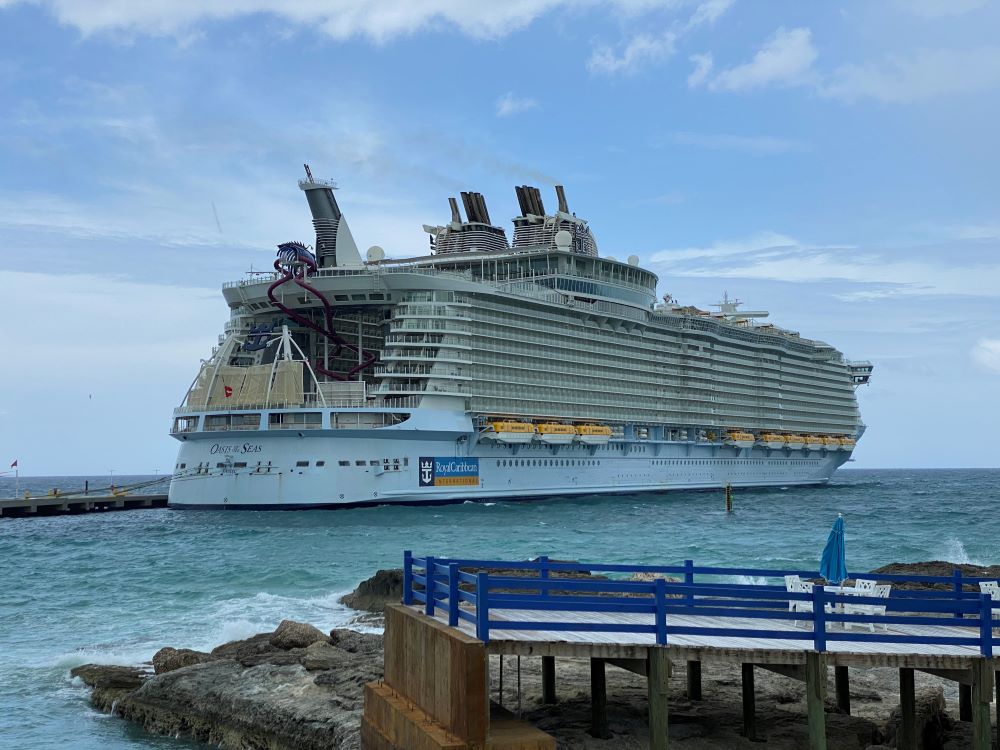
Coming in at more than 225,000 gross tons and over 1,180 feet long after a recent refresh in late 2019 (the ship was originally built in 2009), it can carry 5,600 passengers at full occupancy and squeeze in nearly 7,000 when totally full. (Some rooms can carry more than two passengers).
And with that size comes opportunity. On every cruise ship space is a limiting factor as to what you can put onboard. But with a ship the size of Oasis of the Seas, you can have more of everything. That includes more spots for entertainment, more restaurants, more pools, and more things to do.
Combined, that makes Oasis-class ships like this one different from anything else in cruising. That means even if you’ve sailed other ships — including other types in the Royal Caribbean fleet — you haven’t had the same experience as sailing on Oasis of the Seas.
We recently had the opportunity to sail aboard Oasis. Below, we provide a full guide to sailing on the ship, including a tour, tips, things to know, and our full thoughts.
In This Article...
First Impressions & Ship Highlights

When you step aboard Oasis of the Seas, we think the first impression you’ll get is “big.” Having sailed on plenty of large Royal Caribbean ships in the past, Oasis still stands out as having a massive size.
Public areas throughout the ship, including the Royal Promenade, are wide and spacious — almost cavernous. While other ships in the fleet have a similar promenade setup, the size and space provided on Oasis is like nothing else.
This size extends to nearly every aspect of the ship. We found balconies on cabins to be larger. The casino is larger. Bars are larger. Restaurants are larger. Whirlpools and pools are larger.
In other words, if you’ve ever felt cramped on a cruise ship, then things are different on Oasis of the Seas. And as you’ll see below, that space also provides an opportunity to pack more onto the ship for an experience that’s like nothing else.

Design/Feel If you’ve sailed Royal Caribbean before, then the design of Oasis of the Seas will feel familiar. Much of the design and style you find across the fleet is found on Oasis as well. In other words, it’s nice and modern without feeling stuffy.
Of course, the design will vary based on where you are around the ship. The pool deck? It’s bright and colorful with multiple waterslides, tropical-colored casitas, and an upbeat vibe. The Solarium? It’s more modern and “classy” in design with a quieter atmosphere that feels more refined.
The Boardwalk at the back of the ship has the feel of a carnival, complete with a carousel and two 10-story slides winding down from the top deck. Central Park — complete with thousands of plants — is a quiet spot to relax among greenery and muted colors amid the otherwise active ship.
It’s actually difficult to give an overall definition of the design style as it varies so widely from spot to spot across the ship. Some areas feature lots of glass, chrome, and wood tones. Others are clean, white, and modern. But if you’ve ever sailed the cruise line before, then it will definitely feel like “home.”
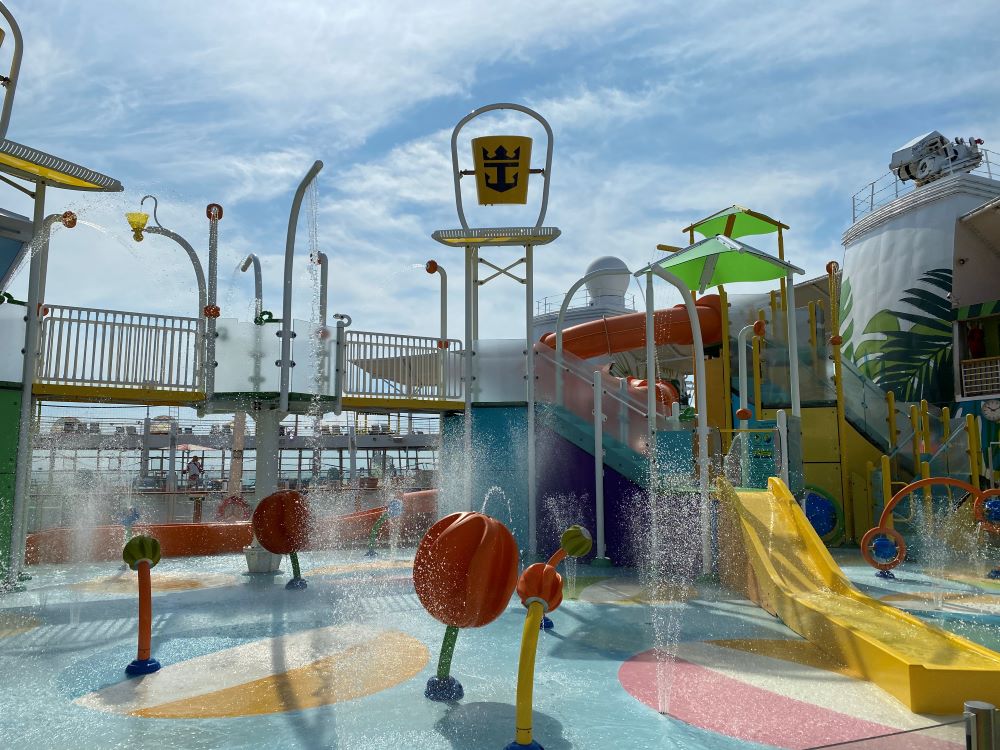
Activities on the Ship With so much space on Oasis of the Seas, you’d expect there to be plenty to do. That’s absolutely right. In fact, we think it’s a good thing the ship normally sails longer itineraries as just a few days isn’t enough to experience everything.
Let’s begin with the massive pool decks at the top of the ship. Starting at the back, you’ll find the dual FlowRiders, offering standing waves. Right nearby is the Ultimate Abyss, a dry slide that takes you spinning down to the Boardwalk below. There’s also the basketball court and mini-golf course. One unique activity here is a zipline that will carry you across the open split in the ship and over the Boardwalk.
Moving forward there is a Splashaway Bay for kids, along with three different pools, and multiple waterslides. At the front of the pool area is the Solarium. This adults-only area is one of our favorites. It’s large, beautiful, offers great views, and provides plenty of sun without having to worry about the wind.
Unlike other ships, Oasis has a split in the middle allowing for more open-air spaces even on lower decks. This includes Central Park on Deck 8, which features a winding path through trees and plants. There are plenty of places to stop and sit, and each side is lined with a number of restaurants and shops. There are also bars where you can have a drink and enjoy the scenery.
On Deck 6 there is the Boardwalk, an open area at the back of the ship. Here you’ll find Playmakers (a sports bar), as well as video games, TVs showing sports, and a pool table. There’s a large carousel, as well as a number of small shops and spots to eat. At the very end of the Boardwalk area is the Aqua Theater, which is flanked on either side by two rock walls.
There’s just as much to do indoors. The Royal Escape Room gives you 60 minutes to launch an Apollo mission — complete with a very authentic 1960’s NASA Mission Control — by solving puzzles with clues around the room.
Kids can play in Adventure Ocean, which features a number of high-tech activities for them to enjoy. The Music Hall is a cool multi-level spot to watch bands perform in the evening and also features a pool table to enjoy during the day.
Inside you’ll also find the Main Promenade, featuring a bars and shops. There’s also Spotlight Karaoke and Boleros whether you want to sing… or just listen to the professionals do it.
Of course, cruise staples like the casino and spa are on the ship and likely larger than you’ve seen on any other ship. Oasis of the Seas also offers a jazz bar, comedy club and even an ice-skating rink. Yes, you can ice skate in the middle of the Caribbean.

Entertainment Royal Caribbean always places a big emphasis on entertainment, and Oasis is no different. As mentioned above, there are a number of music and comedy venues for passengers to enjoy. And the ice skating rink — while offering a chance for passengers to skate — is used primarily for ice shows.
Of course there are also the things put on by the crew during the day, including everything from fitness classes to trivia to sports competitions.
In the main theater you’ll find the major production shows, which most recently was a production of CATS. For Broadway fans, it’s a can’t miss.
But when it comes to entertainment, we think the Aqua Theater is a must-see.
The theater is something completely unique to Oasis-class ships. It features a pool with a floor that moves up and down. Sometimes it is fully up and performers can walk on the water. Other times it is down and they can dive in from above. There are fountains to spray water, diving platforms, lights, and more.
Shows here feature swimmers and dancers doing moves in the pool. Performers fly over the audience. Divers jump anywhere from five to 60 feet above the pool. Slackline performers bounce and flip on their lines above the water. And a performer even walks a tightrope over the audience. It’s all set to music and lights, it’s high energy, and there are no lulls.
Let’s put it another way — if you are on an Oasis-class ship, you can’t miss the show. If you haven’t sailed an Oasis-class ship with the Aqua Theater, then just know that you are definitely missing out on something special.
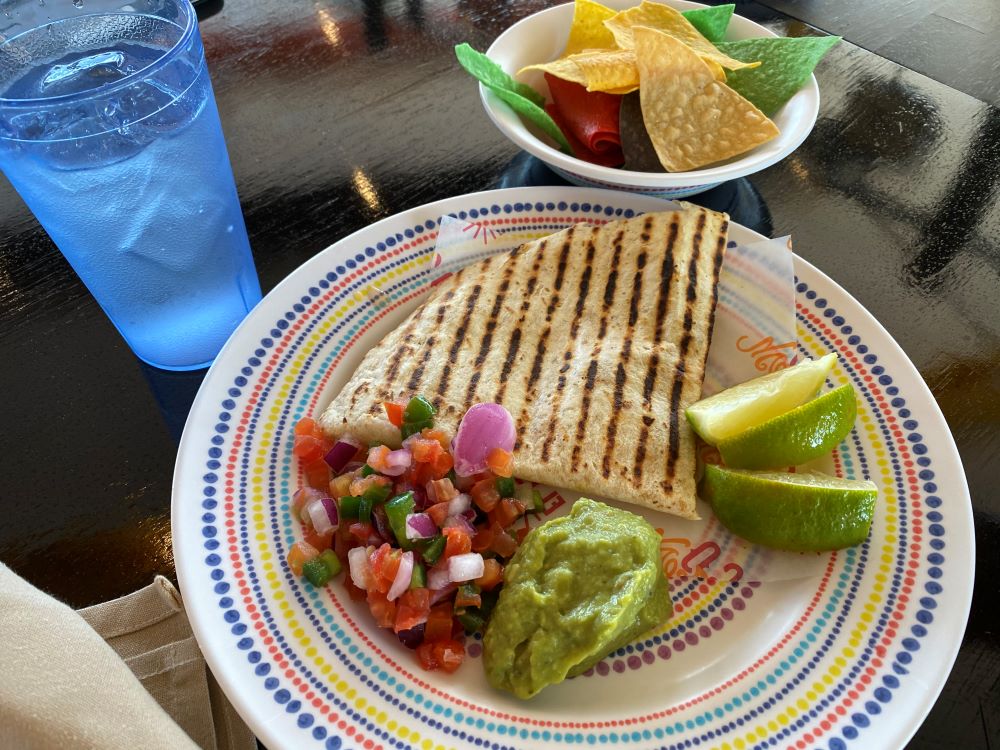
Food & Beverage What’s a cruise without a bite to eat and something to drink? You will not be disappointed on Oasis of the Seas. Given the size, there are numerous restaurants, covering all types of cuisines and atmosphere.
Of course the main dining room and Windjammer buffet are staples for most people during your cruise. These spots are included with your fare, making them popular. Other included meals are El Loco Fresh (Mexican food), the Solarium Bistro (smaller buffet), Boardwalk Dog House (hot dogs), Park Cafe (small eats and breakfast), and Sorrento’s (pizza).
However, while there are a number of spots that serve small bites and snacks, most meals outside the dining room are specialty restaurants that carry an extra charge.
What you’ll find onboard includes everything from cheap eats like Johnny Rockets to fine dining like Chop’s Grille and 150 Central Park. While restaurants are located around the ship, a number of higher-end specialty dining spots line Central Park. This includes Giovanni’s Table.
Just want something tasty without having to dress up? There’s Izumi Hibachi if you want Asian food. There’s also Portside BBQ, serving Texas-style BBQ up on the pool deck. And Playmakers makes an appearance. The sports bar serves food including burgers and Poke nachos to enjoy while you watch the game.
As for bars, there are plenty all over the ship, so it’s never too far from a drink. Two that will definitely catch your eye are Bionic Bar and Rising Tide.
Bionic Bar features no bartender, but you still won’t forget who serves your drink. Instead of human bartenders, there are two robotic arms that make drink orders. Place your order on the electronic tablet and watch as they gather ice, dispense ingredients and shake everything up.
Rising Tide is one bar that you can’t miss — literally. It’s in the middle of the main promenade. It looks like an ordinary bar, but as you enjoy your drink, the entire platform that it is on rises up several decks like a huge elevator. You can choose to get off in Central Park, or complete the ride back down.
Photo Tour of Oasis of the Seas
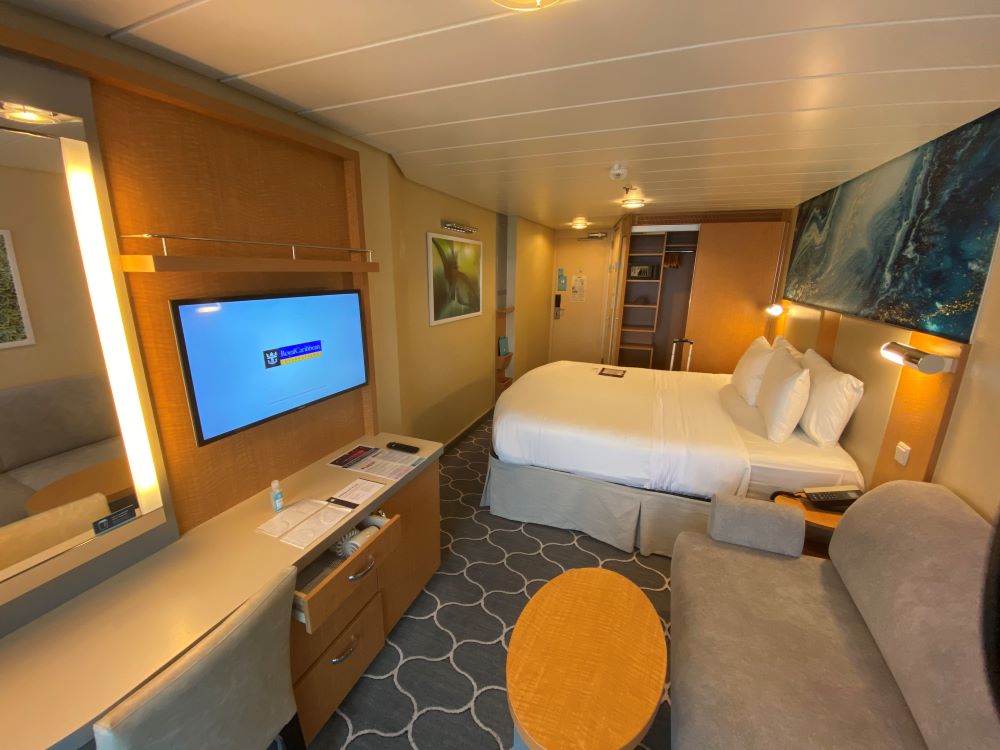
What We Liked About Oasis of the Seas
During our sailing aboard Oasis of the Seas, we became big fans of the ship. To us, it’s the perfect mix of relaxation while also having so much to do that you can’t get bored, even on a longer cruise.
For instance, two of our favorite spots on the ship were the Solarium and Central Park. The Solarium offers plenty of space and feels a world away from the rest of the ship. It’s nice to be able to relax quietly without tons of music or huge crowds.
Central Park is like nothing else seen on a cruise ship. It’s a legit park. We found ourselves enjoying breakfast in the park each morning from the small café located there. It’s the perfect way to start the day.
But when you’re ready for something to do, there’s no end to your options. You can sing karaoke, ice skate, zipline, go down a waterslide, watch a game at Playmakers, watch some of the most amazing shows you’ll see anywhere (not just on a cruise ship) and then do it all again the next day.
In short, the ship offers anything you could want on a cruise — all delivered in a massive package.
What Could Be Improved
Where was the ship lacking? When it comes to the actual ship itself, we felt very little. Despite the revamp in late 2019, some areas did feel a little dated in design, but nothing that stopped you in your tracks.
While there are some people who aren’t fans of the size of the Oasis-class ships, our view is the complete opposite. To us, bigger is better.
In fact, the only real complaint we had during our cruise is that we felt there weren’t enough included spots to eat. There seems to be a trend to include the dining room and buffet, but other spots that serve actual meals — rather than snacks — are an extra charge or only open for lunch.
We will always argue for more included options when it comes to dining.
Oasis of the Seas Tips & Things to Know
During our cruise, we picked up a few tips and learned some things about sailing aboard Oasis of the Seas.
The Solarium Is a Can’t Miss Given its location at the front of the ship, the Solarium isn’t hard to find. But it can be easy to miss. Since it’s at the front, you don’t have to go by it to get anywhere else. Our advice? Definitely check it out. It’s one of our favorite spots on the ship if you’re looking to get away and have some quiet time to just relax.

Check the Door Markers for a Direction Hint Cabin hallways can be confusing to navigate. They are long, have no windows, and you can’t tell if you’re coming or going. Door markers provide a hint. On Oasis of the Seas they are circles, and if you look closely, you’ll see a small arrow on the outer edge. This points forward so you know if you are heading to the front of the ship or toward the back.
The Best Seat for the Aqua Show In the Aqua Theater is a performance you don’t want to miss. It’s like nothing else you’ll ever see as performers dive, dance, fly over the audience and more. With a sunken stage, however, it can be a little hard to see everything from the regular seating. That’s why if you’re able, try to stand one deck up against the railing in front of the rock climbing wall. From this raised vantage point you can see the pool stage perfectly.
Enjoy an Open-Air Breakfast in Central Park Officially, Central Park isn’t listed as a spot serving breakfast. But there is Park Café, serving lighter fare like muffins, croissants, fruit, and the like. We’d suggest grabbing something here and then finding a table in the park (there are a number around). Early in the morning it’s extremely calm and quiet in this part of the ship, making it a wonderful place to eat a relaxing breakfast.

Explore the “Small Wonders” Around the Ship As you walk around Oasis of the Seas, you’ll see little viewing stations here and there. Some look like a large spyglass and others look like binoculars on a stand. These are called Small Wonders. Look inside each one and you’ll see something unique. We won’t ruin the surprise for you about what’s inside, but it’s definitely worth checking out. Kids especially will love trying to find them all over the ship.

Bionic Bar? It’s Neat for One Drink Bionic Bar is definitely attention-grabbing. Who can pass up watching robots make cocktails? And if you’re interested, then definitely order up a drink and check it out. It’s an experience you won’t find anywhere else. But in our eyes the novelty wears off pretty quickly. It’s not likely the sort of place where you’ll sit and have a few drinks like you would at a pool bar.

Suites Are Ridiculous Think of a suite on a normal ship and you might think essentially a balcony cabin with some more space. Not on Oasis of the Seas. Royal Caribbean revamped the ship in 2019 and has some of the wildest suites you’ll ever see. The favorite one that we saw is above the captain’s bridge and offers 180 degree views in the bedroom as it juts out the side of the ship. There are also some of the most luxurious spots you can imagine… if you have the money.

A Secret Arcade Passage for Teens Have a teenager? The teen hangout area is cool, with video games, music, pool tables, and lounge areas. Also, there is a secret passage to get there. In the arcade, tucked in a corner is a game called King’s Passage that looks like an old ’80s style arcade machine. Beat a level or two on the game and it unlocks the door. The machine swings open revealing a passage between the arcade and the teen lounge.
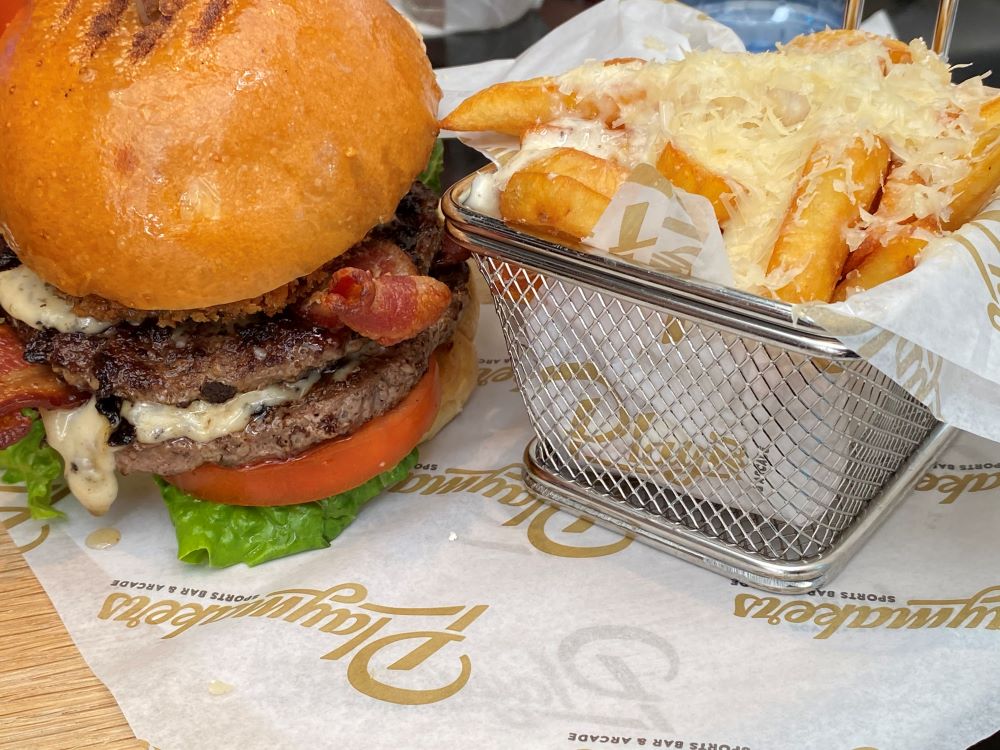
Best Burger? Check Out Playmakers There are a number of spots to get a burger on the ship including Johnny Rockets and the buffet. But if you want the best? Head to Playmakers. It’s an upcharge, but you’ll get one of the biggest burgers you’ll find anywhere. If you’re eating here but don’t want something that heavy, we also suggest the poke nachos, featuring tuna. They are delicious and won’t weigh you down as much.
Reserve, Reserve, Reserve… But Try to Go Anyway if You Don’t With shows and restaurants around the ship, Royal Caribbean is pushing for people to reserve to manage crowds. You can do so through the Royal Caribbean app on your phone. It’s a good idea to reserve as you don’t want to be caught out as the venue fills up. Even so, there will be times that you forget. That’s ok. Head to the venue anyway. If there is space the staff will do their best to accommodate you.
Getting Around is Surprisingly Easy On a ship the size of Oasis of the Seas, you might think that getting around would be difficult. While it can take some walking, actually navigating the ship is surprisingly easy. It’s well laid out where just about every deck offers a clear path from one end of the ship to the other. There aren’t a lot of obstacles or dead ends that mean you have to move up a deck or two to continue on your way.
Snag a Casita Early One of the popular spots on the ship are the casitas on the pool deck. These small covered areas offer a couple of loungers, a charging port, and some shade on sunny days at sea.
During our trip aboard Oasis the casitas were available on a first-come, first-served and filled up quickly. We’ve seen other ships where there is a reservation system and a charge attached. So things might be different on your trip. Even so, it’s a good idea to snag one early if you want to have some shade.
Final Thoughts on Oasis of the Seas
To us, there is just something different about Oasis-class ships such as Oasis of the Seas. If you’ve sailed Royal Caribbean before, but not on its biggest ships, then you haven’t experienced all that the cruise line can offer.
Expect the ship to seem almost overwhelming at first given the size. It can take a few days until you feel like you’ve seen all the areas available to passengers. Even so, after some time it becomes familiar. The great thing is that with so much size there is the perfect space for everyone and so many things to do.
In short, if you have an upcoming cruise aboard Oasis of the Seas, then just know that it should be something special — even if you’re a seasoned cruiser.
Popular: 39 Useful Things to Pack (17 You Wouldn't Think Of)
Read next: park & cruise hotels for every port in america, popular: 107 best cruise tips, secrets, tricks, and freebies, related articles more from author, 10 major differences between royal caribbean and norwegian cruise line (ncl), cococay in cozumel royal caribbean announces new destination in mexico, royal caribbean suspends calls on labadee, royal caribbean gratuities (tips): full guide to cost & how they work, 12 major differences between royal caribbean and carnival cruise line, has royal caribbean canceled calls on labadee, haiti here’s what the cruise line says.
Are there smoking areas? If you have no phone, does that make things difficult?
Yes, there are areas designated for smoking. On our recent cruise, it was pool decks 15 and 16 on the port side. Also, smoking was allowed in the casino when playing.
If you don’t have a phone, don’t worry. There are ship maps and schedules available.
LEAVE A REPLY Cancel reply
Save my name, email, and website in this browser for the next time I comment.
47 Major Crimes Were Alleged on U.S. Cruise Ships in the First Three Months of 2024. Here’s What to Know
The best gift ever for people that love cruises this might be it…, nearly 100 passengers fall ill with stomach virus on princess cruise, hotels with cruise shuttles for every major port in america, 107 best cruise tips, tricks, secrets, and freebies, 39 useful things to pack for your cruise (including 17 you’d never think of).
- Privacy Policy
- Terms & Conditions
Celebrity Blog
- Choosing a Cruise
- Planning / Booking A Cruise
- Preparing For Your Cruise
- Special Occasions
- What To Expect On A Cruise
- Australia, New Zealand & the Pacific
- Central America
- East Coast & Bermuda
- Mexican Riviera
- South America & Antarctica
- Destinations
14 Alaska Cruise Tips to Make the Most of Your Vacation
By Sue Bryant
Last updated: August 8th, 2023
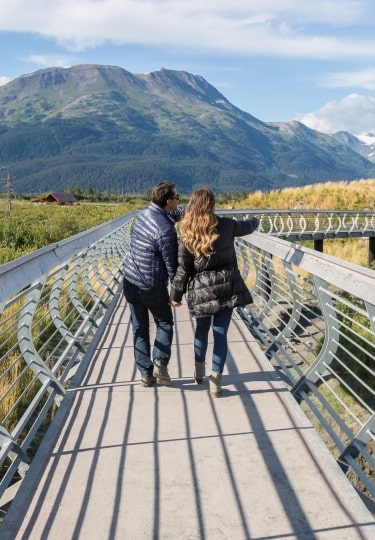
- Find a Cruise
A cruise is by far the easiest and most efficient way to see Alaska. It’s also effortless, as your ship transports you through pristine scenery from one spectacular setting to the next, providing a luxurious experience along the way. But a little insider knowledge with these Alaska cruise tips will help you get even more out of this extraordinary place.
Here are our top tips for an Alaskan cruise to help you plan the ultimate vacation.
Pick Your Season
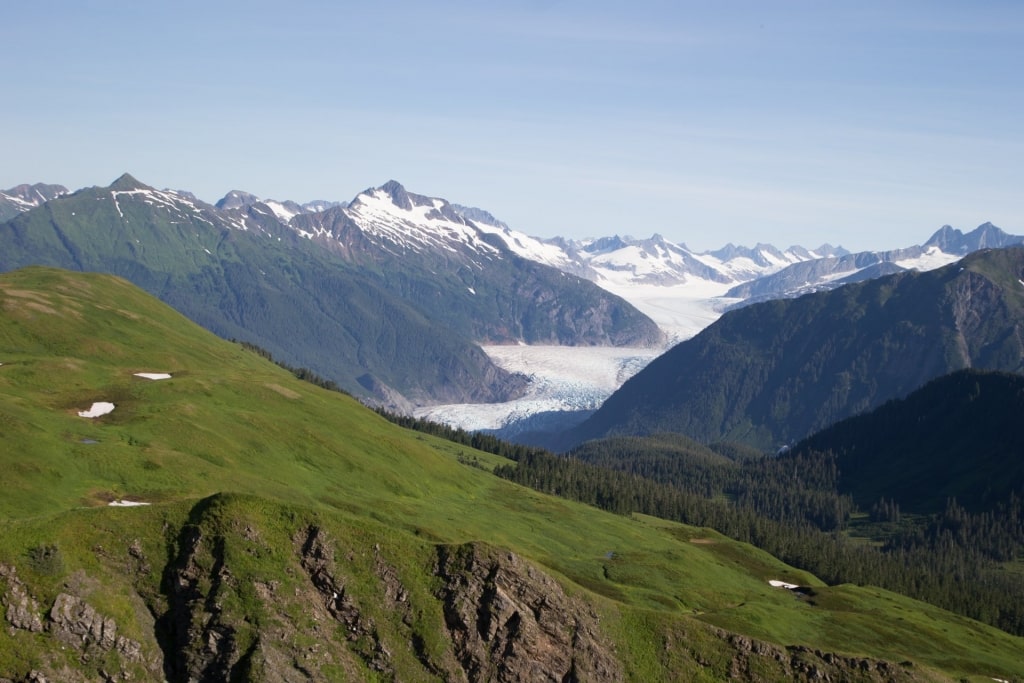
The Alaska cruise season runs from May to October. Summer is short here and every month brings different experiences. In May and June, the wildlife is starting to become active and the days are getting longer. You’re likely to see a profusion of spring flowers and some animals with their young. If you want to visit Denali National Park, avoid going in May as it doesn’t open until June.
One of the best times to travel is in late June, just before the busy peak season, when it tends to be dry and sunny. July and August are the warmest months and the weeks when bears are most active, as the salmon are spawning.
October is the end of the Alaska season. While it’s cool, it’s still an enchanting time to travel as you’ll witness the autumnal ochres and reds of the tundra and the first dusting of snow on the mountains. You’ve got a chance of seeing the Northern Lights shimmy across the dark sky from September, which is a bonus to any journey.
Consider a Cruisetour
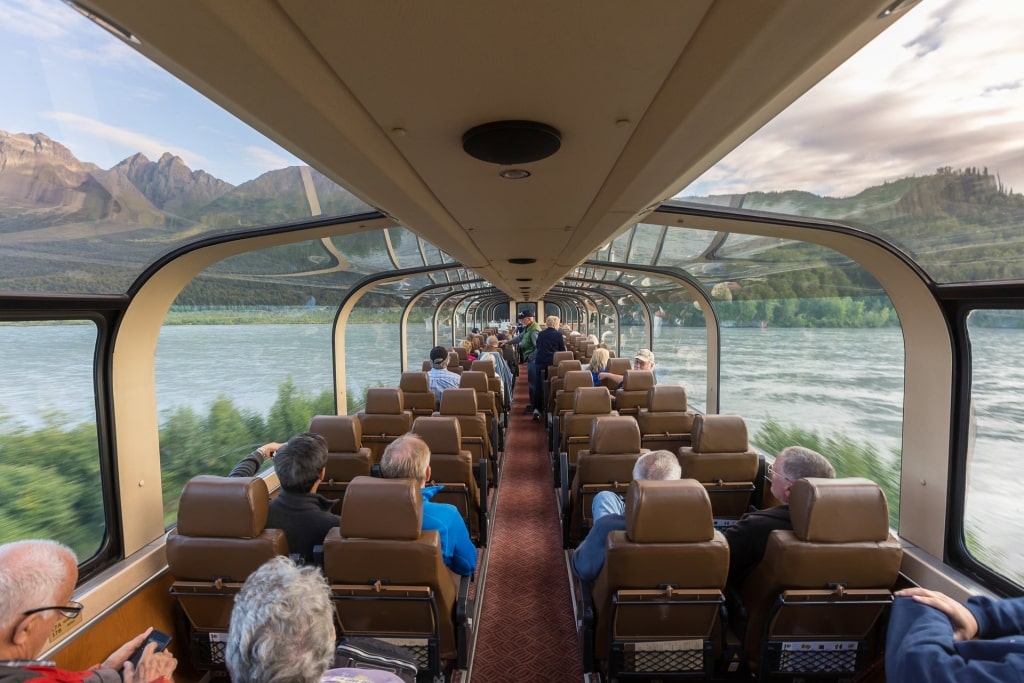
Add a land-based portion to your sea voyage with an organized Alaskan cruisetour , which shows you the best of the 49th state. During the cruise element, you’ll explore the Inside Passage and the coastal towns of southeast Alaska, while the land section might take you to the wild beauty of Denali National Park, the landscape dominated by the ice and granite mass of North America’s tallest mountain.
You’ll visit intriguing towns and cities, from cosmopolitan Anchorage to boho Talkeetna, staying in an upscale wilderness lodge for your time in the park and traveling by motorcoach and scenic train.
Some itineraries take you as far inland as Fairbanks, following the trail of the early gold prospectors, while others might explore the snowy majesty and emerald lakes of the Canadian Rockies.
Read: Things to Do in Downtown Anchorage
Choose Your Itinerary
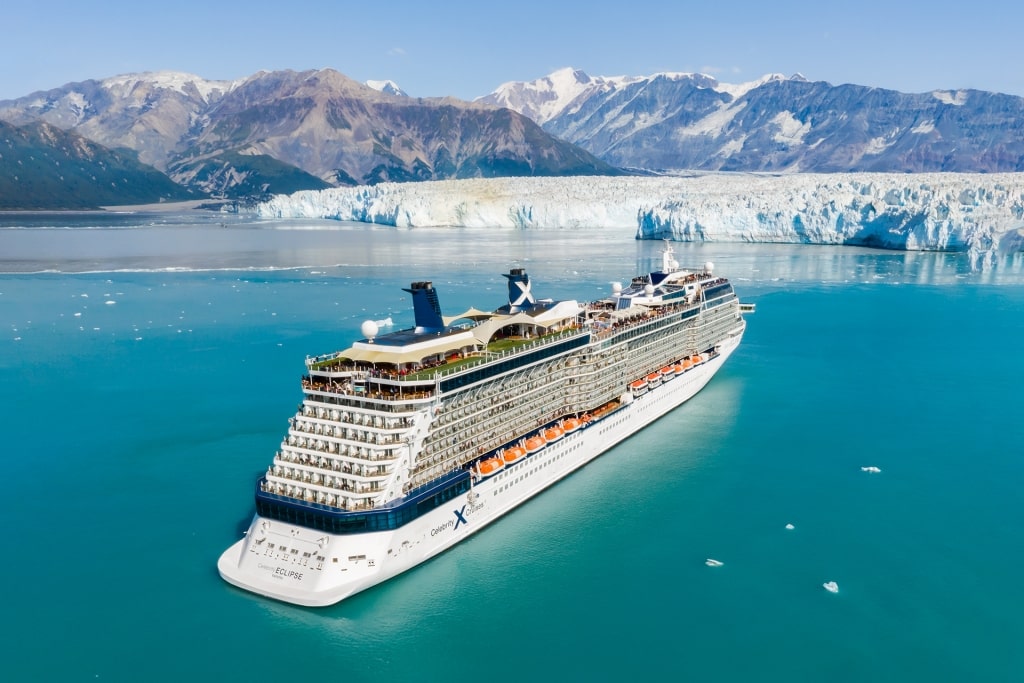
Watch: Luxury Alaska Cruise Aboard Celebrity Cruises
There are advantages to any Alaska cruise route you choose. A round-trip voyage might take you from either Vancouver or Seattle, Washington to Ketchikan, Juneau, Skagway, and Victoria in Canada; a perfectly comprehensive exploration of Alaska with dazzling scenery from start to finish and the opportunity to spend time in either city before or after the voyage.
If you want to explore places further north, like Seward, the gateway to the craggy beauty of the Kenai Fjords National Park, and the mighty Hubbard Glacier, you’ll need to opt for a one-way voyage from Seward flying from nearby Anchorage to Vancouver, Canada. Either way, though, you’ll see majestic glaciers, incredible scenery, and the wild animals of Alaska .
Book a Veranda Stateroom

Celebrity Cruises Veranda Stateroom
One of the best Alaska cruise tips is to book a balcony cabin. Wherever you are, the views are incredible. You can’t beat the experience of stepping out of bed onto your private balcony in the early morning, breathing in lungfuls of invigorating Alaskan air, and taking in the scenery.
Towering mountains, dense forest, and with luck, the uplifting sight of dolphins playing alongside the ship riding the bow wave is the best possible way to start the day.
Your balcony is a wonderful space later in the day, too; a cruise to Alaska is pretty action-packed, and sometimes, you’ll want to enjoy the peace and quiet of your private space as the ship slips its moorings and edges off the dock, bound for another stunning location.
Read: How To Spot Marine Mammals From a Cruise Ship
Take the Kids
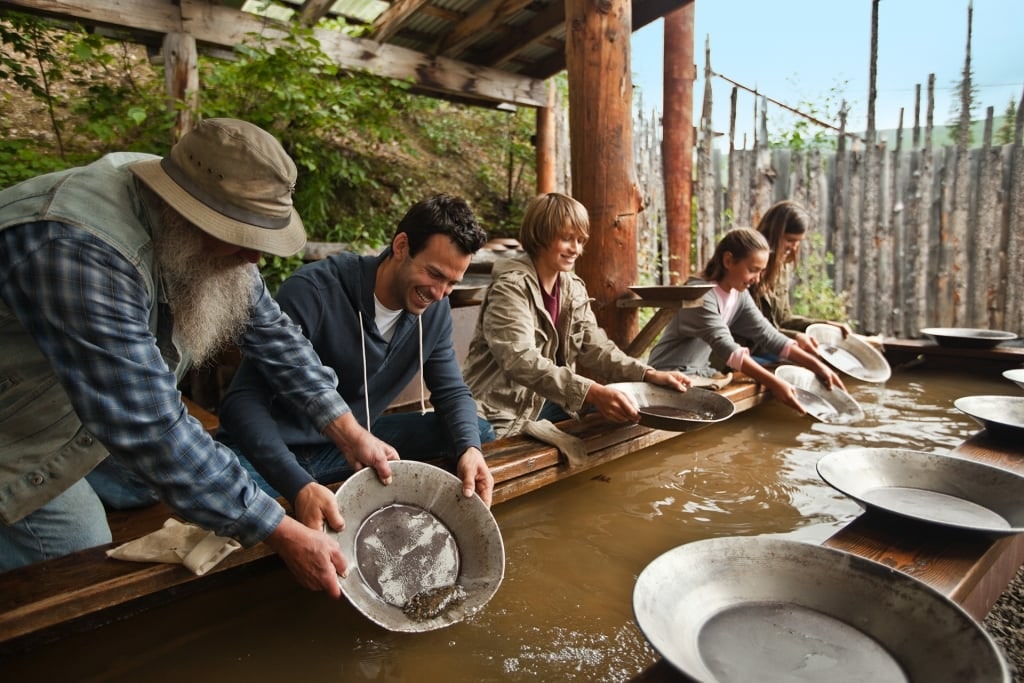
Gold-panning in Fairbanks
Alaska is a fantastic destination if you’re cruising with kids . Kids love the wildlife and adventurous activities that offer a great bonding experience. You can kayak, go whale-watching, embark on a bear hunt, zipline, mush husky dogs, and hike.
Other things kids will love include panning for gold , riding on steam trains, salmon cookouts, and if they’re very lucky, helicopter and seaplane rides.
Alaska is educational, too. Park rangers come on board when you’re visiting parks like Glacier Bay, or natural wonders like the Hubbard Glacier, and provide fascinating information in kid-friendly language. For downtime on board, and to give parents a rest, all of Celebrity’s ships also have excellent kids’ clubs.

Denali National Park
If you’re planning on traveling with children, note that kids may not be as excited as you are about spending hours on end scanning the water looking for distant whales. Make sure to plan your vacation together, as a family, to keep everybody happy.
Read: 18 Tips for Going on an Alaska Cruise With Kids
Pack for all Climates
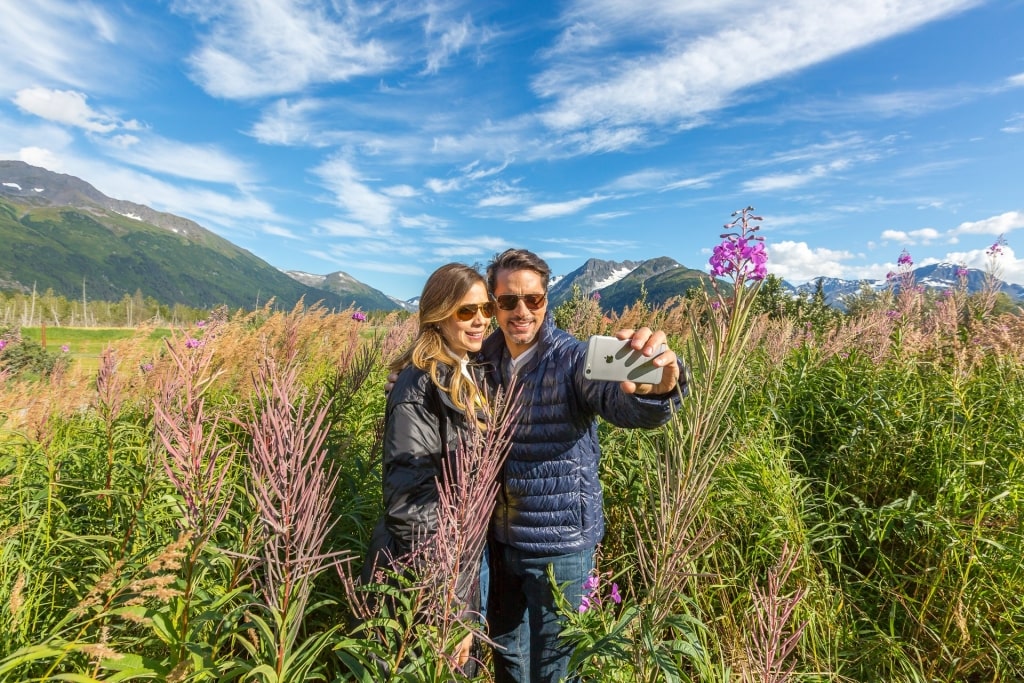
Alaska Wildlife Conservation Center
Layers are your friend in Alaska. While July and August can get quite warm—up to around 67 degrees Fahrenheit in the daytime—the weather can change in minutes. You’ll need base layers, a couple of fleeces, a lightweight jacket (preferably waterproof), gloves, and some decent walking shoes.
A windproof item is ideal for the time you’ll spend on deck, whether the ship is sailing and you’re out looking for whales, or if you’re floating silently at the face of one of Alaska’s colossal glaciers.
If you book excursions like kayaking, the necessary equipment will be provided, but do bring closed-toe shoes, which are essential for activities like ziplining. Remember a swimsuit as well. While you may not be taking a dip in Alaska’s icy water, there’s plenty of opportunities on board to take a refreshing dip or relax in a hot tub.
For evenings, smart casual is perfectly fine with a couple of Evening Chic occasions to dress up, but nothing as formal as tuxedos and ball gowns—unless you want to, of course.
Read: What to Pack for an Alaska Cruise
Don’t Forget Your Binoculars
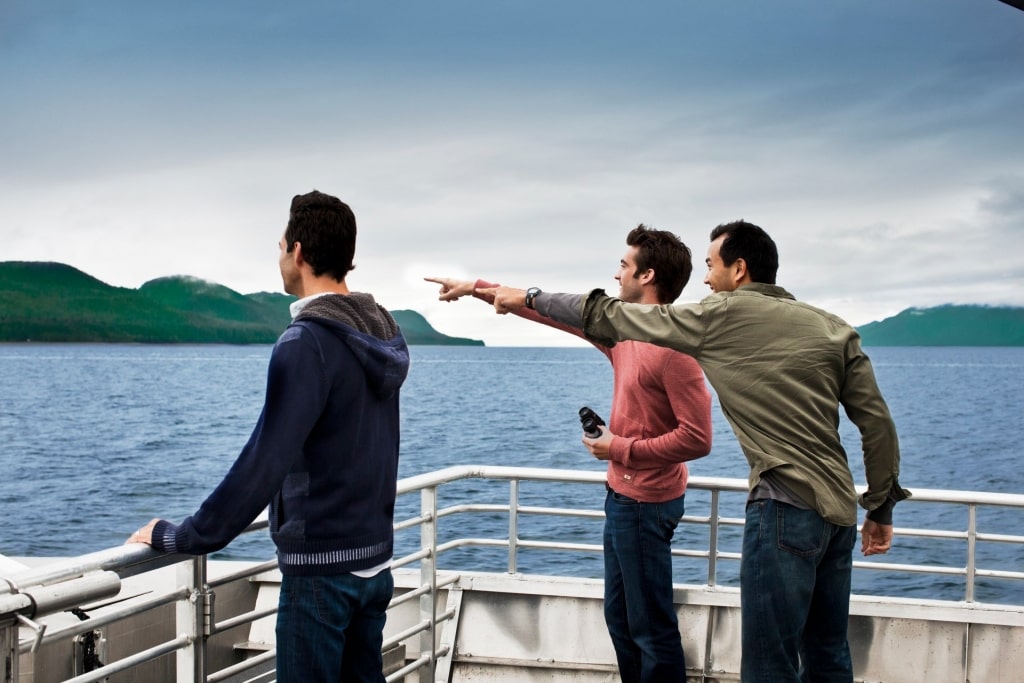
Whale-watching in Alaska
Alaska is known for its magnificent wildlife, but sometimes, it’s in the distance. You might spot a bear foraging on a beach, or snoozing in a tree, for example, so the ability to get a close-up view is invaluable.
A distant whale blow becomes all the more exciting if you can zoom in and try to identify the species. One of the most useful tips for Alaskan cruise fans is to bring more than one pair unless you want to be haggling constantly about whose turn it is.
Read: Alaska Whale-Watching Cruises
Bring a Dry Bag
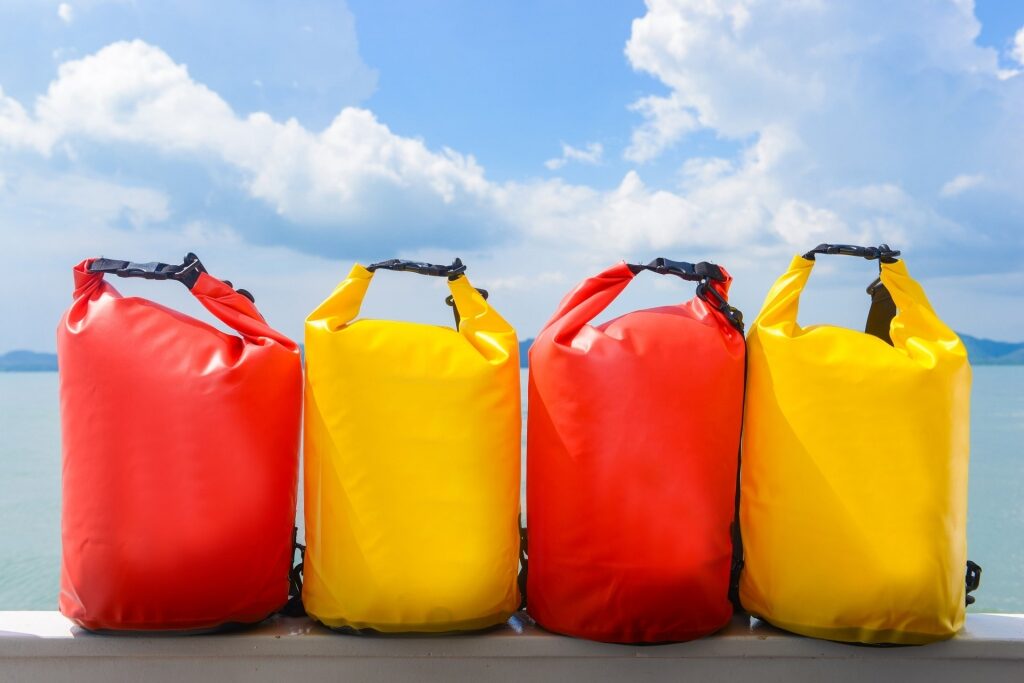
The state gets a fair amount of rain and mist, although you’d be unlucky if it rained all day during the summer in Alaska . Still, a roll-top dry bag, ideally with straps so you can wear it as a backpack, is a worthwhile accessory for going ashore, as you’ll be carrying cameras, phones, and other equipment.
It’s even more useful if you’re planning on joining a kayaking excursion, or heading off on a small boat where you’ll want to protect your gear from the spray.
Remember Your Zoom Lens

Humpback whale in Alaska
While a smartphone will certainly capture your Alaskan adventure , a zoom camera can bring out the real detail; the colors on the head of a bald eagle or the tail of a humpback as it dives.
A wide-angle zoom lens is the best option if you don’t want the hassle of changing lenses all the time while photographing Alaska . The light in Alaska is so beautiful that it’s worth bringing a quality camera, whether you’re shooting the ethereal morning mist on the water or a salmon-pink sunset.
Read: Wildlife Photography Tips for Beginners
Support the Local Economy
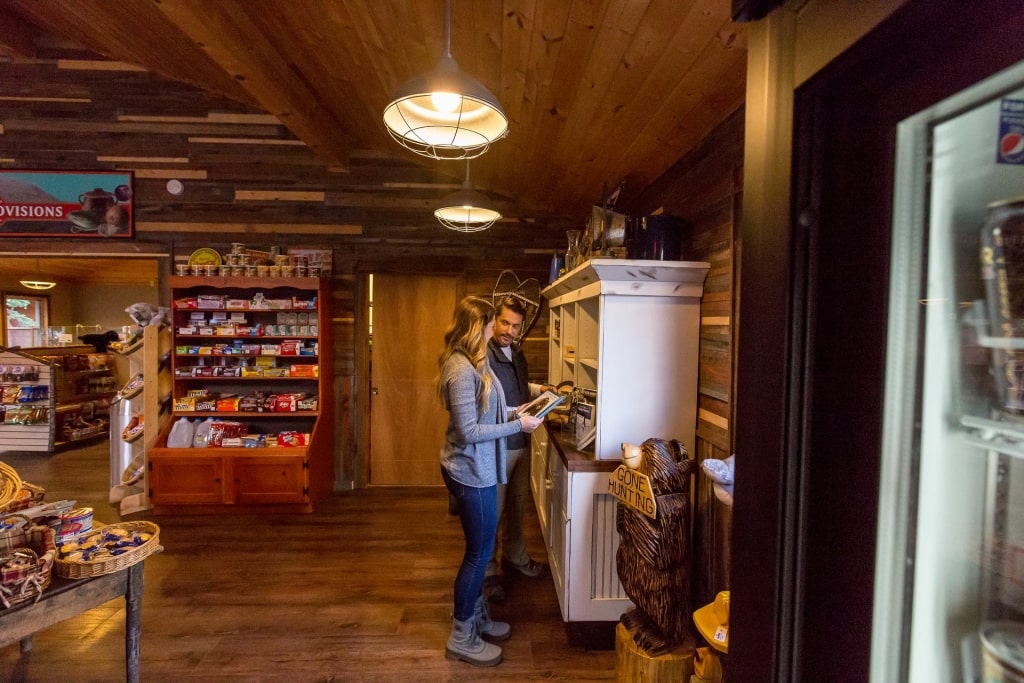
You can buy some cool souvenirs in Alaska , and there’s no shortage of retail opportunities in each port. Look for the Alaska Grown or Made In Alaska logos. When you buy local, you’re supporting the economy of towns that rely on a very short tourist season.
Locally made jewelry is a great buy, especially made from Alaskan jade, as are Christmas tree decorations, wood carvings, vacuum-packed Alaskan salmon, boxes of chocolate “moose poop” as amusing gifts for friends back home, and clothing.
“Bear claw” salad servers made from wood, not actual bear claws, are a typical Alaskan gift, as is a bottle of birch syrup, the state’s answer to maple syrup.
Plan Your Shore Excursions
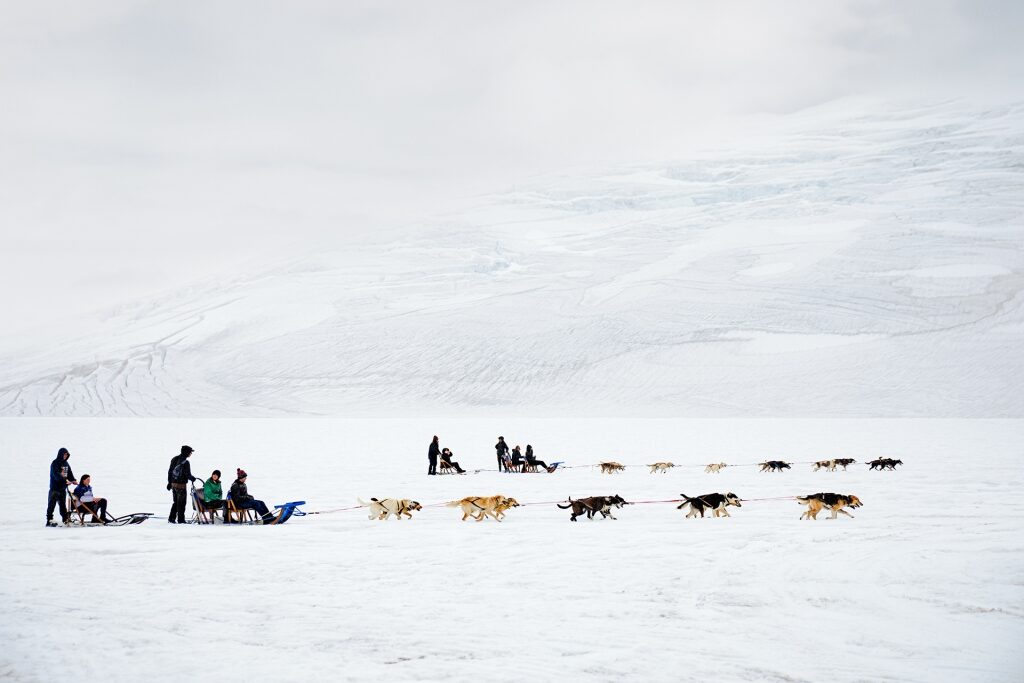
Watch: Discover Juneau With Celebrity Cruises
An Alaskan cruise can be pretty busy if you pack your vacation with back-to-back shore excursions. While these are without doubt the best way to make the most of your time here, and the only real way to make it out into the true wilderness, there are ports where you can mix it up and do your own thing as well as enjoying the tours.
Ketchikan , for example, is compact, and it’s easy to wander along quaint Creek Street, the former red light district, now packed with craft stores. In Juneau, you could whizz up the Mount Roberts Tramway for a view of your ship and the surrounding mountains and then spend time in town.
Sitka, too, is a friendly little Alaskan town around which you can stroll independently, while downtown Seward is a cool, fun place to have a relaxing lunch or sample some craft beers.
You will, however, want to join expert-led Alaskan shore excursions if you want to see bears close up, try a guided hike, head out on a kayak tour, or go whale watching with an expert.
Ziplining is available at several ports, although Icy Strait Point is arguably the most thrilling; if you’re traveling with kids, you’re likely to be pressured into at least one zipline adventure.
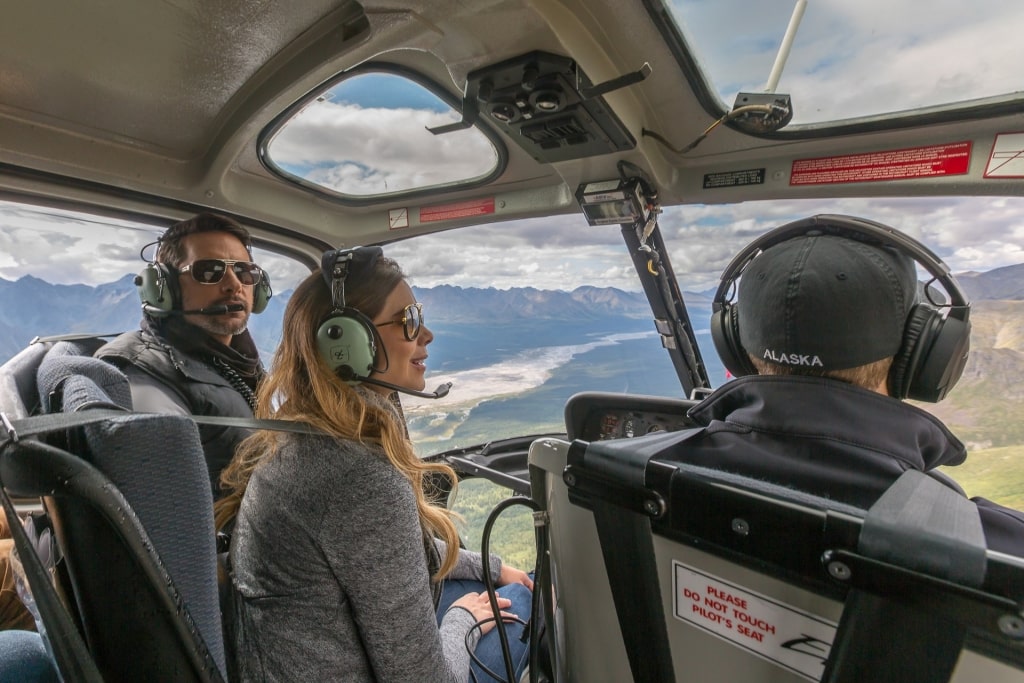
Then there are the once-in-a-lifetime opportunities you won’t want to miss. Meeting working huskies at a sled dog kennel outside Juneau. Soaring over the Tongass National Forest in a helicopter and landing on a glacier to trek on the ice. Or clattering along the contours of narrow valleys on historic the White Pass & Yukon Route Railroad.
Read: Best Places to Visit In Alaska for the First Time
Follow the Rules

Brown bear in Tongass National Forest
You’ll need some flexibility to travel in Alaska. July, for example, is salmon spawning season and tasty salmon means hungry bears.
As such, you may find that a lot of the forest trails could be marked off-limits with “Do Not Cross” tape because of bear activity, especially if you’re near a salmon spawning river. This is advice everybody should take seriously. Alaska is real wilderness, not a theme park, and the rules are there for your safety—and that of the wildlife.
Get the Best Views from the Ship
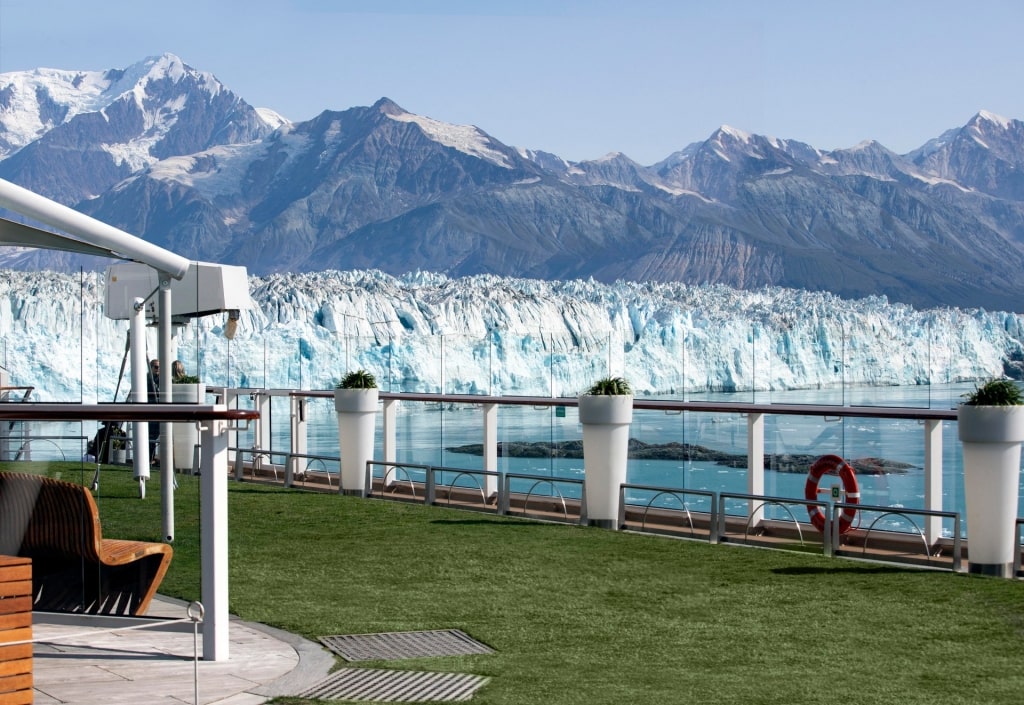
Hubbard Glacier
With a bit of planning, you can position yourself on the ship for the most beautiful views at the right time. For example, at sunset, when the ship sails the smooth waters of the forested, island-specked Inside Passage, you’ll want to be near a window.
If you like the idea of Italian classics in Tuscan Grille, a specialty dining restaurant that spans the aft end (the back) of Celebrity Eclipse and Celebrity Solstice or runs along the side of the ship on Millennium, book a window seat for dinner, timed for around sunset or earlier, and enjoy dreamy views of the ship’s wake and the pristine scenery.
Head for cocktails at the popular Sunset Bar, or take your morning coffee in the Sky Observation Lounge for uninterrupted forward views. Set up camp on the Lawn Club (on Celebrity Solstice and Celebrity Eclipse) for the best views, while lounging on the grass with a steaming mug of hot chocolate. Fleece blankets are provided on deck for cooler days.
Read: Port Vs. Starboard: What Side of the Ship Is Best?
Try Alaskan Cuisine

Alaskan King Crab
No trip to Alaska is complete without sampling the delicious local produce. You’ll be able to try Alaskan dishes on board, but there are a few classics to sample in port, too.
In Juneau, Tracy’s King Crab Shack does the ultimate crab bisque, as well as whole buckets of king crab legs with melted butter. Meanwhile, one of the best things to do in Ketchikan for foodies is to visit the Alaska Fish House for all things fish, as the name suggests—fish tacos, fish and chips, and the restaurant’s signature smoked salmon chowder.
You can sample Alaskan salmon on a shore excursion, too. Book a tour that includes a salmon bake, for example, from Juneau, you can kayak the ice-strewn bay in front of the Mendenhall Glacier and then feast on grilled salmon in a forest clearing and grill marshmallows over a fire pit.
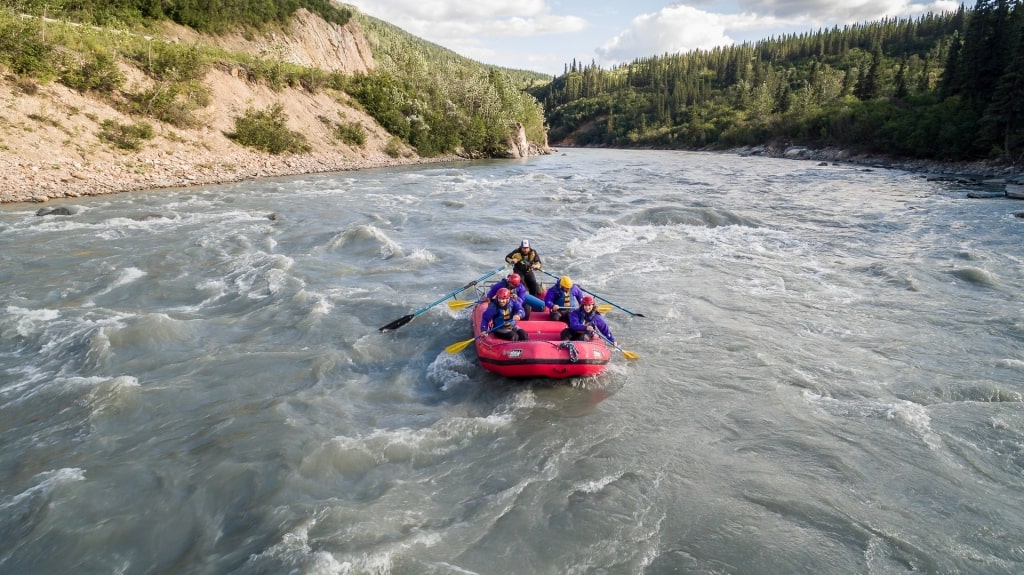
Watch: Luxury Alaska Cruises Aboard Celebrity Cruises
Inspired to start planning your next Alaskan adventure? Browse our range of exciting cruises on our website .
Sue has been writing about cruising for 20 years and is lucky enough to have sailed all seven continents. She lives in London, where she is cruise editor of The Times and The Sunday Times newspapers, as well as a freelance contributor to magazines and websites worldwide.
Related Itineraries
Alaska Southbound Glacier
- 7 nights ON CELEBRITY SUMMIT
- DEPARTING FROM SEWARD, ALASKA
- Starting from $249 USD
Alaska Northbound Glacier
- DEPARTING FROM VANCOUVER, BRITISH COLUMBIA
- Starting from $348 USD
Alaska Hubbard Glacier
- 7 nights ON CELEBRITY SOLSTICE
- Starting from $699 USD
Alaska Dawes Glacier
- 6 nights ON CELEBRITY EDGE
- Starting from $700 USD
- Starting from $762 USD
- 7 nights ON CELEBRITY EDGE
- DEPARTING FROM SEATTLE, WASHINGTON
- Starting from $8143 USD
Related Articles
11 Alaska Mountains to Add to Your Bucket List
The Ultimate Alaska Food Guide
11 Awe-Inspiring Waterfalls in Alaska to Explore
11 Things to Do in Homer, Alaska
10 Best Things to Do in Downtown Anchorage
Why a Cruise is the Best Way to See Alaska
15 Best Beaches in New England
30 Best Things to Do in San Juan, Puerto Rico
Ireland Travel Tips: Everything You Need to Know
When Is the Best Time to Visit Malaysia?
14 Best Things to Do in Aruba
13 Best Things to Do in Bridgetown, Barbados
Free Vacation Planning Services

CALL US 888-751-7804
Sign Up for Special Offers
- First Name *
- Last Name *
- Email Address *
- Country * Country Afghanistan Albania Algeria American Samoa Andorra Angola Antigua and Barbuda Argentina Armenia Australia Austria Azerbaijan Bahamas Bahrain Bangladesh Barbados Belarus Belgium Belize Benin Bermuda Bhutan Bolivia Bosnia and Herzegovina Botswana Brazil Brunei Bulgaria Burkina Faso Burundi Cambodia Cameroon Canada Cape Verde Cayman Islands Central African Republic Chad Chile China Colombia Comoros Congo, Democratic Republic of the Congo, Republic of the Costa Rica Côte d'Ivoire Croatia Cuba Curaçao Cyprus Czech Republic Denmark Djibouti Dominica Dominican Republic East Timor Ecuador Egypt El Salvador Equatorial Guinea Eritrea Estonia Ethiopia Faroe Islands Fiji Finland France French Polynesia Gabon Gambia Georgia Germany Ghana Greece Greenland Grenada Guam Guatemala Guinea Guinea-Bissau Guyana Haiti Honduras Hong Kong Hungary Iceland India Indonesia Iran Iraq Ireland Israel Italy Jamaica Japan Jordan Kazakhstan Kenya Kiribati North Korea South Korea Kosovo Kuwait Kyrgyzstan Laos Latvia Lebanon Lesotho Liberia Libya Liechtenstein Lithuania Luxembourg Macedonia Madagascar Malawi Malaysia Maldives Mali Malta Marshall Islands Mauritania Mauritius Mexico Micronesia Moldova Monaco Mongolia Montenegro Morocco Mozambique Myanmar Namibia Nauru Nepal Netherlands New Zealand Nicaragua Niger Nigeria Northern Mariana Islands Norway Oman Pakistan Palau Palestine, State of Panama Papua New Guinea Paraguay Peru Philippines Poland Portugal Puerto Rico Qatar Romania Russia Rwanda Saint Kitts and Nevis Saint Lucia Saint Vincent and the Grenadines Samoa San Marino Sao Tome and Principe Saudi Arabia Senegal Serbia Seychelles Sierra Leone Singapore Sint Maarten Slovakia Slovenia Solomon Islands Somalia South Africa Spain Sri Lanka Sudan Sudan, South Suriname Swaziland Sweden Switzerland Syria Taiwan Tajikistan Tanzania Thailand Togo Tonga Trinidad and Tobago Tunisia Turkey Turkmenistan Tuvalu Uganda Ukraine United Arab Emirates United Kingdom United States Uruguay Uzbekistan Vanuatu Vatican City Venezuela Vietnam Virgin Islands, British Virgin Islands, U.S. Yemen Zambia Zimbabwe

STAY IN THE KNOW
Thank you for subscribing.
See you on board soon.
#13 - Tokyo, Japan Travel Like Locals
- Places & Travel
Episode 13 will give you tips and tricks on how to experience Tokyo like a local through a brief history lesson and an interview with local tour guide, Mariana! Website: www.tllpod.com Instagram: @TLL_Pod TikTok: @TLL_Pod
- Episode Website
- More Episodes
- Alex Tabary
- Dragon’s Dogma 2
- Genshin Impact
- Honkai Star Rail
- Lego Fortnite
- Stardew Valley
- NYT Strands
- NYT Connections
- Apple Watch
- Crunchyroll
- Prime Video
- Jujutsu Kaisen
- Demon Slayer
- Chainsaw Man
- Solo Leveling
- Beebom Gadgets
Valorant Breeze Map Guide: Layout, Callouts, Tips & Tricks, and More
- Breeze is a three-lane map in Valorant that is heavily favored toward the attacker side and contains unique gimmicks over on the A site.
- Jett, Viper, and Yoru are the ideal agents for this map while Sova or Cypher can help you gather info.
- Knowing important callouts like pyramids, sniper's nest, and halls can help you while playing Breeze.
Valorant Breeze Release Date and Location

Breeze Minimap Layout Overview
Although Breeze seems like a typical three-lane map, it is full of entry points and long angles. It is also considered the biggest map on Valorant . The A site is slightly closer to both attackers and defenders. On the other hand, the B site is relatively far from the attacker spawn.

Valorant Map Breeze: Callouts
Breeze a callouts.
The entrance of A callouts are:
- Ascender/ Zip
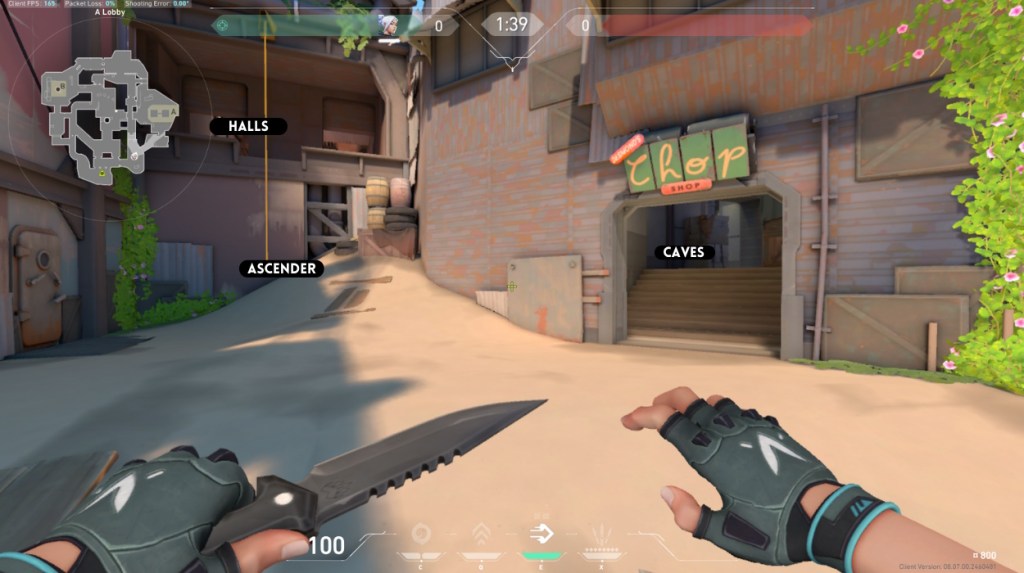
Breeze Mid Callouts
- Chute/ Vent
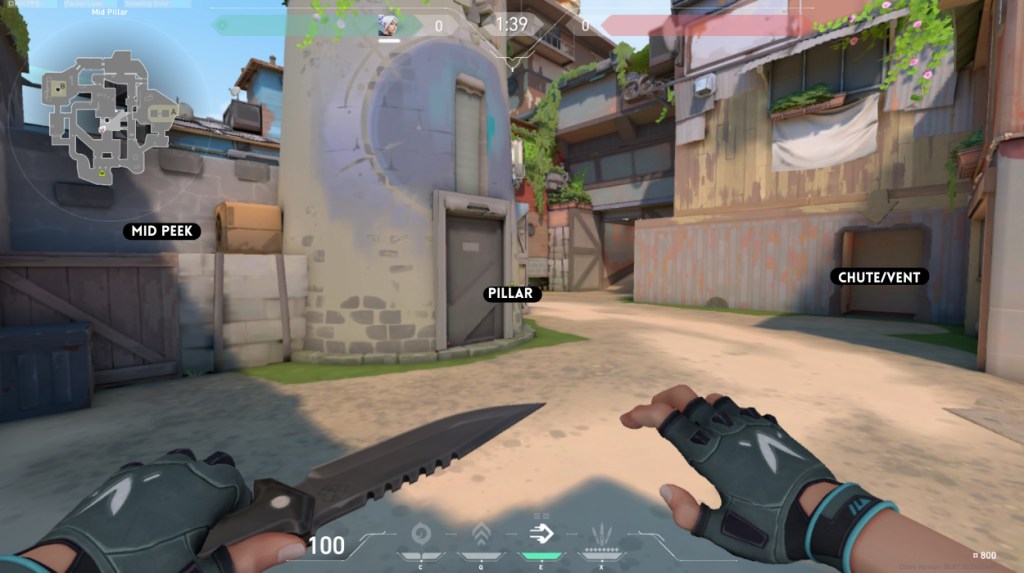
- Sniper’s Nest
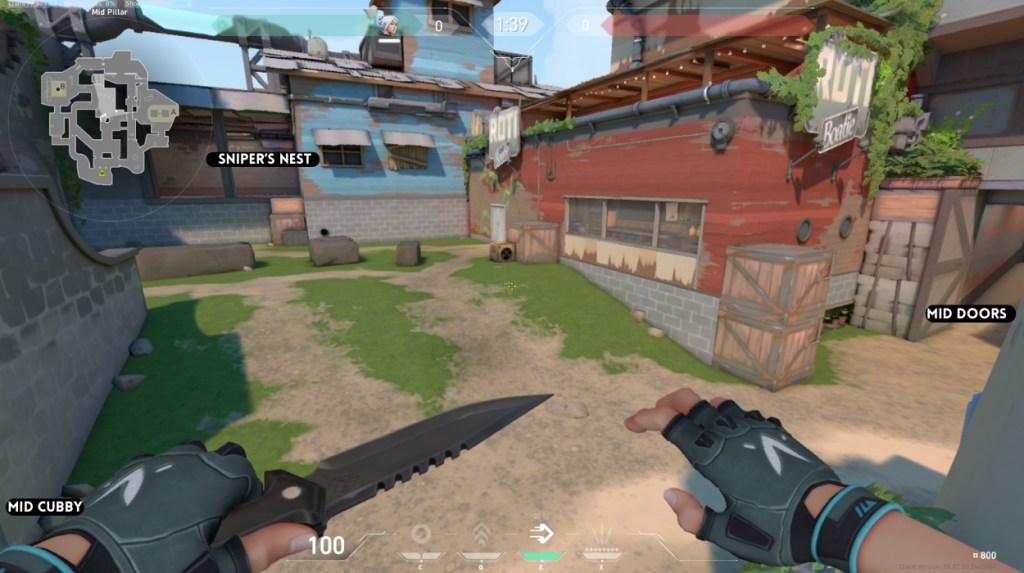
Breeze B Callouts

Callouts from B’s backside are:
- B Back Pillar

Best Agents for Breeze Map in Valorant
Best breeze map tactics and strategies, 1. viper-harbor: double trouble.
The best way to dominate Breeze is by playing double controller. As it is a big map, controlling most of the site can be a huge advantage. Viper and Harbor can be dominant both in attack and defense on this map. However, Viper can also lurk during the attack, while Harbor must stick to his team.

2. Take Mid and Halls Control
3. utilize the operator.
The ideal way to use the sniper is after reading enemy movements. Once you know which site or location the enemy agents are playing at, you will have easy peeks into their deaths. Just make sure to have a short or frenzy for some backup.
4. Pre-Plan Site Execution
Ishan Adhikary
A gaming nerd who cover all thing video games. Spending time looking through the games and gaming industry was always a dream. Thanks to Beebom, I live it. Once I am done gaming, I write. Once I am done writing, I game.
Add new comment

Follow Polygon online:
- Follow Polygon on Facebook
- Follow Polygon on Youtube
- Follow Polygon on Instagram
Site search
- Manor Lords
- Dragon’s Dogma 2
- FF7 Rebirth
- Zelda: Tears of the Kingdom
- Baldur’s Gate 3
- GTA 5 cheats
- PlayStation
- Dungeons & Dragons
- Magic: The Gathering
- Board Games
- All Tabletop
- All Entertainment
- What to Watch
- What to Play
- Buyer’s Guides
- Really Bad Chess
- All Puzzles
Filed under:
- Manor Lords guides
9 things to know before starting Manor Lords
How to get started with this complex city builder
Share this story
- Share this on Facebook
- Share this on Reddit
- Share All sharing options
Share All sharing options for: 9 things to know before starting Manor Lords
/cdn.vox-cdn.com/uploads/chorus_image/image/73307467/manor_lords_art_2.0.jpeg)
Manor Lords is complex, fidgety, and more than a little impenetrable. There’s a lot that will be familiar about it if you’re a veteran of city-building games, but Manor Lords has it’s own idiosyncracies even with those. And that makes tips and tricks less important than just general advice and quick explanations of those quirks, so that’s what we’ll focus on for this beginner’s guide.
Below, we’ve got nine things to know before you get started playing Manor Lords with advice on things like building your town, how labor works in the game, keeping your town fed, and managing your resources. If you’re looking for more detailed explainers, we’ve got separate guides for growing your town , increasing Regional Wealth , and setting up your first farm .
Expect more construction than combat
Like the dev said on Steam , Manor Lords is “a citybuilder with battles,” not a grand army simulator. It’s a city and resource management game first. With peaceful settings, it can even be downright cozy.
:no_upscale()/cdn.vox-cdn.com/uploads/chorus_asset/file/25418446/batt.jpg)
Don’t make combat your focus going in — and, for that matter, don’t expect combat to be a focus at all, really. Even with aggressive opponents — bandits and other lords — battles are pretty rare. Building up an army means building up a lot of infrastructure — mines, bloomeries, blacksmiths, logging camps, joiners, and more — before anyone even picks up a weapon.
Manor Lords is one of the more infrastructure-intensive city builders out there. For example, let’s say you want to start producing yarn — not even clothes, just yarn. You’ll need a livestock trader, a sheep farm, and a weaver’s workshop at a minimum. But each part of that process requires a family to be assigned to the building(s), and families require burgage plots to live on. That’s a bare minimum of four buildings already, and that doesn’t even touch on keeping the town supplied with food and fuel — which increases the number of buildings you’ll need in place before you can get a single sheep much closer to eight or 10.
:no_upscale()/cdn.vox-cdn.com/uploads/chorus_asset/file/25418479/Manor_Lords_large_town.png)
That sort of infrastructure interdependency and complexity holds true throughout Manor Lords . Getting a town humming along smoothly takes a lot of planning (and trial and error) to make sure you’ve got everything you need in place.
All of that planning and infrastructure starts with burgage plots
Burgage plots are the basic unit of your town
Think of burgage plots as mixed-used zoning where your town’s families will build houses and workshops. Depending on the size and shape of the burgage plot, there might be room for additional housing (adding a house for a second family to the plot) or an extension (for a garden or a workshop).
:no_upscale()/cdn.vox-cdn.com/uploads/chorus_asset/file/25418478/Manor_Lords_burgage_plots.jpg)
Burgage plot extensions are a weird aspect of Manor Lords because they mix together housing and industry. But that industry is often vital to your town. Early on, burgage plots can grow vegetables and collect eggs from backyard chickens. Later, upgraded and extended burgage plots that you turn into workshops are how you’ll make everything from ale to weapons.
There are still single-use buildings you’ll have to build — things like logging camps and sawpits, sheep farms and weaver’s workshops, barley farms and malthouses — but the final step in the supply chain is usually built at a burgage plot.
Those standalone buildings all have to be run by a family that lives in your town because…
Families are the work units in Manor Lords
You don’t have any control over individual people in Manor Lords . Instead, you’ll assign families to buildings and, by extension, assign them to jobs. Think of it like the way surnames and bynames evolved in late Medieval western Europe — people working in a bakery took the last name Baker, sheep herders took the last name Shepherd, etc.
By default (while they’re unassigned), families in Manor Lords do, basically, whatever the town needs. Usually, this is construction — any buildings or upgrades you have happening — or escorting the town’s oxen around to haul timber (usually for construction). They also seem to (but don’t quote me on this — those little people are hard to follow around) pitch in by moving goods to the granary, storehouse, and marketplace.
:no_upscale()/cdn.vox-cdn.com/uploads/chorus_asset/file/25418482/Manorlords_Screenshot_2024.04.25___17.08.49.99.png)
Once you have a building built, you have to hit the plus button to assign a family to work there. This takes one of the unassigned families and makes them dedicated to working at that building. They still tend the garden or livestock on their burgage plots and, more importantly, if you pause or remove the assignment from the building, they’ll go back to the unassigned pool.
Speaking of tending gardens…
Vegetable gardens are more important than farms
Farms and farmland are a thing you’ll deal with in Manor Lords as your town grows. But, especially starting out, they’re not as important as you might expect. They’re a lot of work for not a lot of reward. And, on top of that, farms require even more infrastructure.
:no_upscale()/cdn.vox-cdn.com/uploads/chorus_asset/file/25418475/Manor_Lords_vegetable_garden.jpg)
Instead, it’s better to just build the vegetable garden extension onto a burgage plot. For example, if you give your first couple burgage plots huge backyards, you can build two vegetable gardens that will grow enough for an entire game — we have one town with a population of over 200 people that still get their vegetables from those first two vegetable gardens.
Gardens and the other burgage plot extensions cost Regional Wealth to build. And Regional Wealth is a little confusing.
Burgage plots and Regional Wealth are related
Regional Wealth is basically how much cash your town’s families have on hand. Regional Wealth is where the town’s taxes come from. It’s also what your town will use to import goods. Confusingly, it doesn’t have anything to do with your town’s marketplace . Instead, as the name implies, it’s about wealth instead of just money and that wealth comes from either exporting surplus goods or just from upgrading burgage plots.
Upgrading your burgage plots is also how you’ll advance in the game. But upgrading comes with new requirements, so…
Expanding too fast will make villagers unhappy
Development points are a reward you’ll get as your town reaches certain milestones — building five burgage plots, upgrading two of those five to Level 2 burgage plots, and so on. Upgrading burgage plots gives you access to more and better extensions (like backyard workshops — see above), but they also increase the requirements for those plots. For example, you’ll need access to two kinds of food to upgrade a plot from Level 1 to Level 2. We’ve got a whole guide to upgrading your town that walks you through the first few settlement levels.
Once you do start upgrading burgage plots, though, the families on that plot will expect two kinds of food to be available from then on. And if your town can’t supply that, they’ll start to get unhappy, which lowers your approval and slows down your town’s growth as well as makes your militias lose morale.
:no_upscale()/cdn.vox-cdn.com/uploads/chorus_asset/file/25415138/Manor_Lords_marketplace_cover.png)
Keeping your town supplied is as much a exercise in building up a surplus as it is in laying out your town carefully — we’ve got a guide to how marketplaces distribute goods here.
Try to limit yourself to only building as many burgage plots as you need for the next upgrade and development point instead of just expanding your town to get more and more families moved in. Sometimes, this will mean assigning and unassigning families over the course of a year. Which is possible because…
Everything is seasonal
A year in Manor Lords is divided into the typical four seasons — spring (March through May), summer (June through August), autumn (September through November), and winter (December through February). Things happen in the world depending on the season — for example: you can’t gather berries during winter, crops grow during spring and summer and then are harvested (and replanted) in autumn, and your sheep farms don’t produce wool in the winter (the sheep would get cold). The winter’s temperature also means that all of your burgage plots and families consume twice as much fuel to keep warm.
:no_upscale()/cdn.vox-cdn.com/uploads/chorus_asset/file/25418455/Manor_Lords_winter_scene.jpg)
That ebb and flow of resources is how you can get away with having fewer families than available job assignments. You can have a family work on a farm during the autumn, and then swap them to a forager’s hut come spring while the crops grow. Or you can move a family back and forth between a clay mining pit and the clay furnace that turns that clay into rooftiles.
You also have a couple ways to manage renewable resources, like…
Forester’s huts offset logging camps
:no_upscale()/cdn.vox-cdn.com/uploads/chorus_asset/file/25418459/Manorlords_Screenshot_2024.04.25___12.09.27.40.png)
Logging for timber is a pretty destructive process and you’re going to run out of easily accessible trees pretty quickly. You can move a logging camp for free, but even then you’ll still run out of trees eventually. If you build a forester’s hut (2 timber), though, a family assigned there will plant trees. Those trees take a while to grow — they’re trees, after all — but pairing a forester’s hut with a logging camp can actually provide a steady (if slow) and renewable supply of timber.
You can even switch a single family back and forth between the two jobs if you need to — have them grow trees for a couple years, and then spend the next year cutting them down.
You keep your families healthy by upgrading forager huts
:no_upscale()/cdn.vox-cdn.com/uploads/chorus_asset/file/25418465/Manorlords_Screenshot_2024.04.25___16.59.21.70.png)
One final upgrade that’s a bit harder to notice is the add a herb garden (25 Regional Wealth, 2 planks) for a forager hut. There’s a mechanic happening in the background where your townsfolk can get sick — all you might see about this is a quick notification. This is probably going to become more obvious and visible as the game continues through its early access.
Sick villagers are less efficient at work, and the way to heal them back up is with herbs . Those herbs come from the garden upgrade to a forager’s shack. Once they’re gathered, they’re stored in the granary and distributed at a marketplace.
- Beginner’s guide
- Burgage Plots
- How to farm
- Marketplaces
- Regional wealth
- Your first town
The next level of puzzles.
Take a break from your day by playing a puzzle or two! We’ve got SpellTower, Typeshift, crosswords, and more.
Sign up for the newsletter Patch Notes
A weekly roundup of the best things from Polygon
Just one more thing!
Please check your email to find a confirmation email, and follow the steps to confirm your humanity.
Oops. Something went wrong. Please enter a valid email and try again.
Loading comments...

Can Clefairy be shiny in Pokémon Go?

Vocaloid queen Hatsune Miku is coming to Magic: The Gathering

How to make ale in Manor Lords

Palworld is getting a frog with a stick (and 3 other new Pals)

Get every graphic novel and art book published for The Witcher and Cyberpunk 2077 for just $18.

Give your handheld a little extra space with these SSD deals
4 tips for finding the cheapest concert tickets on StubHub
- Published: Apr. 26, 2024, 11:05 a.m.

Taylor Swift's "Eras Tour" is one of the tours that has been impossible to get tickets to for many fans. Getty Images for for TAS Rights
- Nicole Iuzzolino | NJ Advance Media for NJ.com
We know all too well that getting the concert tickets you want, at the right price, can be a massive battle.
From hidden fees, to obnoxious prices and constant sold-out tickets for certain shows, many fans ultimately give up on seeing their favorite artists live.
Fortunately, the secondary market website StubHub has given these forlorn fans many opportunities to secure tickets at reasonable rates for highly coveted tours.
For those who didn’t get off the presale or missed the general sale for massively popular tours such as Taylor Swift’s , Olivia Rodrigo’s , Bad Bunny’s and so many others, were able to get tickets through StubHub .
If you don’t want to pay an arm and leg for tickets, because you just shouldn’t have to, here are all the tips and tricks we have to securing the cheapest tickets on StubHub .
1. Use the “Demand for this Event” feature
Some incredibly popular tours , such as the “Eras Tour” , show an annotation stating demand for this event is high ; an indicator to buy tickets sooner rather than later.
When this red “high demand” indicator is seen, this is StubHub warning you that tickets are likely to sell out way before the concert date or that ticket prices will rise the closer it gets to the concert date, not decrease because sellers know that the demand is high.
So, if you’re shopping around for a concert and see this note and the tickets are in or around your price range, it might be in your best interest to buy then, rather than wait.
2. Use the “Here’s What’s New” feature
With this “Here’s What’s New” feature on StubHub , concert ticket buyers can see how many ticket listings there are for certain shows they are interested in.
You can also see how many tickets were sold in the last two days, see new ticket listings for the show you are interested in and price drop listings for the shows that have been sitting around for a period of time and had the price reduced by the seller.
This feature can help you gauge when to buy tickets and if you should wait for ticket prices to drop, based off the certain patterns you may be seeing. As well, it can also help you filter what the cheapest tickets are much more easily.
3. Look at the “Trending Events Near You” feature
If you are craving a live music experience and are not sure where to go, then the StubHub home page will be your best friend.
The StubHub homepage allows concert fans to find concerts in their area, specifically concerts that are hot tickets.
The concerts in the “Trending Events” section are numbered based on popularity, allowing fans to get an idea of how many people may be fighting to get tickets for that particular show.
4. Wait to get your hands on tickets closer to the show
While it may be risky for certain tours, ticket prices do drop as it gets closer to certain show dates.
Again, it is a risk because many tickets will sell out, but if there are tour tickets that have been sitting around for a while, prices will most definitely drop. These tickets will ultimately sell out fast, so you have to act fast.
The Best Upcoming 2024 Tours
- Idina Menzel announces a 2024 summer tour with 1 stop in NYC. Here’s how to see her live
- Staind and Breaking Benjamin announced a joint N.J. concert. Here is how you can see them live
- Maggie Rogers added a 2nd MSG concert to her 2024 tour. Here’s how to get tickets
- Kygo is making 1 stop in N.Y. during his 2024 world tour. Here’s how get tickets to his first tour in 6 years
Our journalism needs your support. Please subscribe today to NJ.com .
Nicole Iuzzolino can be reached at [email protected] . Have a tip? Tell us at nj.com/tips .
If you purchase a product or register for an account through a link on our site, we may receive compensation. By using this site, you consent to our User Agreement and agree that your clicks, interactions, and personal information may be collected, recorded, and/or stored by us and social media and other third-party partners in accordance with our Privacy Policy.
16 Manor Lords tips and tricks for beginners
Become the ultimate Manor Lord with our tips for beginners and advanced players alike
Looking for some tips and tricks to help you get started in Manor Lords? It's quite astonishing, what Slavic Magic - predominantly a one-person dev team - has done in creating Manor Lords . The newest city-builder on the block does a whole lot of things rather differently to most games in the genre, with a gridless building and roads system and the inclusion of Total War-style combat being the main two features players have talked about ahead of release.
But as with many city-builders (and perhaps here more than most), it can be difficult to understand exactly what needs doing and when. There's already a lot of content in Manor Lords, even in early access, and not much in the way of tutorials that teach you how everything actually works, or the best strategies to employ to build your settlement from nothing to greatness.
In this guide, we offer 16 (well, actually more like 40) of the best Manor Lords tips and tricks for both beginners and advanced players alike. We'll go over everything from family management and road placement to the different seasons, trade, warfare, and much more. So let's get started!
1. Hold TAB to view extra information
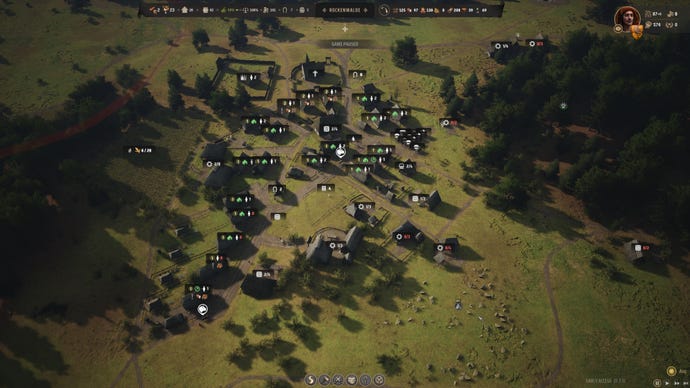
At any point in Manor Lords, you can hold the TAB button to bring up the additional information overlay. This overlay gives you a lot of extra detail at a glance about all the buildings in your settlement, including where your families are working, the current Approval requirements of your citizens, the rate of growth of your crops, and more.
Every couple of minutes I hold TAB and scan my entire settlement to see how everything is doing. It's a fantastic and essential feature that helps you quickly spot any potential issues with your growing town.
2. Unoccupied families will build for you
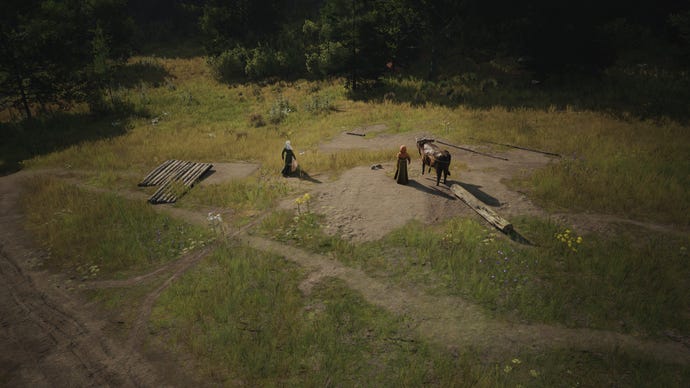
The basic unit in Manor Lords is the family, and you can set families to work in different buildings by clicking on the building and using the plus (+) and minus (-) icons to assign or unassign families. But if you are in the process of building any new buildings anywhere, don't assign all your families to work , because only unassign families will build for you.
You can check how many families are assigned or unassigned to jobs by looking at the first two numbers in the top hotbar. The first icon (next to the hammer) is the number of unassigned families who will carry out any building jobs around your settlement.
3. Store your starting supplies before it rains

Weather can be deadly in Manor Lords, and rainfall is common . When you first start a Manor Lords playthrough, you need to quickly move your starting supplies into a Storehouse and Granary so they are protected from the next rain.
If you don't do this, then those crucial starting supplies (including your food) could be ruined within the first few days of your playthrough. Make it a priority to store resources that are out in the open as quickly as possible.
4. Take time to understand the seasons
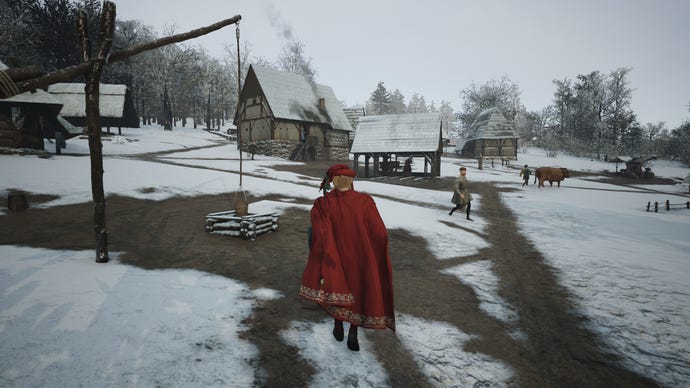
Seasons are very important in Manor Lords. Not only will Winter prove a more difficult survival challenge thanks to double Firewood consumption and the need for Clothes to keep everyone warm, but you also need to synchronise your farming with the different seasons. You should aim to do all your harvesting and sowing during the Autumn months (September, October, November), before leaving them to grow over the Spring and Summer months.
You can hover over the current month displayed in the bottom-right corner of the screen to get a full breakdown of the different seasons and their effects on your settlement in Manor Lords.
5. Optimise road placement
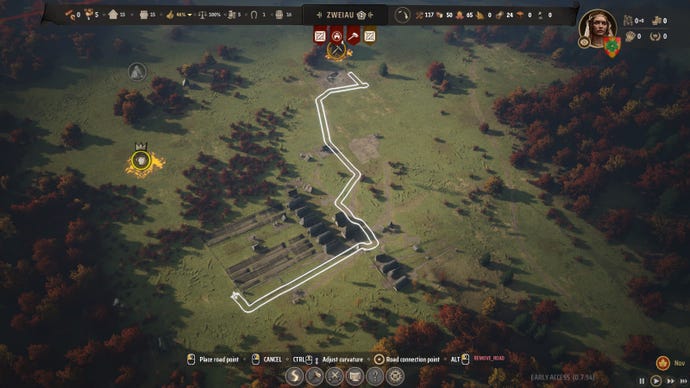
Roads aren't just fun to place in Manor Lords. They make movement much faster for your populace, and so it's important when placing roads to give your citizens the shortest, quickest journey between where they are and where they're going. For example - when beginning a new game, make a conscious decision to build a straight road from your Logging camp to the area you're going to spend most time building, so that your families waste as little time as possible ferrying Timber to and fro.
6. Be very careful with finite resources
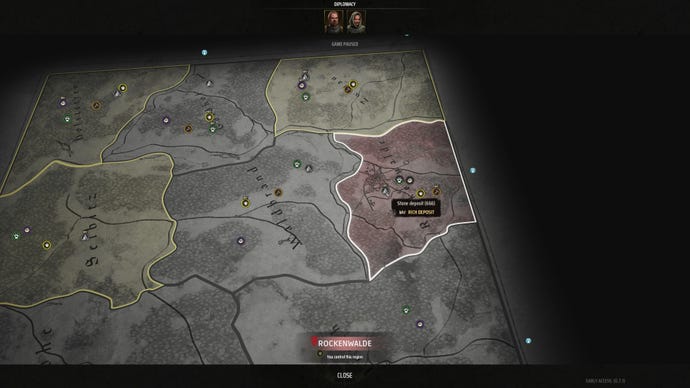
Manor Lords is full of finite resources. Iron and Clay deposits can disappear over time; Berries will only grow at certain times of the year; Wild Animals can be hunted to extinction; even trees and forests are limited resources on the Manor Lords map.
So for each of these resources, you should be very careful not to run yourself out of them entirely. Learn the best ways to prolong these resources. Here's what we suggest:
- Iron and Clay Deposits: Research Deep Mining to turn Rich Deposits into infinite deposits.
- Berries: Research Forest Management to double Berry Deposit capacity.
- Wild Animals: Give your Hunting Camps a Hunting Limit so you don't accidentally kill too many animals.
- Trees: Construct a Forester's Hut to replenish fallen trees around your Logging Camp.
7. Work your families as efficiently as possible
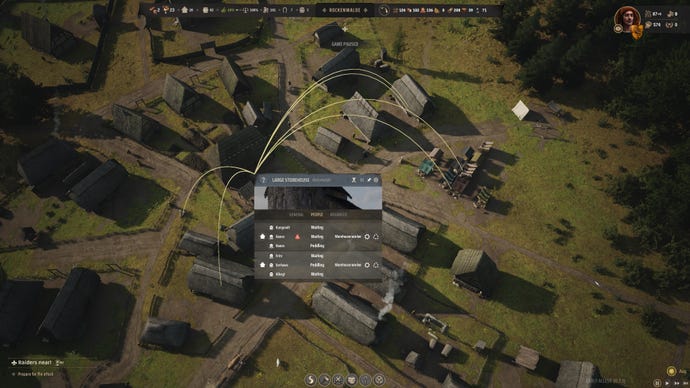
Families do all the important work in Manor Lords, so to really kickstart your settlement, you should try to maximise their efficiency. This tip is actually two tips in one, but both are related and of equal importance:
Make families work close to their homes.
Click on a Burgage Plot and select the "People" tab, then click the "Show Workplace" button with the cog icon. This shows where that family is working. If they work far from home, click the button next to the cog to "Reassign family to a different workplace". If you do this regularly, then your entire Population will become much more efficient because far less working time will be wasted on travel.
Keep changing where your families work depending on need.
If you don't have any construction jobs, then don't leave any families unassigned: set them to work. If your Berries are depleted for now, unassign the families at the Forager Hut. If you don't have Ale , then there's no need for families to work in the Tavern. Move your families around as needed to grow your settlement more quickly.
8. Create Plots with Living Space Extensions
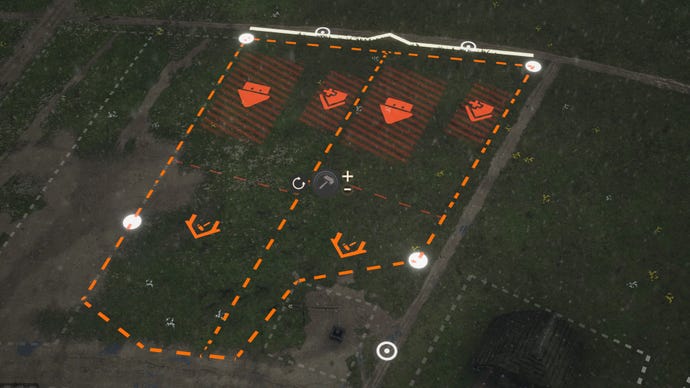
Thanks to the flexible plot system, not all Burgage Plots are created equal. It's a very good idea early on to place down Burgage Plots so that they have Living Space Extensions (the small house with the plus icon). You can get these Plots more easily by reducing the plot divisions before you place down a Burgage Plot.
With a Living Space Extension, you can double the capacity of a single Burgage Plot by selecting it and clicking the "Expand Living Space" button. It costs 2x Timber - the same as creating a new plot - but the benefit is that you only have to upgrade the one plot instead of two. And upgrading is expensive, so prioritising Living Space Extensions will save you lots of resources in the long run.
9. Get another Ox and Hitching Post early on
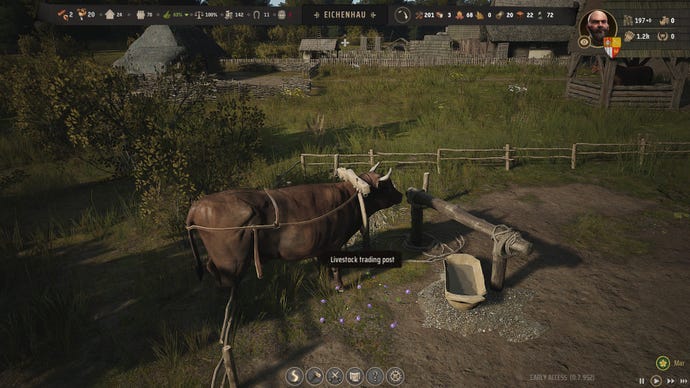
Likely the biggest bottleneck early on in expanding your settlement will be ferrying resources to where they're needed. This is predominantly the job of your Oxen , but with just one Ox and one Hitching Post, you'll never get things done in a timely manner.
Spend the 25x Regional Wealth early on to get an additional Ox, and your productivity will soar. Suddenly buildings will get built so much quicker. It's also a very good idea later on to build additional Hitching Posts and Stables in different areas of your settlement, so that Oxen don't spend ages travelling to where they're needed.
10. Build multiple marketplaces across your town
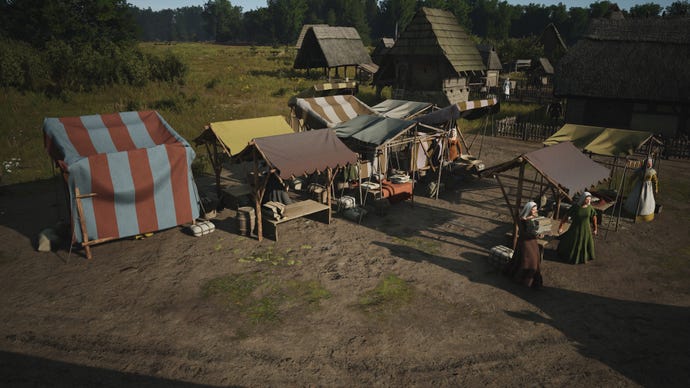
Another efficiency tip that escapes many new players' notice: Marketplaces are essential for the happiness of your families in Manor Lords. Families will themselves set up Market Stalls inside Marketplace areas, but they have to physically travel there in order to sell their wares. Minimise their travel time by creating multiple smaller Marketplaces throughout your settlement, so that every Burgage Plot in the vicinity is near a Marketplace.
11. Set up Trade as soon as you have goods to sell

Learning how to trade is an enormous part of any Manor Lords player's first playthrough. To start trading, build a Trading Post and enter the Trade tab of the building to set various resources to be imported and exported.
There's no point in building a Trading Post before you have items to sell, but the instant it feels like you have a good surplus of any item, start exporting. You'll need all that Regional Wealth later when it comes to purchasing weapons and armor , or settling new territories.
12. Export Warbows for big profits
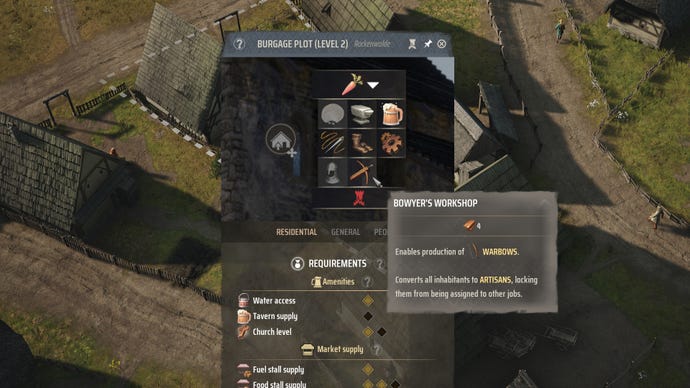
Once you're past the early-game of Manor Lords, by far the best way to get oodles of Regional Wealth is by crafting and exporting Warbows . Each Warbow is made from just 1x Planks, and you can start crafting them as soon as you've got one or two Burgage Plots with Bowyer's Workshops as their Backyard Extensions.
Warbows are amazingly easy to make, and each one sells in the Trading Post for 5x Regional Wealth . For reference: if you just export the 1 Plank it took to make the Warbow, you'd only gain 2x Regional Wealth. That's a 150% markup. Business is good.
13. Start small when farming
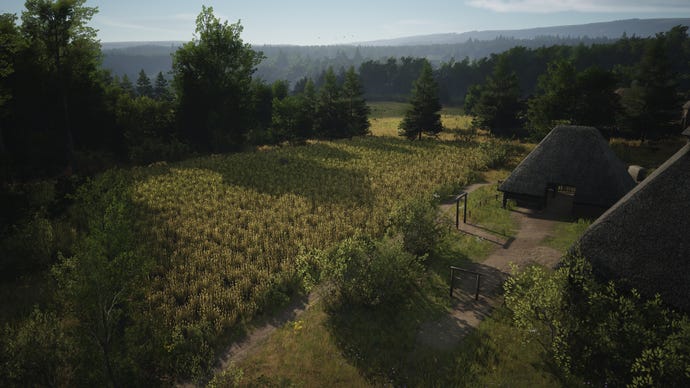
It may be tempting when you first start farming in Manor Lords to just place down one giant farm and say "there, that's all my food needs for the time being sorted". But large farms are very tricky . Everything has to be done in accordance with the seasons, so your workers have a limited amount of time to do every part of the farming process.
Therefore, it's best to start small with your first couple of farms. Farm sizes are measured in "Morgens", and we'd recommend your first farm stays at around 1.0-1.5 Morgens . The bigger farms can come later on.
14. Don't build more than you need
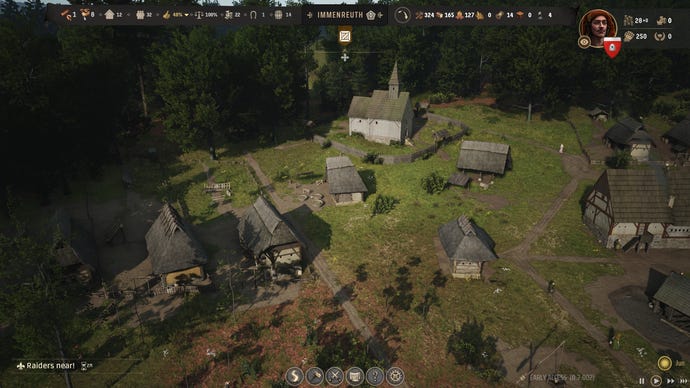
Have you ever stopped to ask yourself why you're building that Malthouse before you've even got Barley? Or why you've got a Sheep Farm before you've imported any Sheep ? Most of the buildings in Manor Lords are available to build from the start of the game, which can trick you into thinking you should build them all as soon as possible. You don't.
Building more than you need is a fantastic way to run yourself out of Timber and stall production of your settlement. Play it slow , and build what you need when you need it, and not before.
15. Get the right Development Points early on

Development Upgrades form the tech tree of Manor Lords, and some of them are very, very powerful. We go over the most important of them in our best Development Upgrades guide , so we won't repeat ourselves here. But remember that, at least when you first start a Manor Lords game, Development Points are rare and precious, and you should invest them where they're most needed. Having an Ox plough a farm sounds cool (and it is), but it might not be your top priority.
16. Deal with Bandits as they arrive

Your first brush with the Total War-esque combat of Manor Lords will likely come into play when Bandits first start appearing on your map. These Bandits should not be left alone to do their thing. The moment the first Bandit Camp appears nearby, you should make it your priority to import whatever equipment you need to raise an army and crush those Bandits without mercy.
Dealing with Bandits as quickly as possible is good for two reasons. First: it is the only way to prevent them from stealing your valuable resources. Banditry happens automatically ; there's no stopping it until you destroy the Bandit Camp. And secondly, killing Bandits and plundering their camps is a great way to earn Treasury and Influence .
Bonus Manor Lords tips!
Finally, here's a selection of more specific and advanced Manor Lords tips that we couldn't fit into any of the sections above. How many do you know?
- Select the right starting scenario for your style of play. If you just want a relaxed city-building experience, go with "Rise To Prosperity". For a combat-oriented challenge, pick "On The Edge".
- Food production should always be your top priority, particularly at the start of a new game. Get multiple types of food up and running as quickly as possible, and let that guide your goals for the first few months.
- Demolishing a building refunds the full amount of resources. The only cost is in time taken to rebuild it elsewhere.
- If Wild Animals are quite far away from your starting location, you can chase them closer to your settlement by building in their habitat. Position your buildings so that the deer will run away from it and towards your base. After that you can delete the building for free.
- The Tannery is a good first Industry building to construct, because you'll likely already have a surplus of Hides from the Wild Animals you've been killing (you monster). Turn the Hides into Leather at the Tannery, then sell them at a Trading Post for easy money.
- Firewood isn't made from Timber, it's made from the trees themselves. Build a Woodcutter's Lodge (not a Logging Camp) near some trees and the families working there will chop trees just like with a Logging Camp, but convert the trees into Firewood instead of Timber.
- You can manually set the work area of a building (for example, tell a Logging Camp to only chop trees in a certain location). Do this using the buttons in the "Advanced" tab of the building. You can even hold CTRL and scroll your mouse wheel to increase or decrease the size of the area.
- Don't neglect your Storehouse and Granary. Unlike with most city-builders, you actually need to assign families to these storage buildings in order for them to work. Families working there will also create Market Stalls selling key goods from those buildings.
- Upgrade your Storehouse before it overflows. A basic Storehouse only holds 250 items, while a Large Storehouse holds 2,500 items. So if you start seeing that pesky " Generic Storage Full " alert, you know what to do.
- Use the priority controls when building and farming to tell your Population the most important things to work on.
- You can click the button to the right of your settlement name at the top to switch your resources view between Surplus and Total. Hover over the button to see what this actually means.
- Try to earmark particular Burgage Plots for later Backyard Extensions. Once you upgrade a Burgage Plot to level 2, you'll get a host of more interesting Backyard Extensions such as Blacksmiths for Tools and weapons, Cobblers for shoes, and more. But until then, don't bother with any of the level 1 Extensions for that Burgage Plot, because you'll just be throwing that Regional Wealth away when the time comes to tear it down and create a new Extension.
- Build a Trading Post right on the map border next to a trade area, and you'll get to enjoy a ridiculous rate of import and export. Sneaky!
- Where possible, prioritise hiring Mercenaries over creating an army of your own. Mercenaries may cost a lot of Treasury, but your own armies cost something even dearer: your Population's productivity, and possibly even their lives. While employed in an army, those people are literally taken away from their town, so there'll be lots of jobs in the town going unfulfilled until they return. So if you need to take on a bunch of Raiders, then cough up the dough from your Treasury to employ Mercenaries rather than grinding your town's productivity to a halt.
- If you run out of trees near your Logging Camp, it's best to regrow them rather than demolishing the Logging Camp and building it elsewhere. When demolished, all the Timber will stay where it is as supplies out in the open, and there's a chance they could be ruined by rain.
- Need lots of Influence? The fastest way is fighting, but the easiest way is by raising a Tithe. You can do this at your Manor once you've built one. The Tithe will convert a portion of your surplus food into Influence by sending it to the Church. It's slow going at first, but later on when you have huge amounts of food, that will mean huge amounts of Influence.
- Control sickness with a varied diet. Multiple food sources will boost your Population's immune system. And if they do fall ill, then you can upgrade a Forager Hut to gather Herbs with which to cure them.
- When the time comes to claim your second region of the map, look for resources that are lacking in your first region. If you don't have a good Iron or Clay source, look for a region with one. Similarly, check out the fertility overlay to see what your first region is lacking, and which regions will make up for it.
- Click on the button in the top-right corner next to your portrait to start walking around your settlement in third-person !
- Hit CTRL+C to toggle the cinematic camera in Manor Lords, which will remove the UI and smooth camera movements. Great for screenshots and recording!
Read this next
- First proper Manor Lords patch targets archers, trading, homelessness mechanics and over-expansionist AI
- Manor Lords dev wants you to decide whether the game should allow egg monopolies
- Manor Lords publisher reassures players struggling to buy at launch that "we'll run those 25% discounts often"
Wordle hint and answer today #1046 (April 30 2024)
Today's NYT Connections hint and answers (Tue, Apr 30)
Past Wordle answers
Driving Empire codes April 2024
Blade Ball codes April 2024
King Legacy codes list [April 2024]
Wordle hint and answer #1045 (April 29 2024)
NYT Connections hint and answers (Mon, Apr 29)

IMAGES
VIDEO
COMMENTS
1. Be present, punctual and full of personality. There are few things worse than a tour guide who isn't engaging, especially when guests arrive with high expectations. Show a vested interest in your guests during the first meeting — especially if you have a few early bird arrivals.
Whether it's your first group tour or you're a seasoned pro, these 10 tips from a guide will help make your next group tour experience smooth and drama-free. The world is huge Don't miss any of it
Here are some important skills for a tour guide to have that can really make or break the overall tourist experience. 1. Strong Communication Skills. Strong communication skills are extremely important in tour guiding. Tour guides must be articulate, engaging, and capable of answering multiple guest questions.
10. Avoid these traps: "12 (or 20…) people on the tour is the max.". Rather, let the space and tour guide set the scene. "You MUST plan everything out ahead of time.". In fact, a little spontaneity is good. "Don't do outdoor tours in the winter.". People will still come, even in the snow. "Always have a backup plan in case it ...
3. Face guests when sharing information. When you're discussing something, it's natural to point and look at the object. As a tour guide, you'll engage your audience better by facing them. This strategy allows them to see your gestures and hear you better. You can teach yourself to turn toward the group.
Tour guides can excel by mastering storytelling and engaging with guests. Effective tour guides should possess in-depth knowledge, clear communication skills, and flexibility. This post will dive deep about the Top 7 Tour Guide Tips And Tricks.
In today's digital age, technology can be a valuable ally for tour guides. Utilize apps, audio guides, and interactive maps to enhance your tours and provide a multi-dimensional experience to your travelers. Embracing technology not only adds a modern touch but also shows your dedication to delivering an exceptional tour. 7.
These tips for traveling will have you saving money, sleeping better, getting off the beaten path more, meeting locals, and just being a better traveler. So, without further ado, here are the best 61 travel tips in the world: 1. Always pack a towel. It's the key to successful galactic hitchhiking - and plain common sense.
Integrates personal anecdotes. Action Step: Tell your group your personal thoughts on the good, the bad, and the ugly of your city - trust me, they'll laugh! 5. Local Knowledge. A Good Tour Guide: Is familiar with the city and/or country of the tour. A Great Tour Guide: Is a traveller.
After a little reflection, I wondered how I could winnow out the methods by which I've found the best tour guides I've had on my travels. In this thinking, I managed to boil down my experiences in finding the best tour guides to four key tips and tricks. Check the Official Tourist Office
Packing Travel Hacks. 12. Put clothes into packing cubes to make it easier to organise, as well as underwear and socks in shoes to save space. 13. If you do have clothes that need to be folded, use tissue paper to reduce wrinkling or roll them rather than fold. Packing efficiently is an art form.
Make copies of your important documents. Make digital and hard copies of all your important travel-related documents. Start by photographing your driver's license, your state ID and/or your passport. You should have copies of your IDs in your phone's library in case you get separated from the actual document.
About Us Topgolf Entertainment Group is a technology-enabled global sports and entertainment community that connects people in meaningful ways through the experiences we create, the innovation we champion, and the good that we do. What started as a simple idea to enhance the game of golf has grown into a movement where people from all walks of life connect at the intersection of technology and ...
In 50cc, you'll earn 2100 points for getting first place. In 100cc, you'll earn 2300 points for first place and in 150cc, you'll earn 2500 points. 200cc will earn you the same number of points as ...
2024 Disney World Planning Guide. Our Walt Disney World vacation planning guide offers tips & tricks for 2024 on how to avoid crowds, save money & time, with info on Genie+ & Lightning Lanes, best rides, restaurant reviews, and itineraries for Magic Kingdom, EPCOT, Animal Kingdom & Hollywood Studios. (Updated February 1, 2024.)
You might have just six or eight other people on a tour with you instead of nearly 40. If your group is big enough, you might even be able to book a private tour with an independent tour operator. Related: The ultimate TPG guide to shore excursions. Independent tours also can take you to places that the cruise line-organized tours don't.
The air onboard is extremely dry. Pack a decent moisturizer, lip balm, lubricating eye drops and a small nasal spray. Try to avoid alcohol and drink as much water as you can throughout the flight ...
64. When carrying medical supplies: split between two bags. Since I have type 1 diabetes, this is an important factor for me, but lots of people travel with some sort of condition or illness and if that applies to you, then make sure you split your important supplies between two different bags.
Southern California Resident Offer: SoCal residents can get three day tickets for as low as $75 per day for visits on weekdays from January 2 -June 2, 2024. Can be used on non-consecutive days. Extra Day Free Tickets: Get 5 days at Disneyland for the price of 4 with this extra day free special for longer vacations.
Joining a guided tour is one of the top Costa Rica travel tips as it means you can pack a lot of experiences into one 10-day visit without fretting about availability or logistics. Rough Guides' own Tailor-Made Trips offers a full trip-planning and booking service in Costa Rica. We pair you with a local expert on the ground working for a local ...
Oasis of the Seas -- or what Royal Caribbean likes to refer to as the original 'game-changer' -- is a nickname is well-earned. The ship is the first of the Oasis-class vessels in Royal Caribbean's fleet, representing the largest cruise liners on the planet. In fact, outside of this class of ships, there is nothing that even comes close to the size. Coming in at more than 225,000 gross tons and ...
One of the best times to travel is in late June, just before the busy peak season, when it tends to be dry and sunny. July and August are the warmest months and the weeks when bears are most active, as the salmon are spawning. October is the end of the Alaska season. While it's cool, it's still an enchanting time to travel as you'll ...
Conducting an effective apartment community tour is crucial for property management companies to attract prospective renters and ultimately lease units. Here are some key components of a successful apartment community tour and how property management companies can prepare for them effectively. 1. Presentation of the property. First impressions ...
Episode 13 will give you tips and tricks on how to experience Tokyo like a local through a brief history lesson and an interview with local tour guide, Mariana! Website: www.tllpod.com Instagram: @TLL_Pod TikTok: @TLL_Pod
That is why it is always good to have good aim training before jumping onto this map. Outside of this common guide, here are some other tips and tricks you will need to master the Breeze map in Valorant: 1. Viper-Harbor: Double Trouble. The best way to dominate Breeze is by playing double controller.
Combat Tips and Tricks. Stellar Blade is a challenging game that demands split-second precision and the ability to recognize and correctly defend against many different enemies and their multi ...
These passcodes are acquired on bodies, through destroying and looting drones, or from side missions you acquire throughout the game. In the guides below, we'll run you through finding every ...
Below, we've got nine things to know before you get started playing Manor Lords with advice on things like building your town, how labor works in the game, keeping your town fed, and managing ...
As well, it can also help you filter what the cheapest tickets are much more easily. 3. Look at the "Trending Events Near You" feature. If you are craving a live music experience and are not ...
In this guide, we offer 16 (well, actually more like 40) of the best Manor Lords tips and tricks for both beginners and advanced players alike. We'll go over everything from family management and road placement to the different seasons, trade, warfare, and much more. So let's get started!